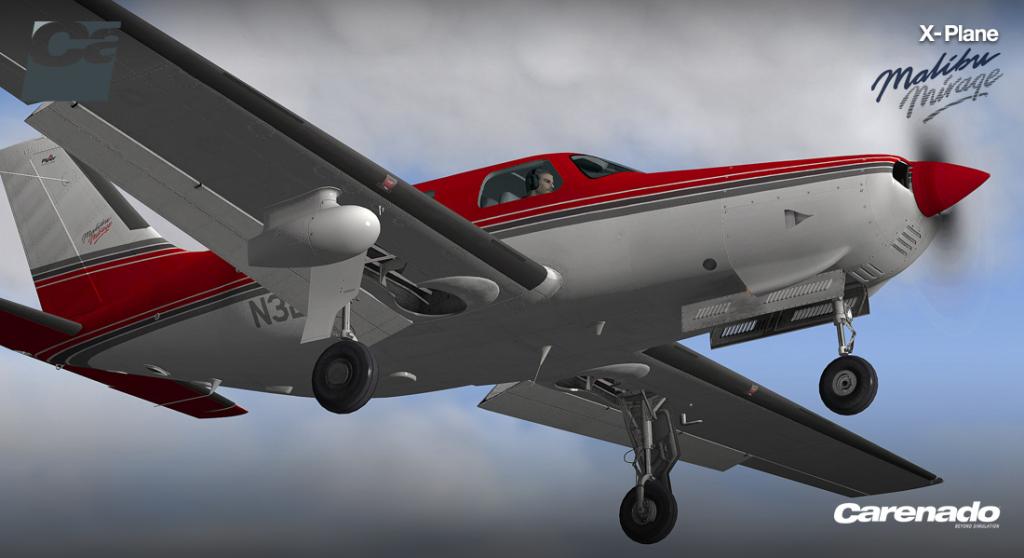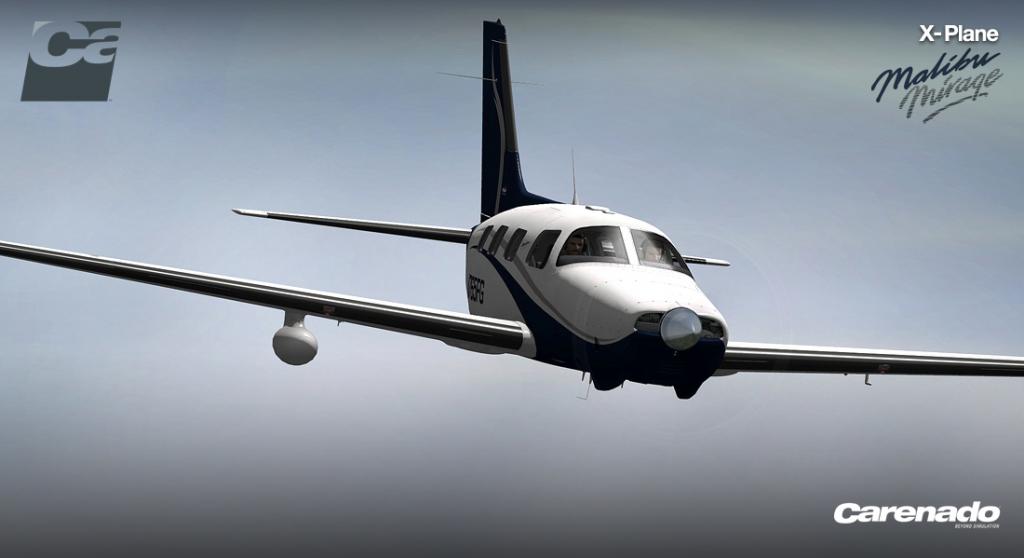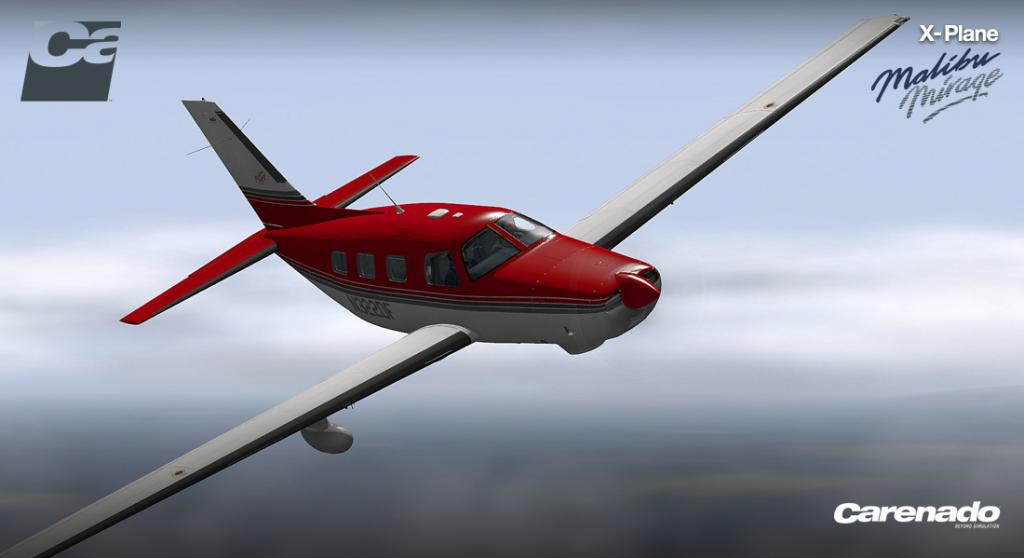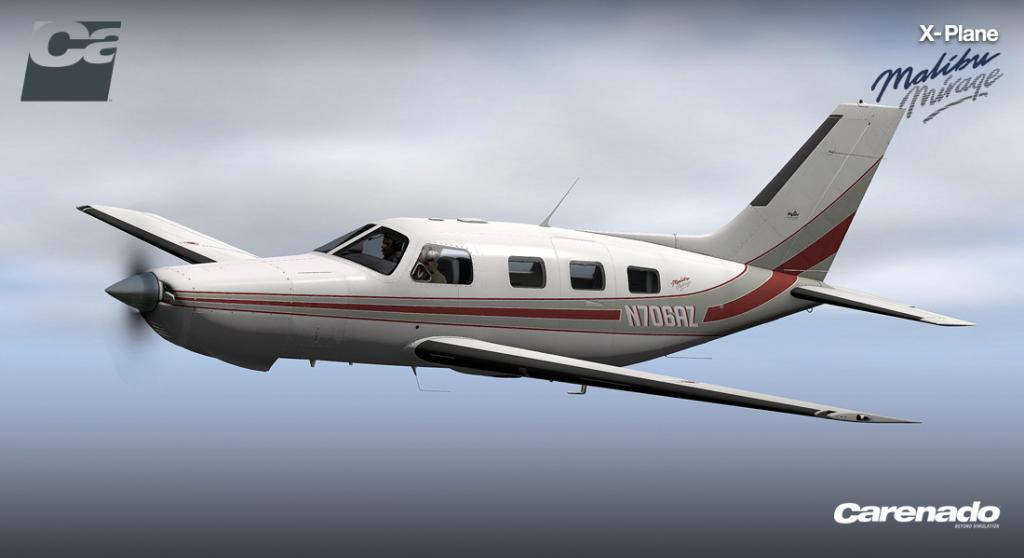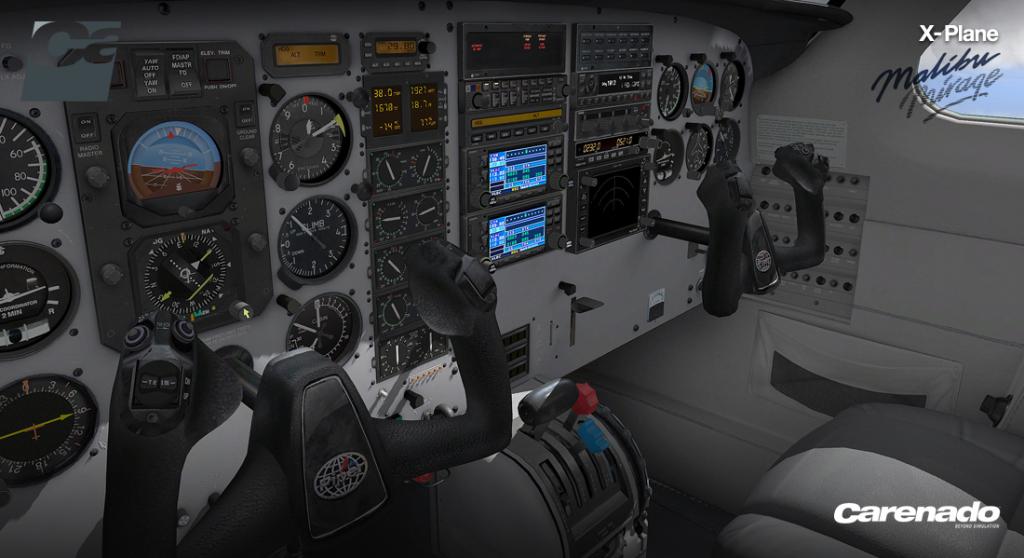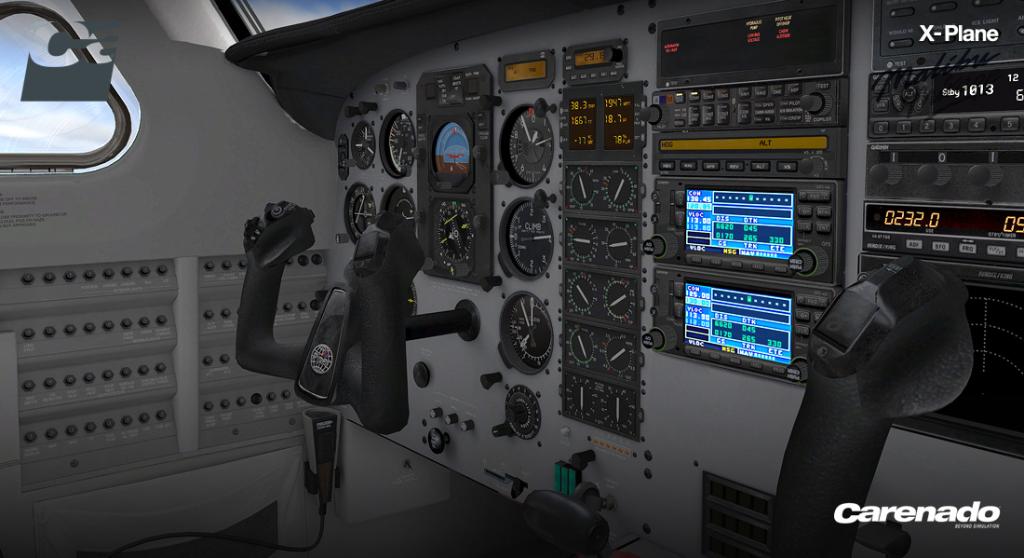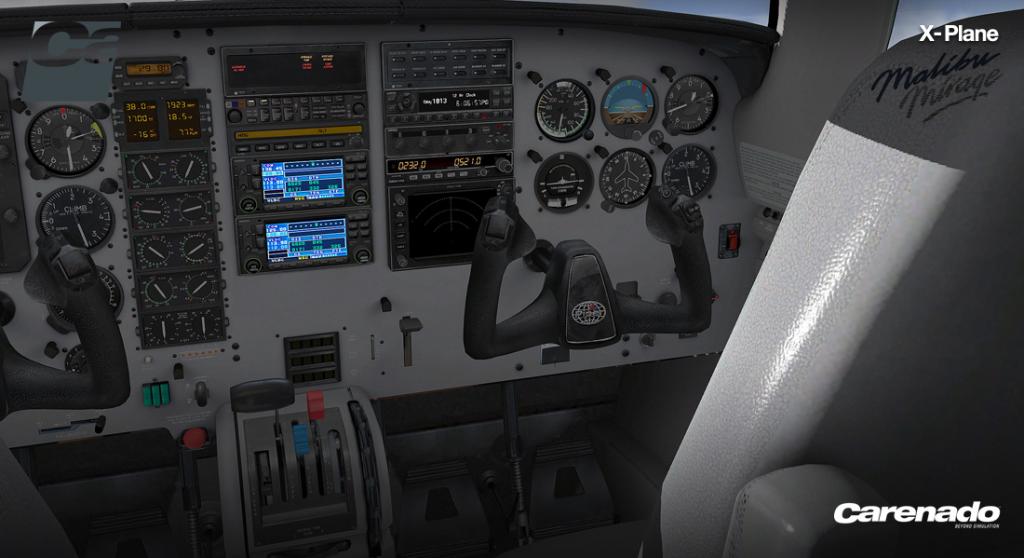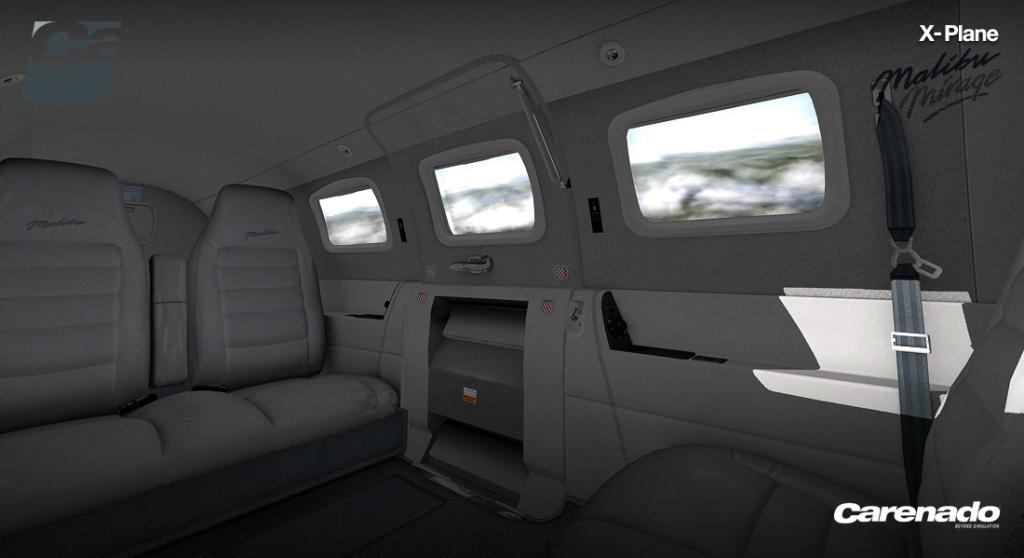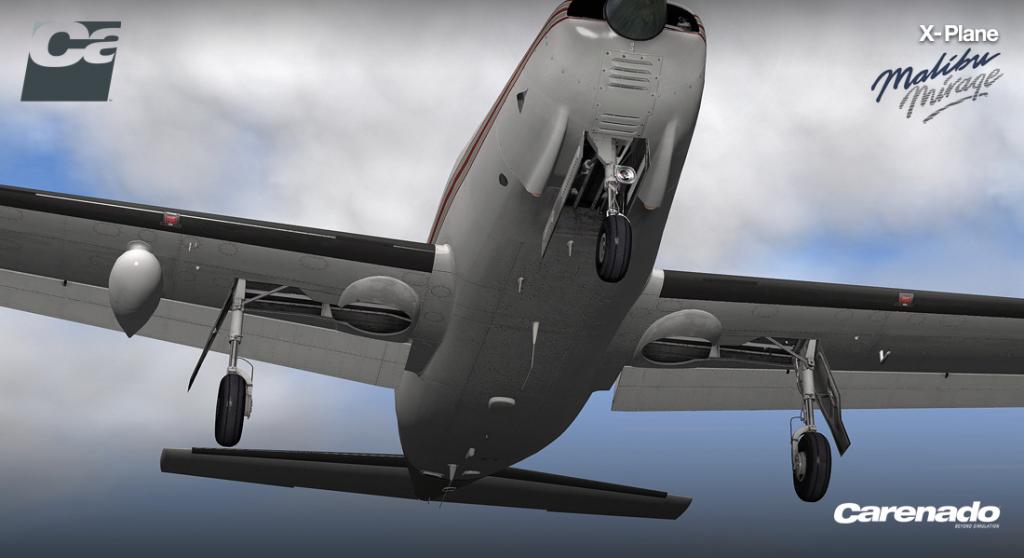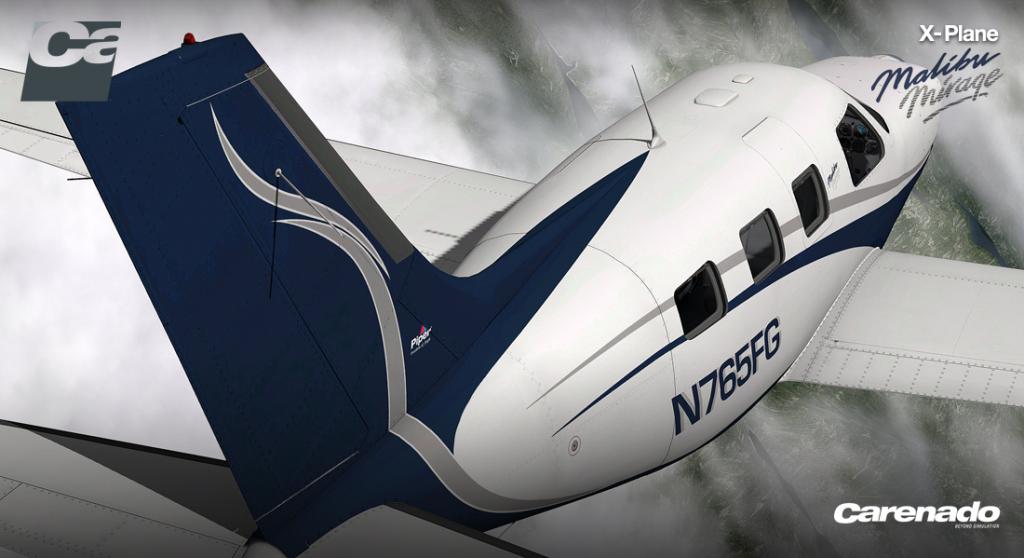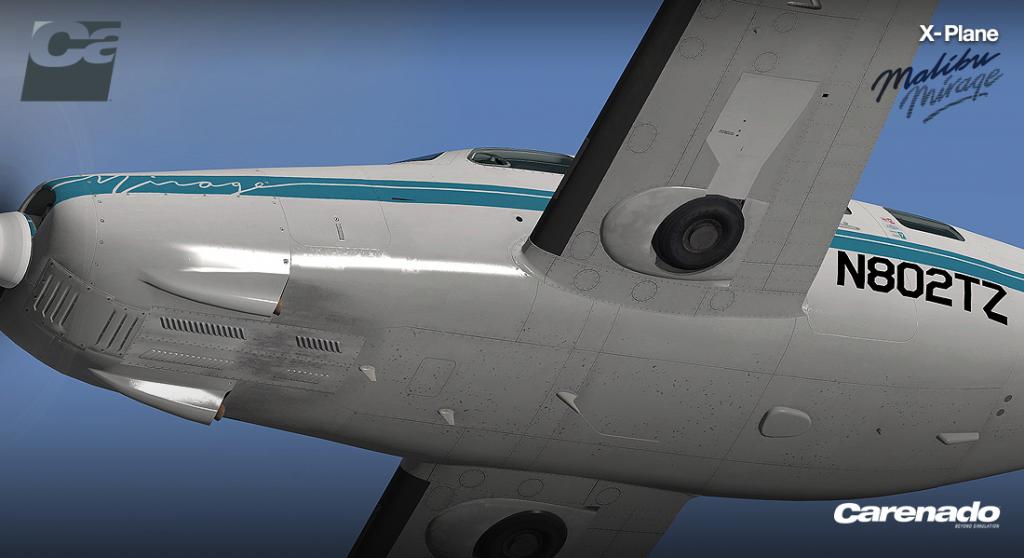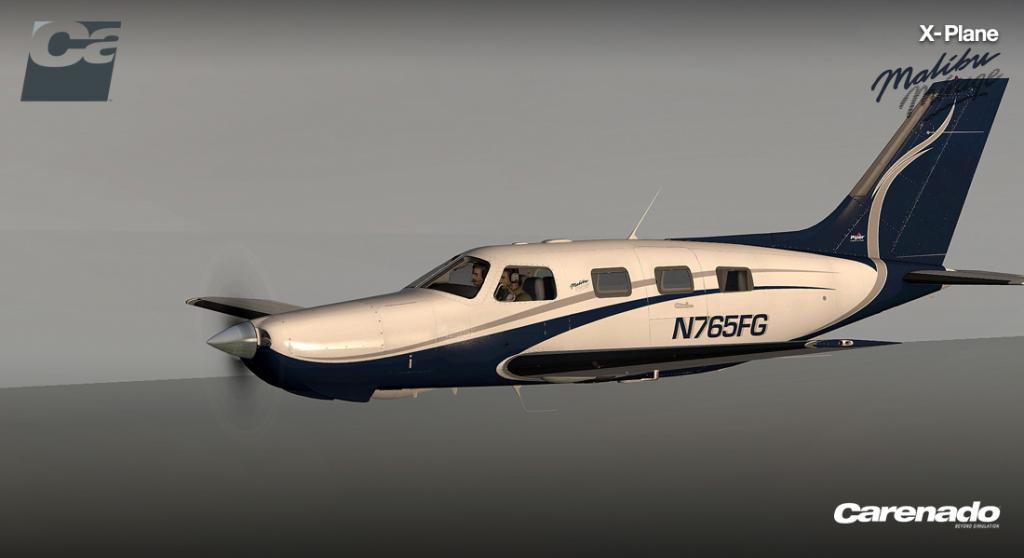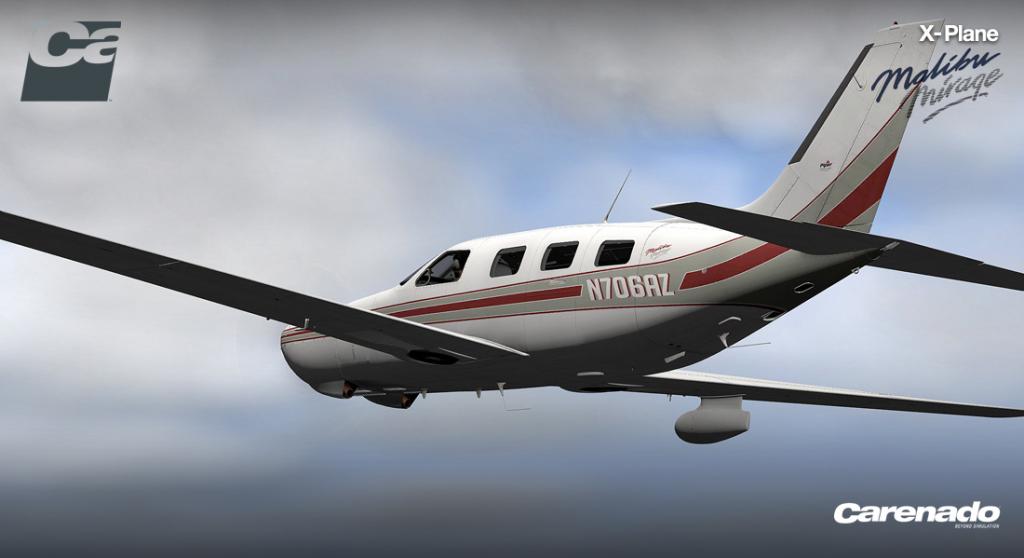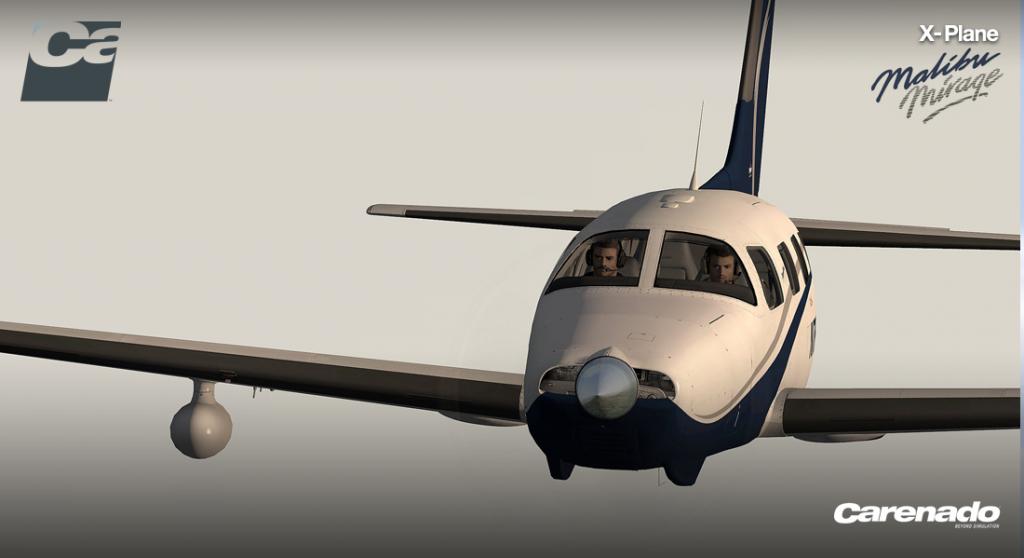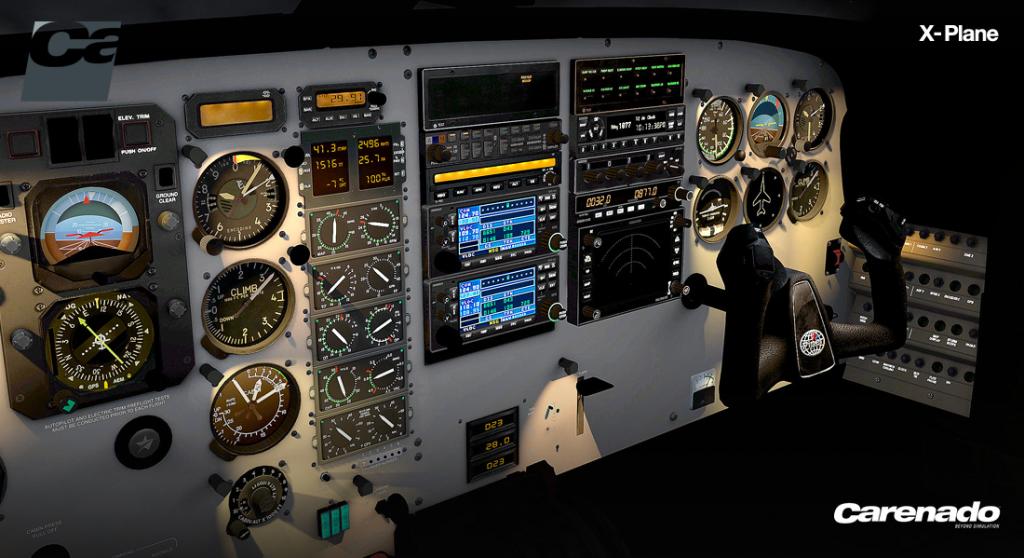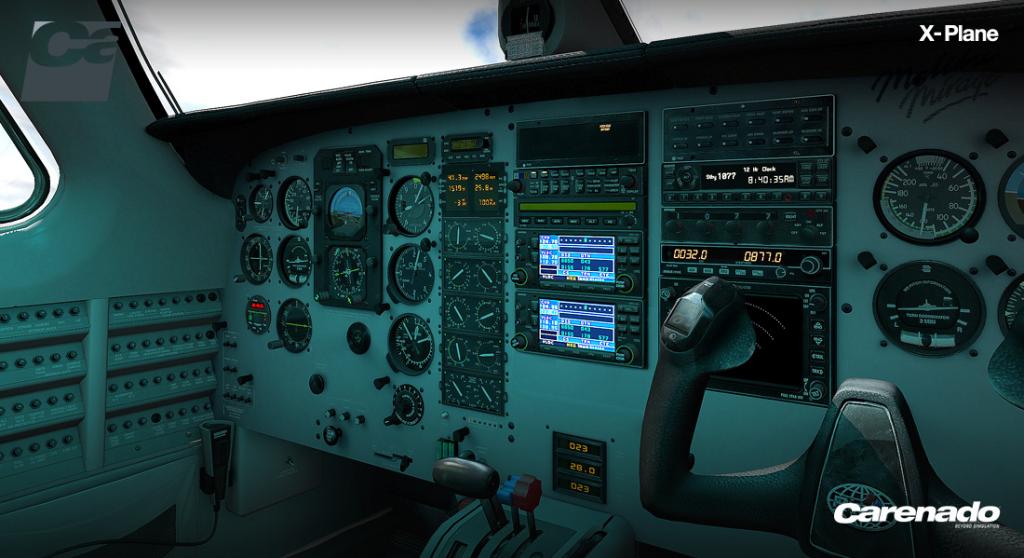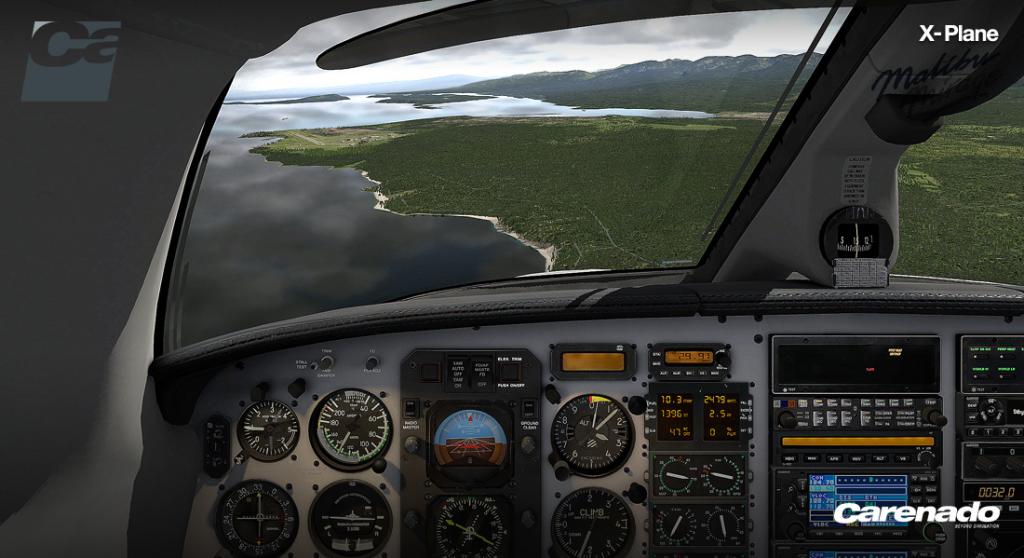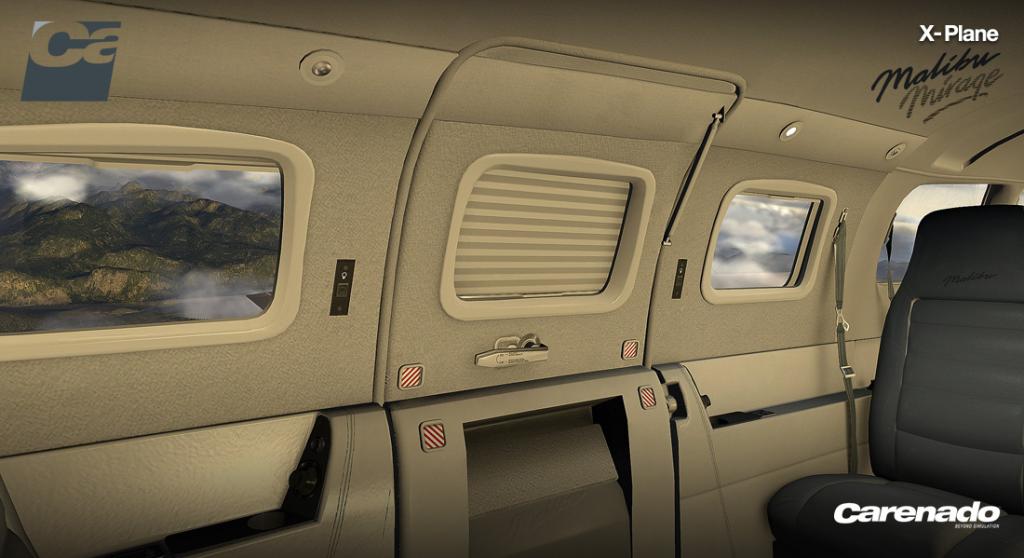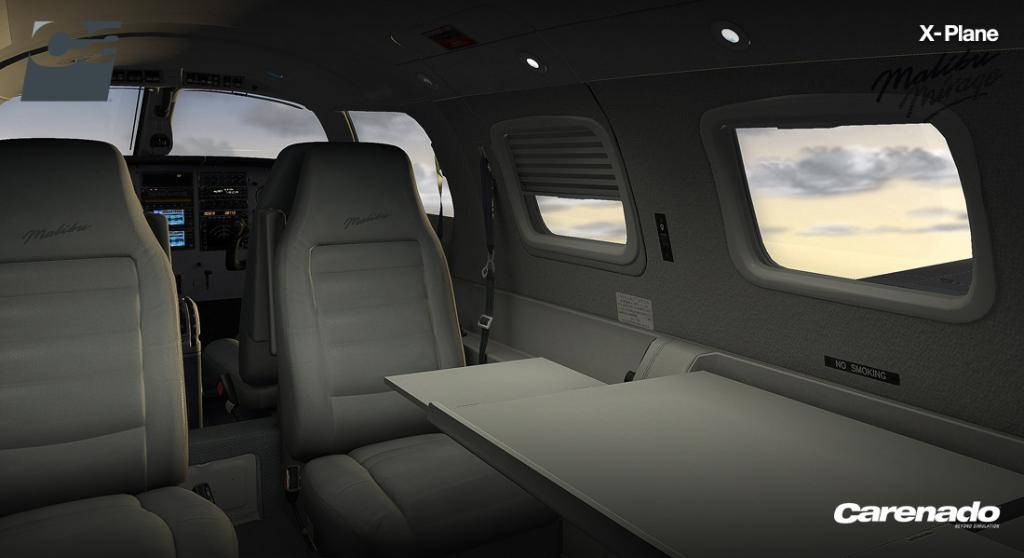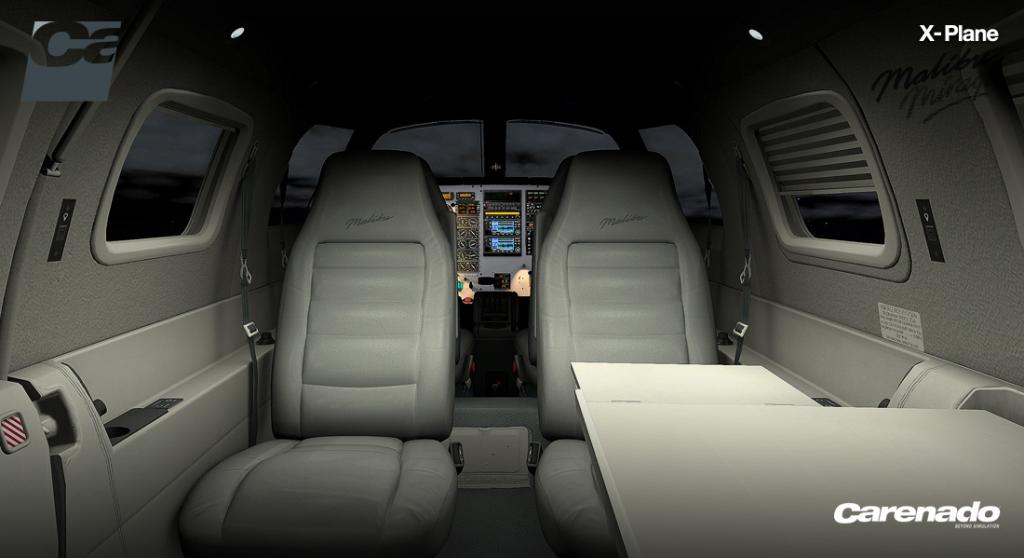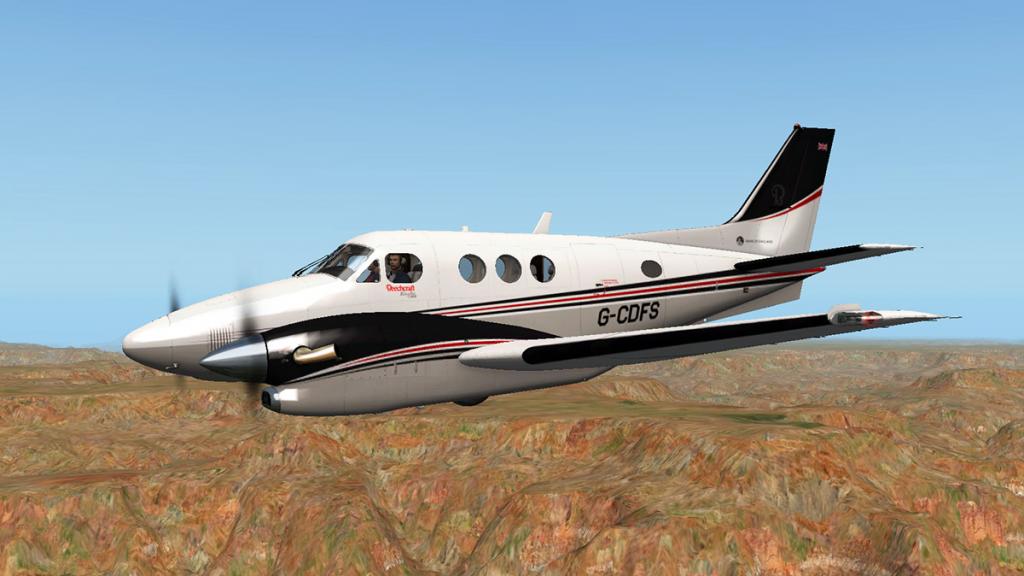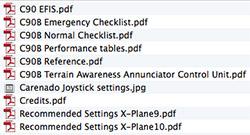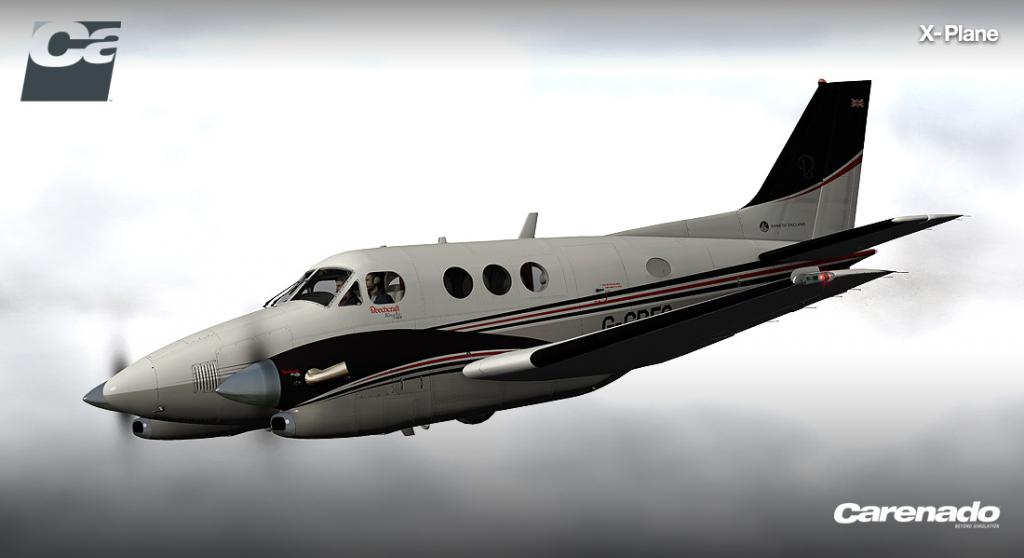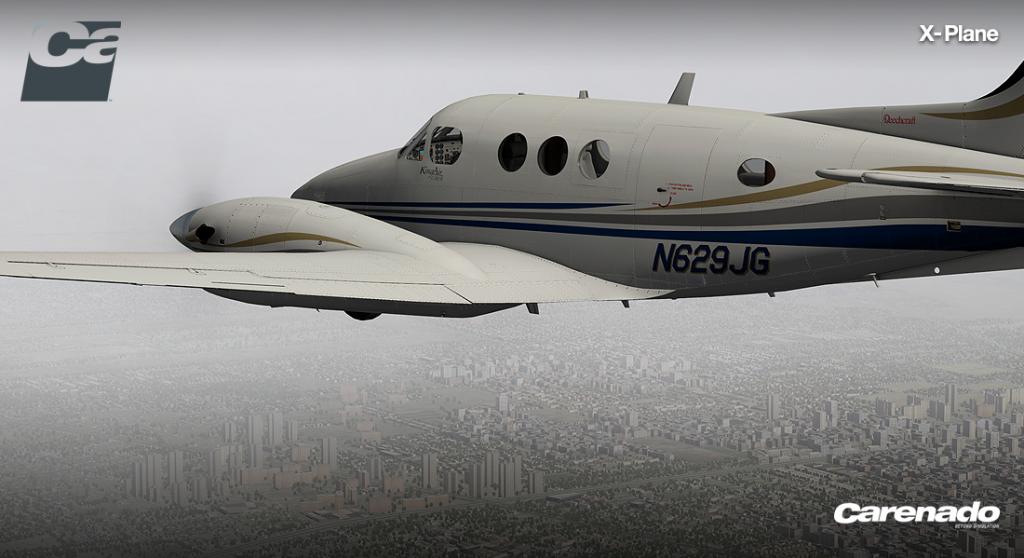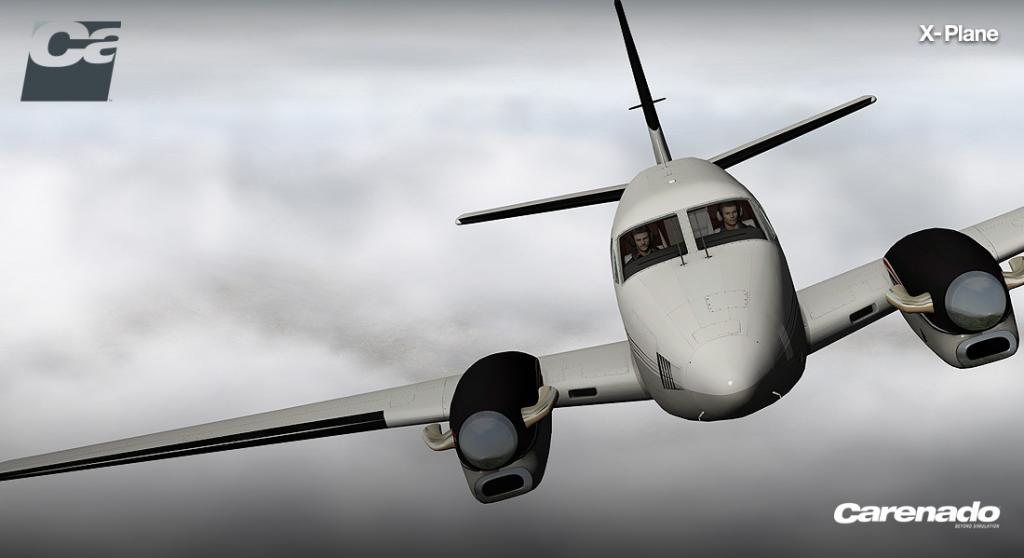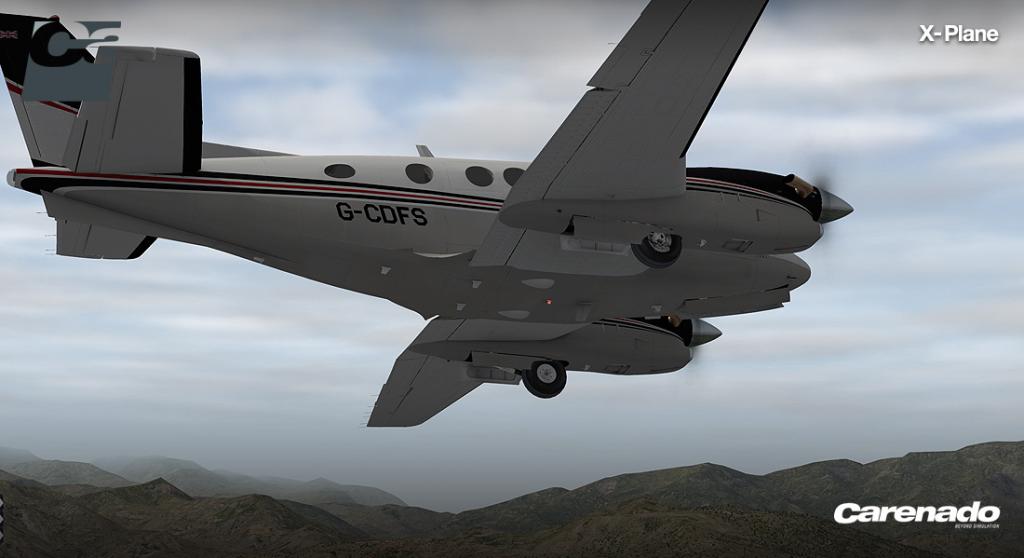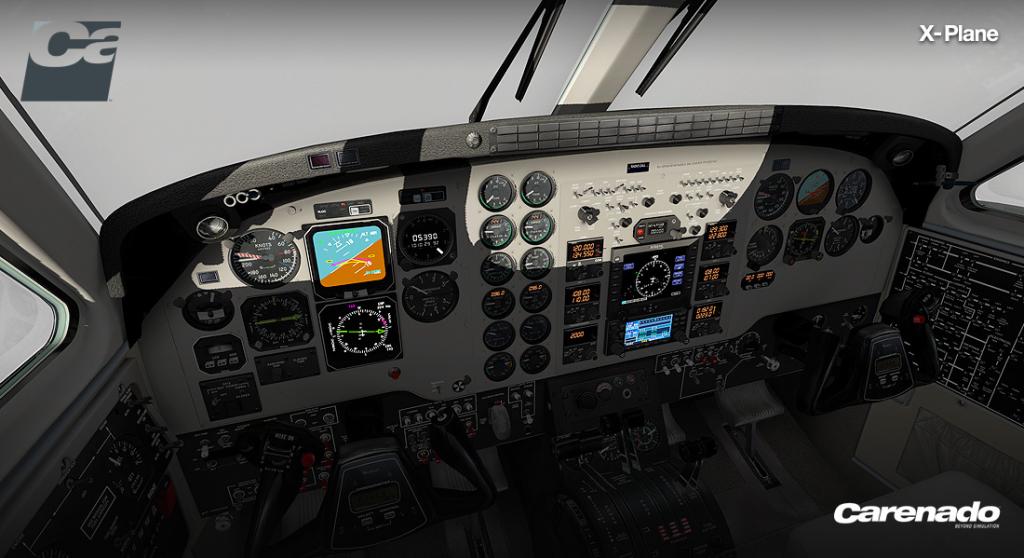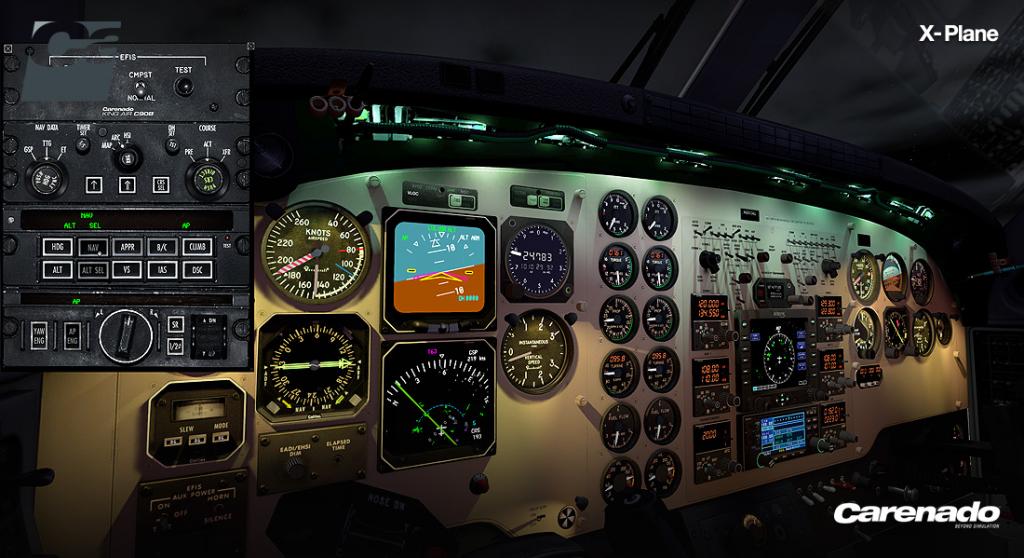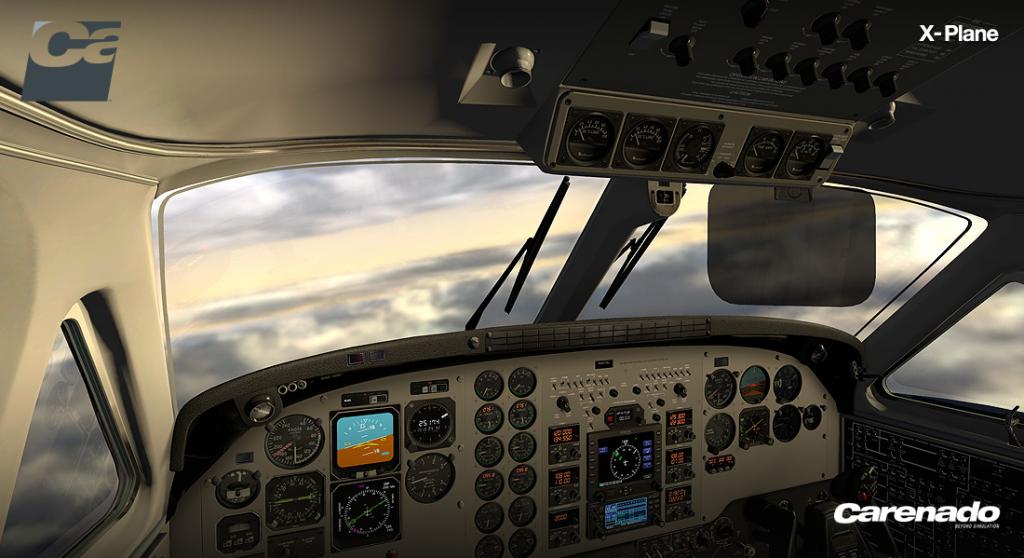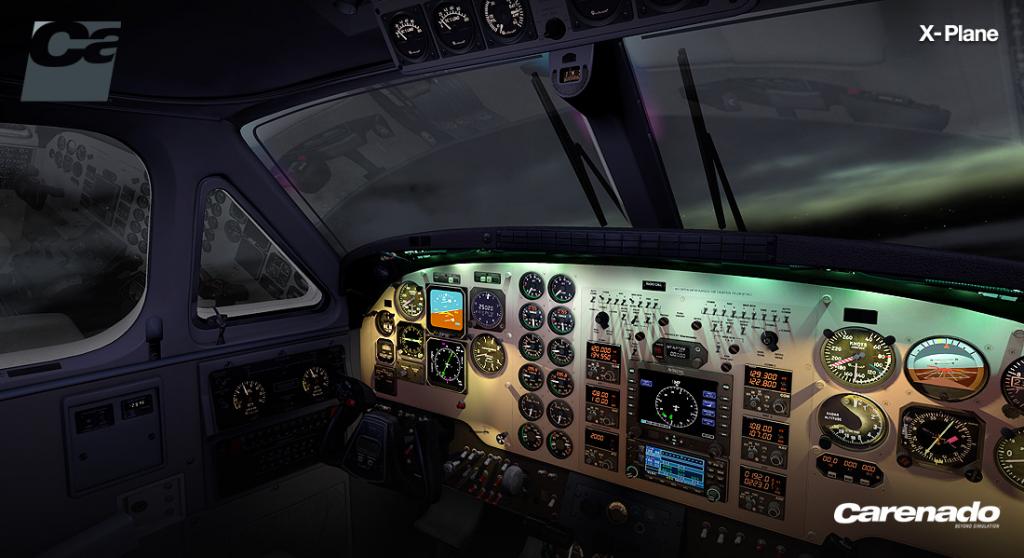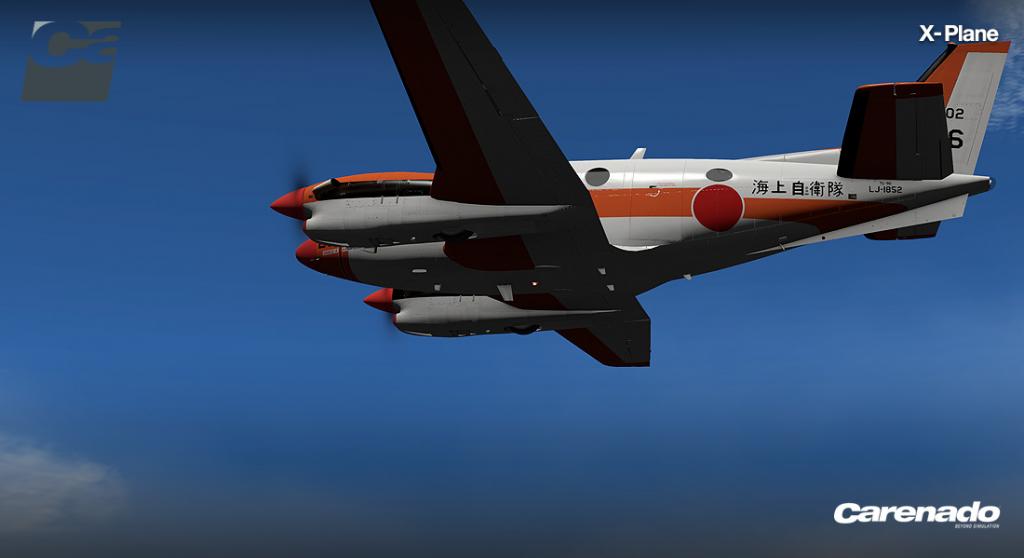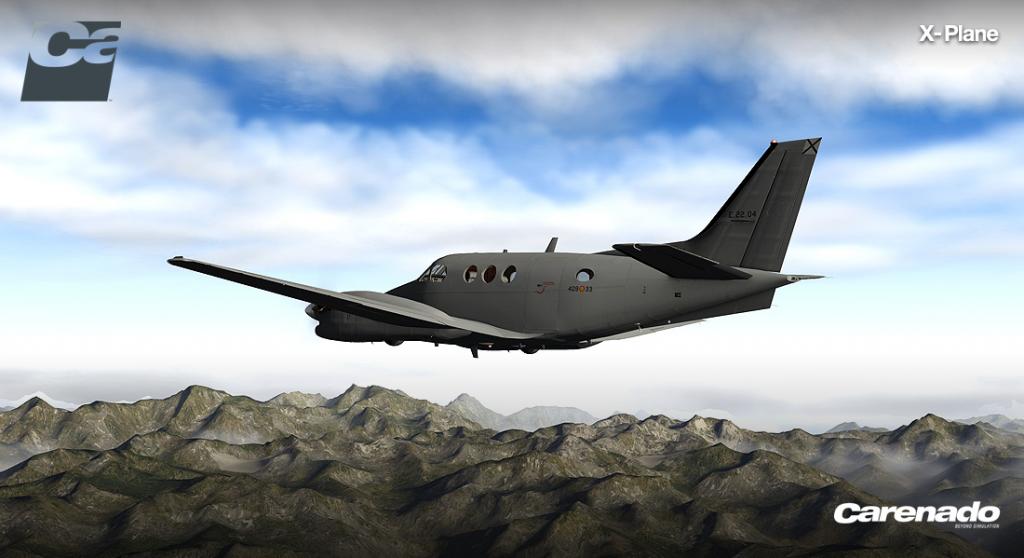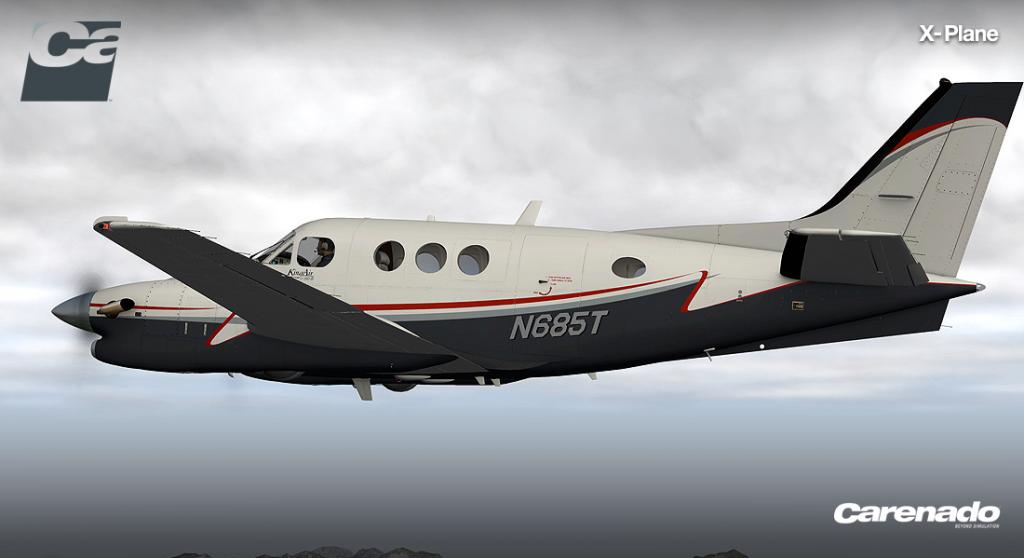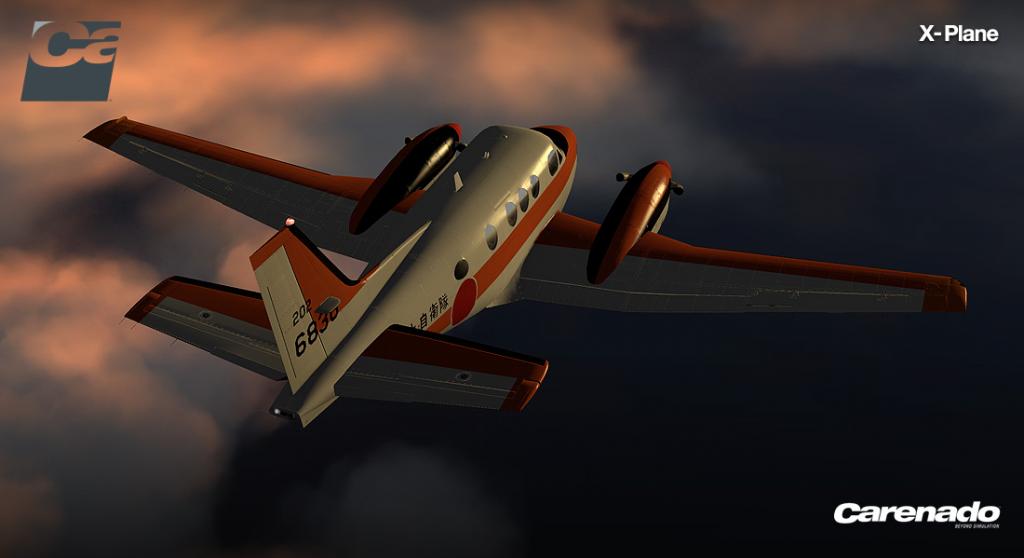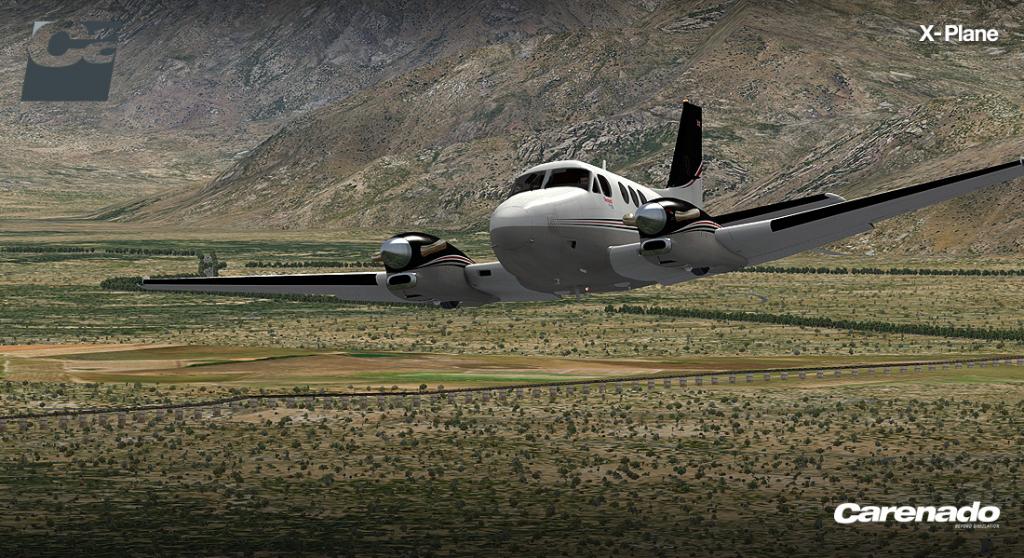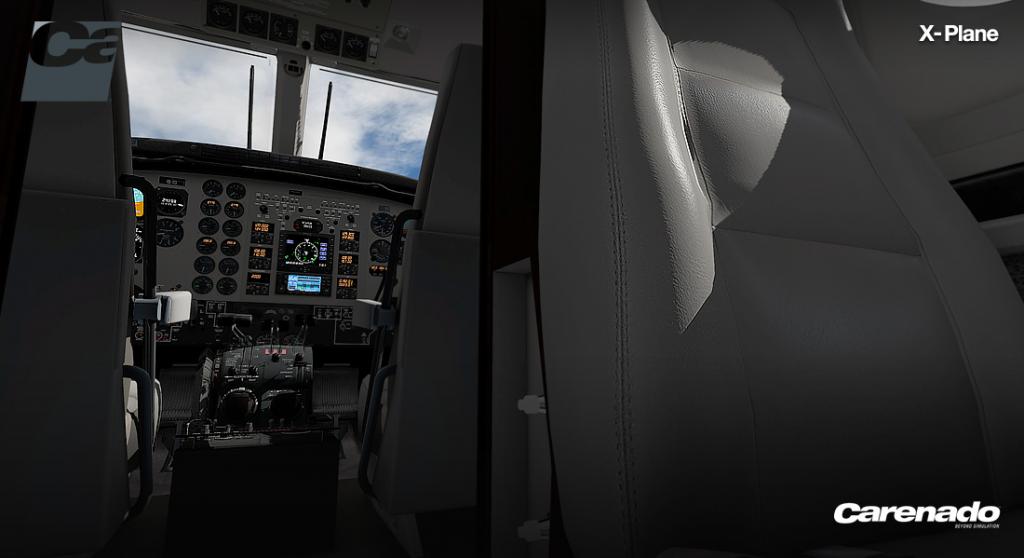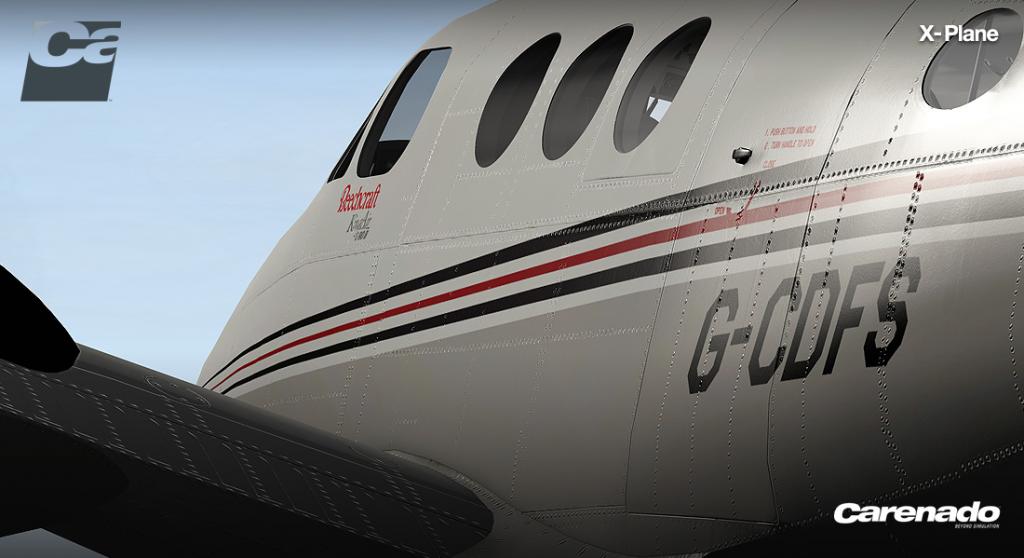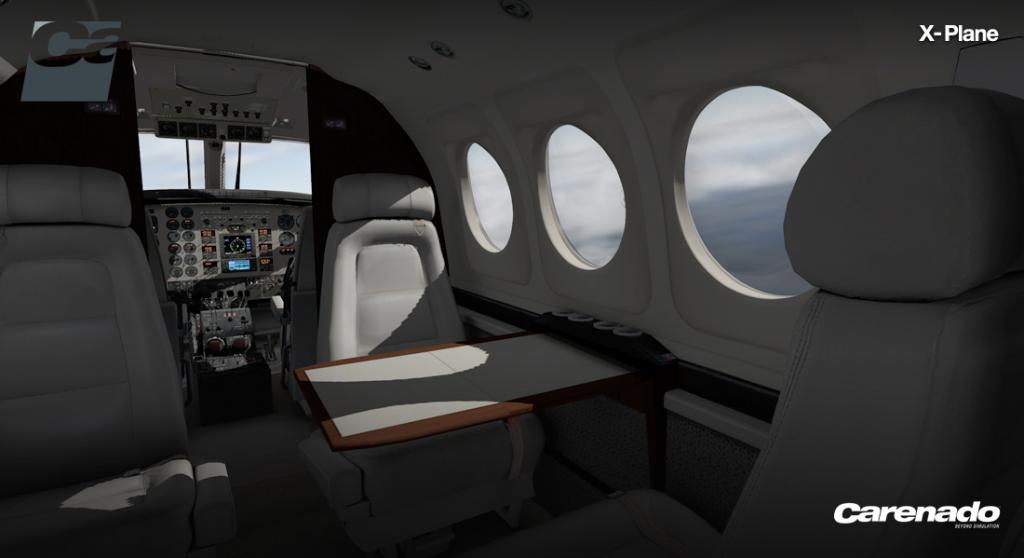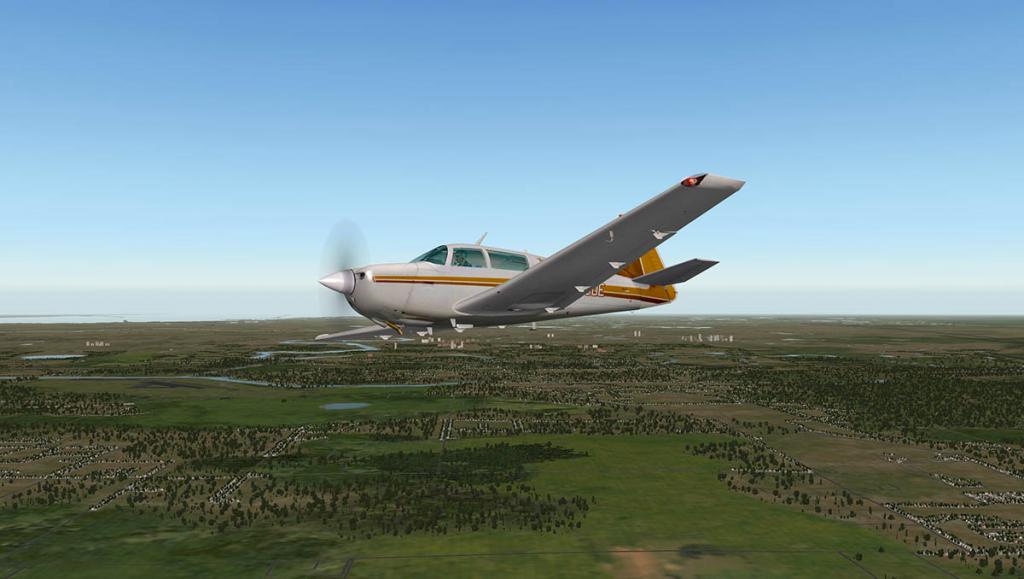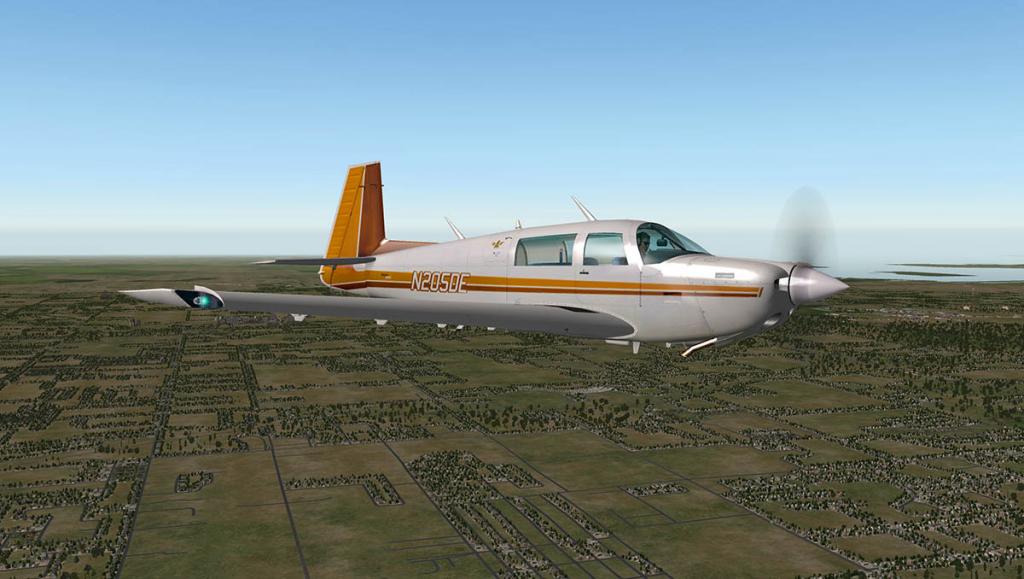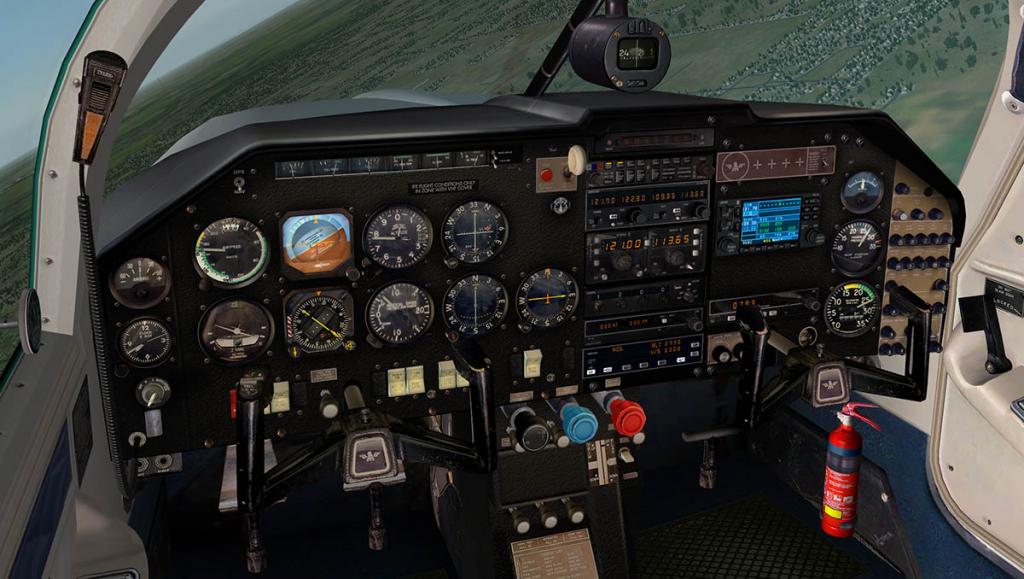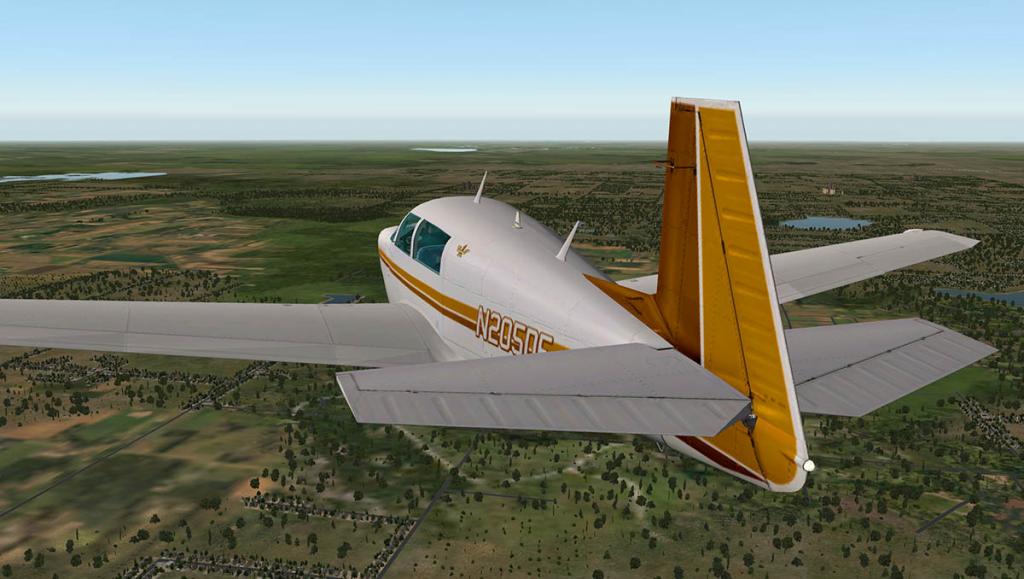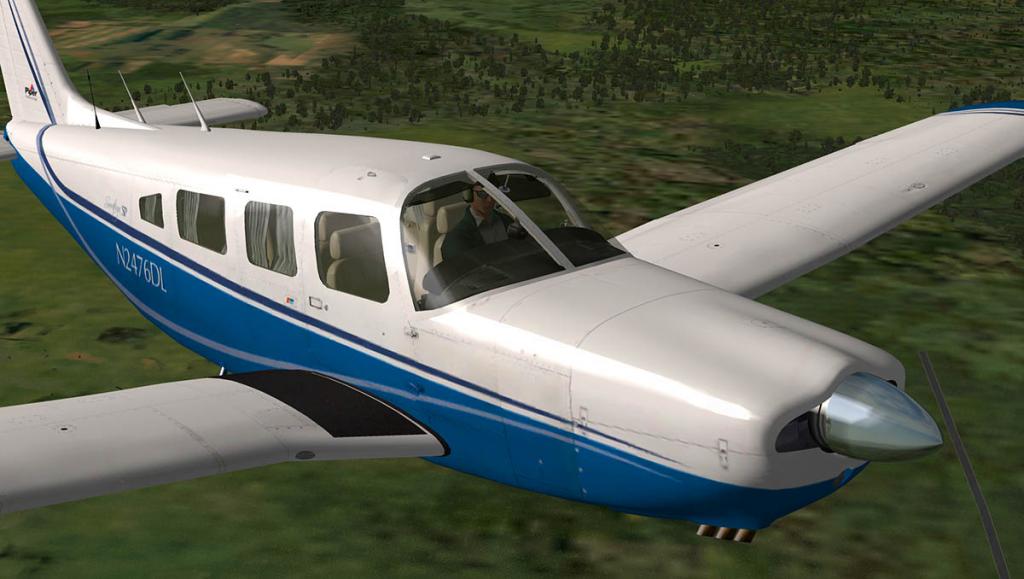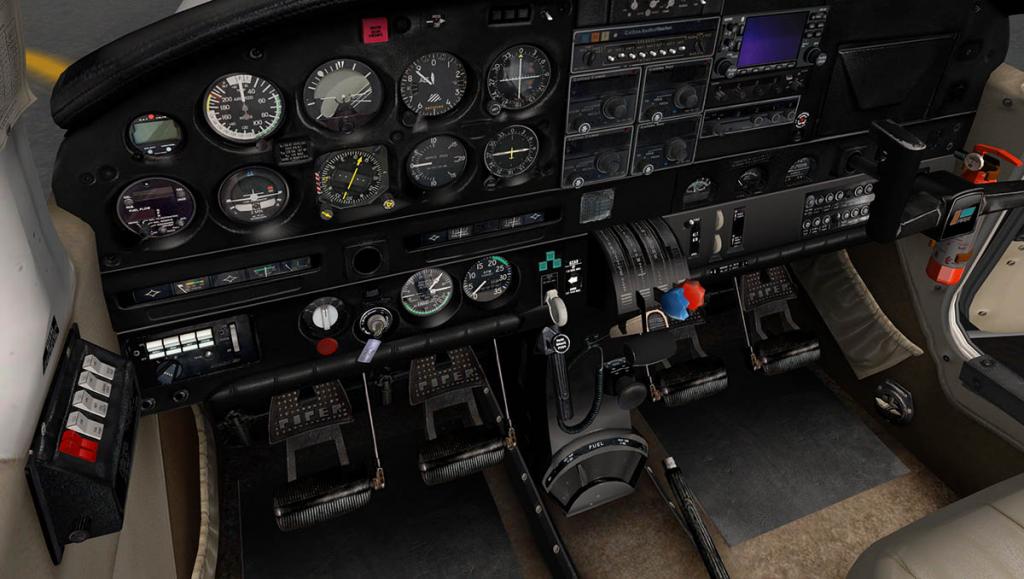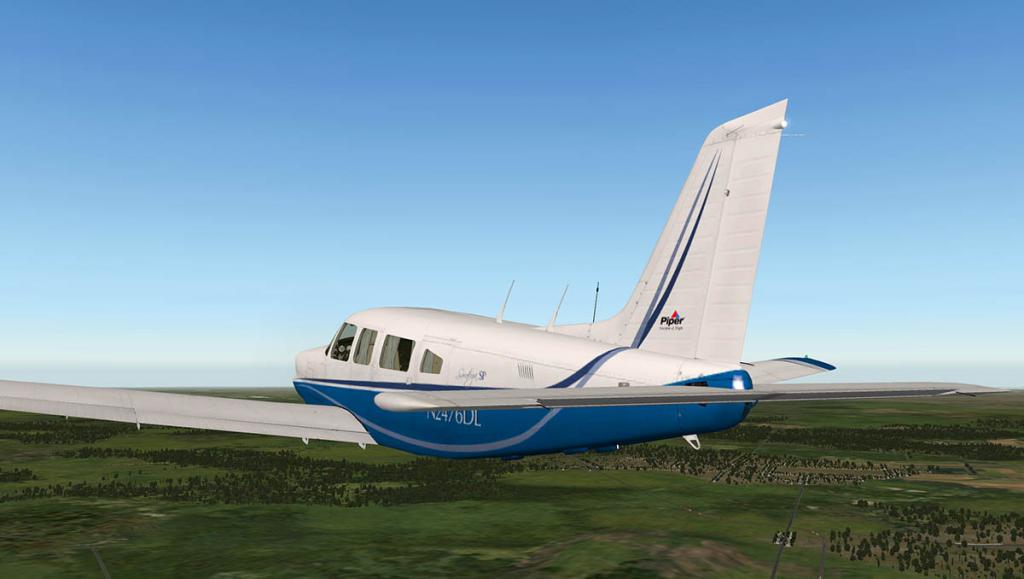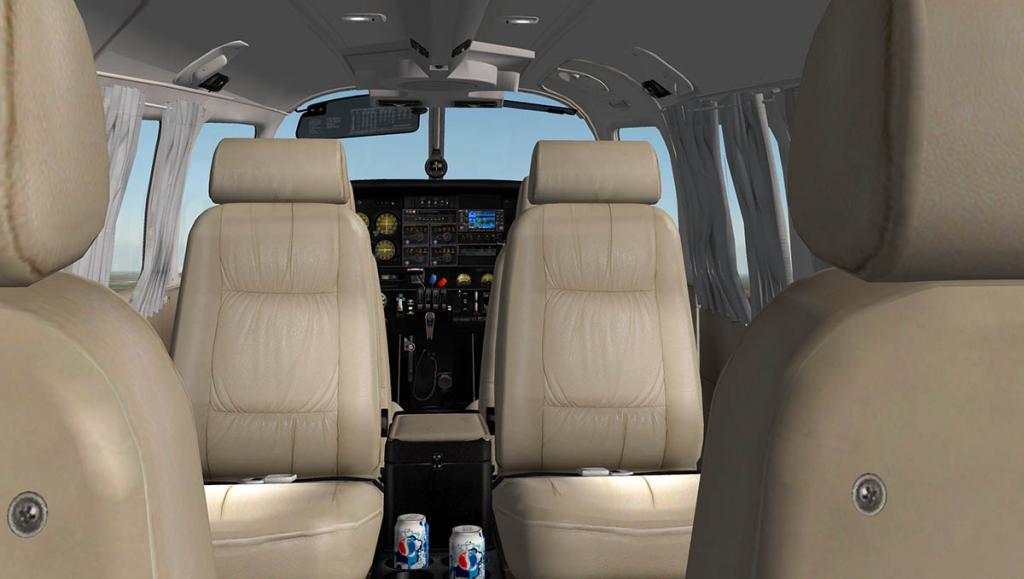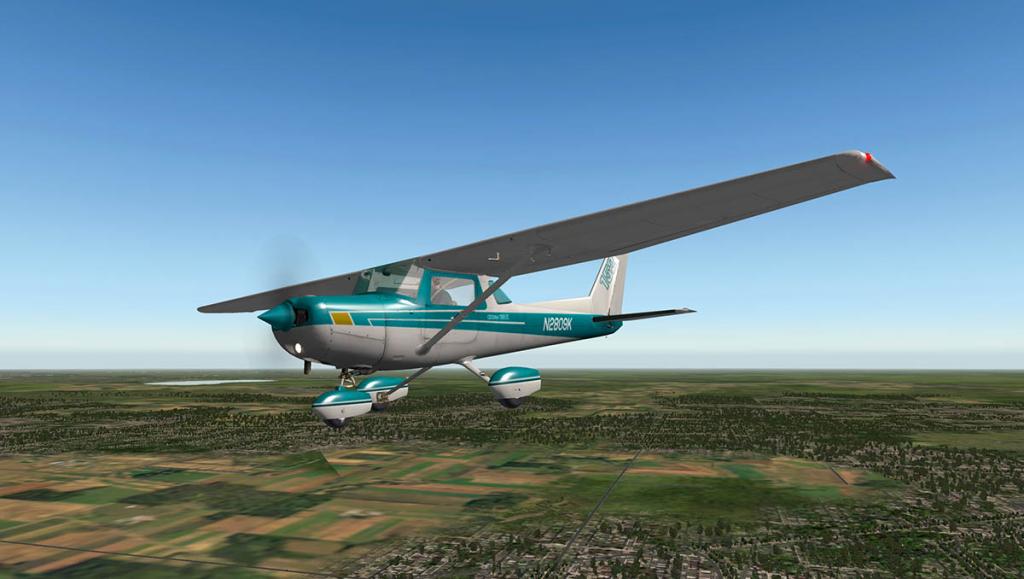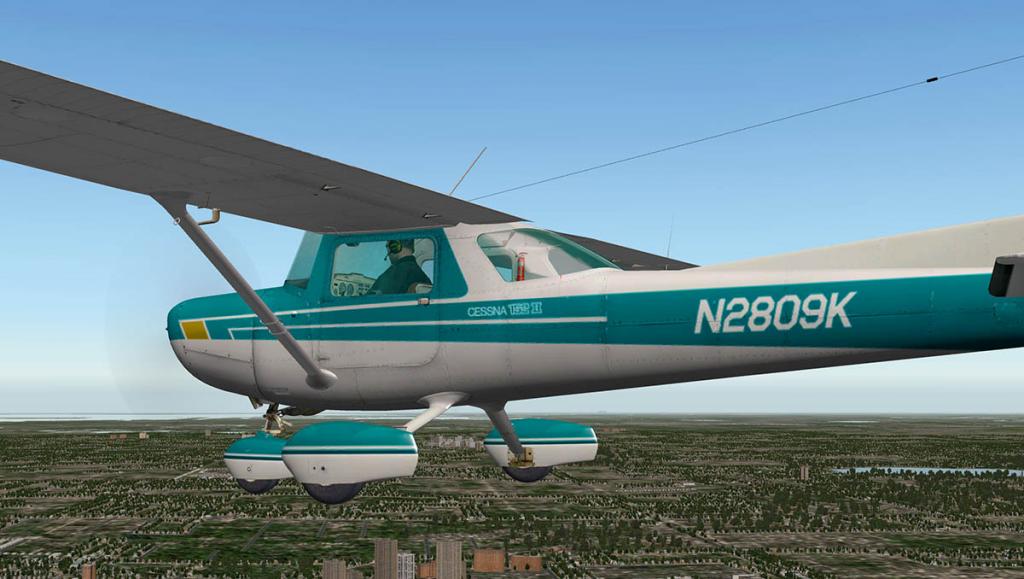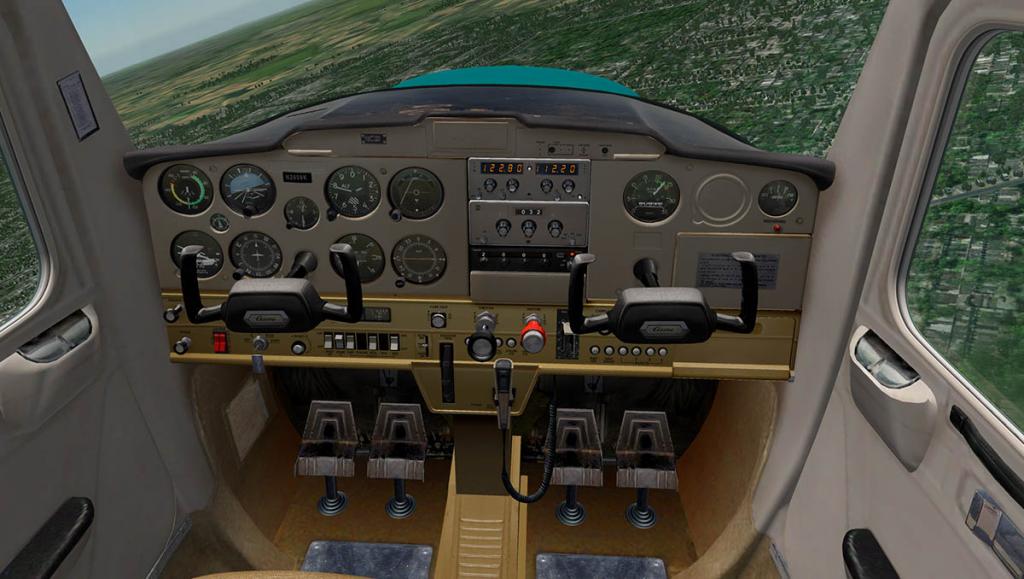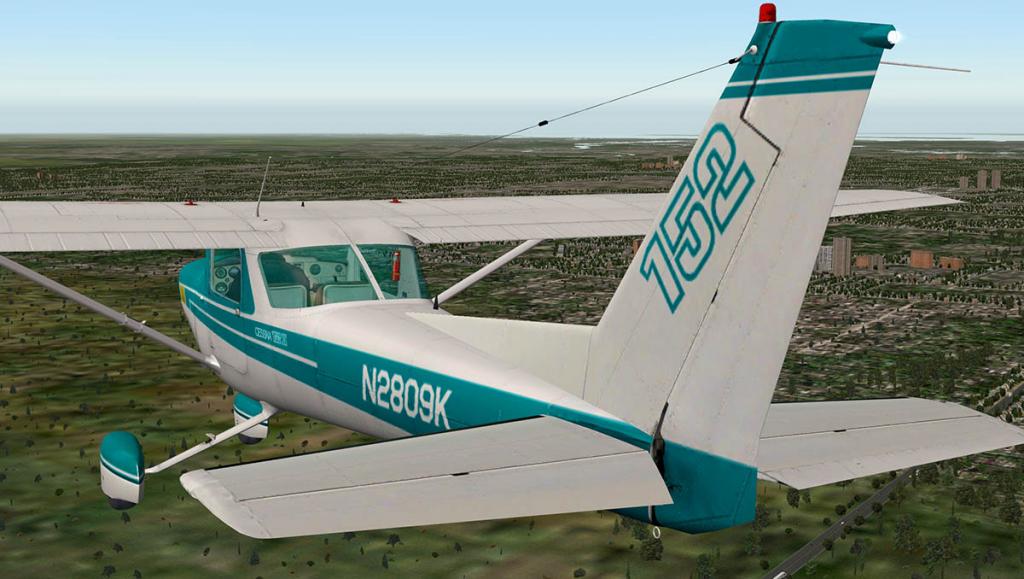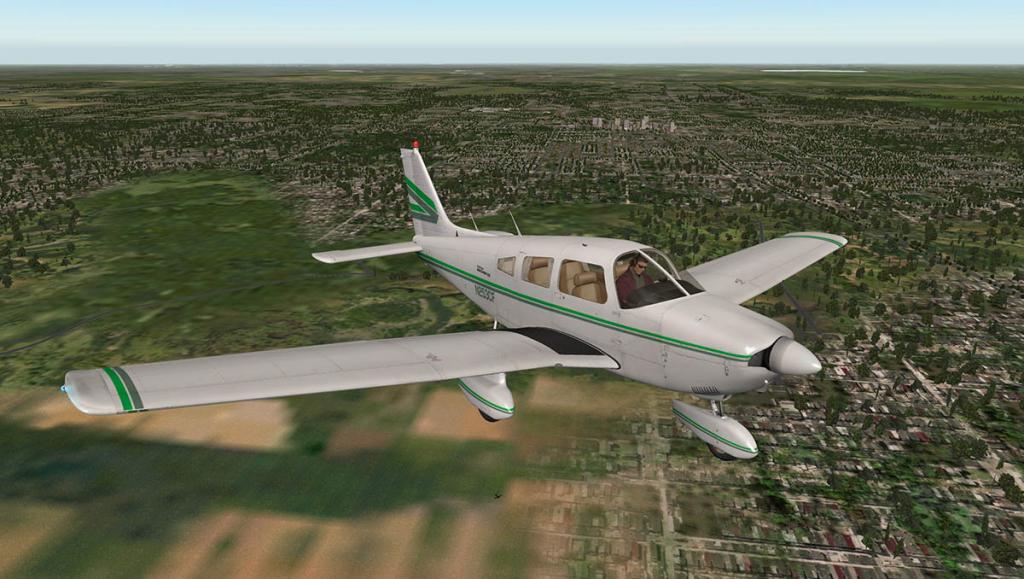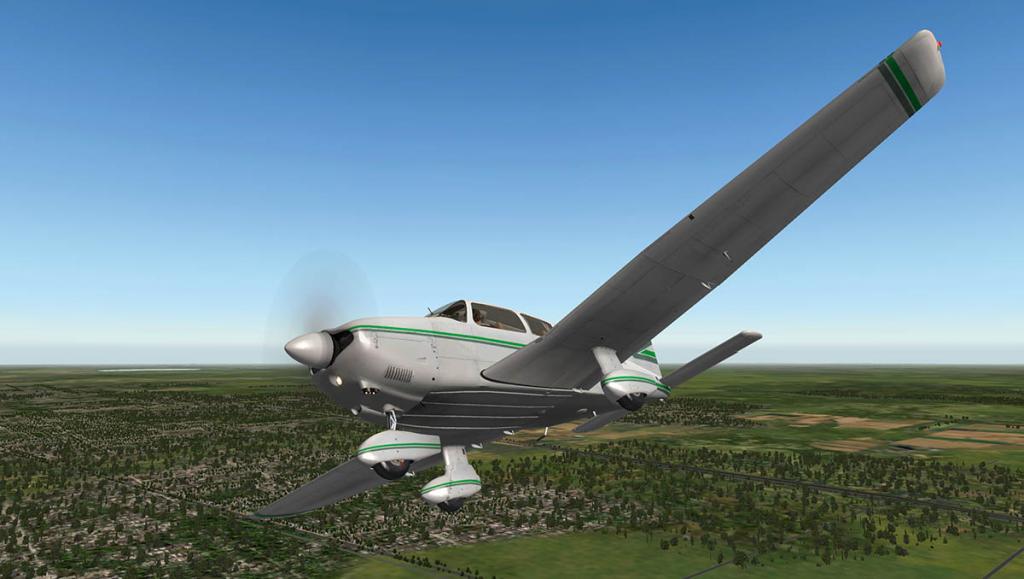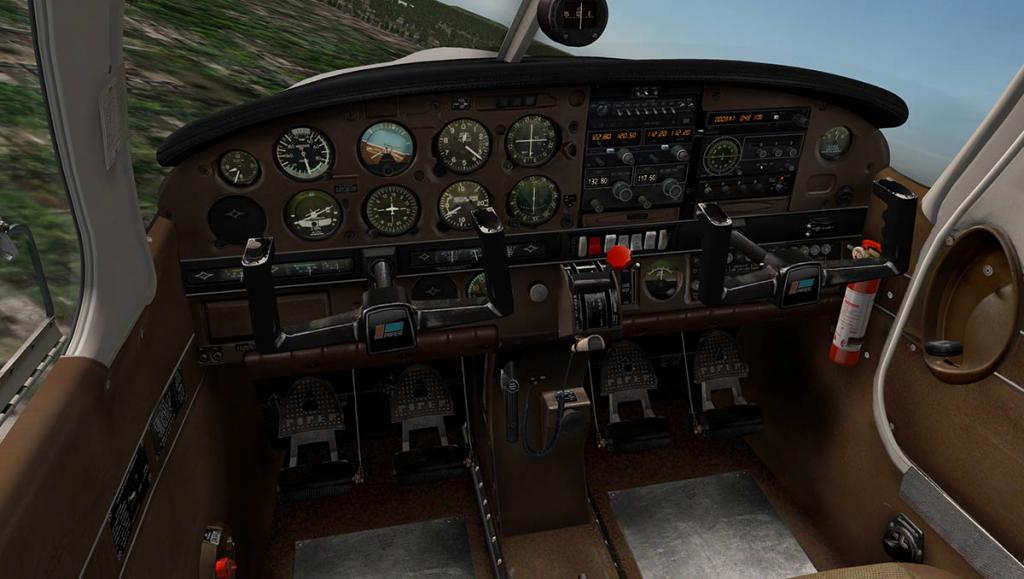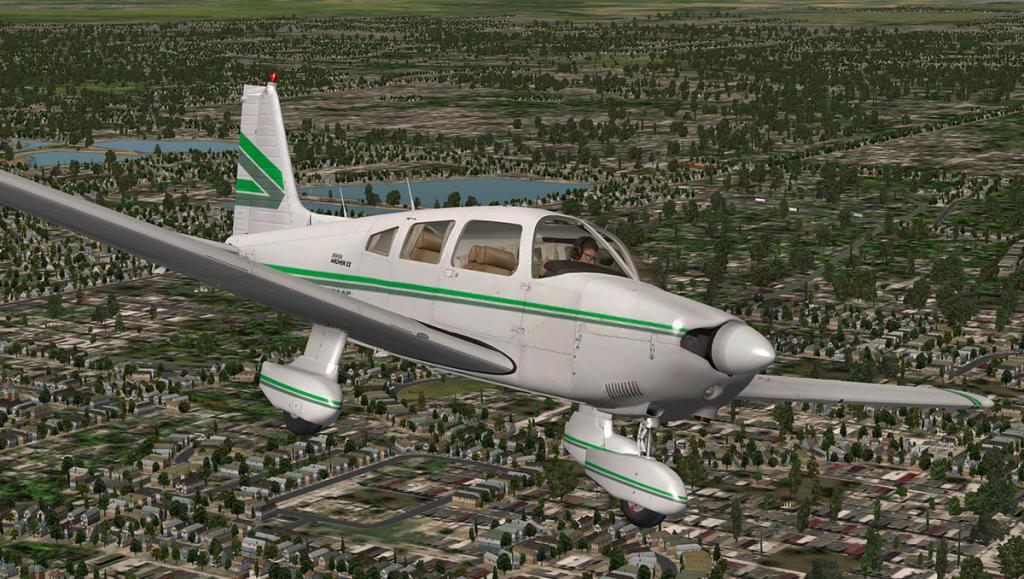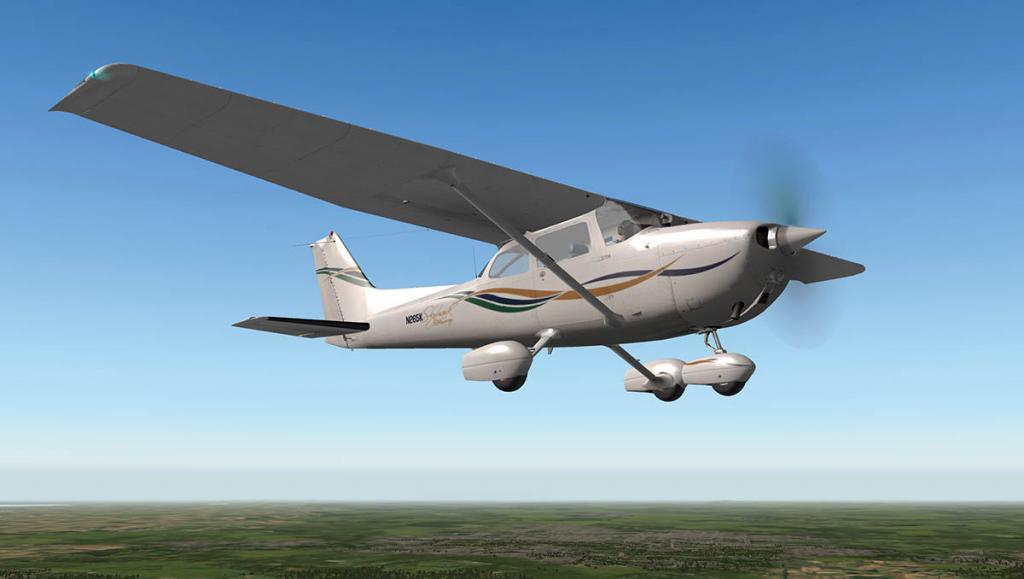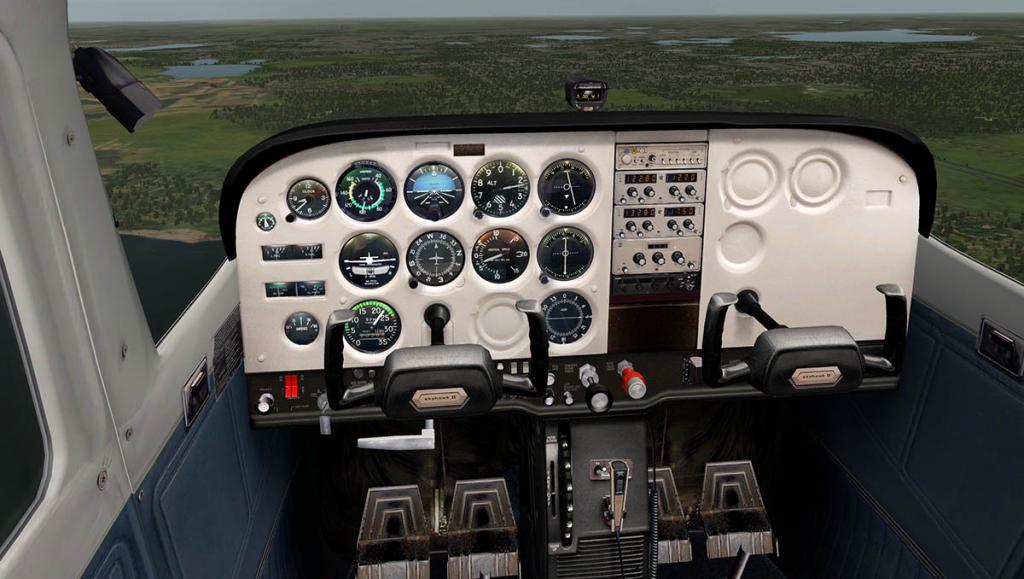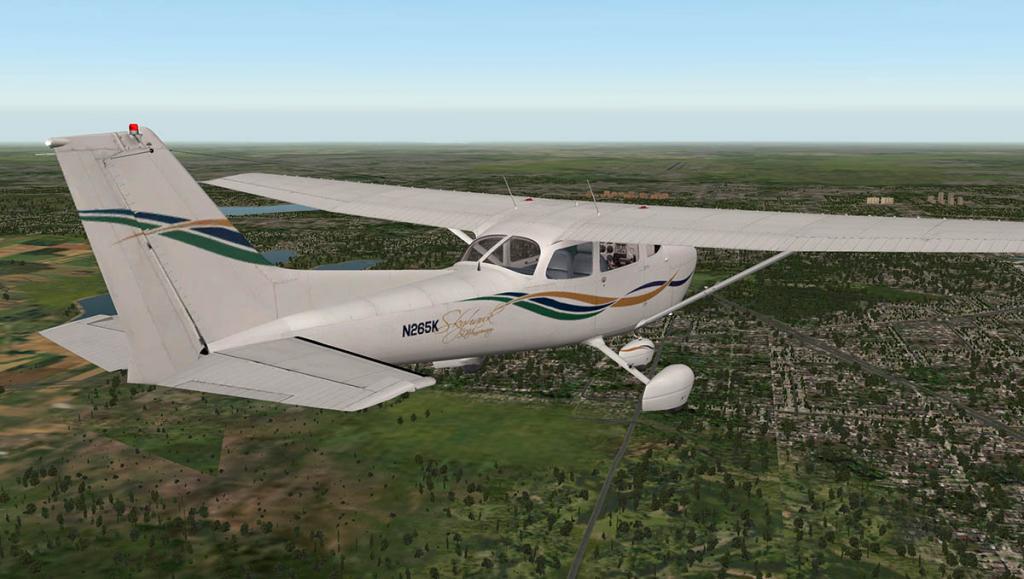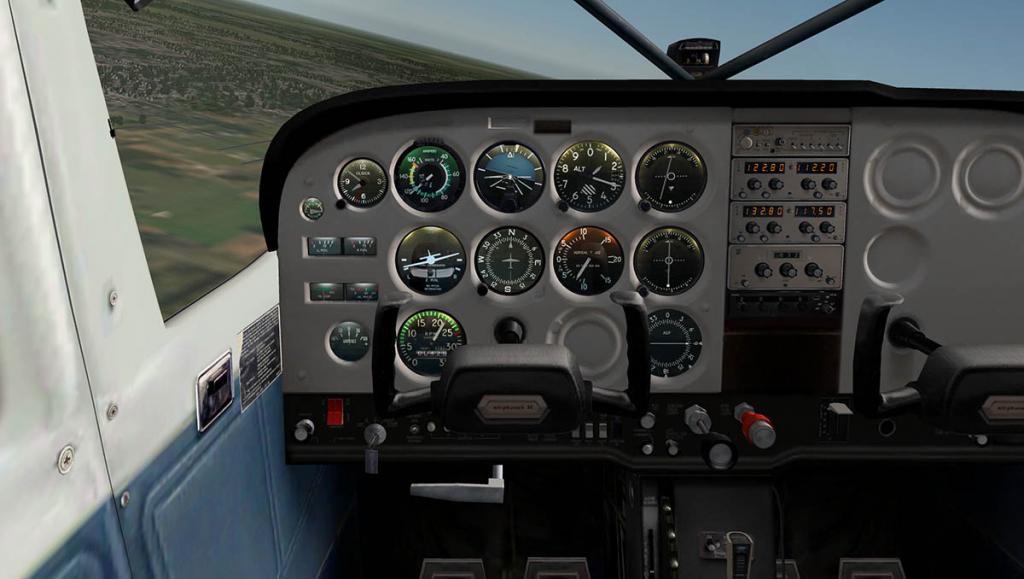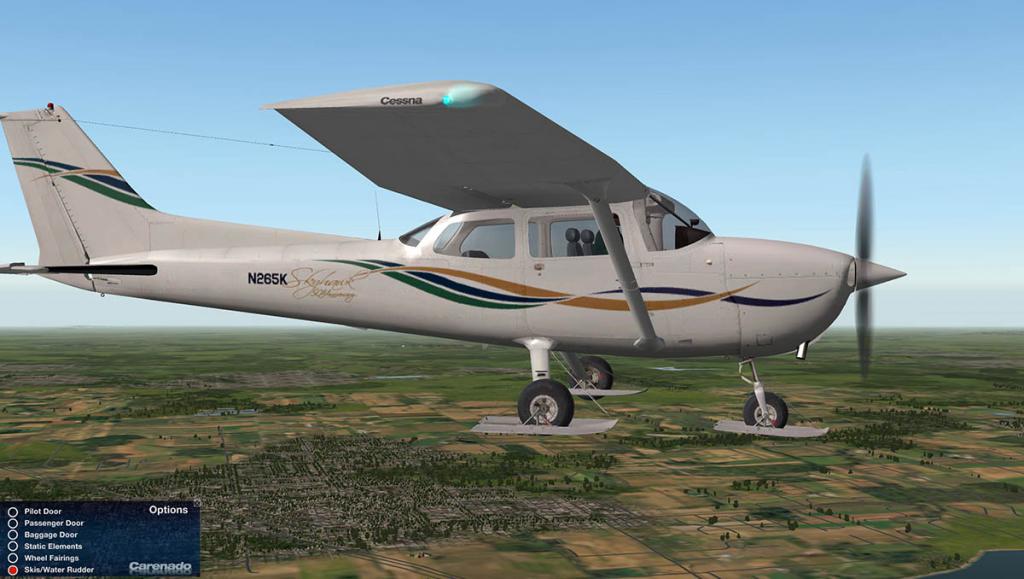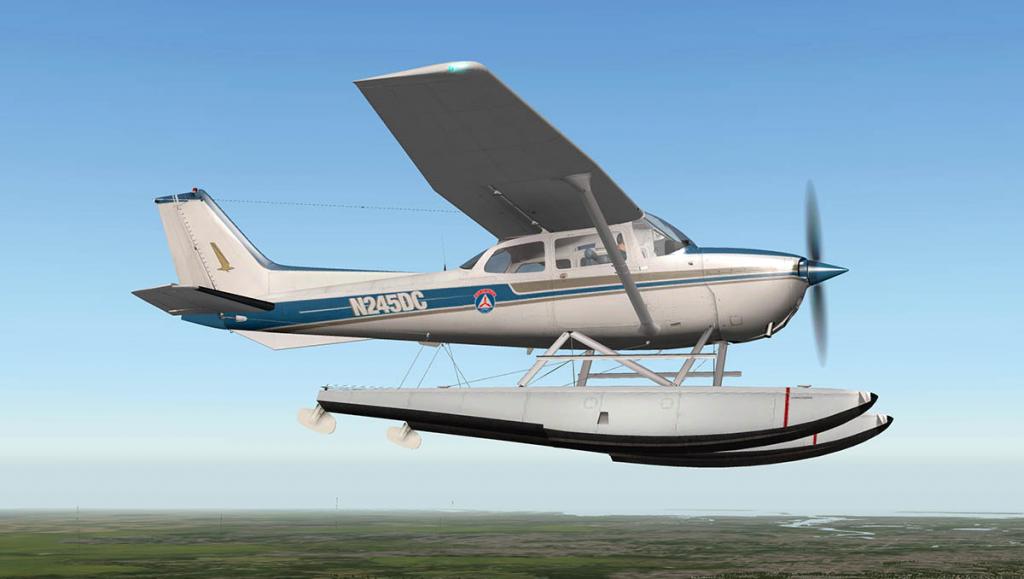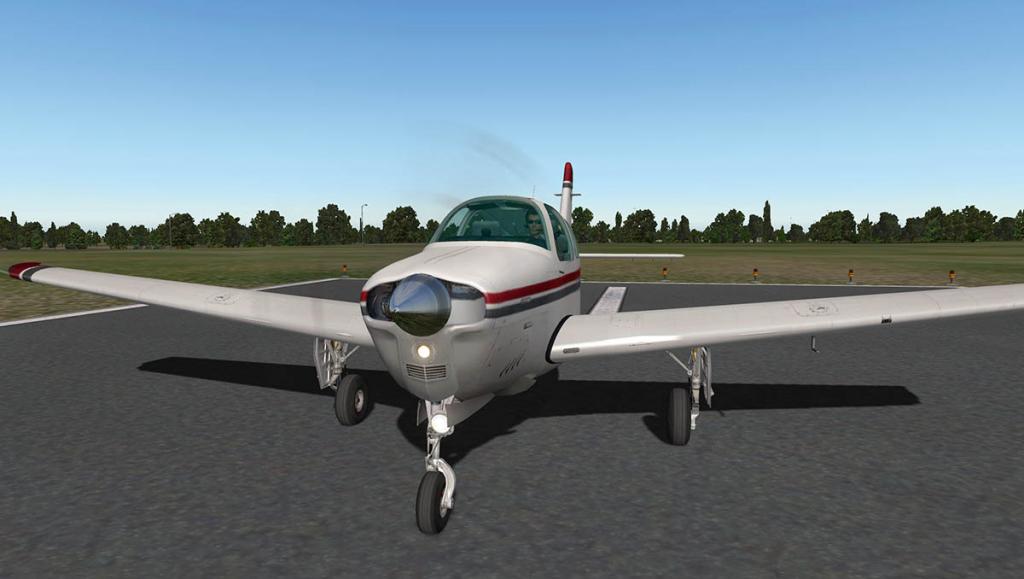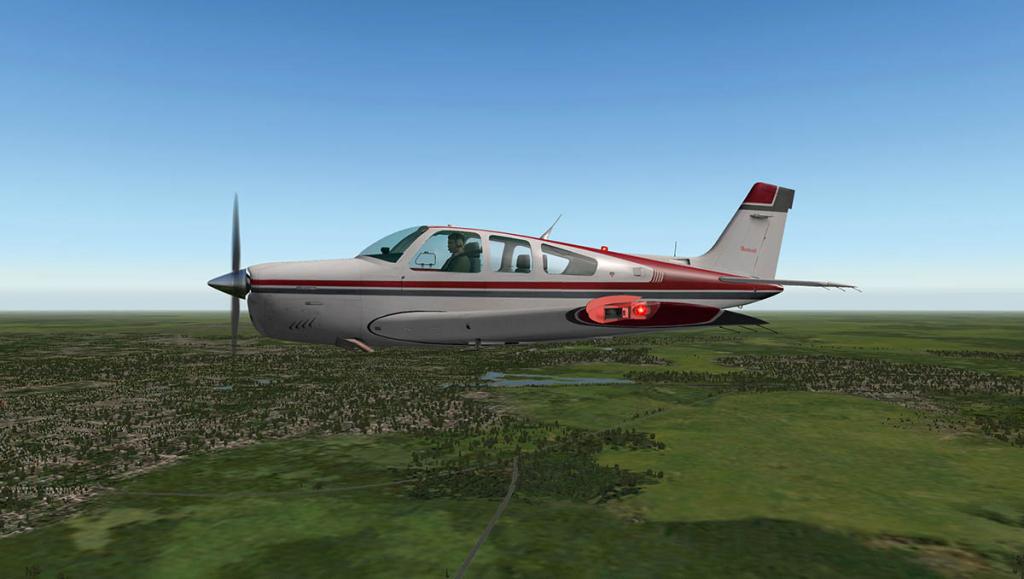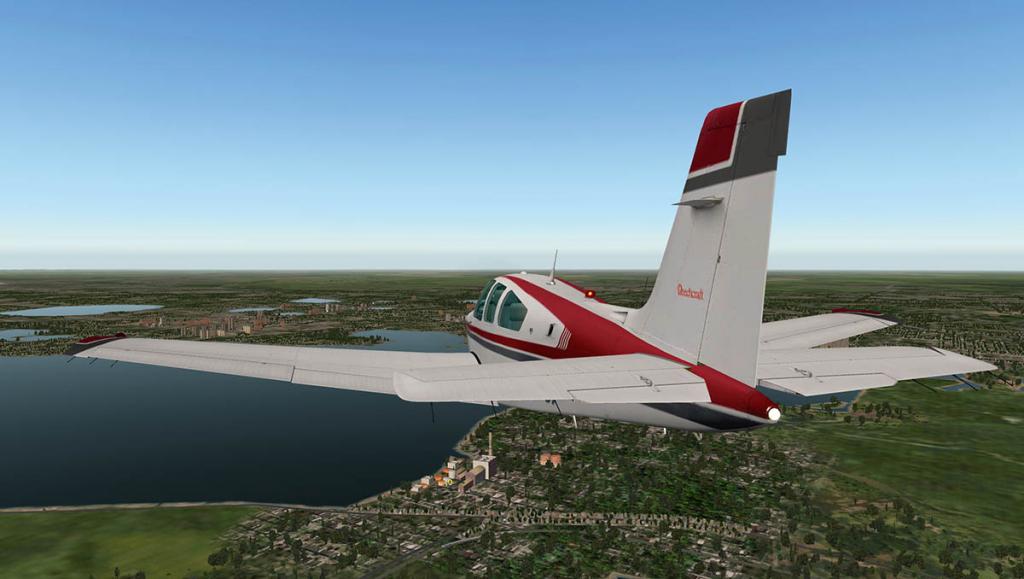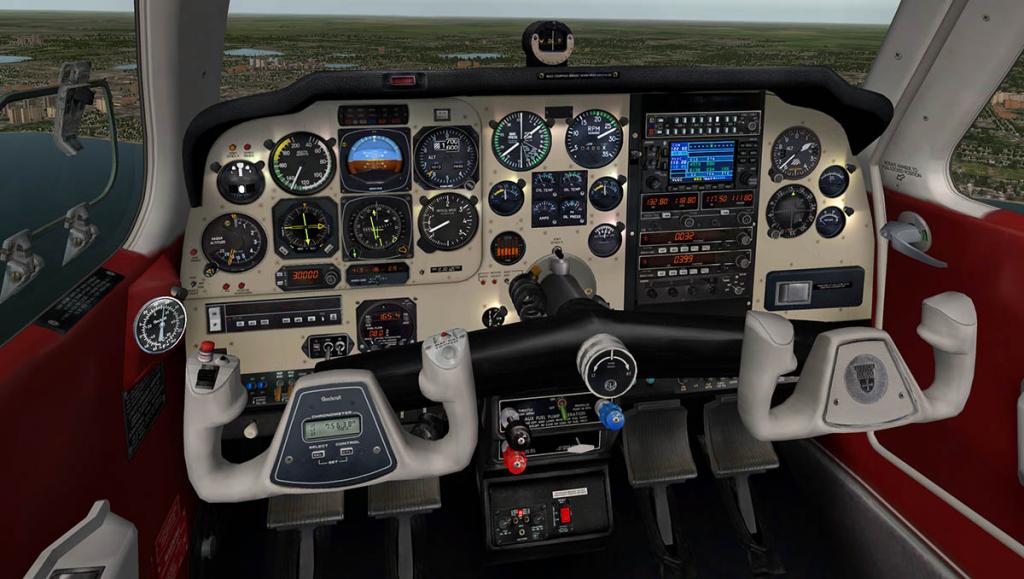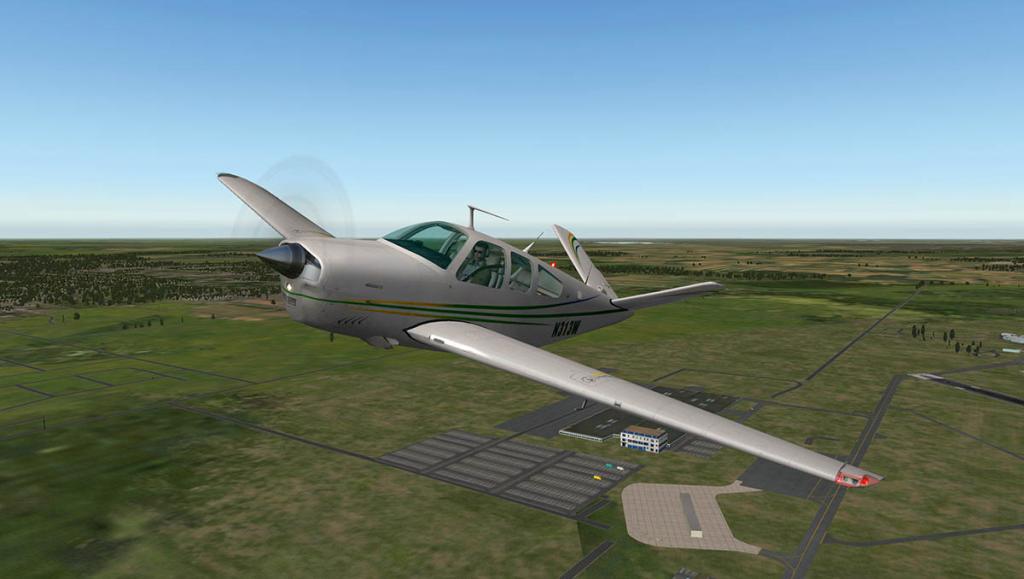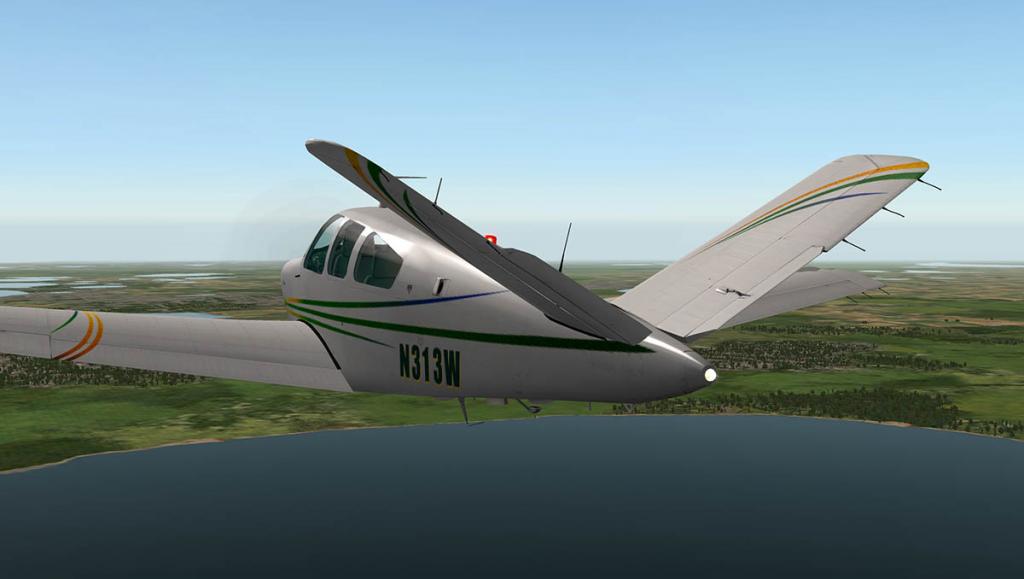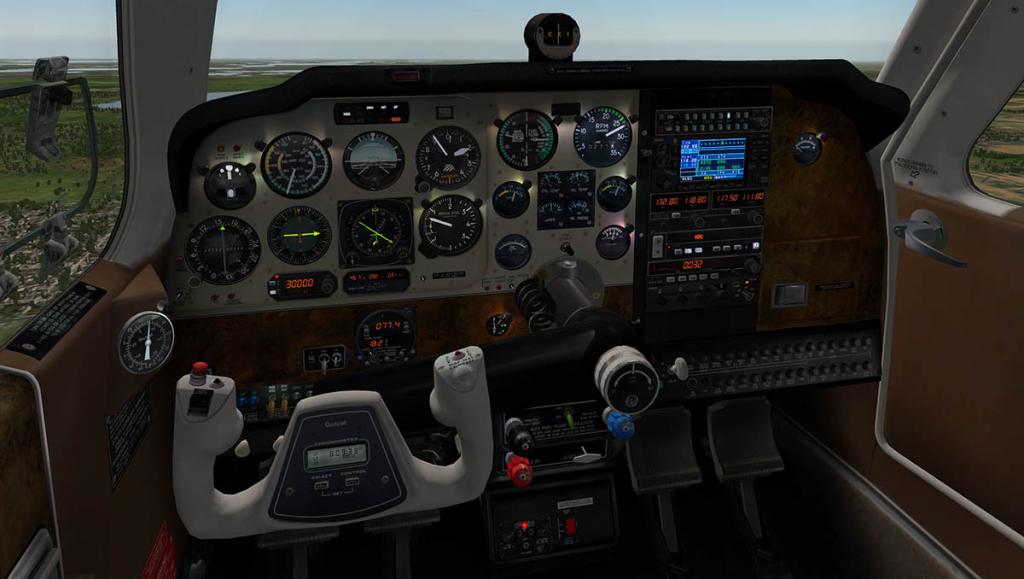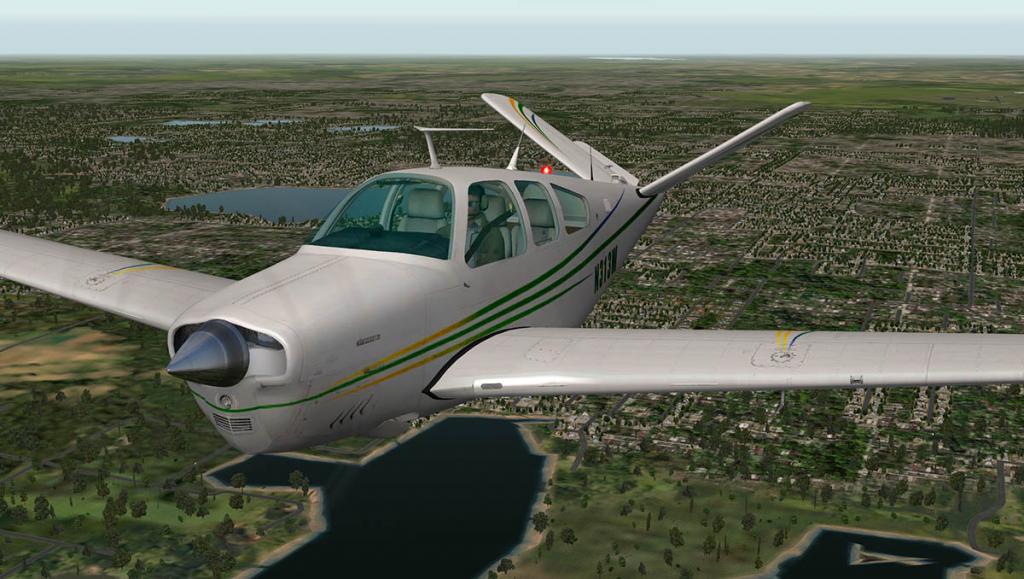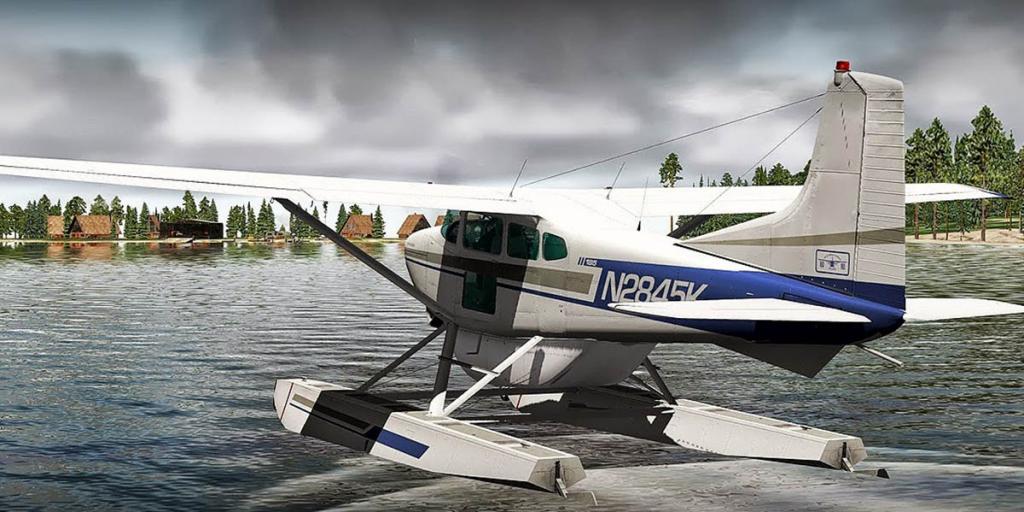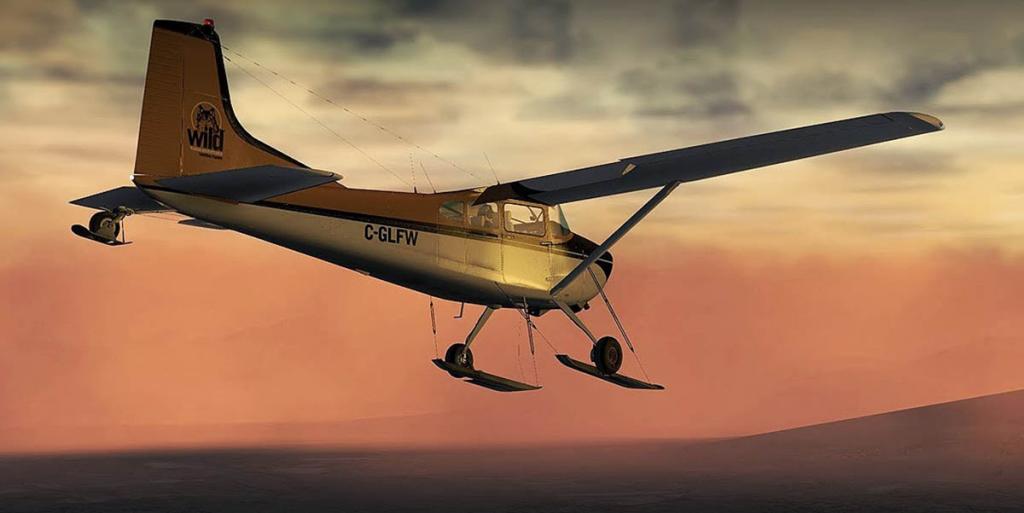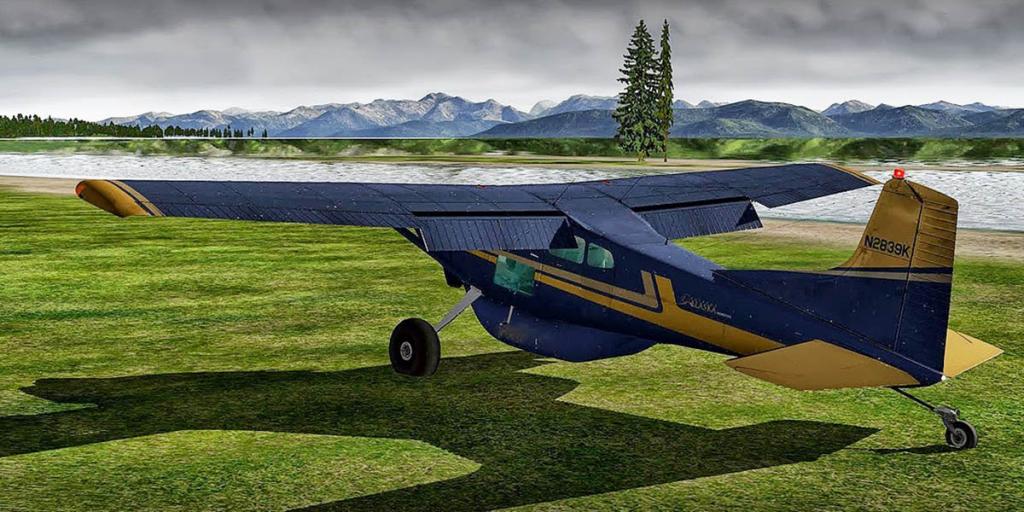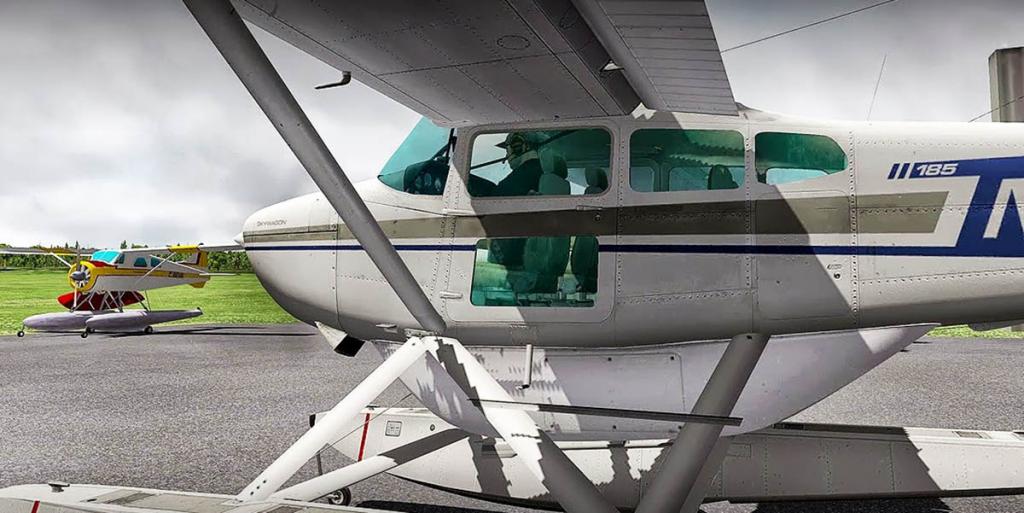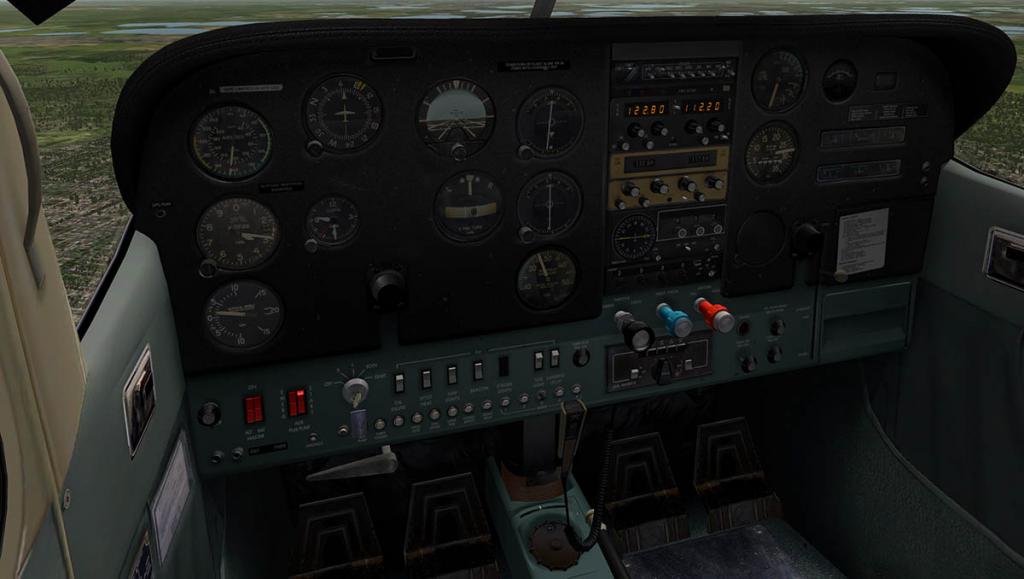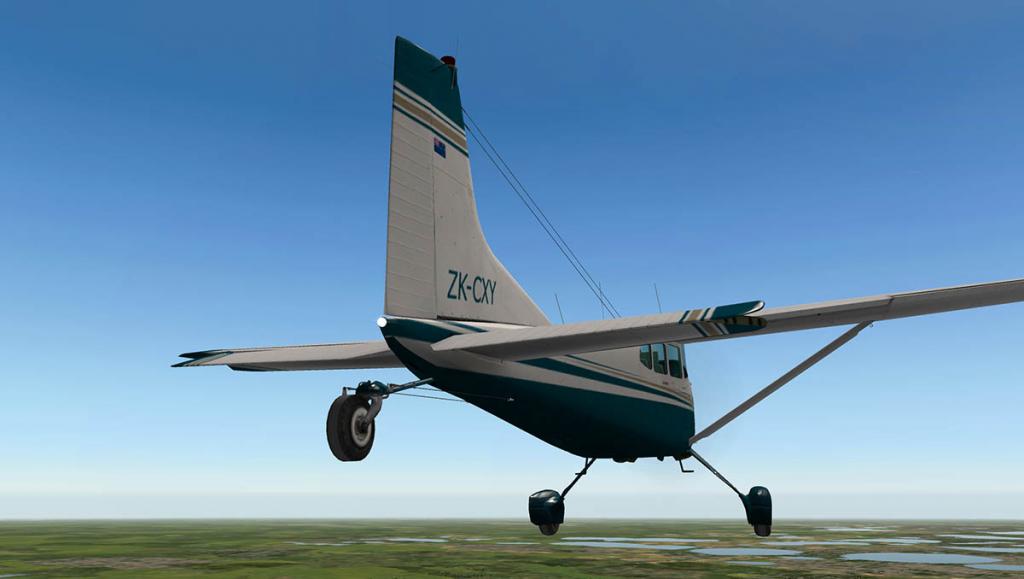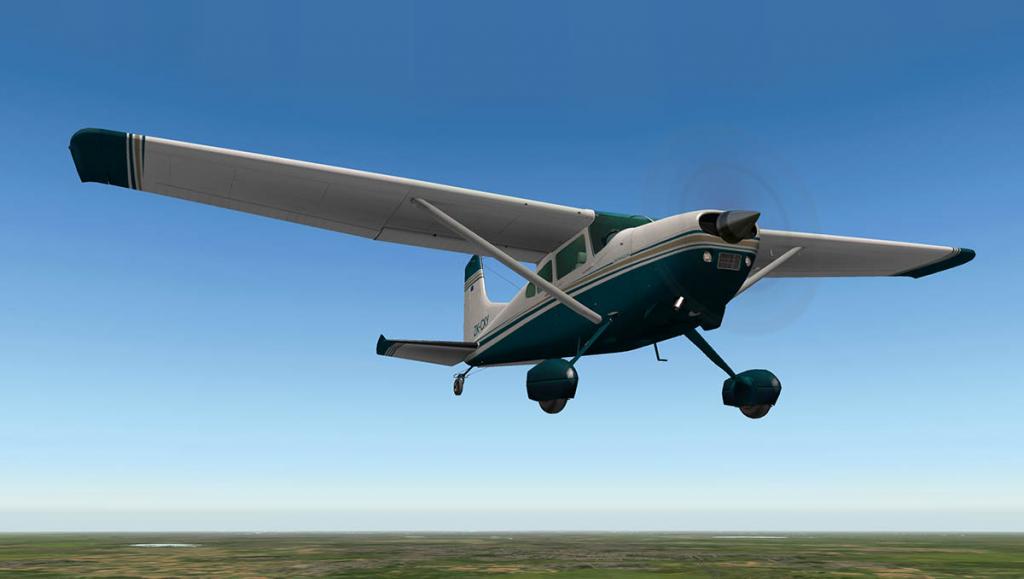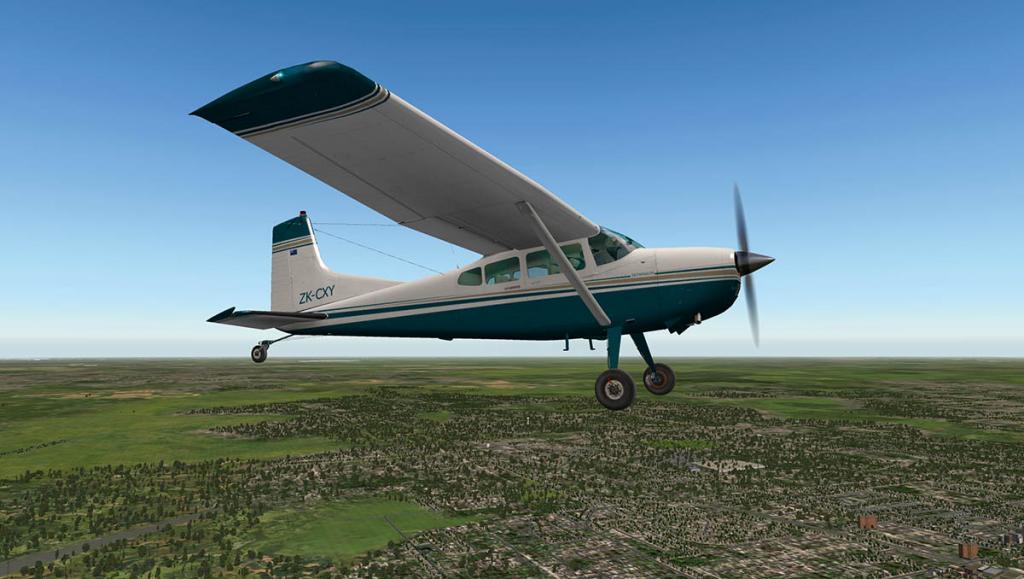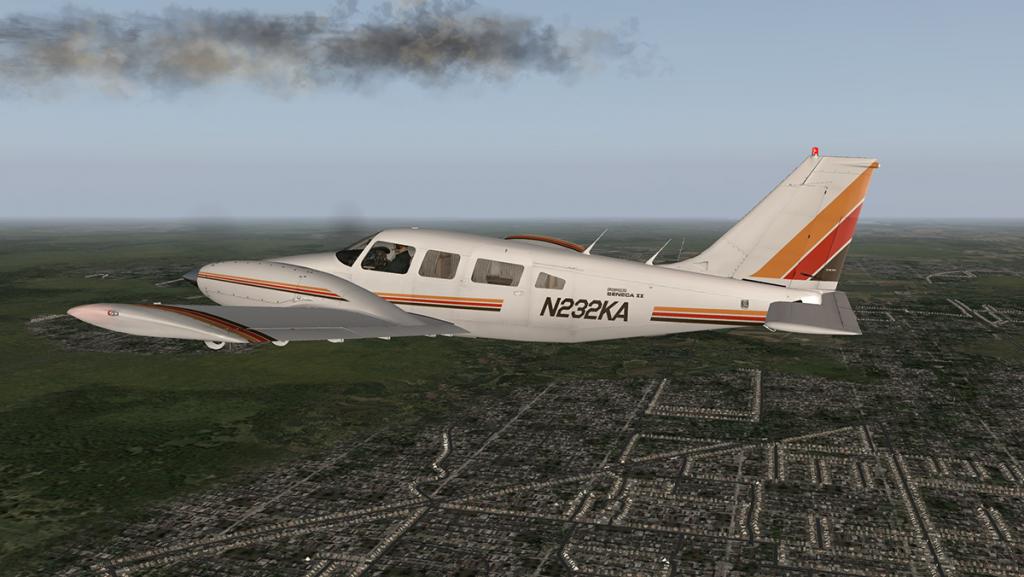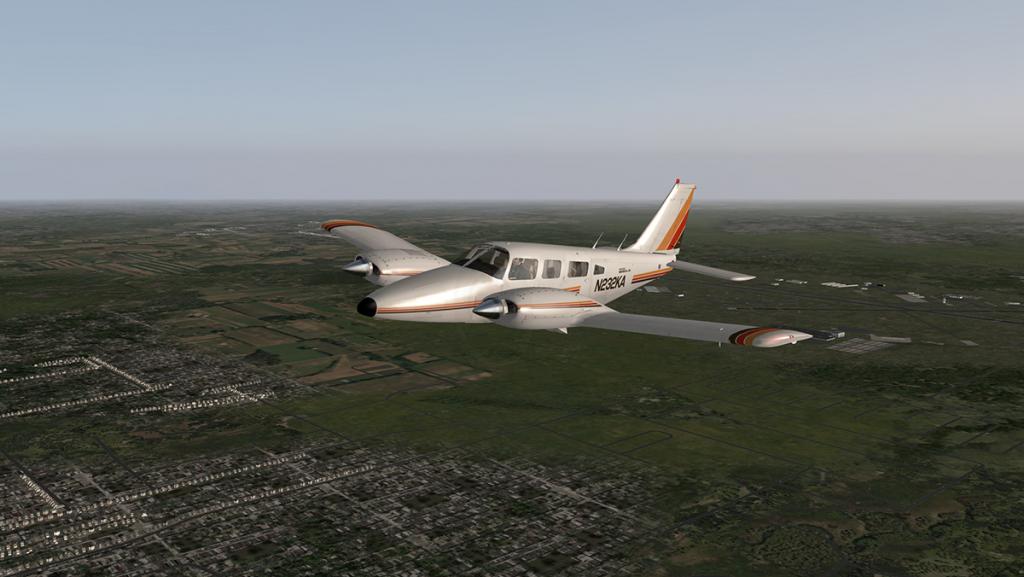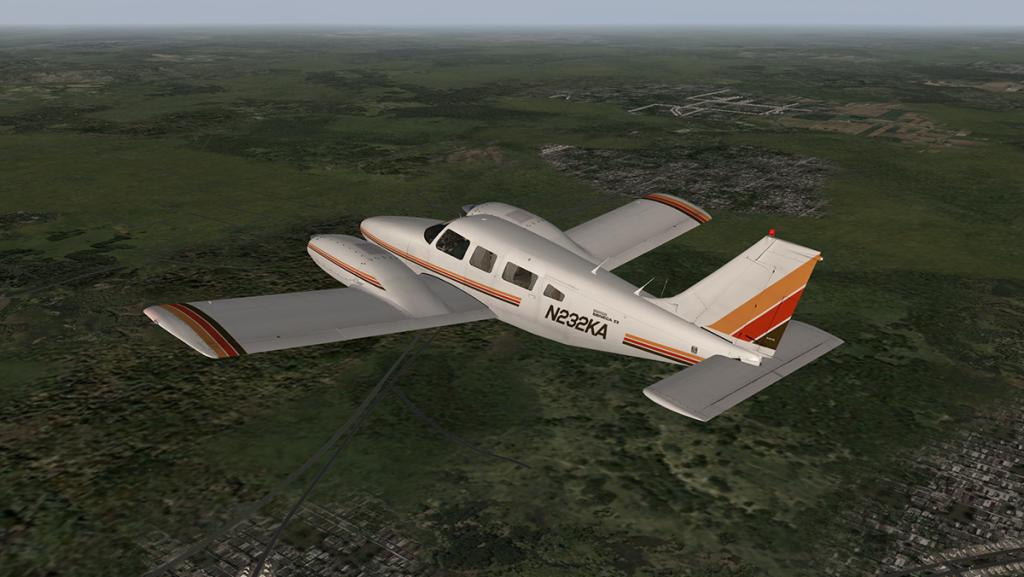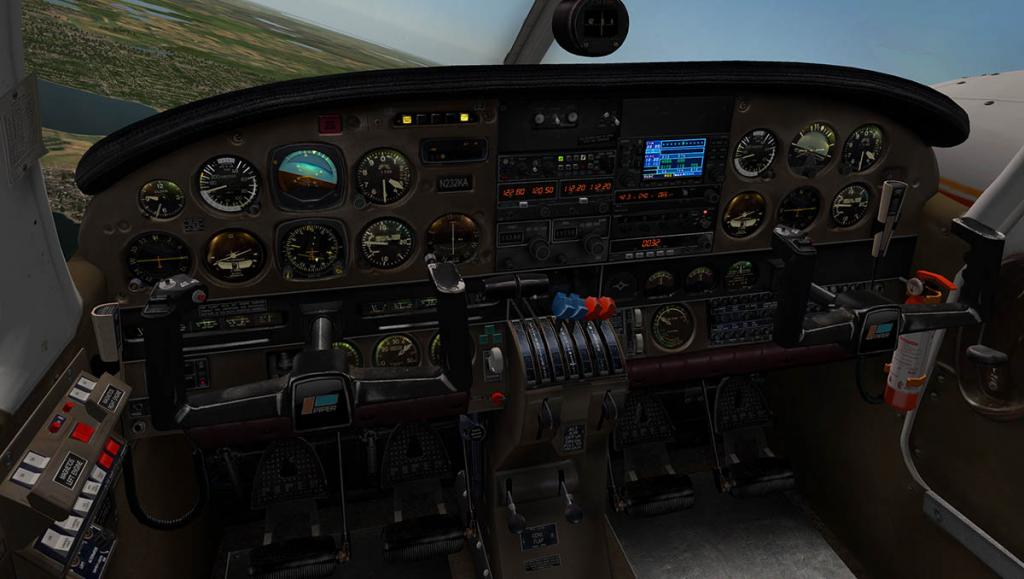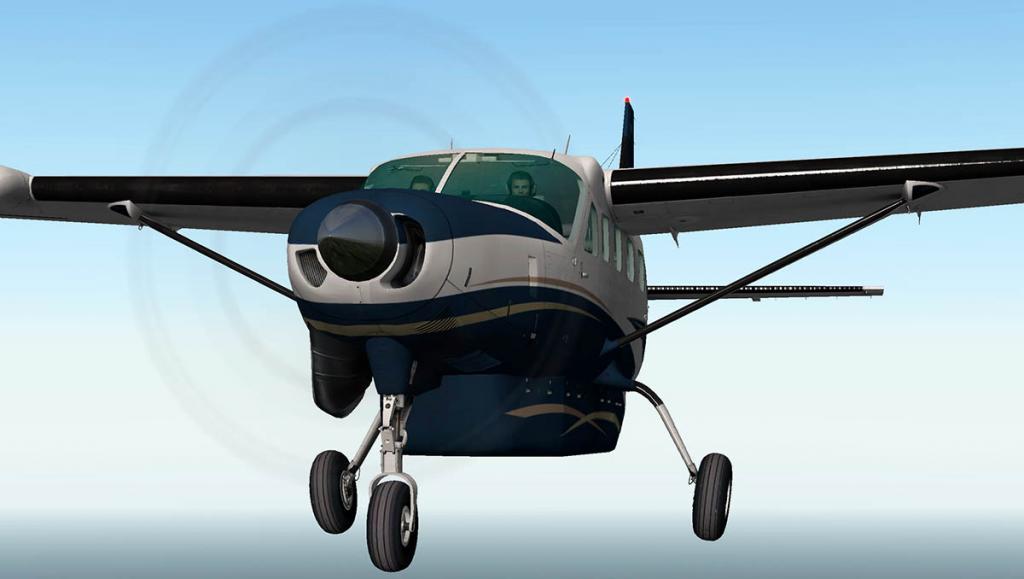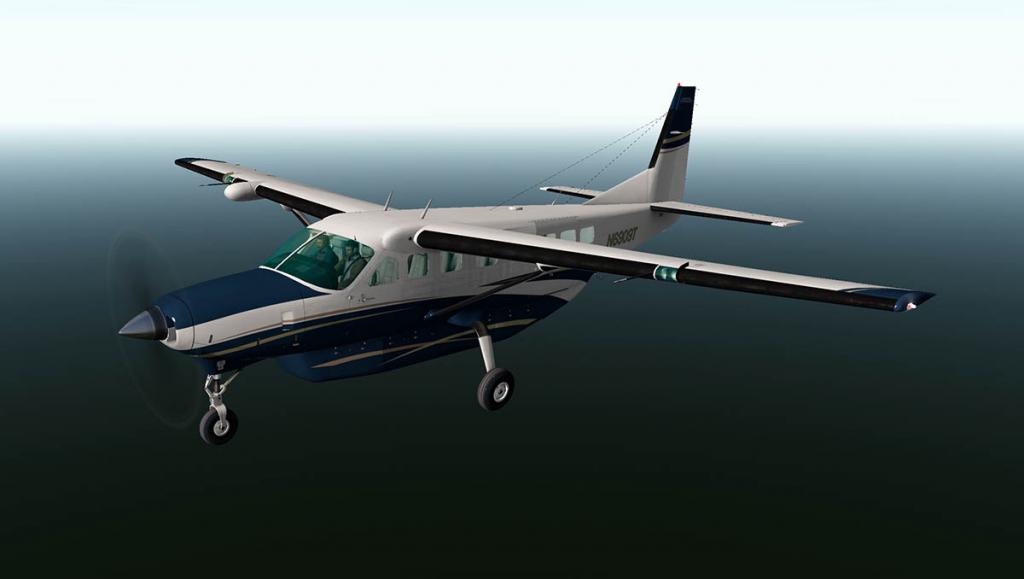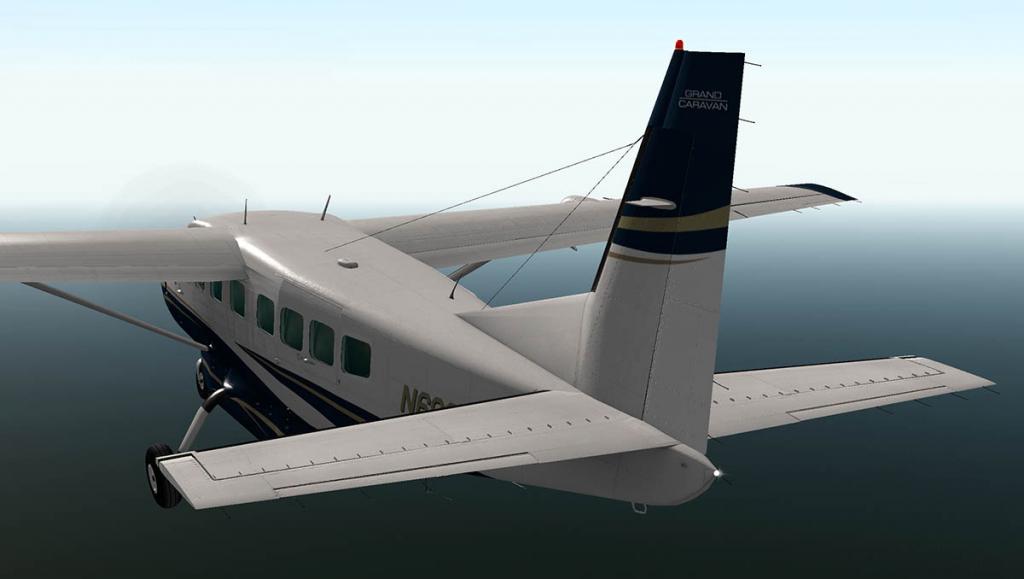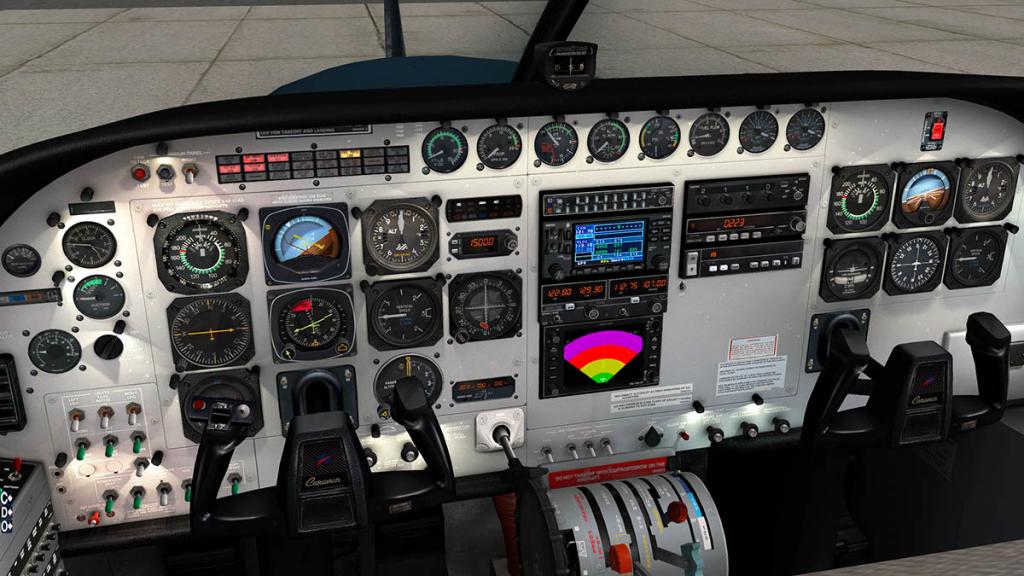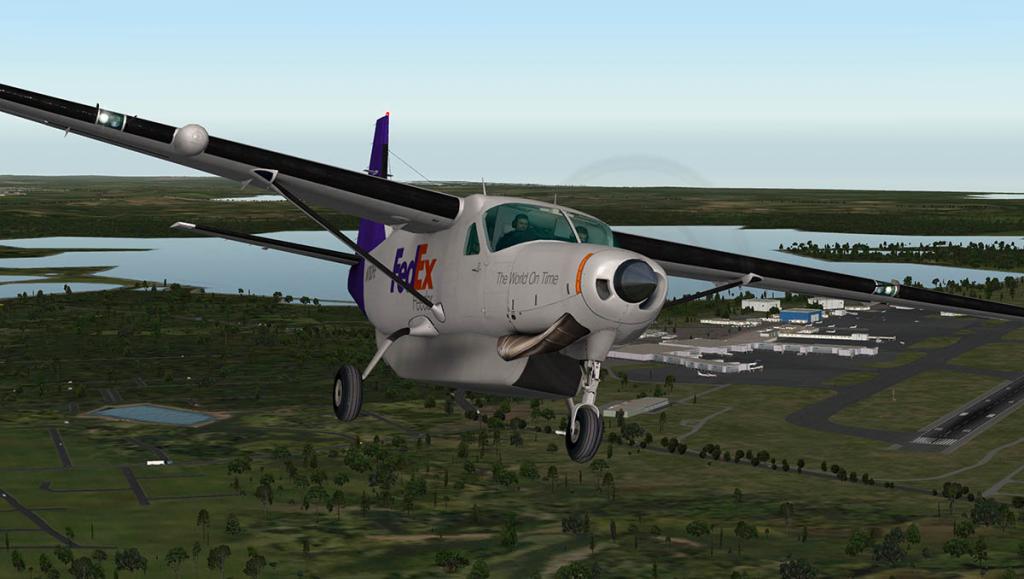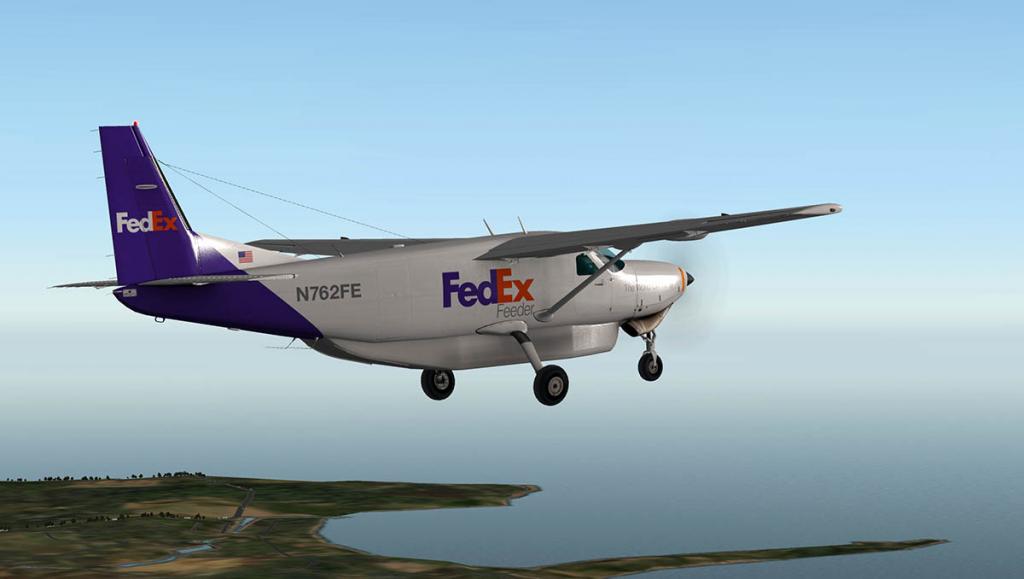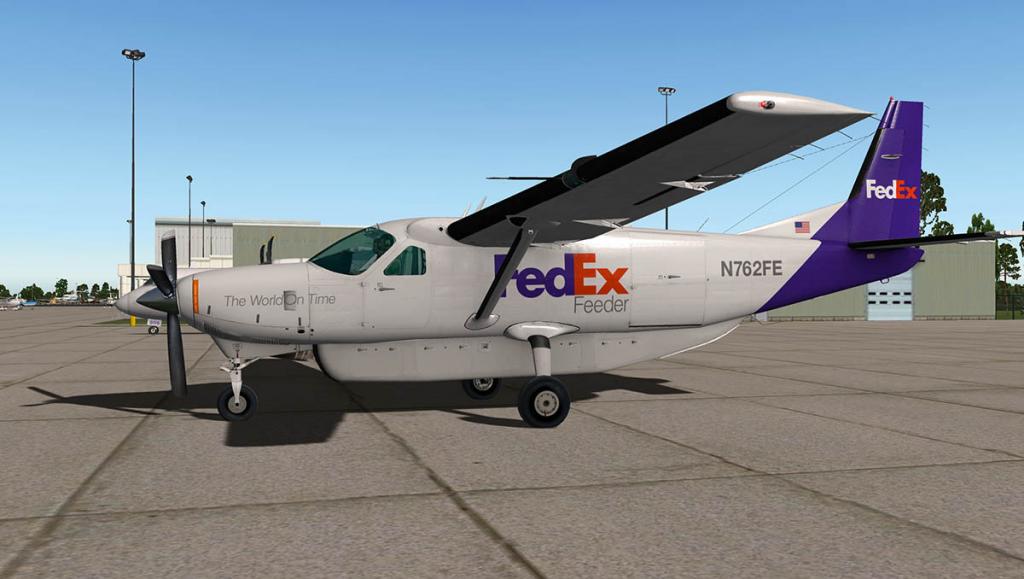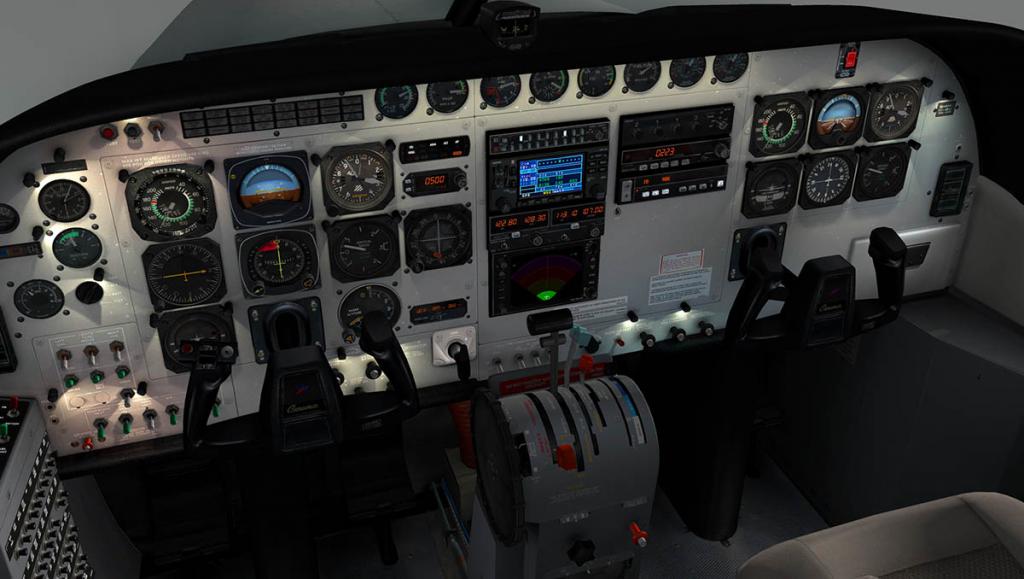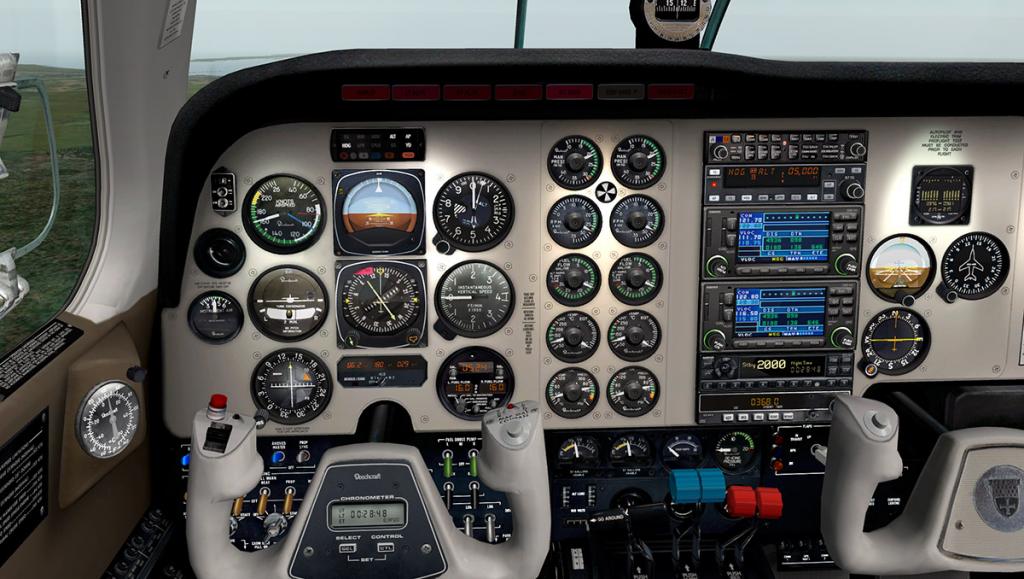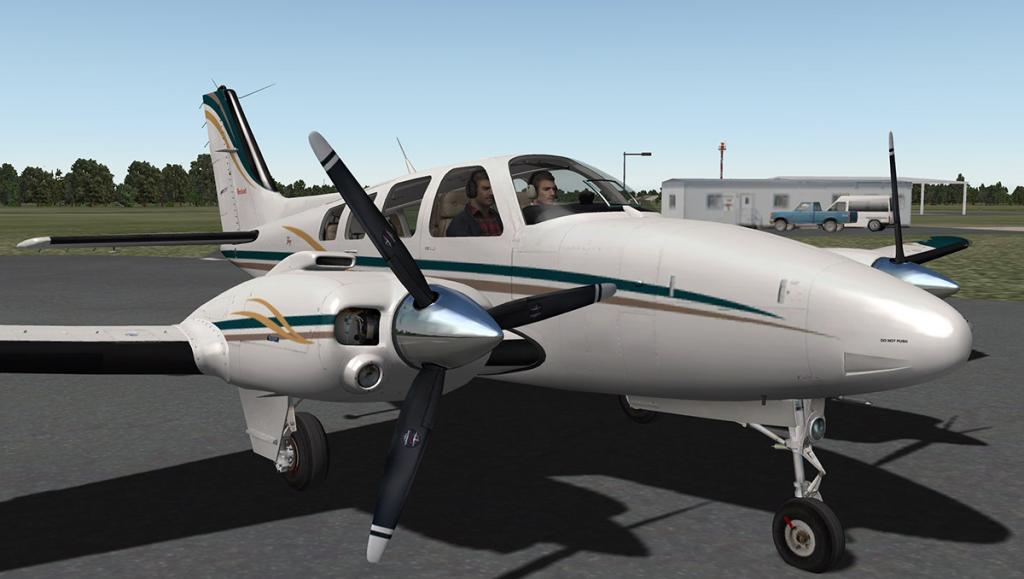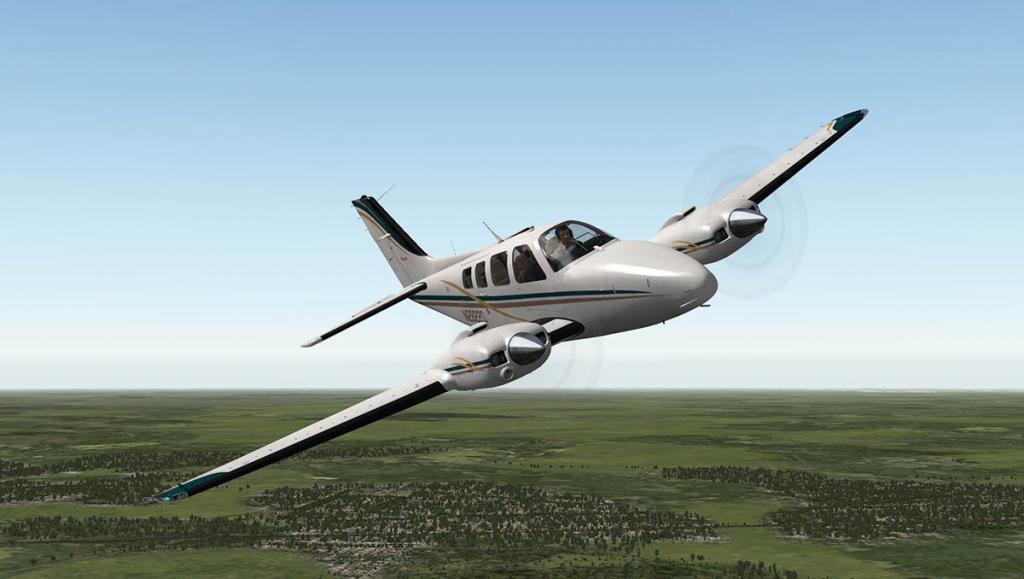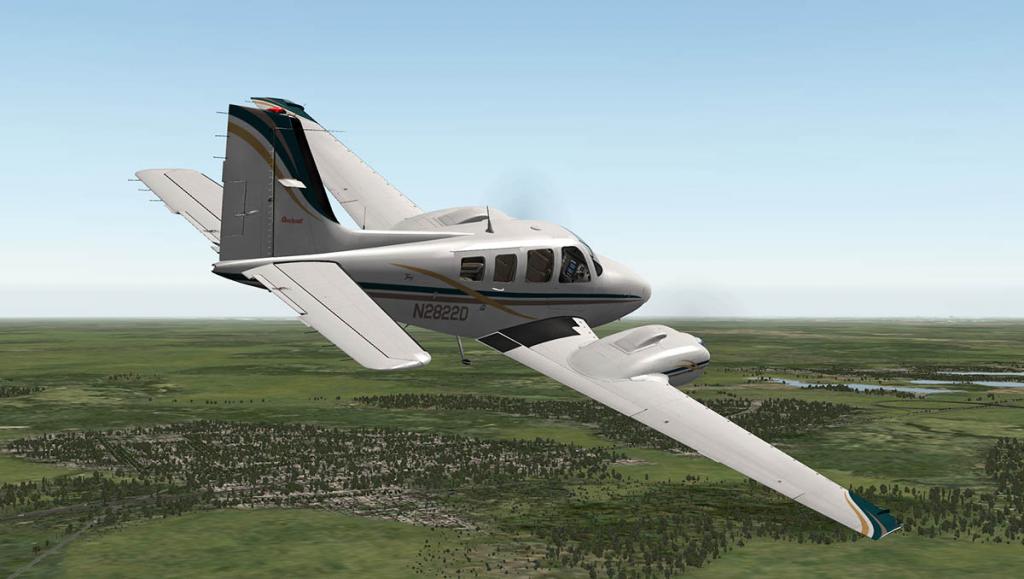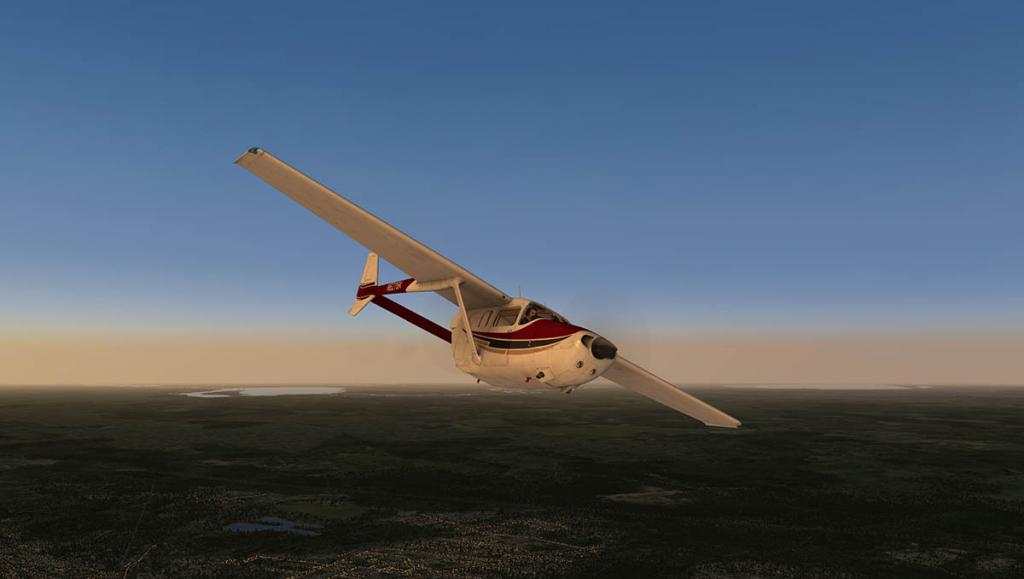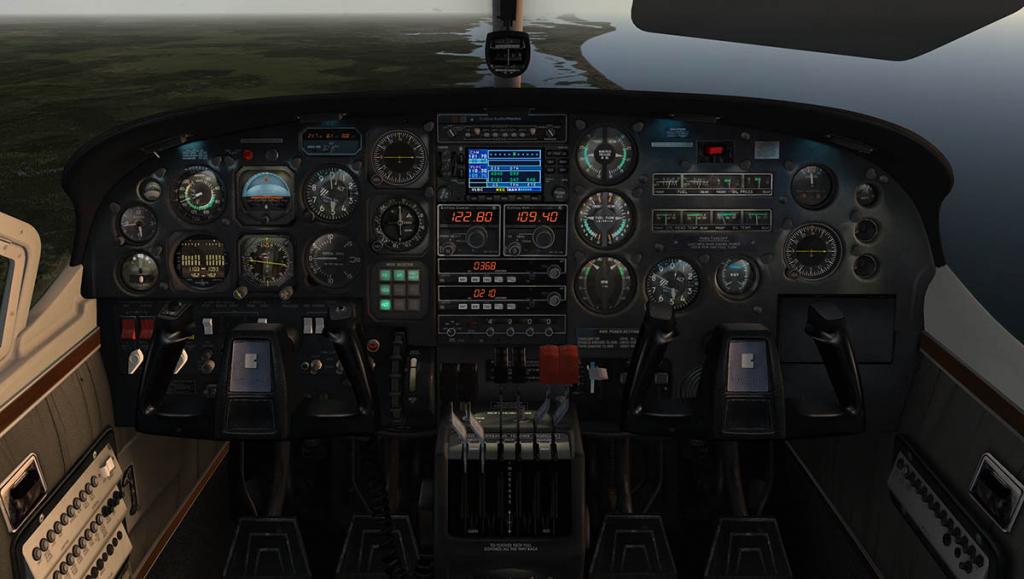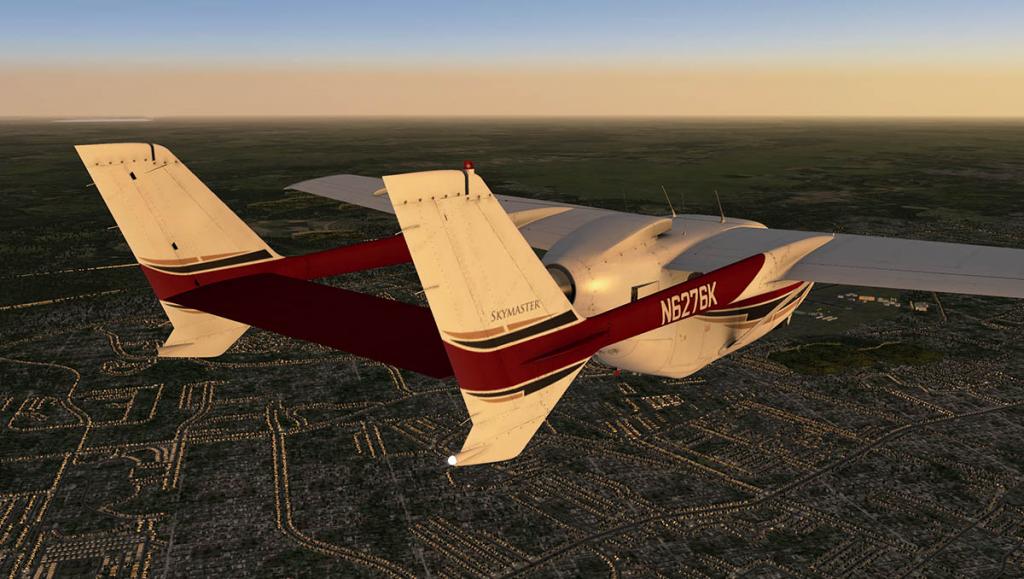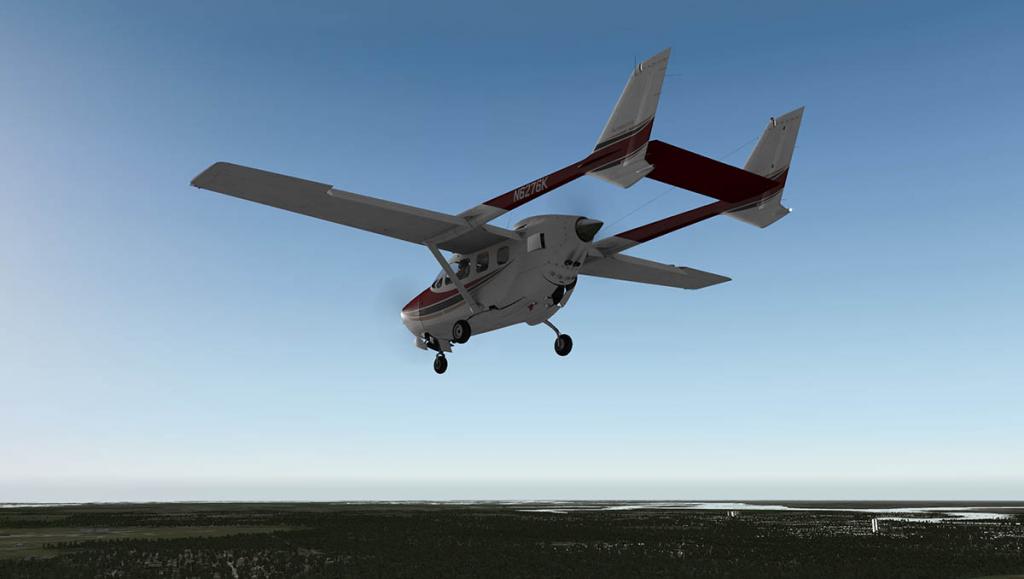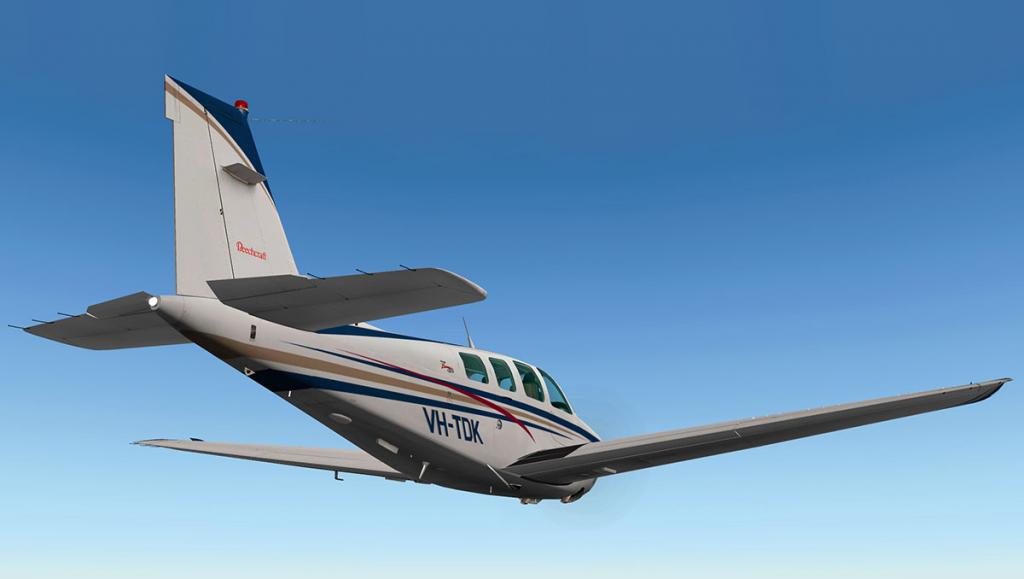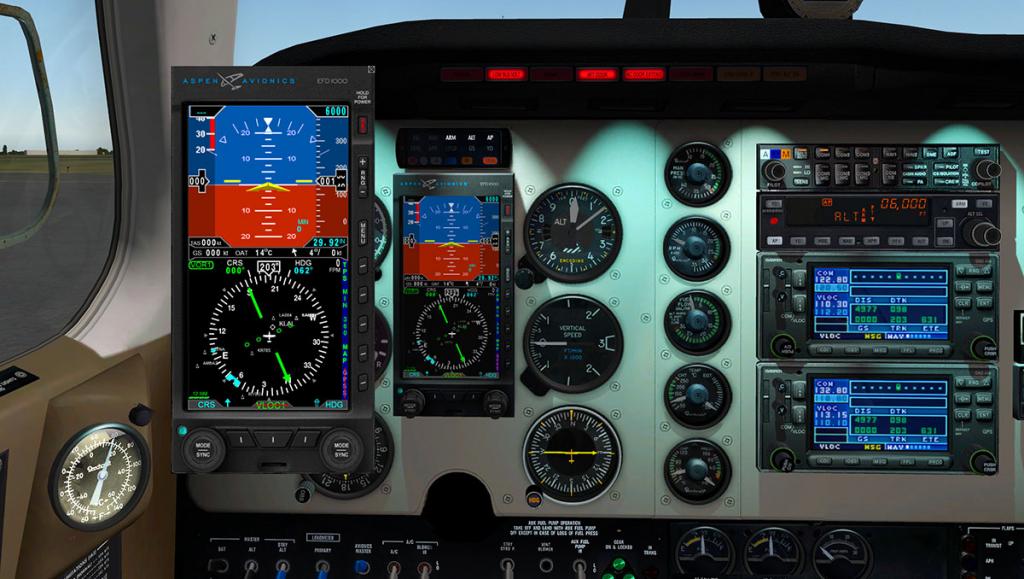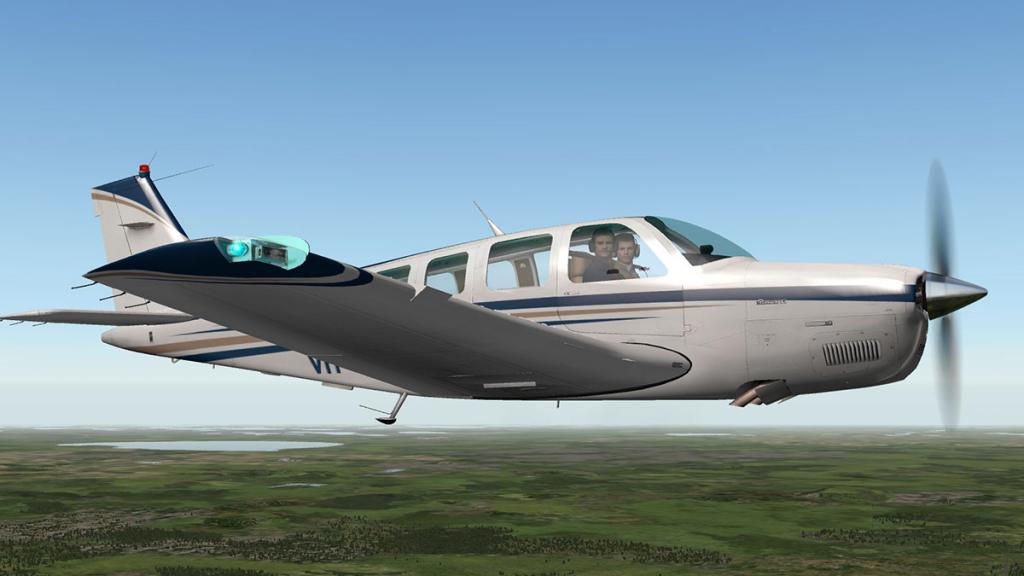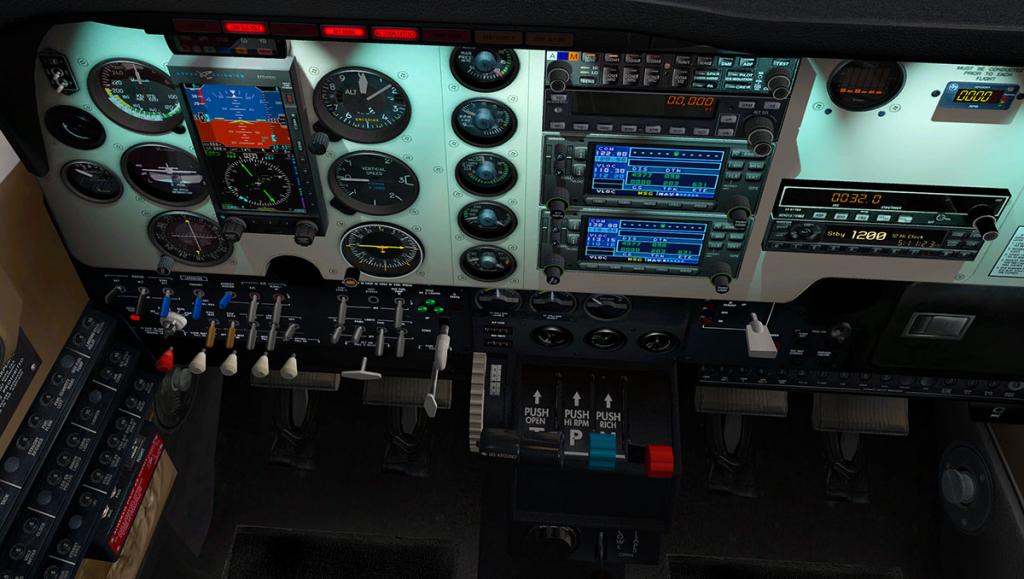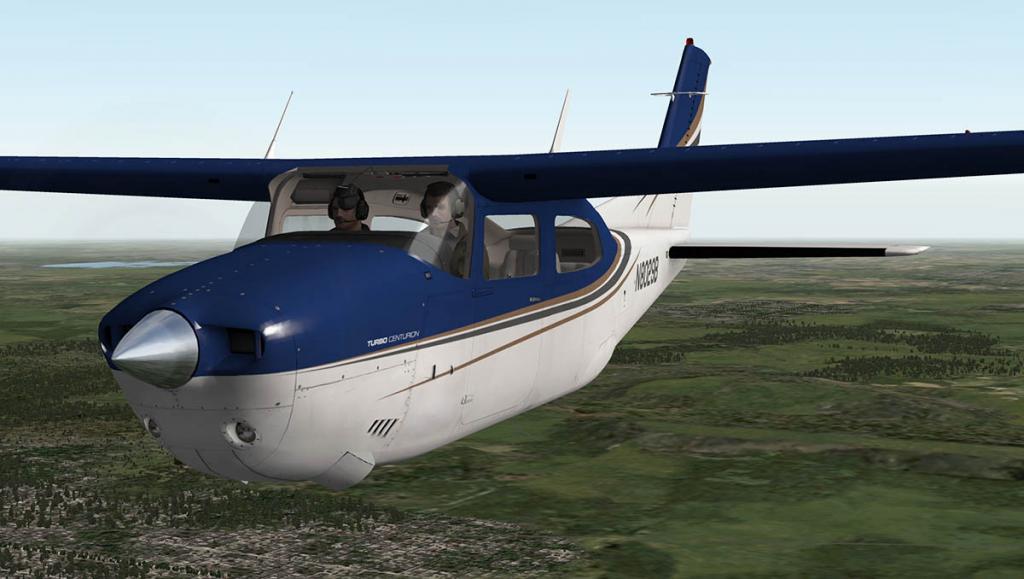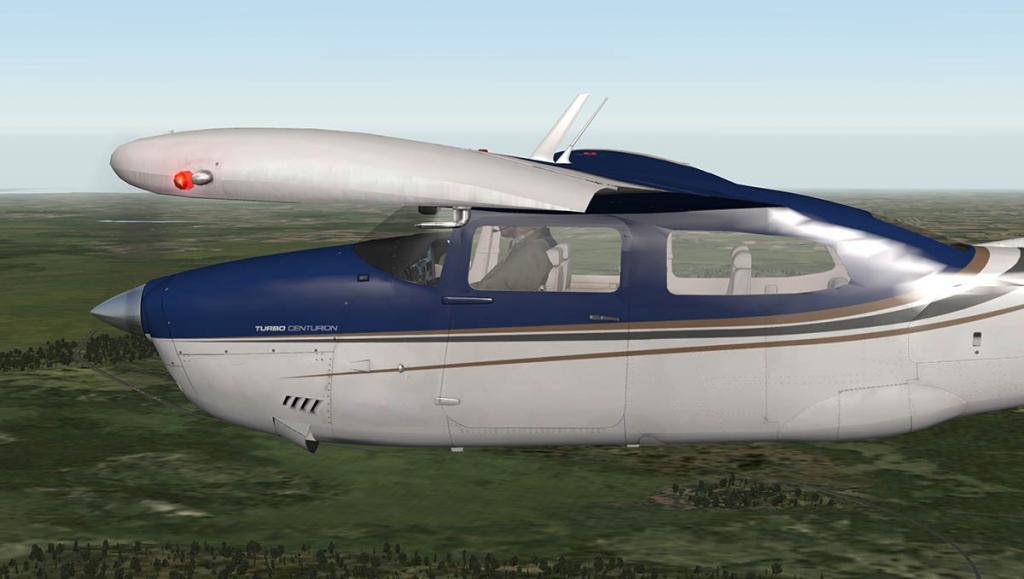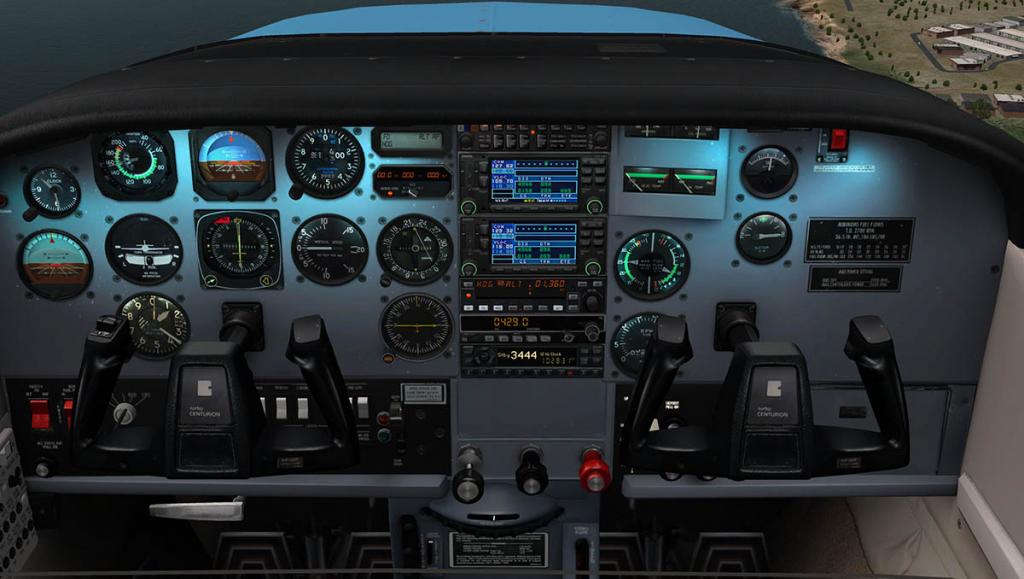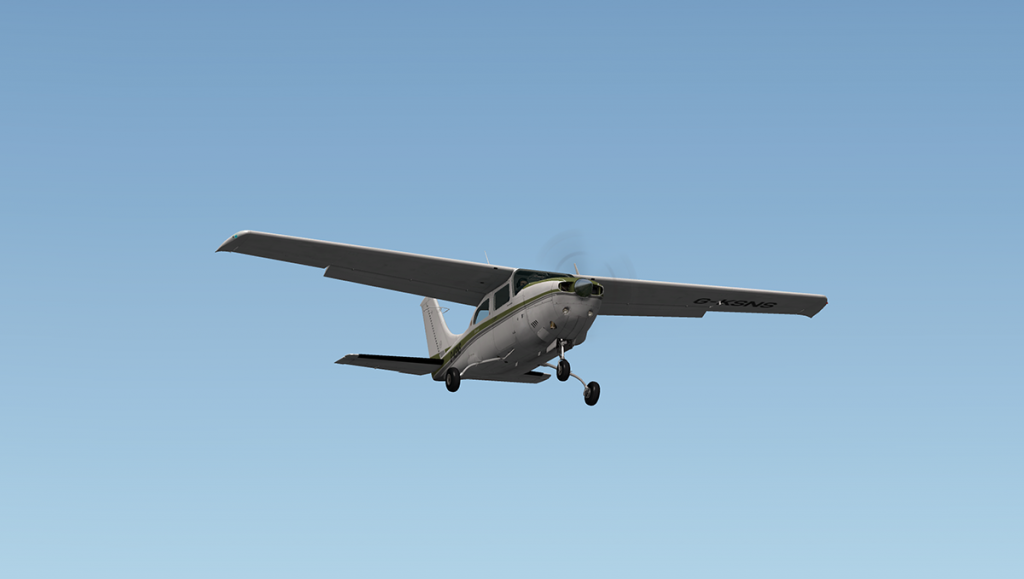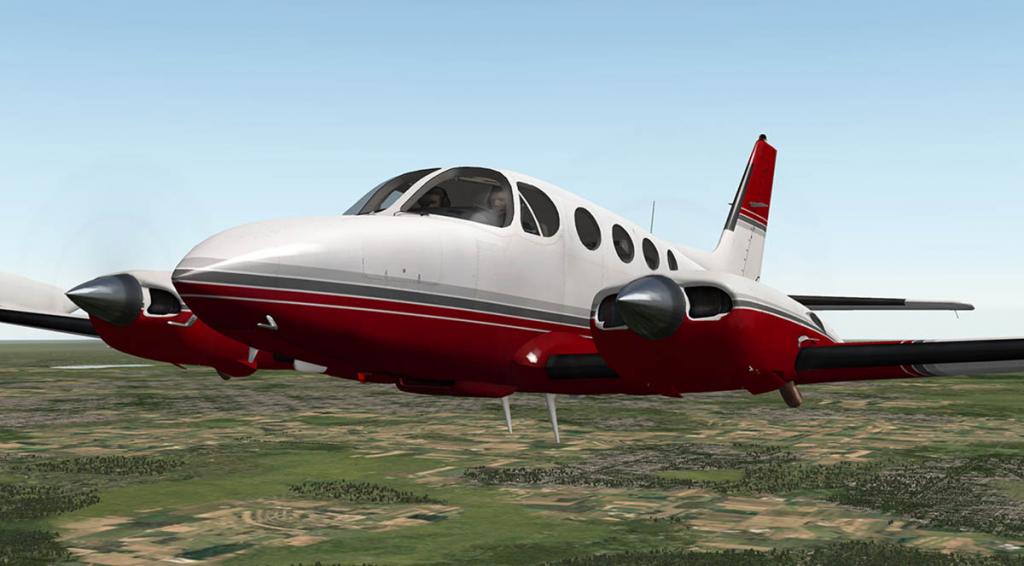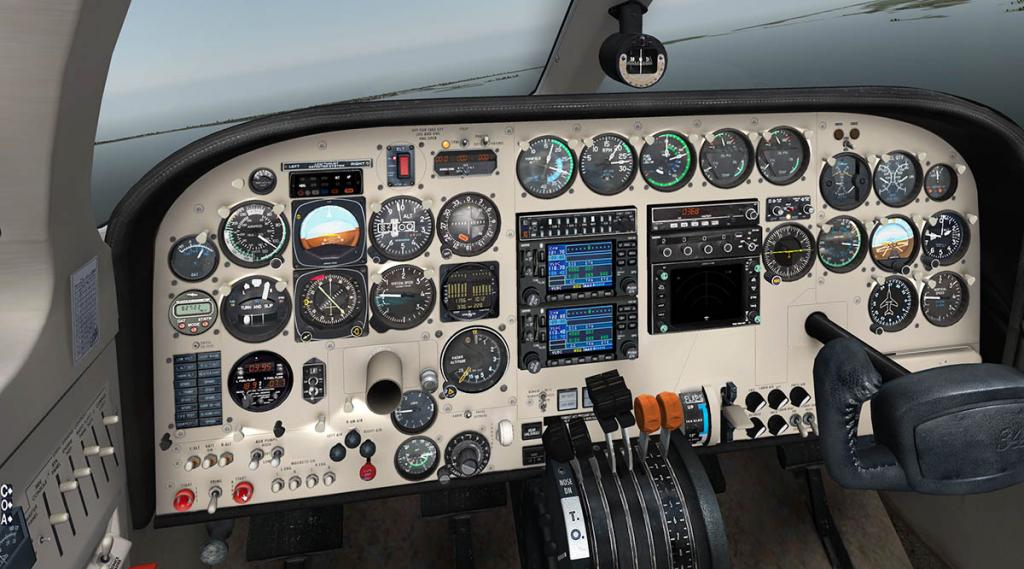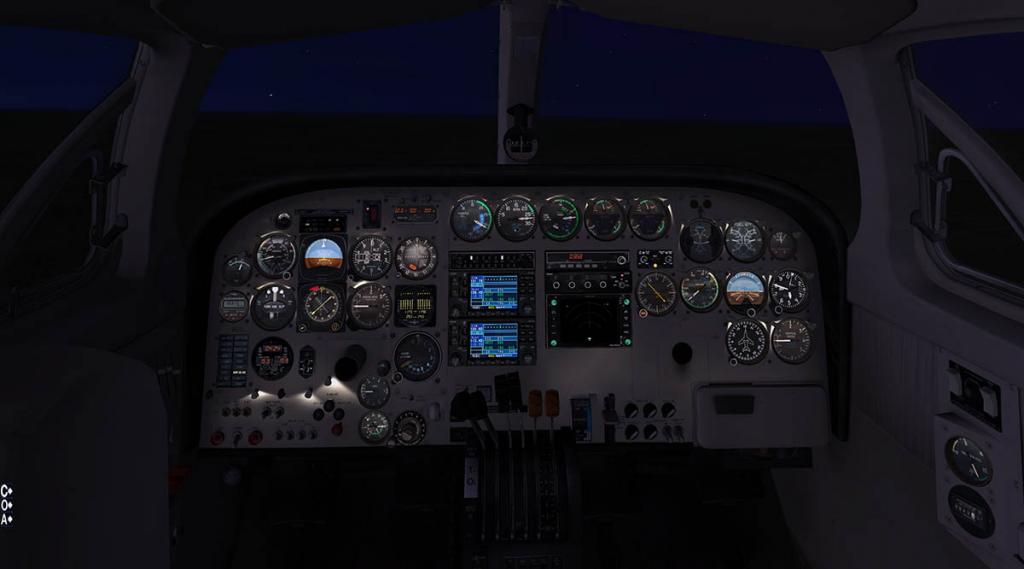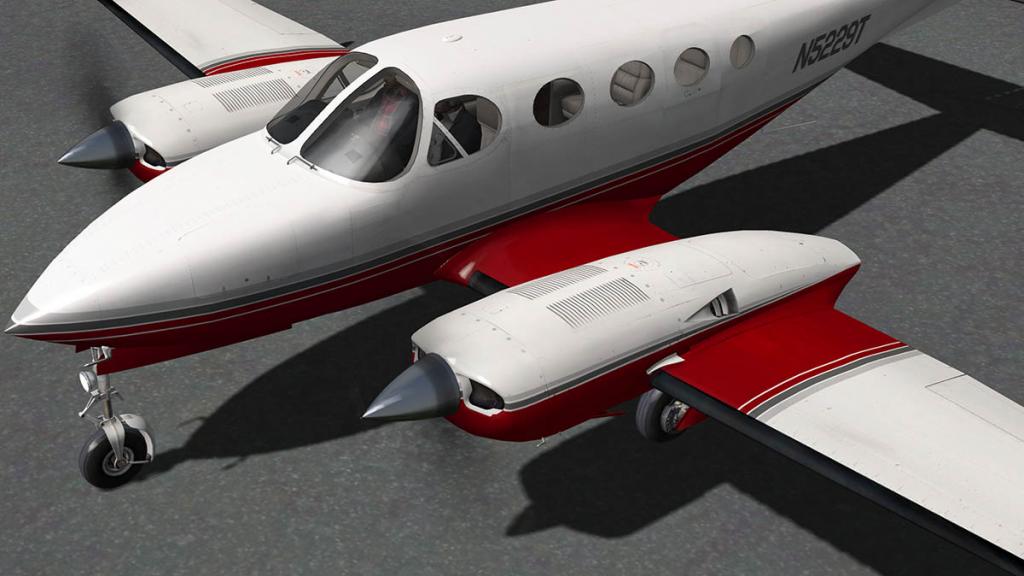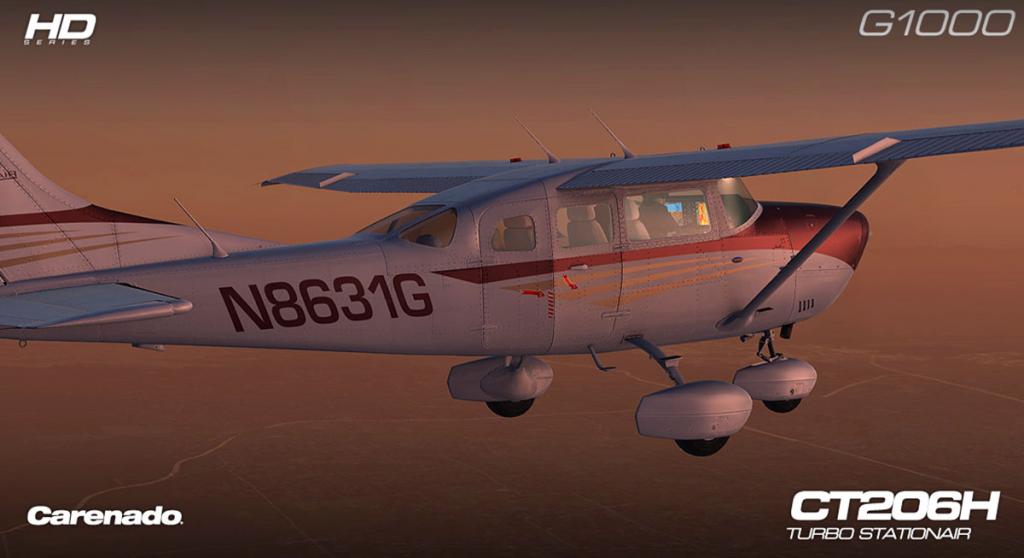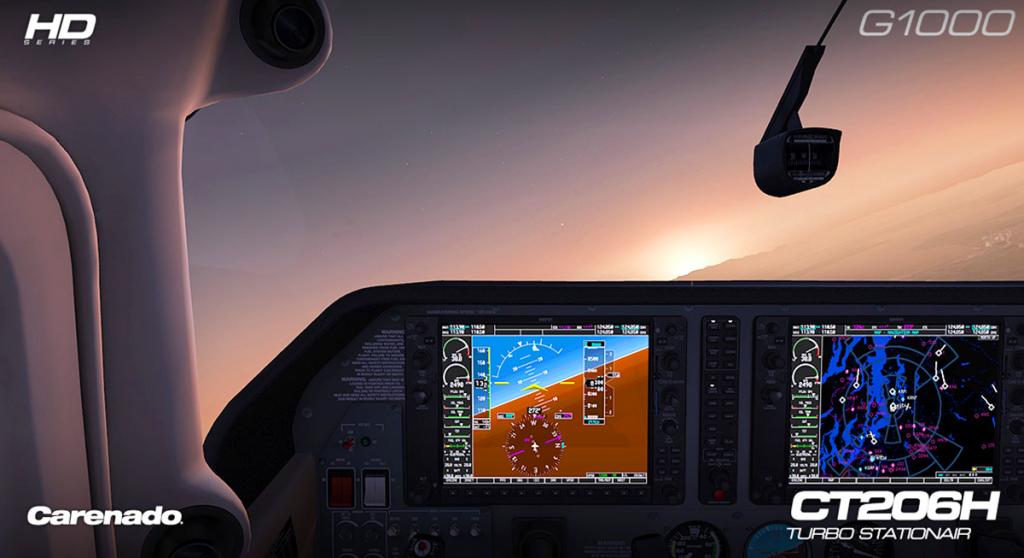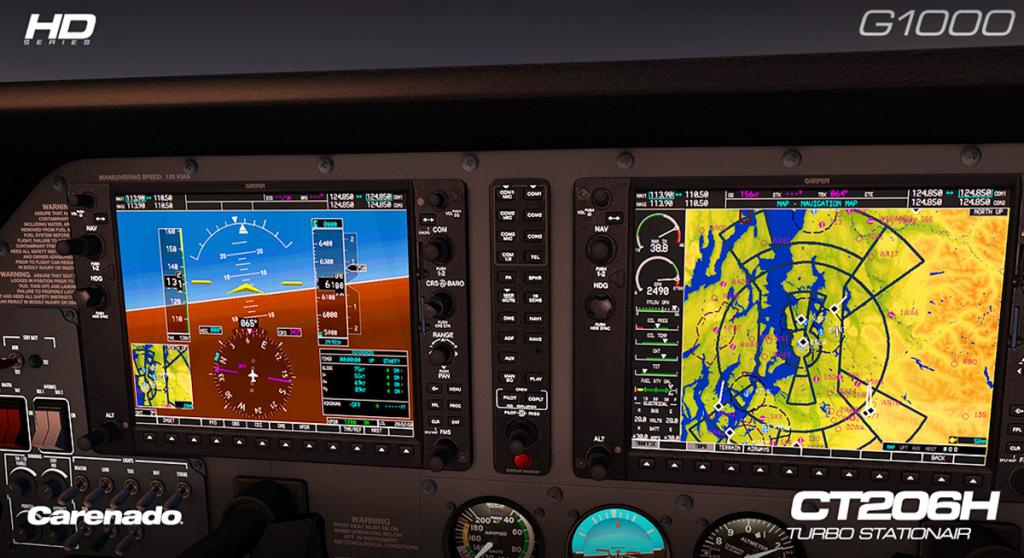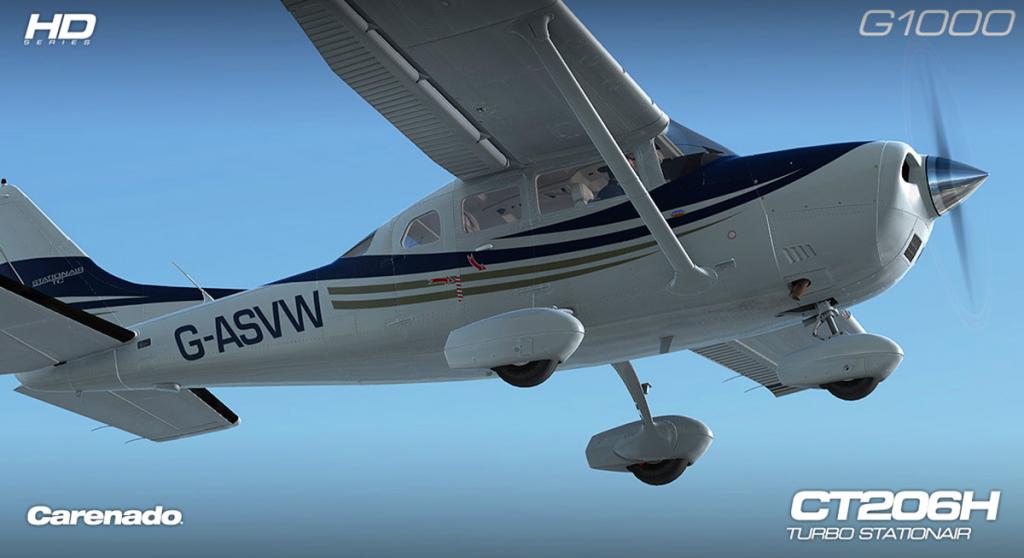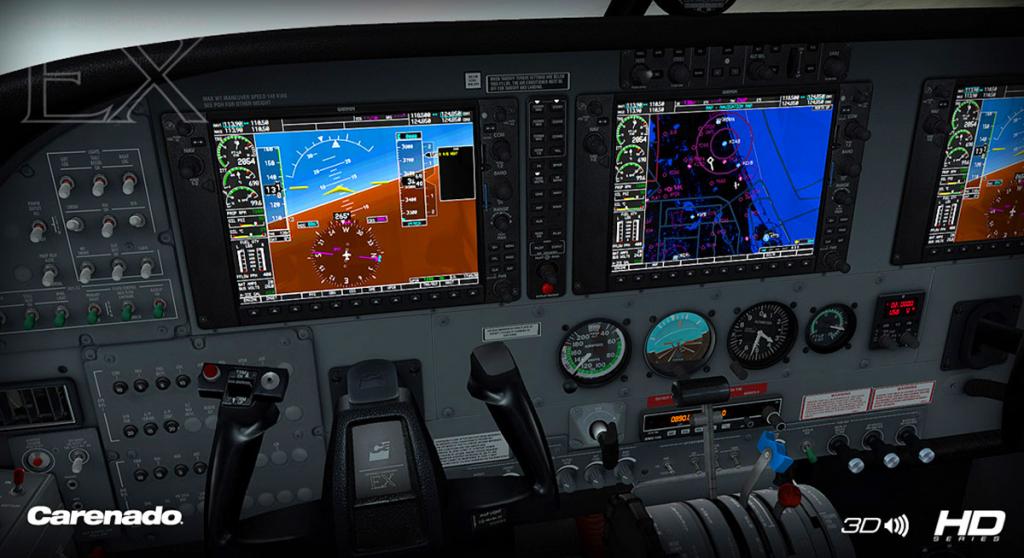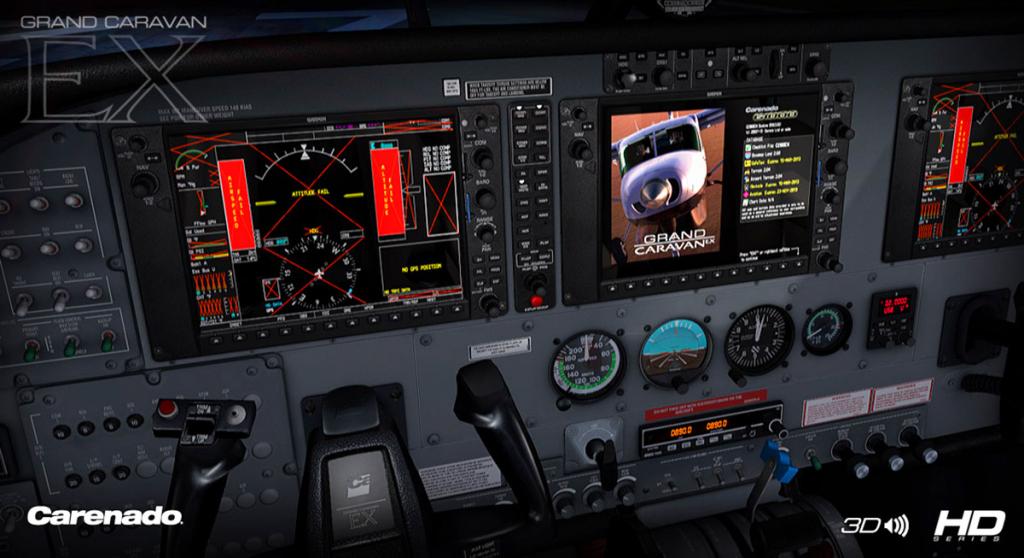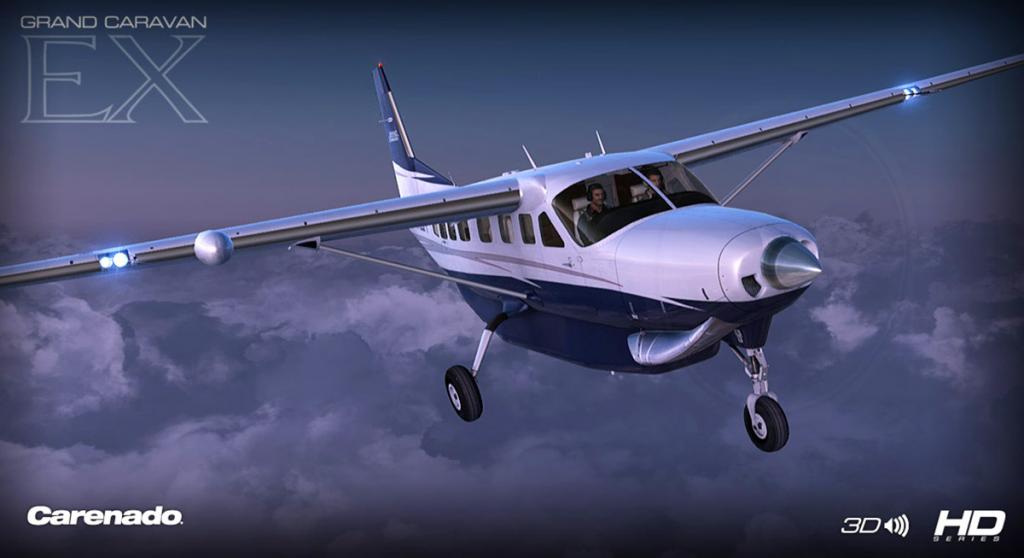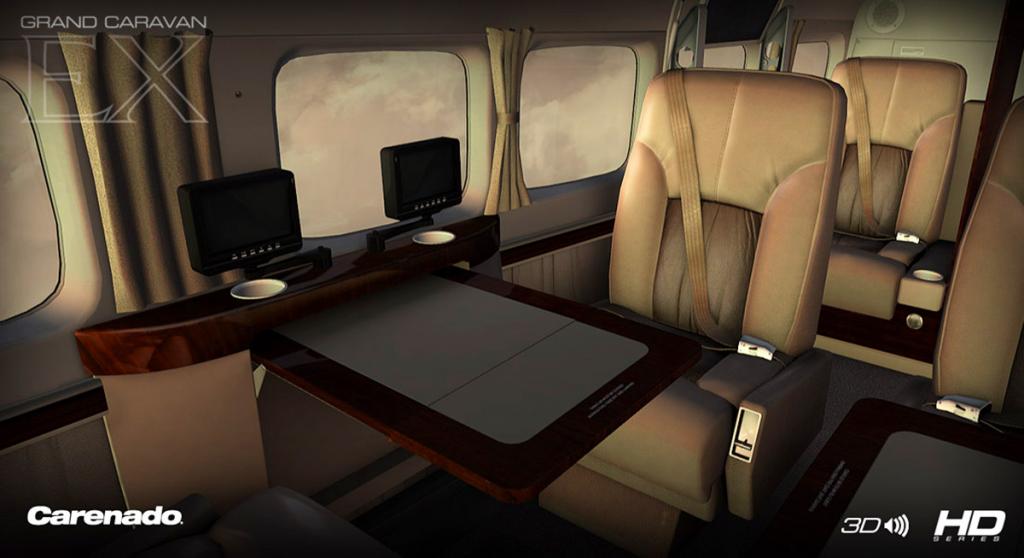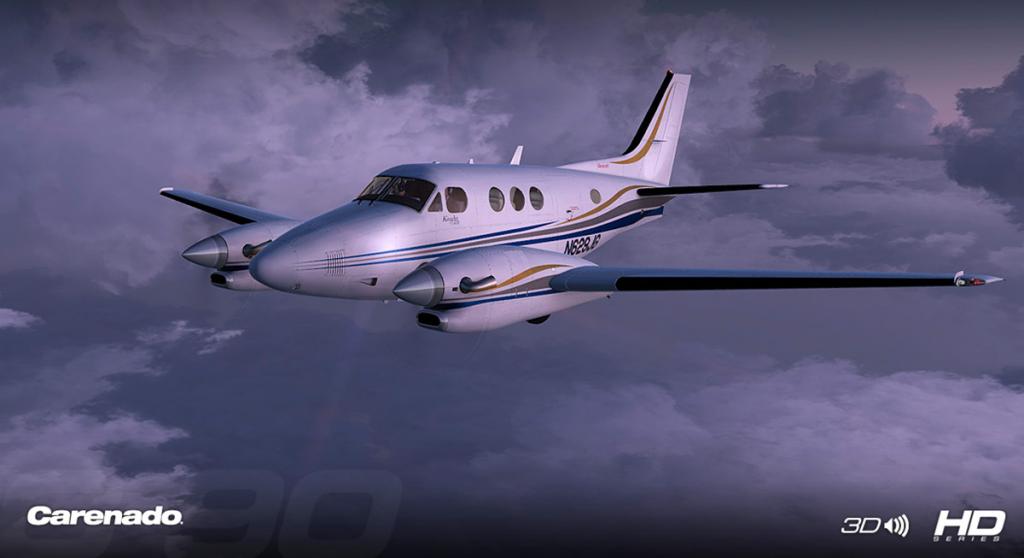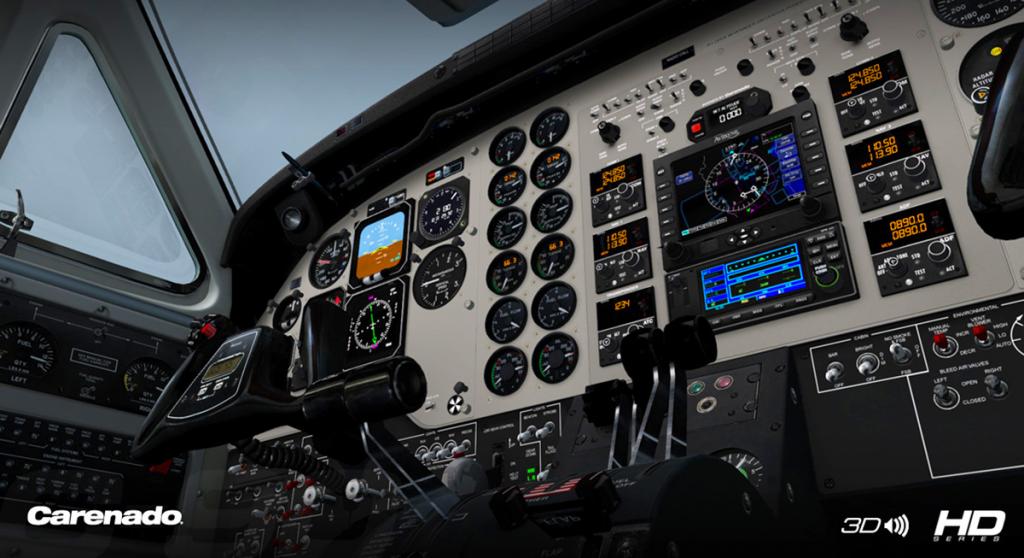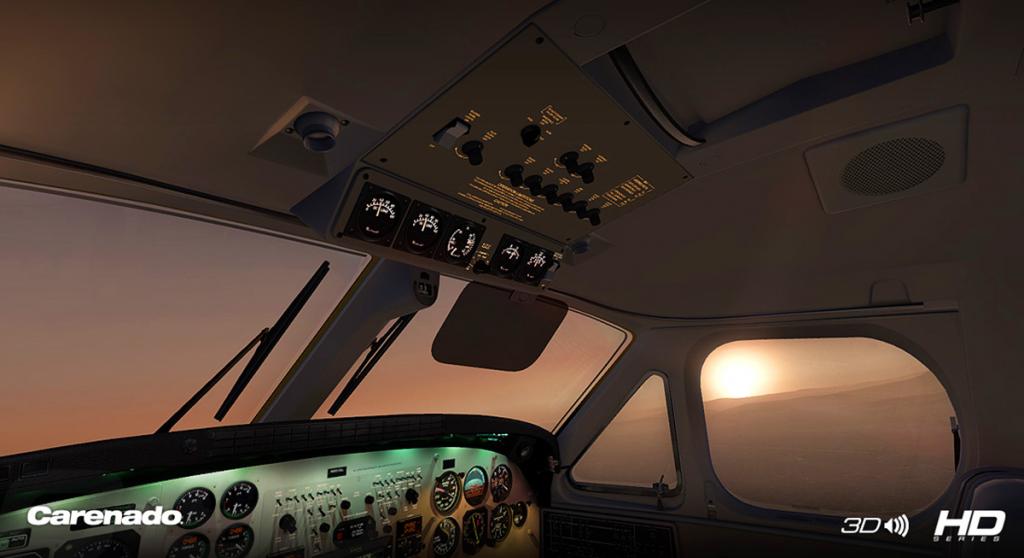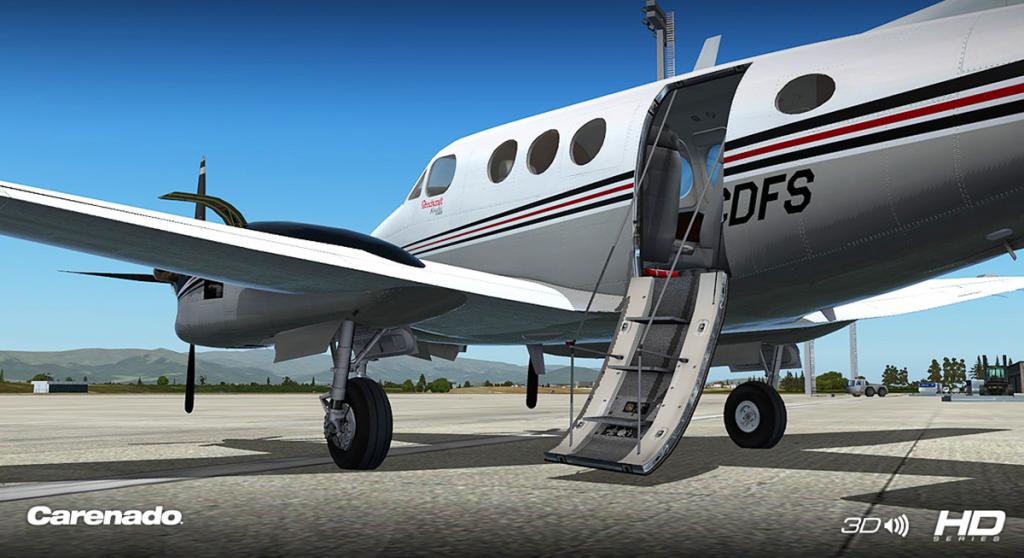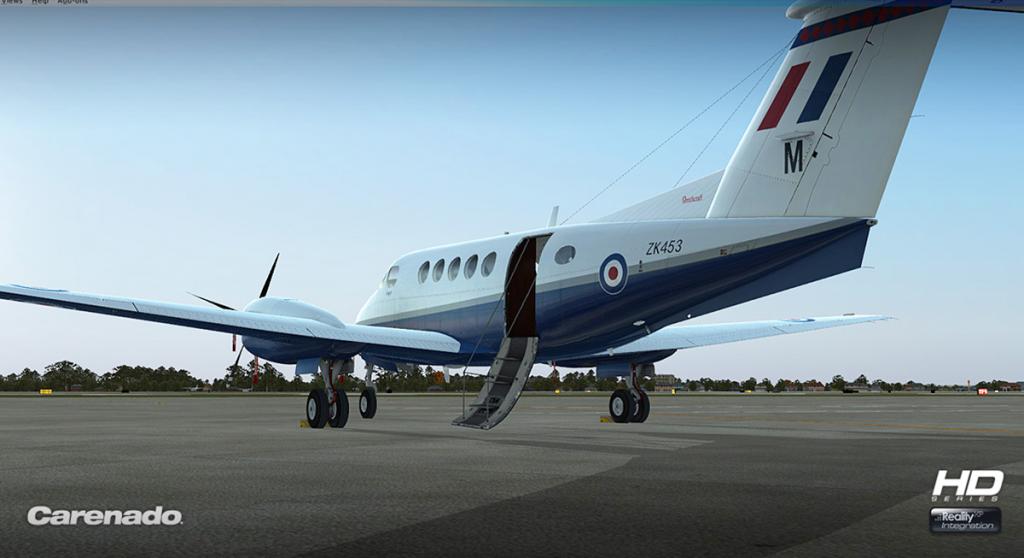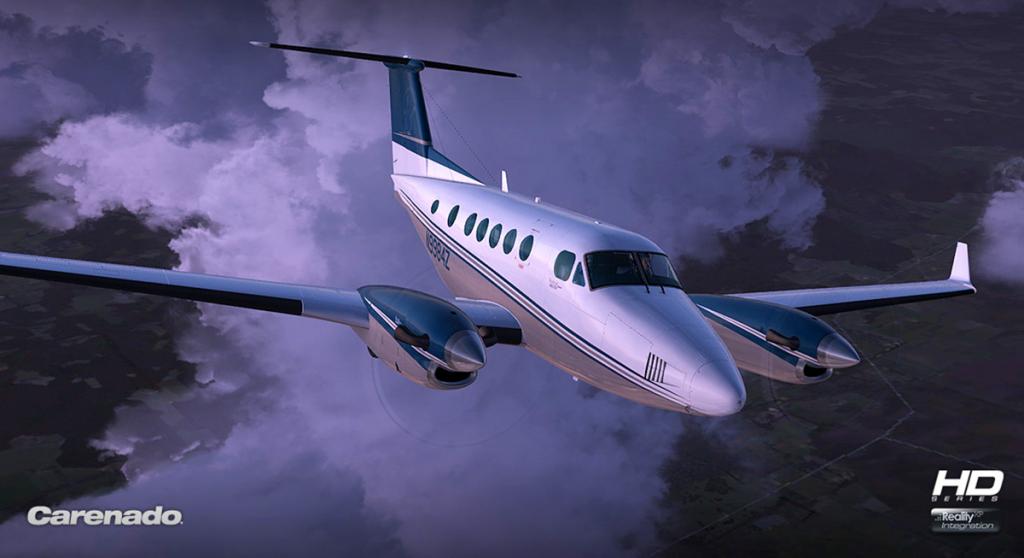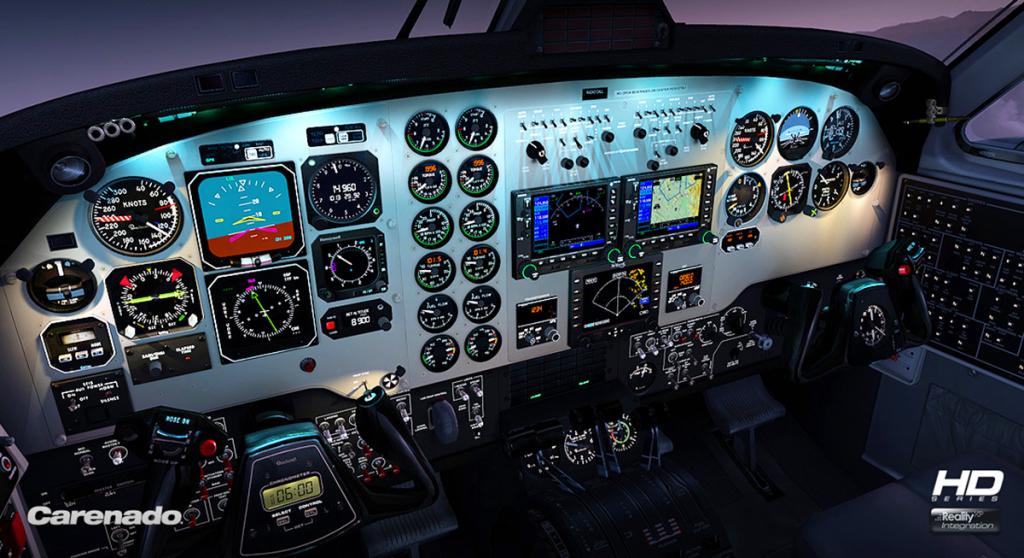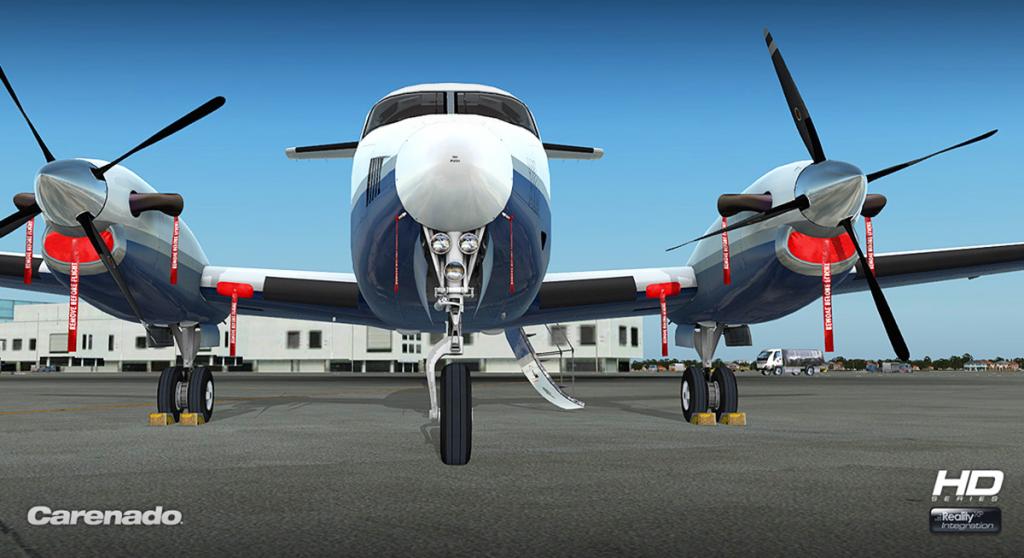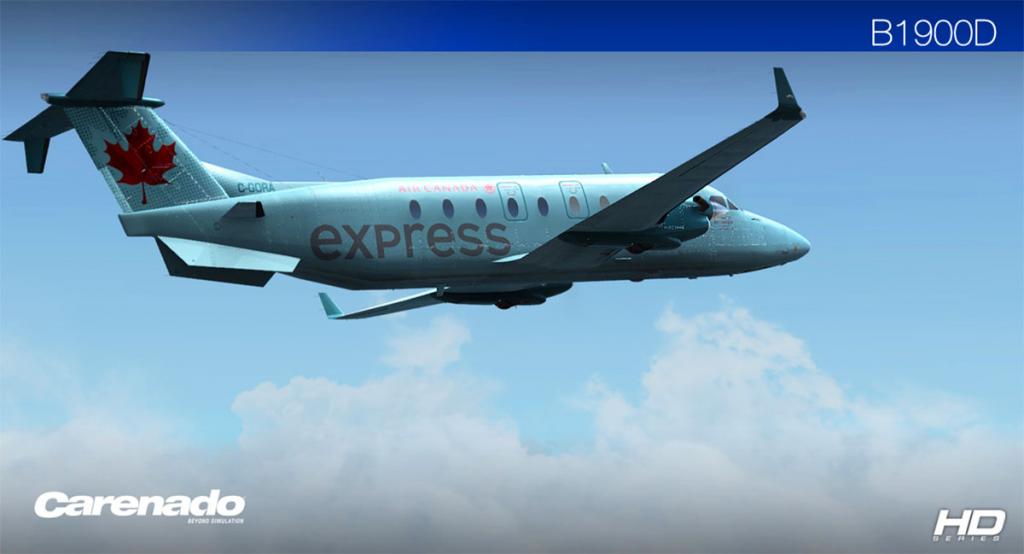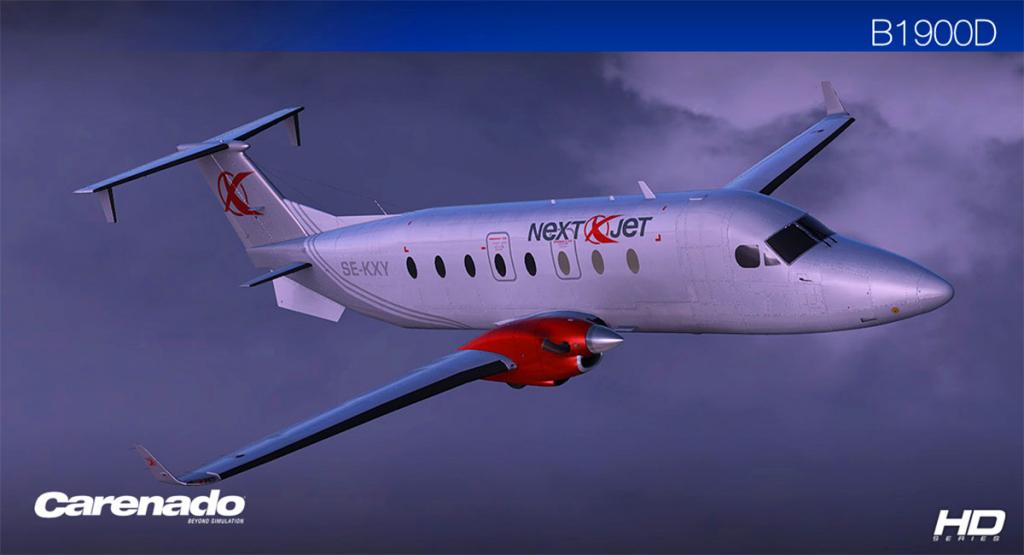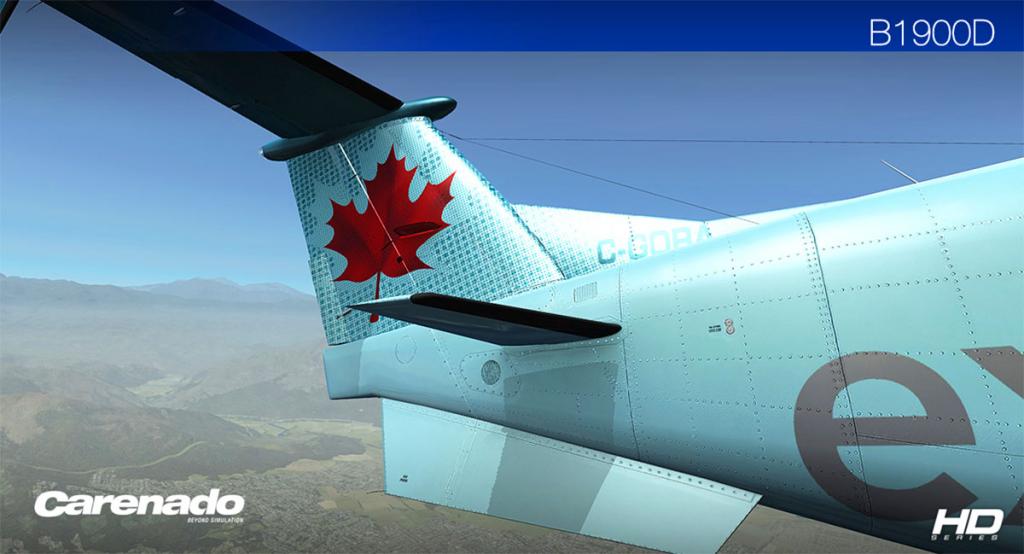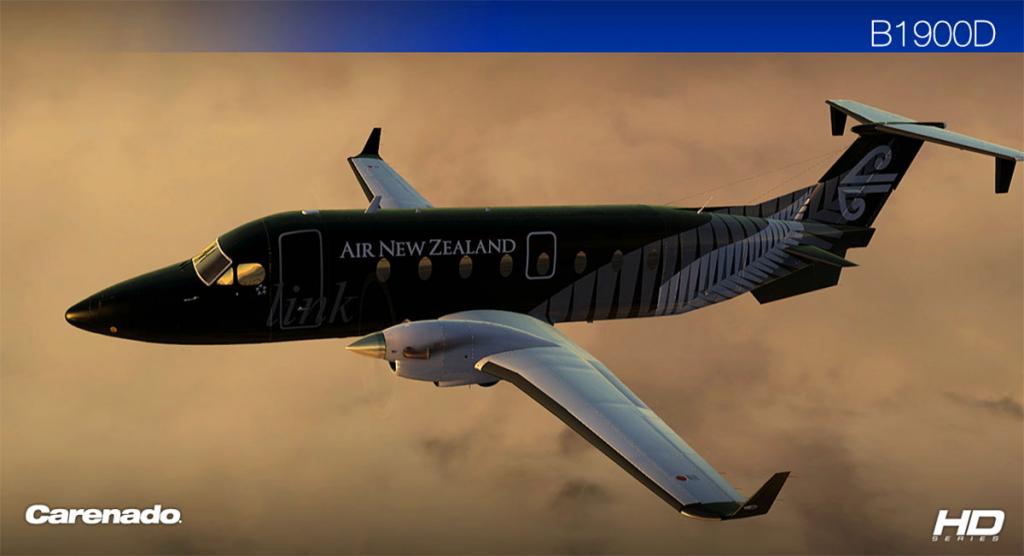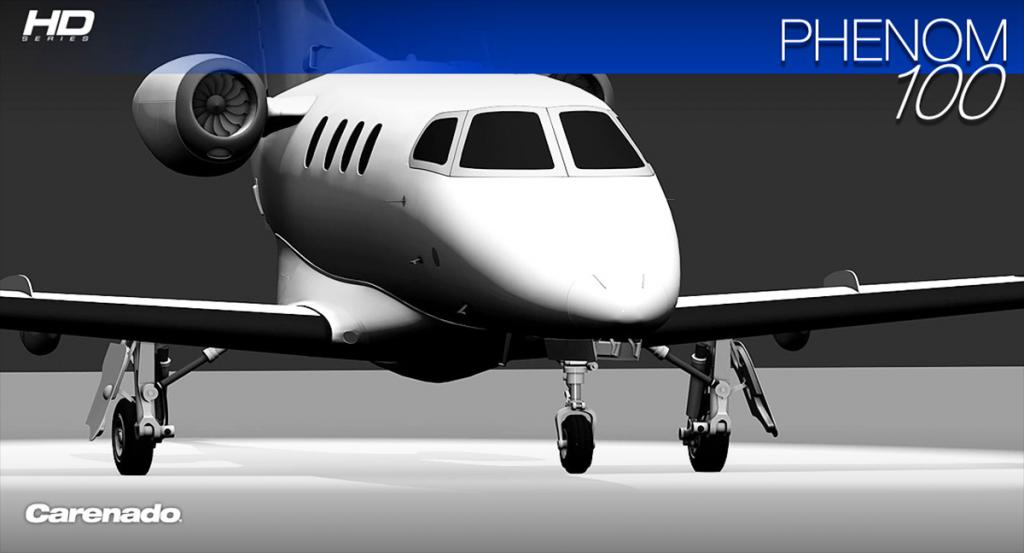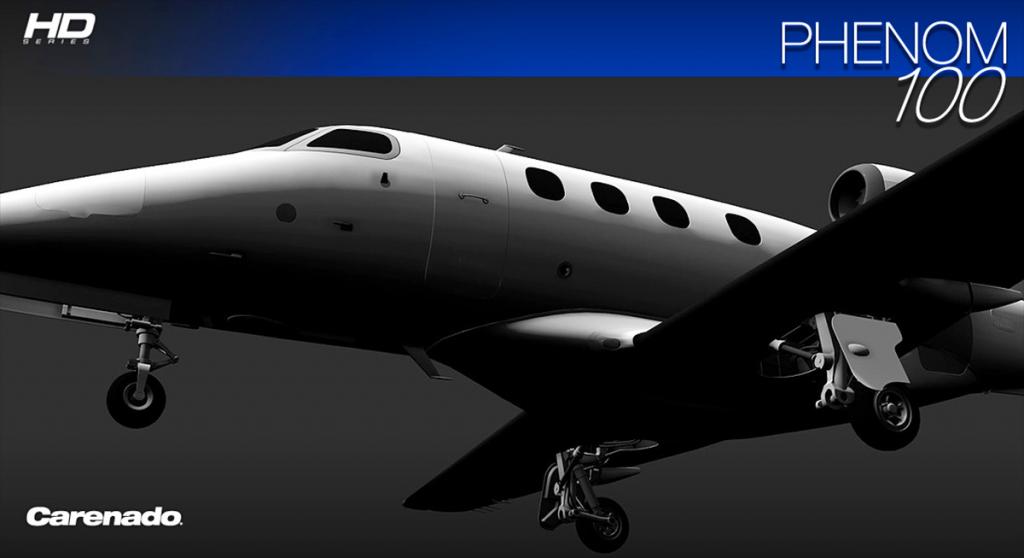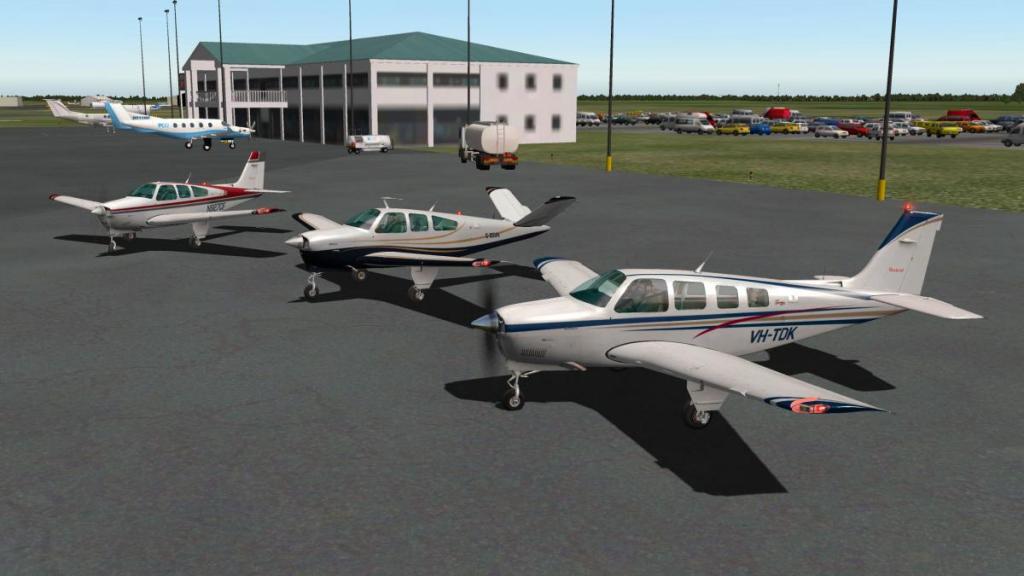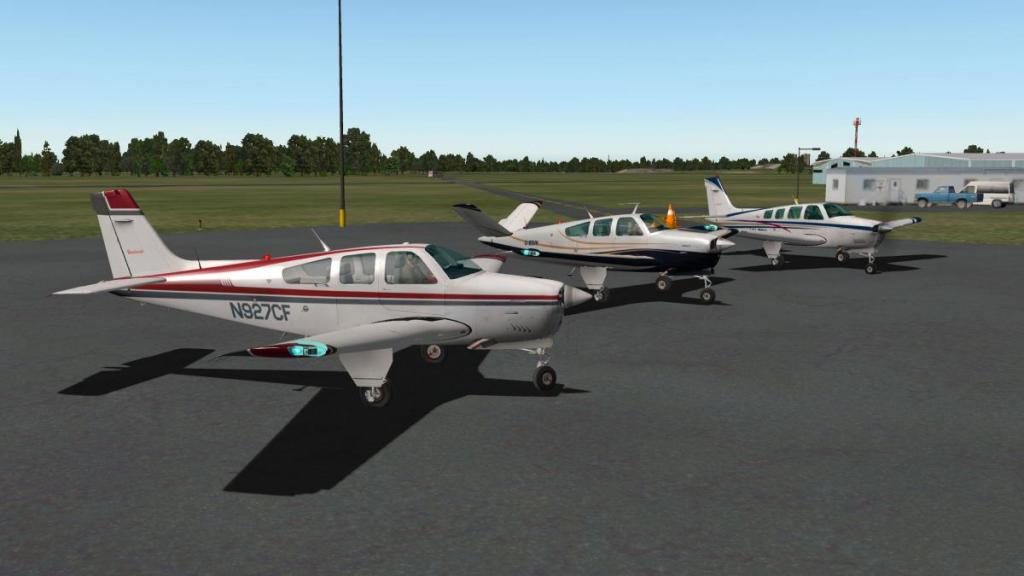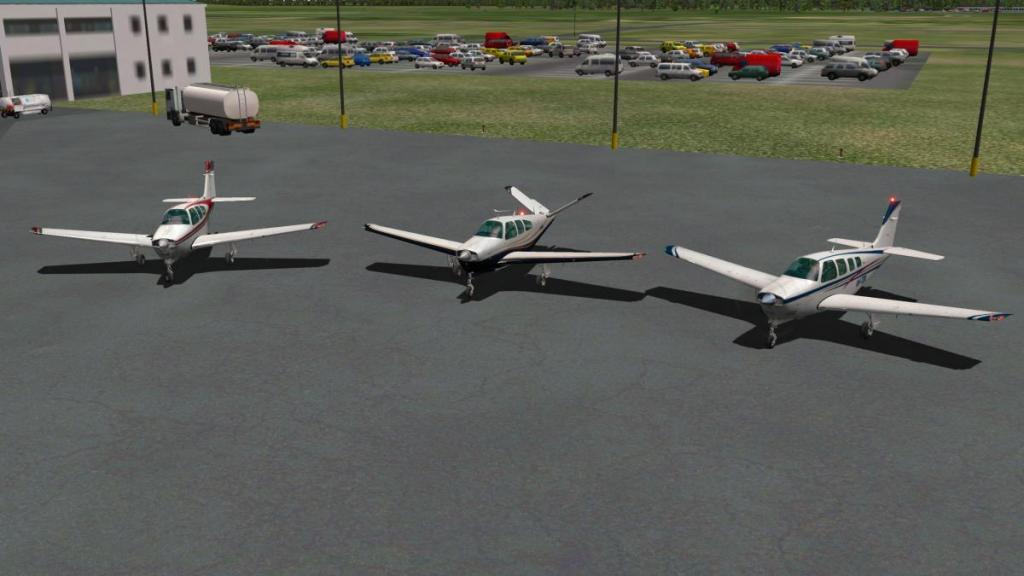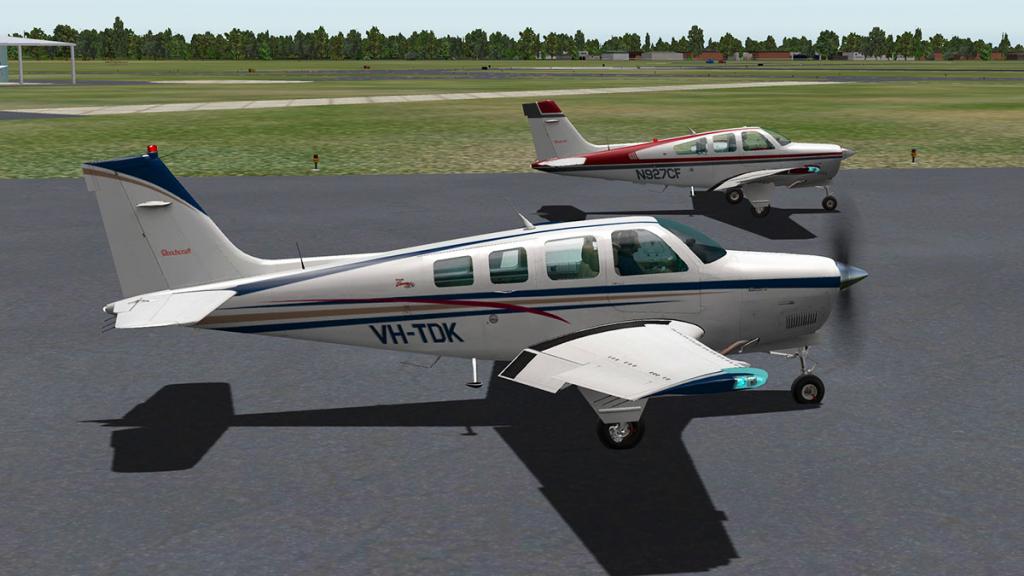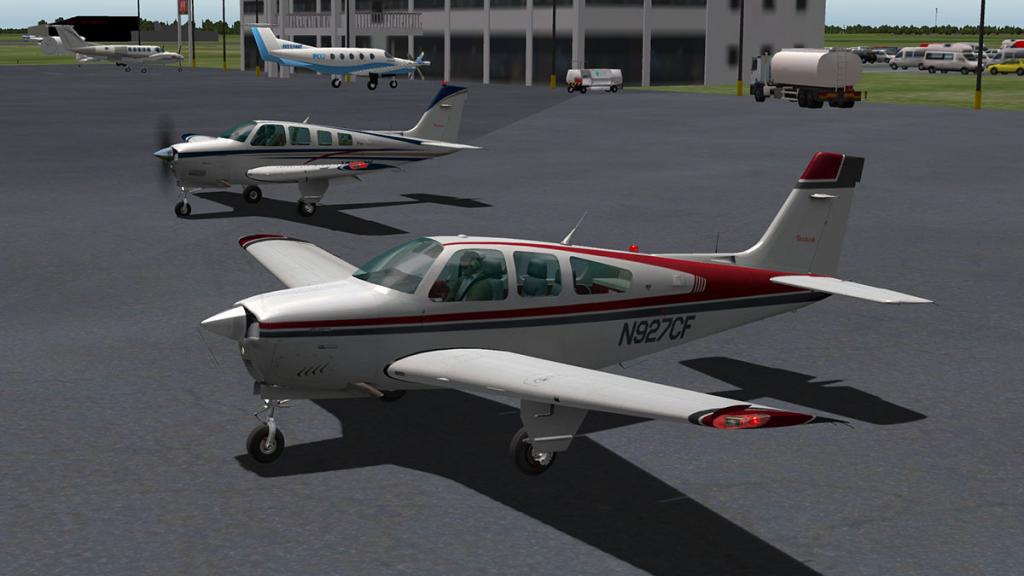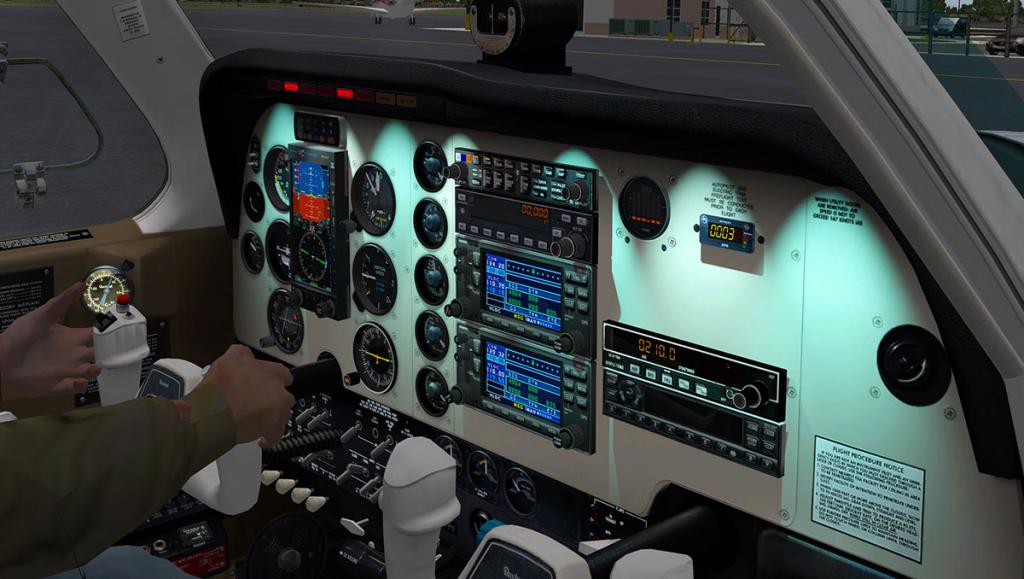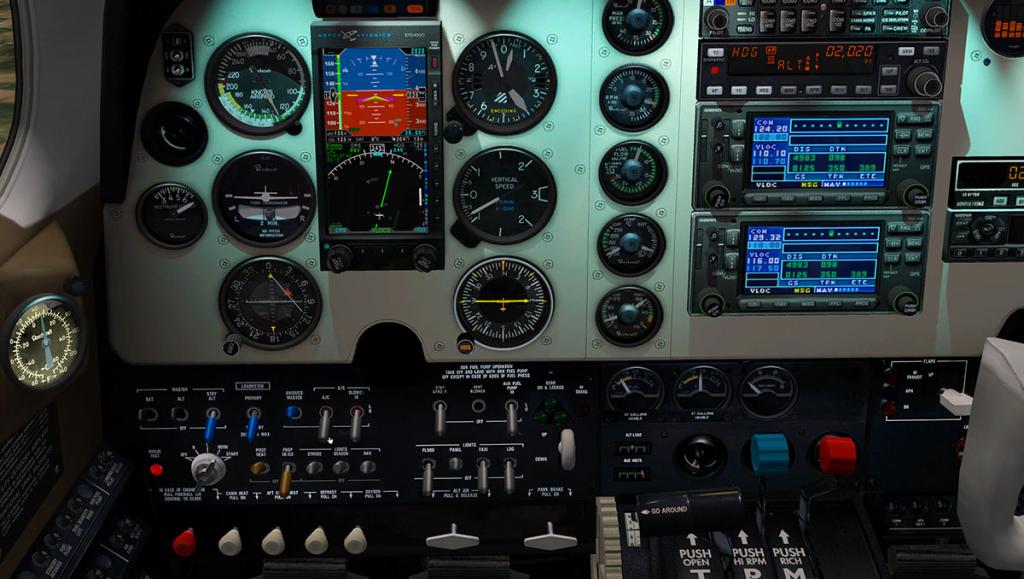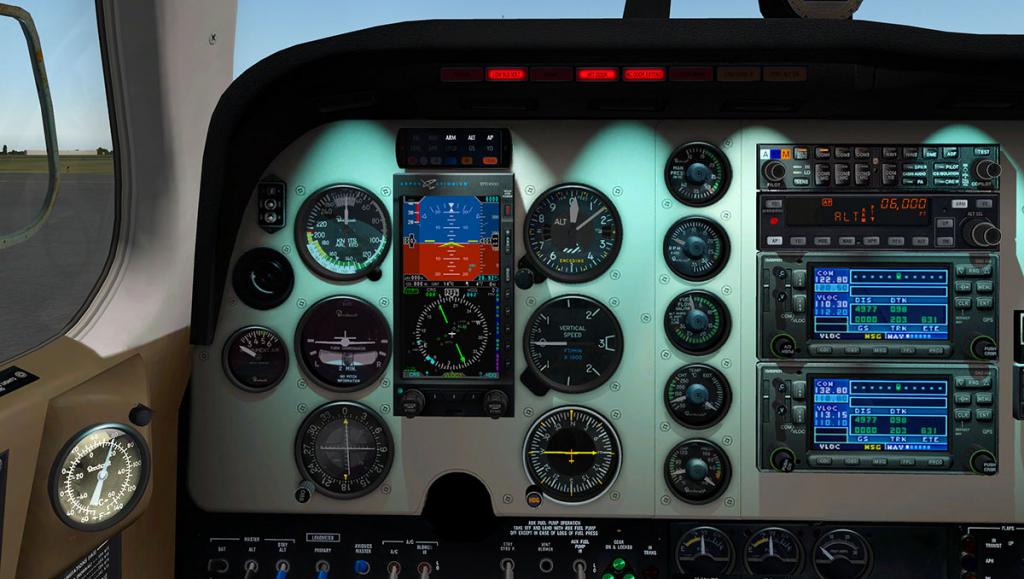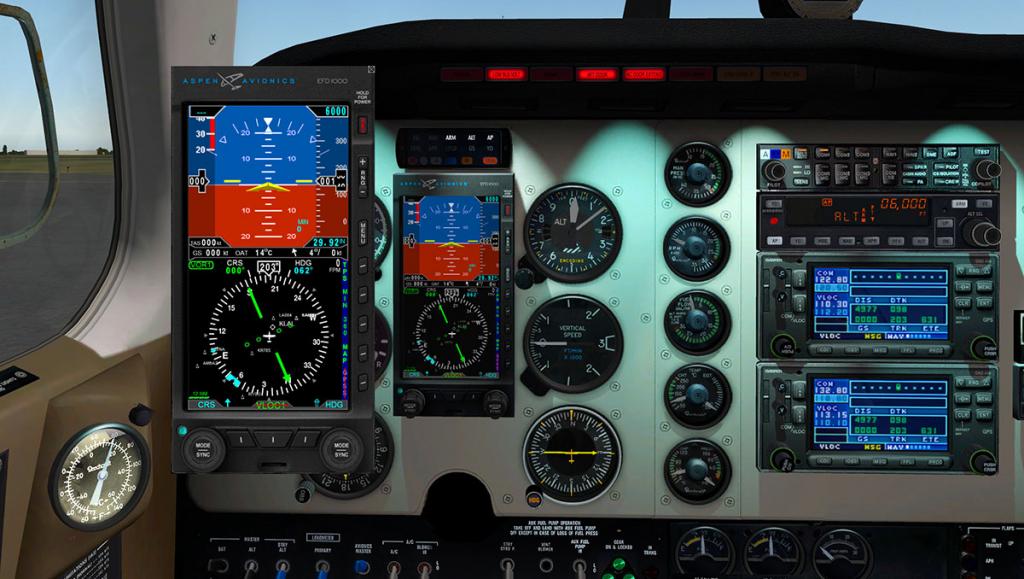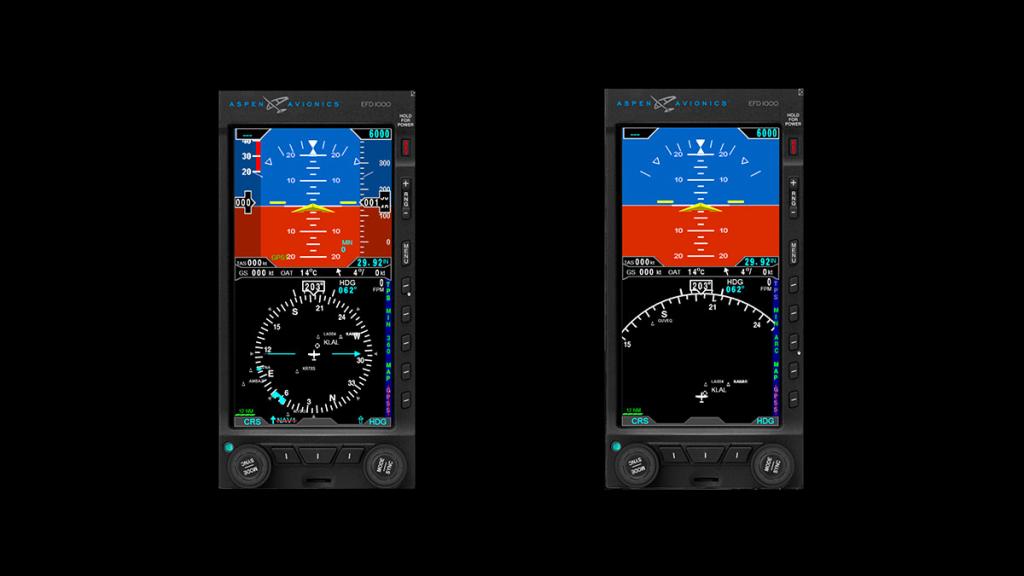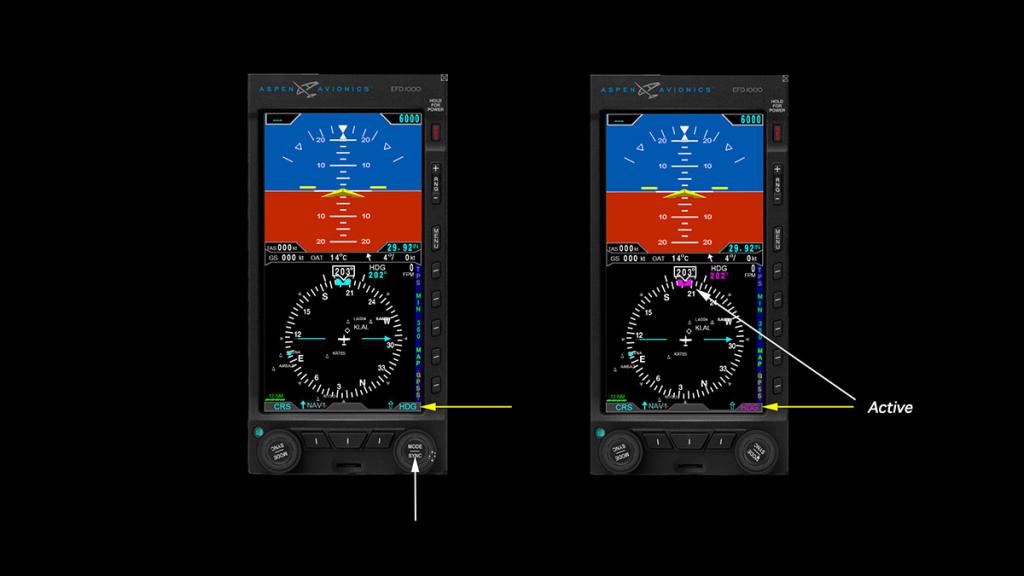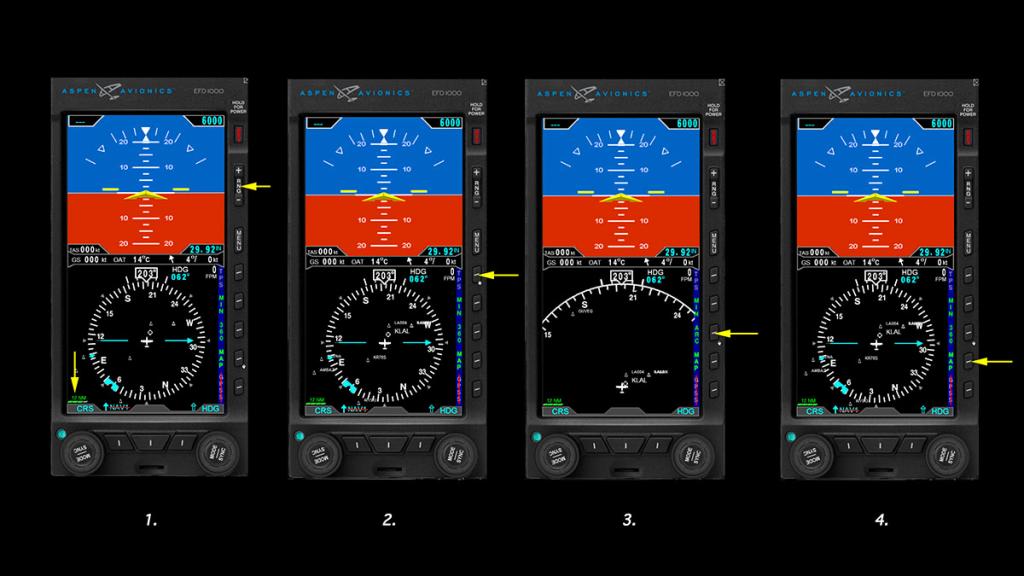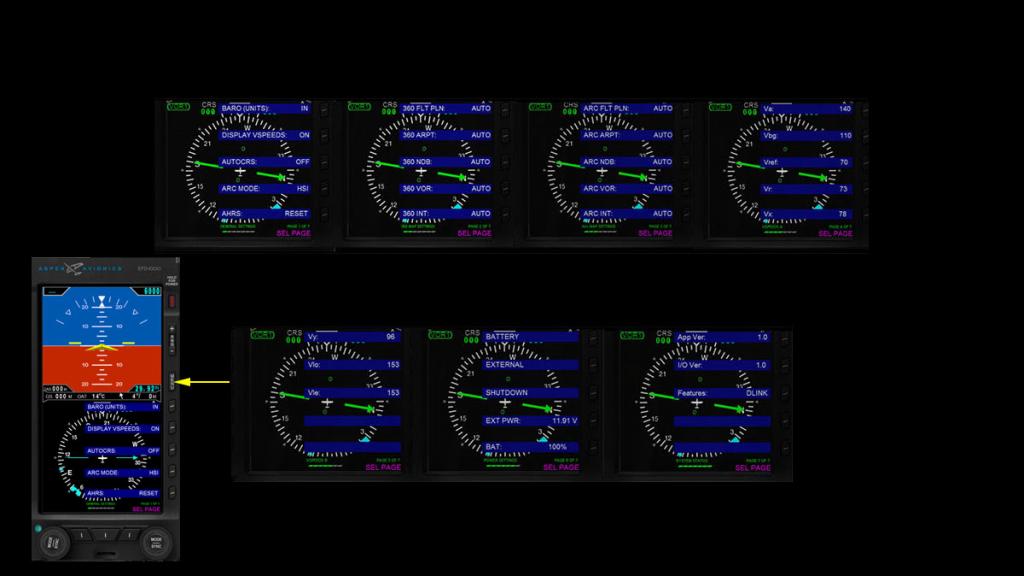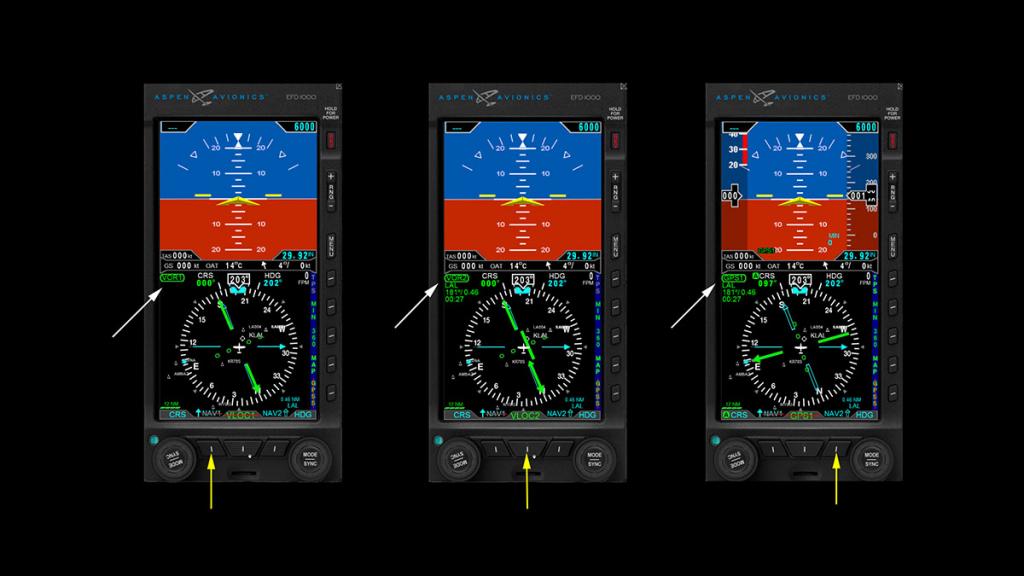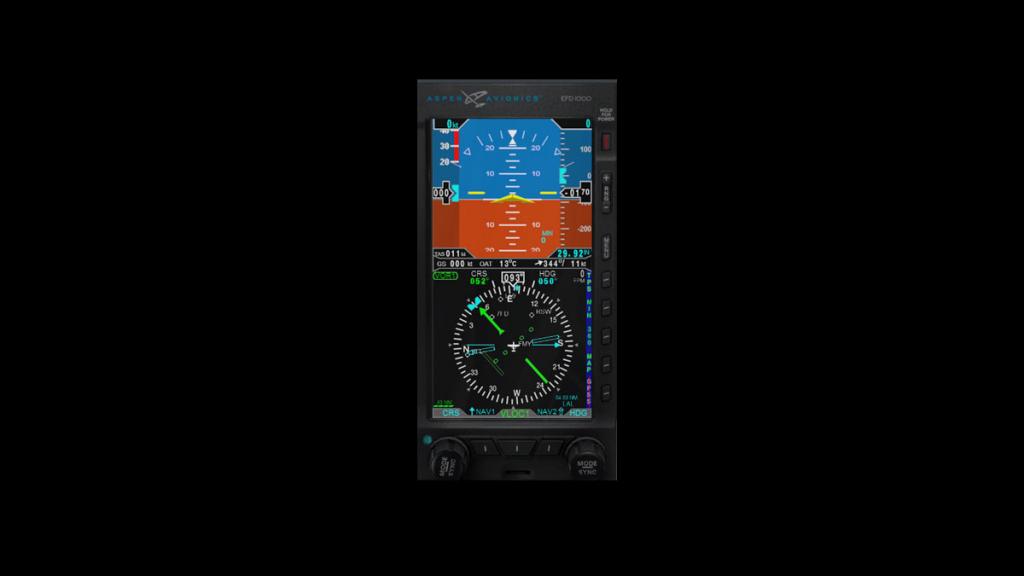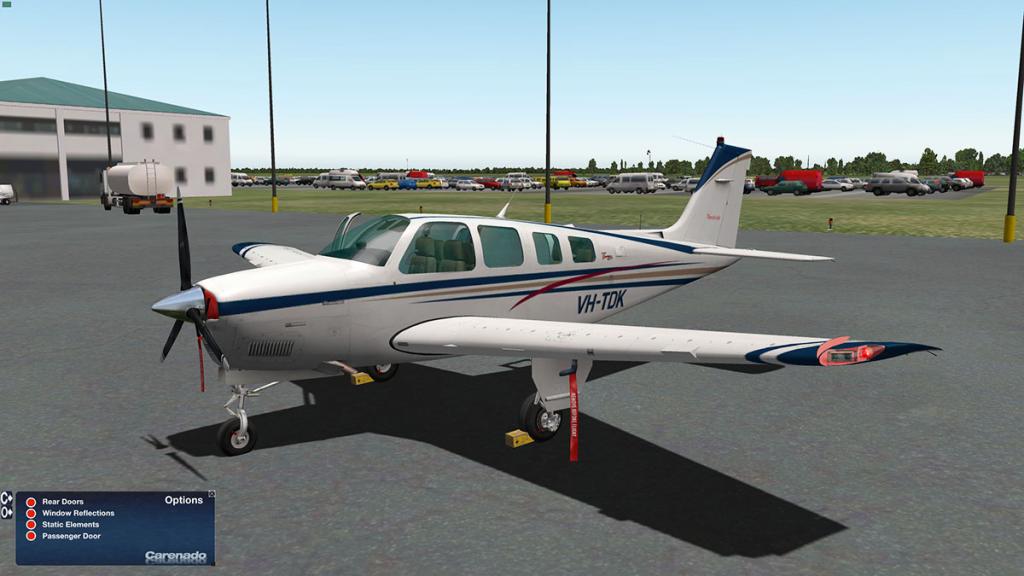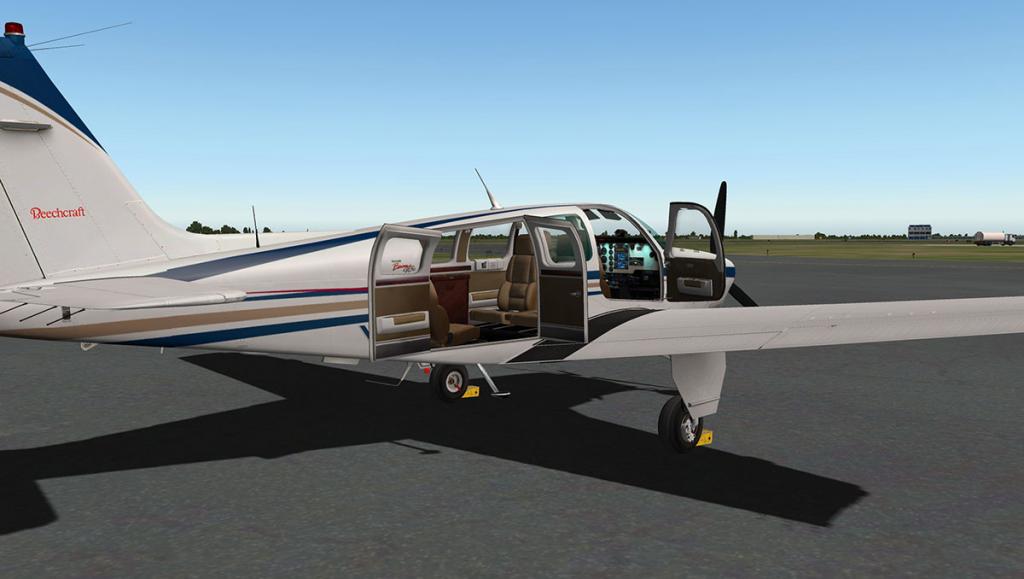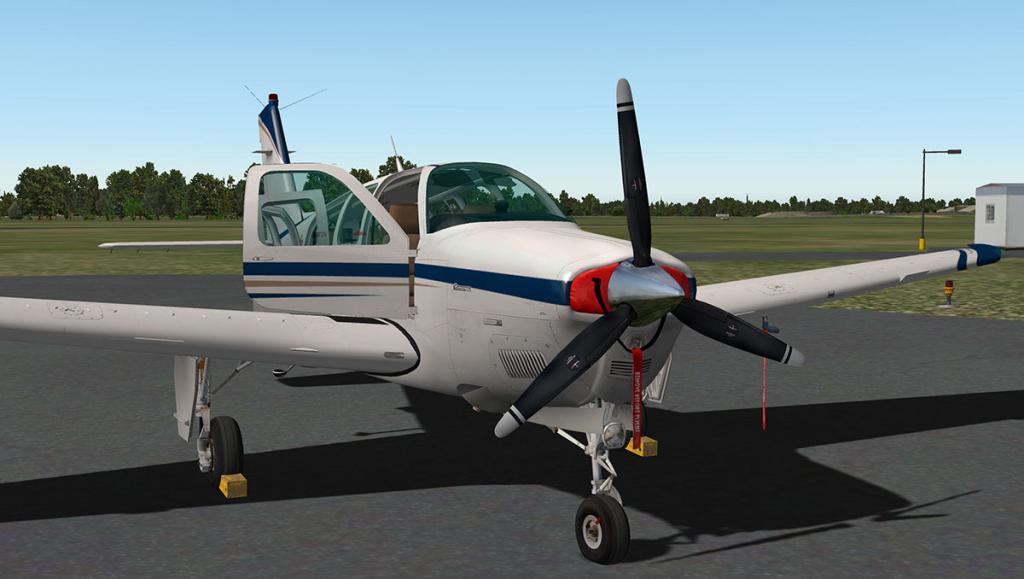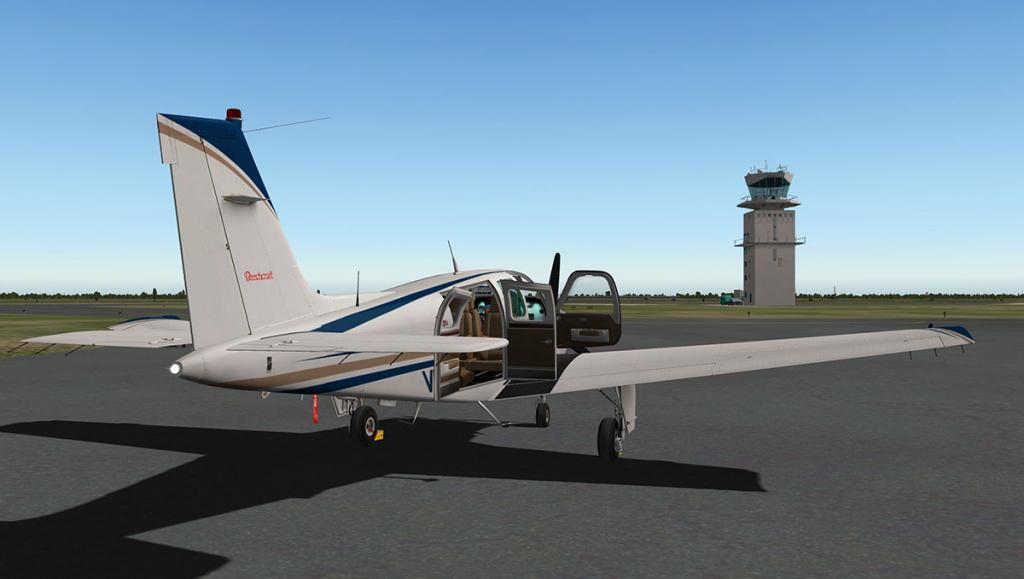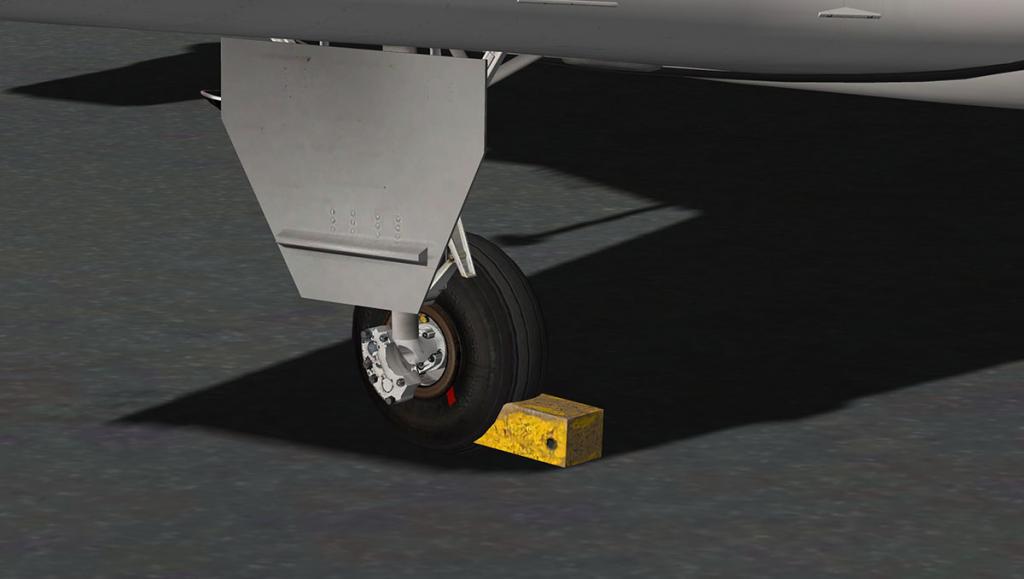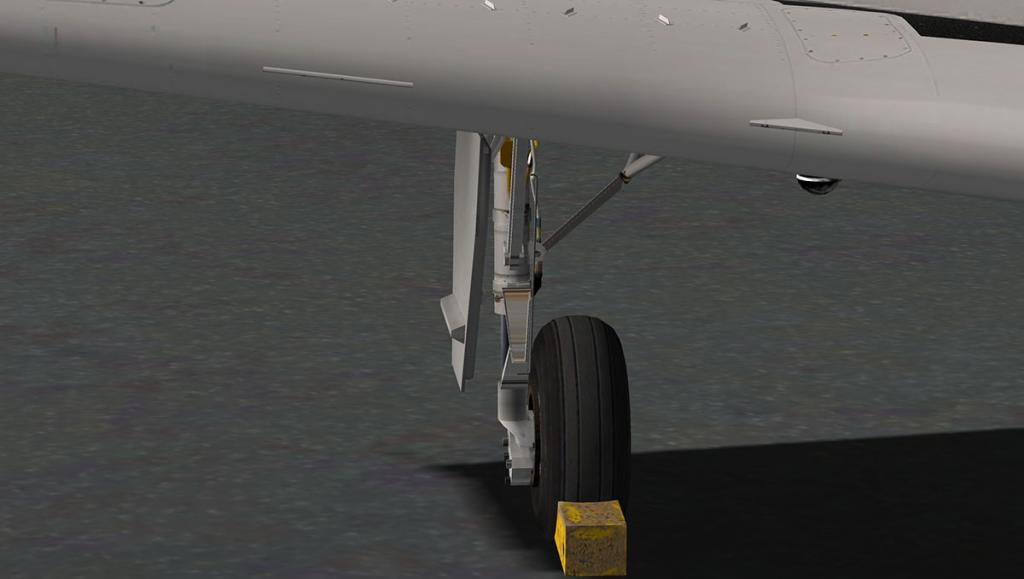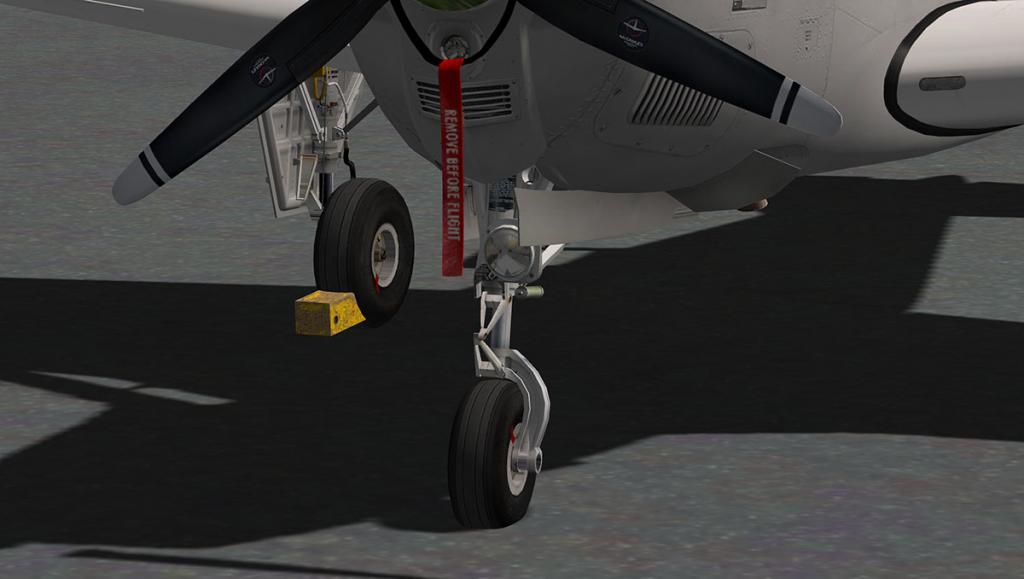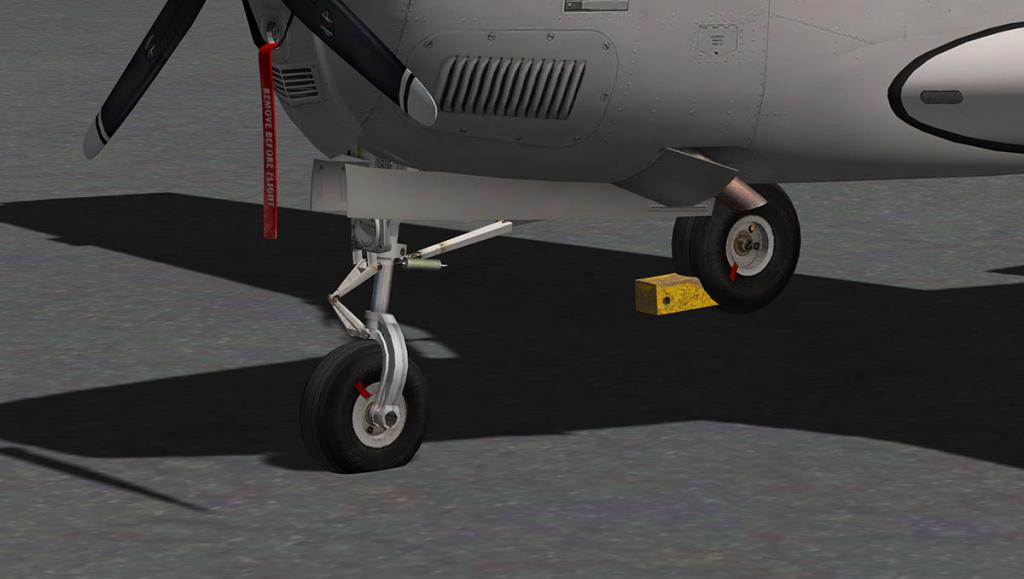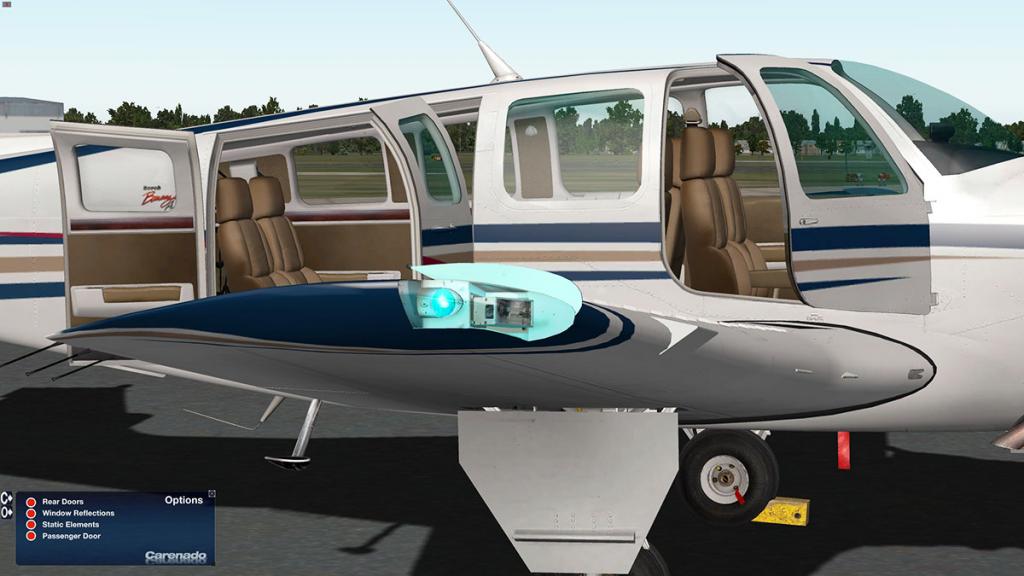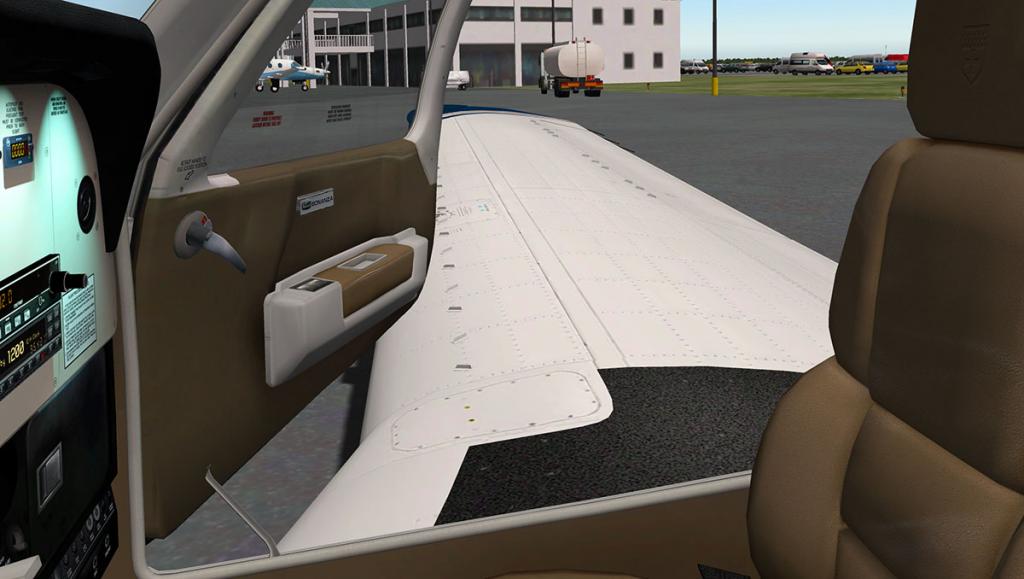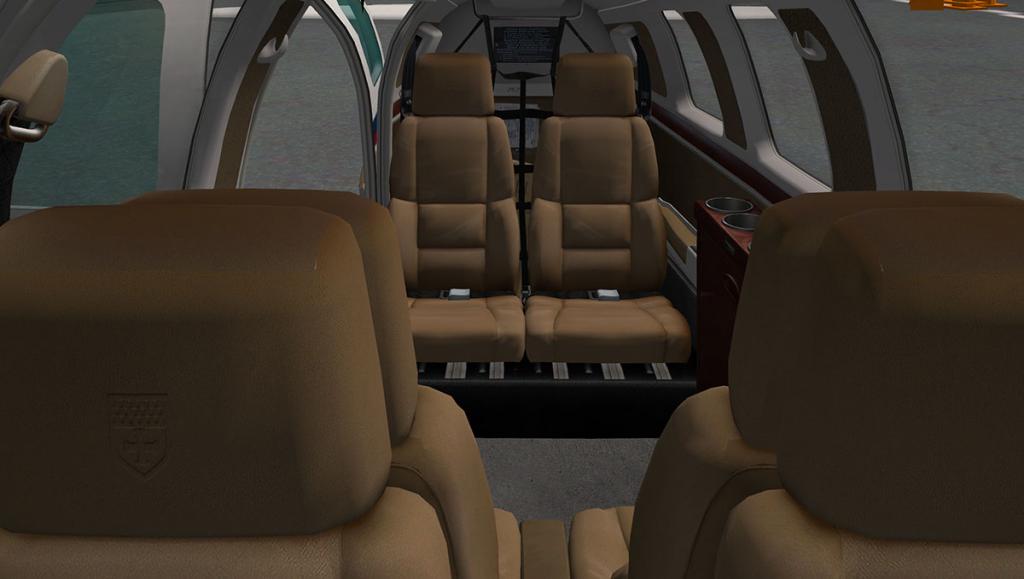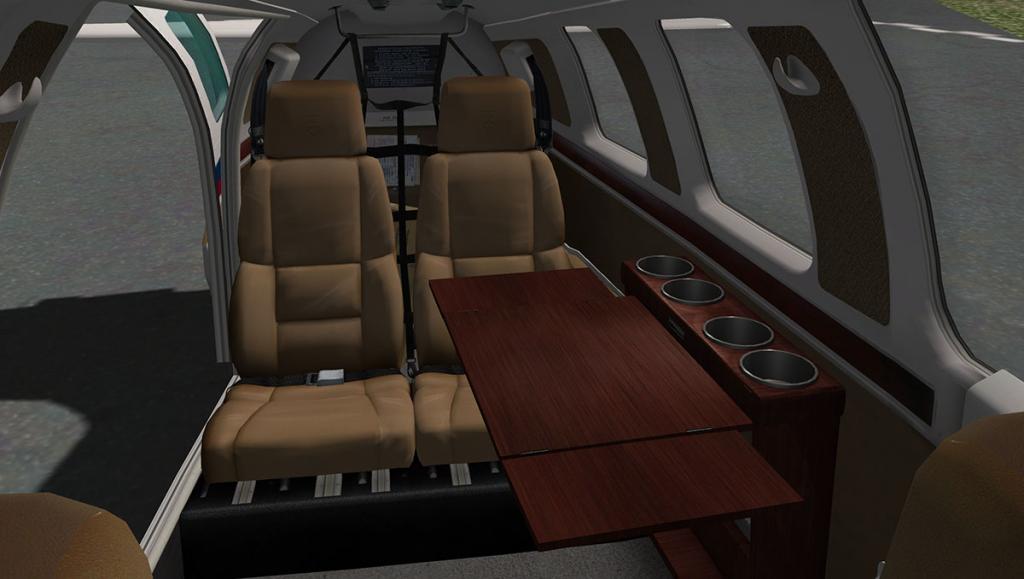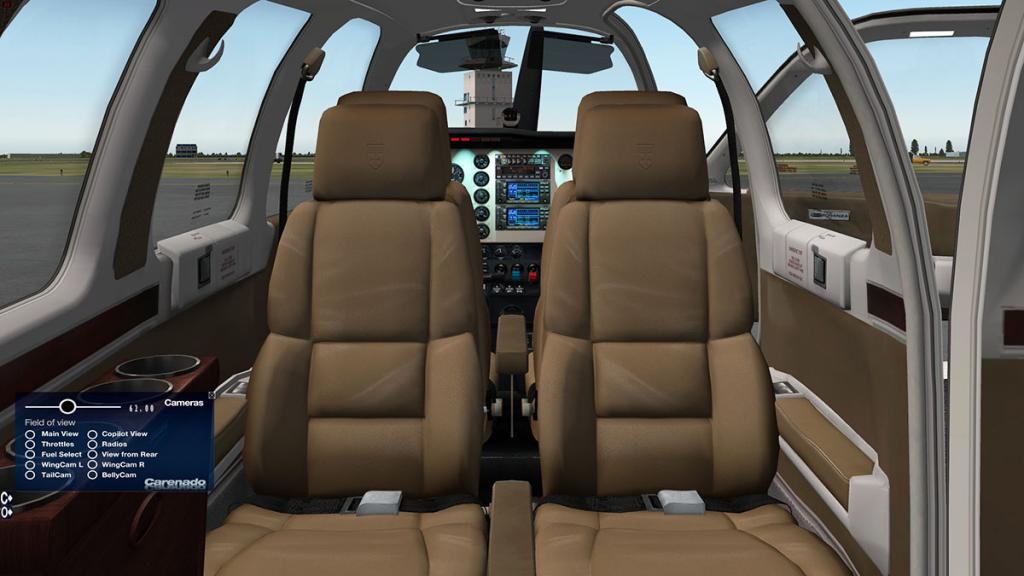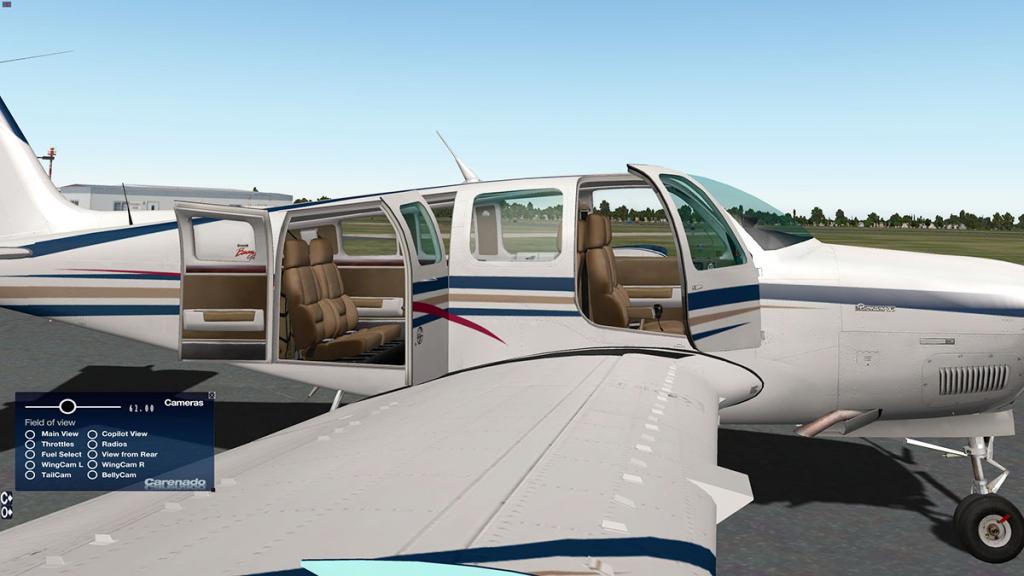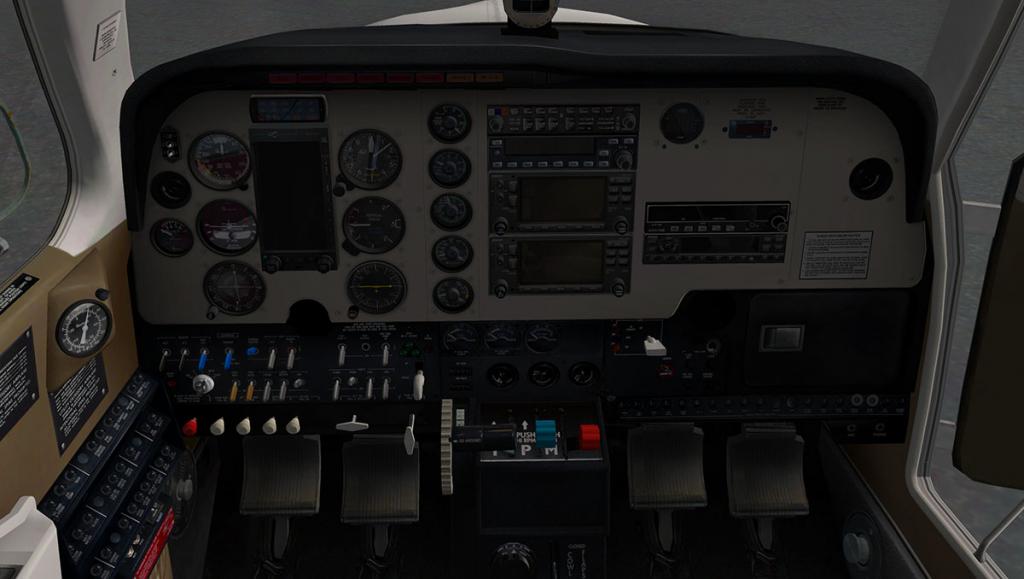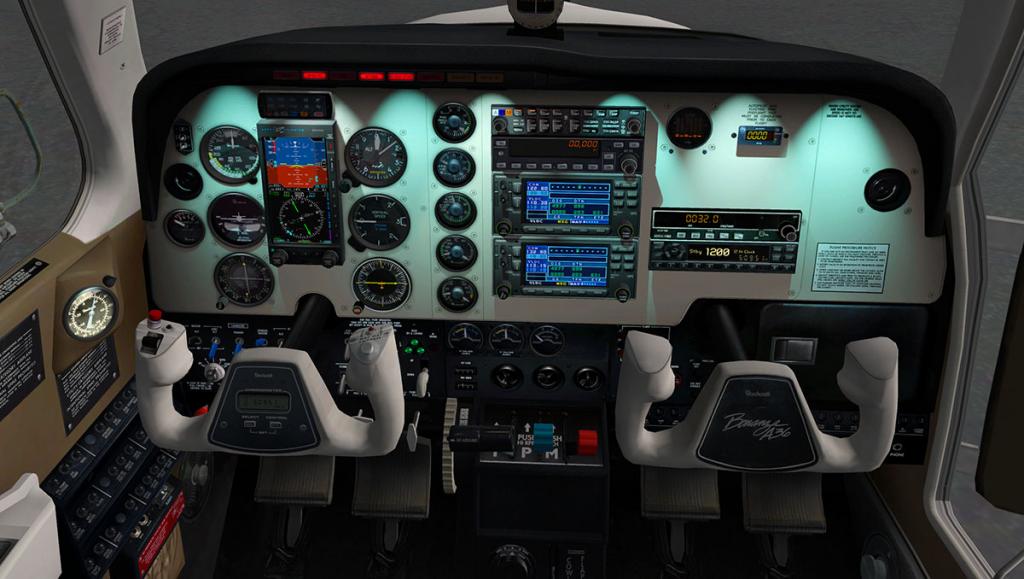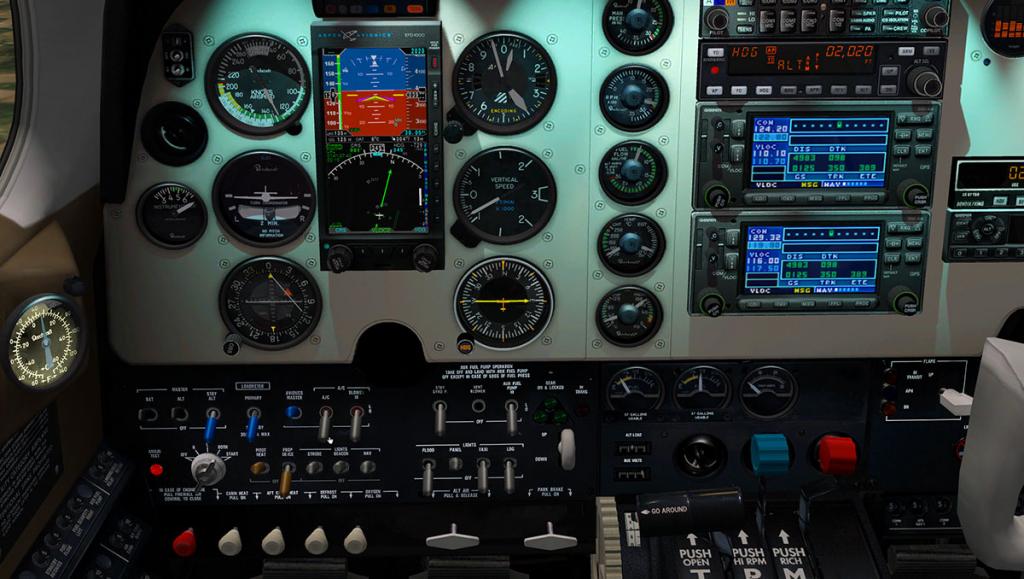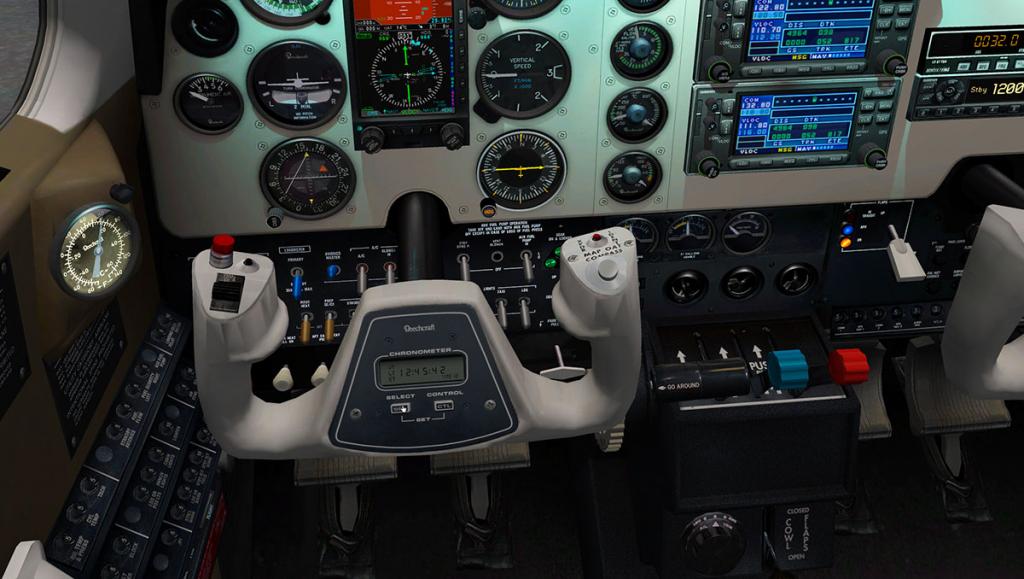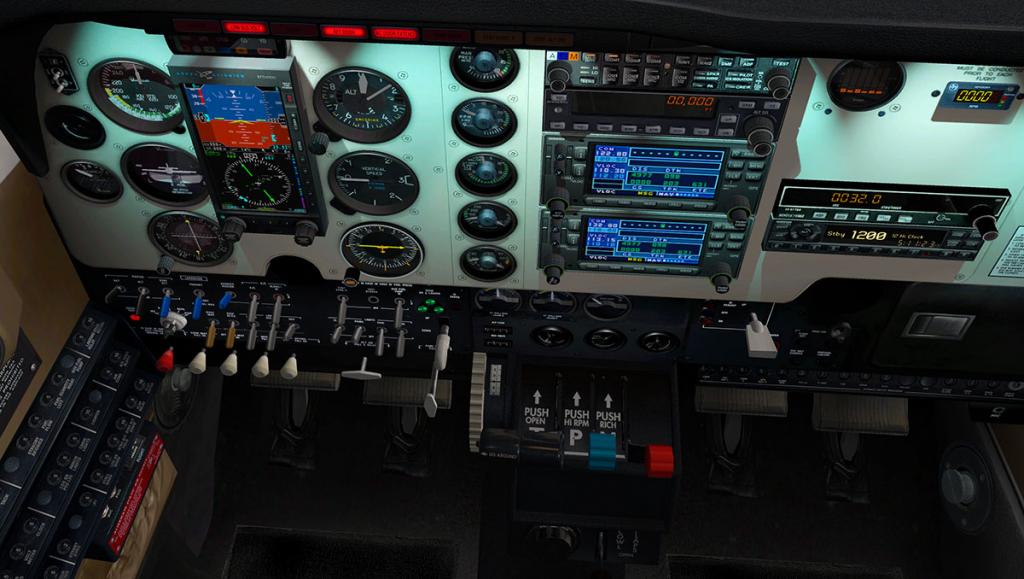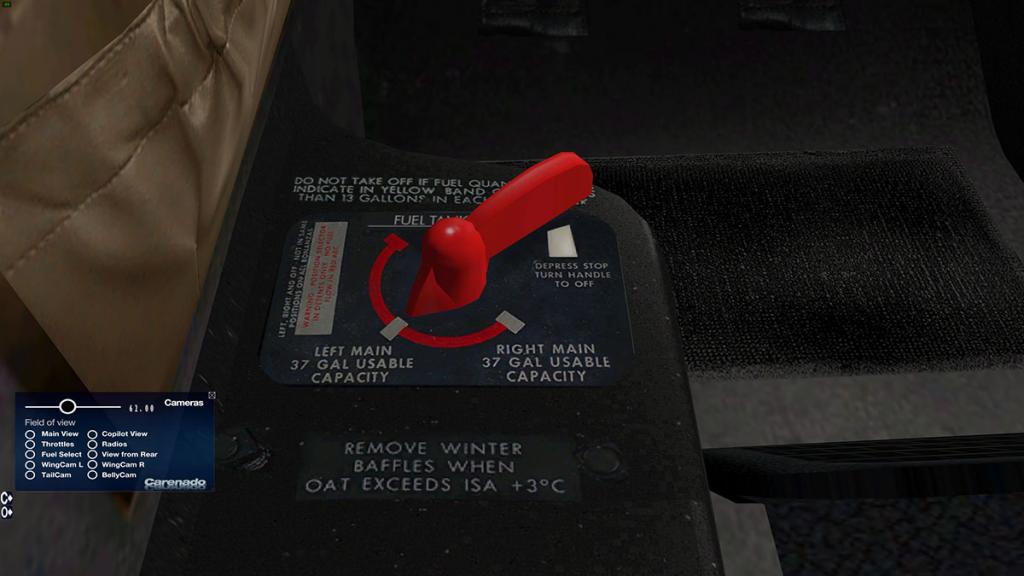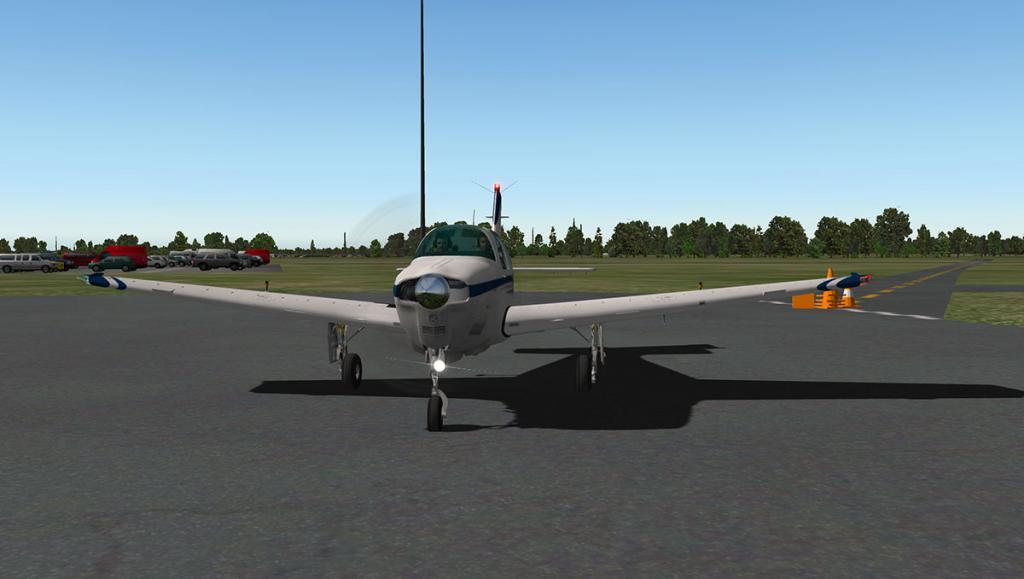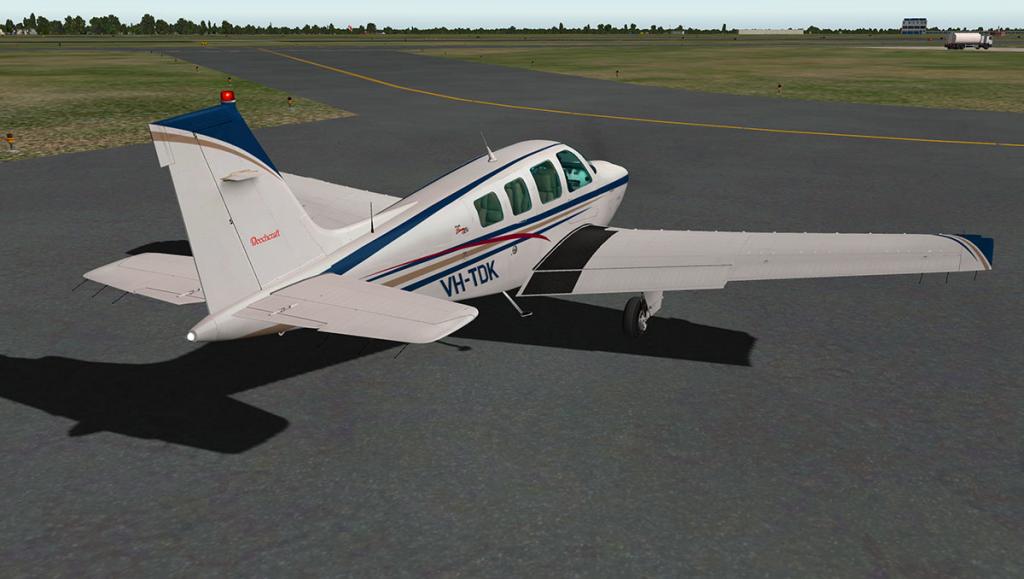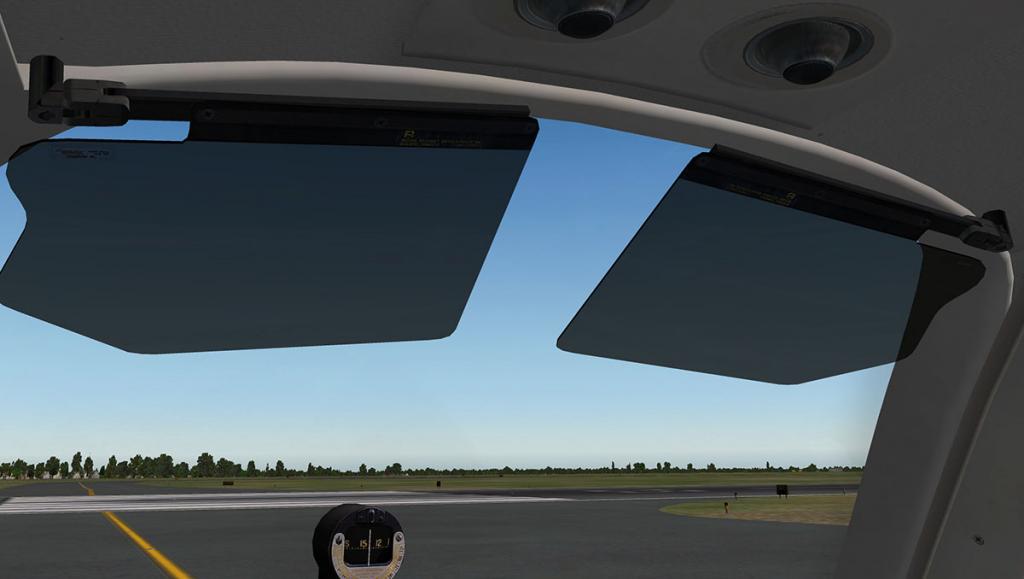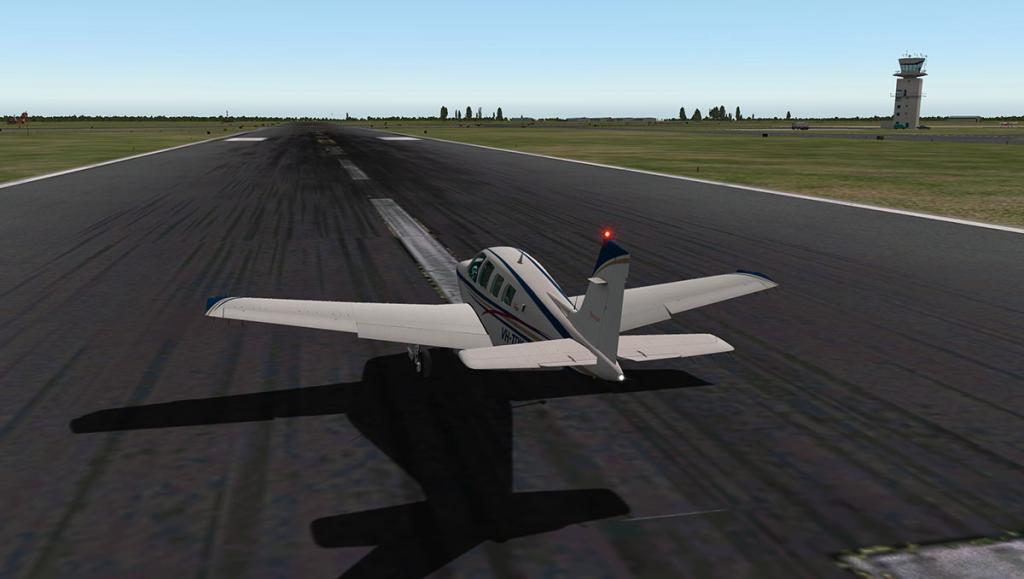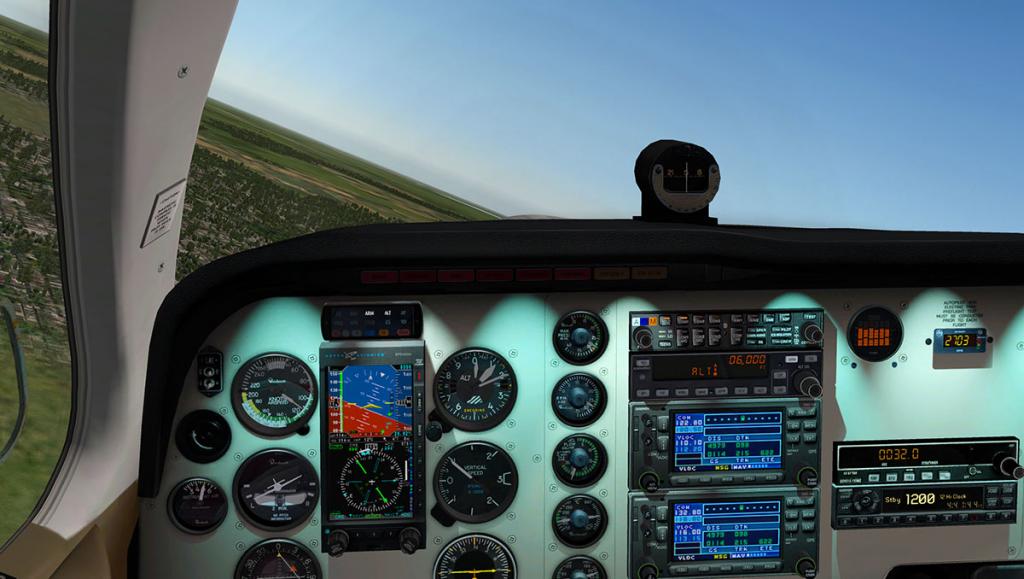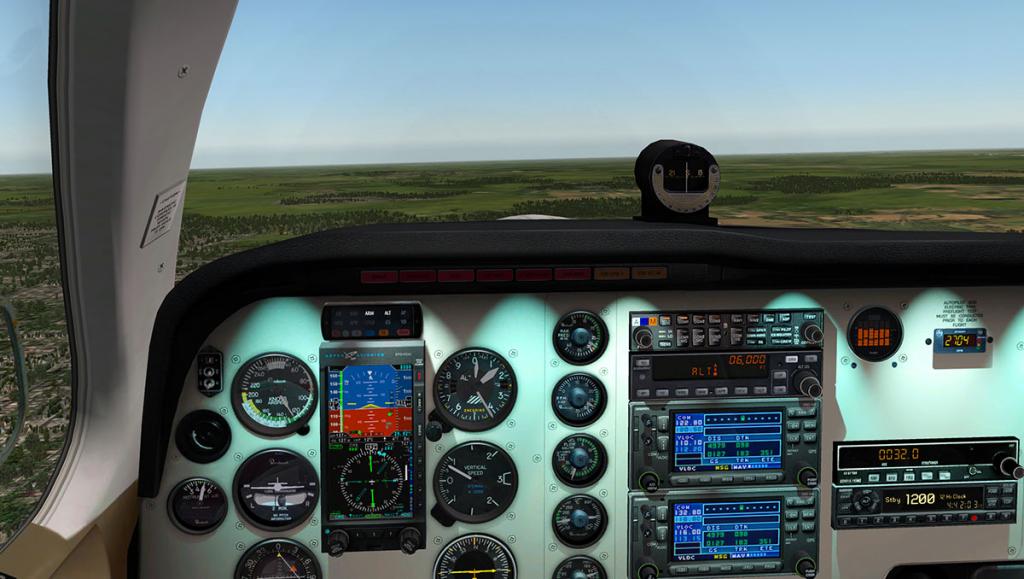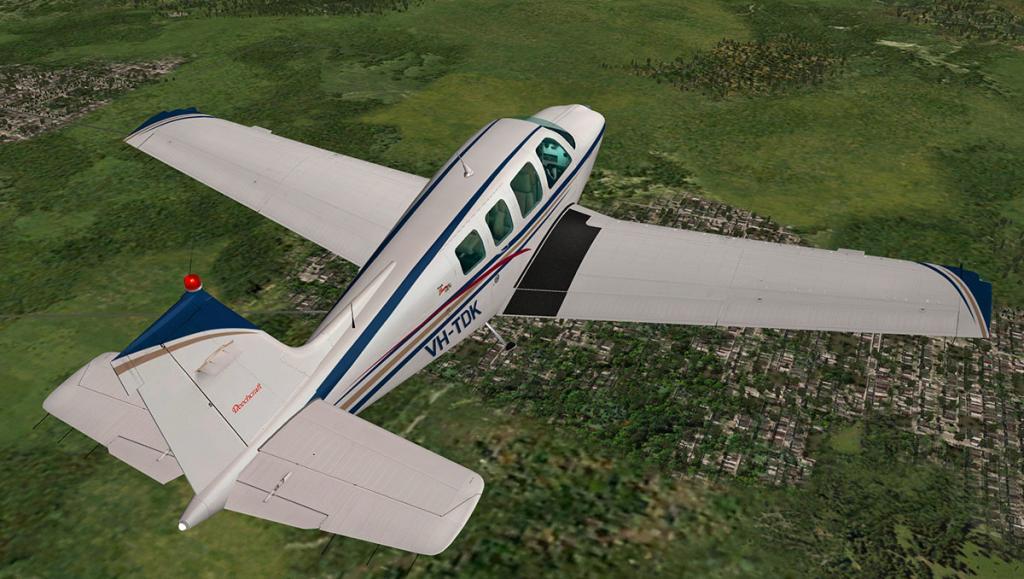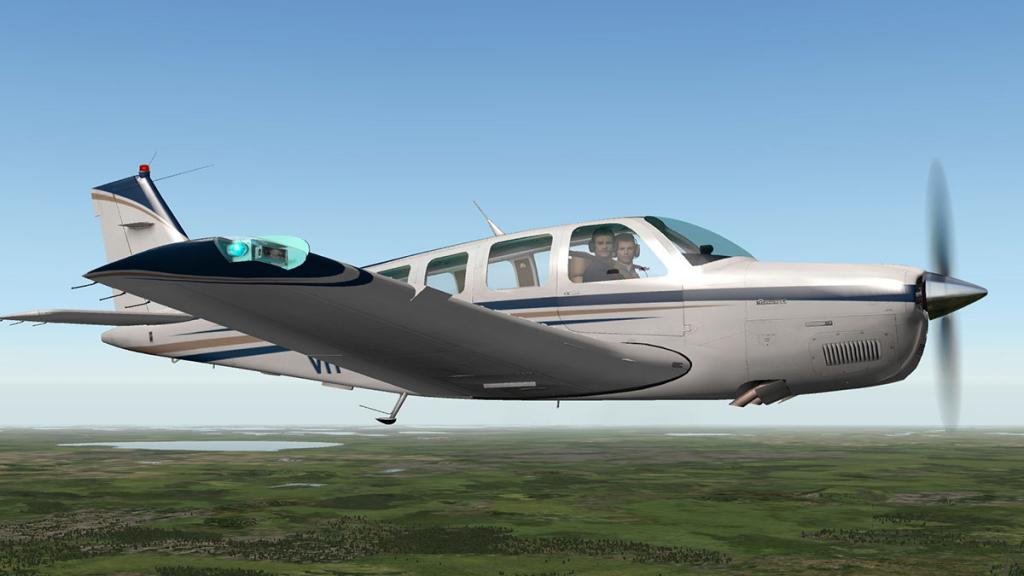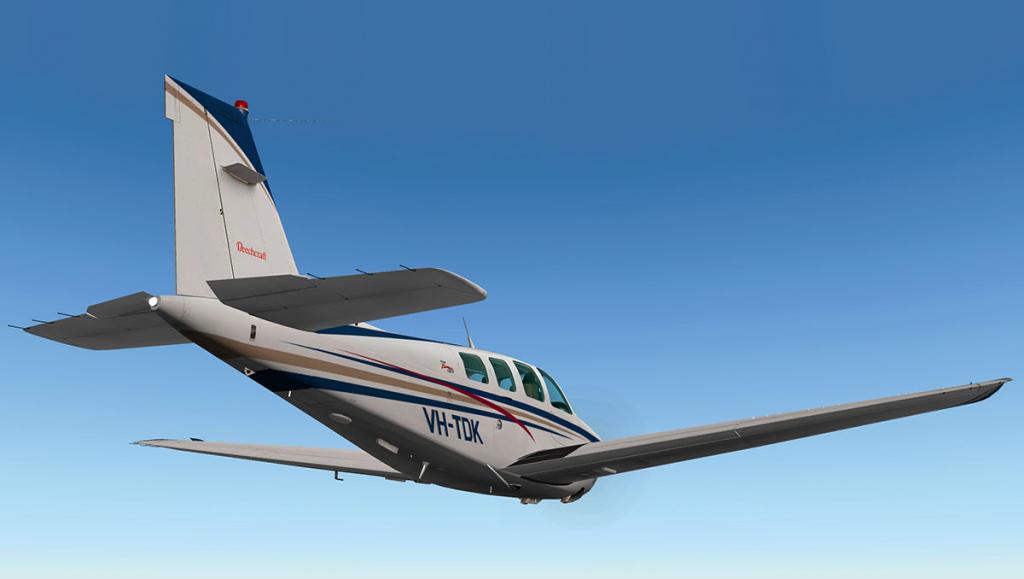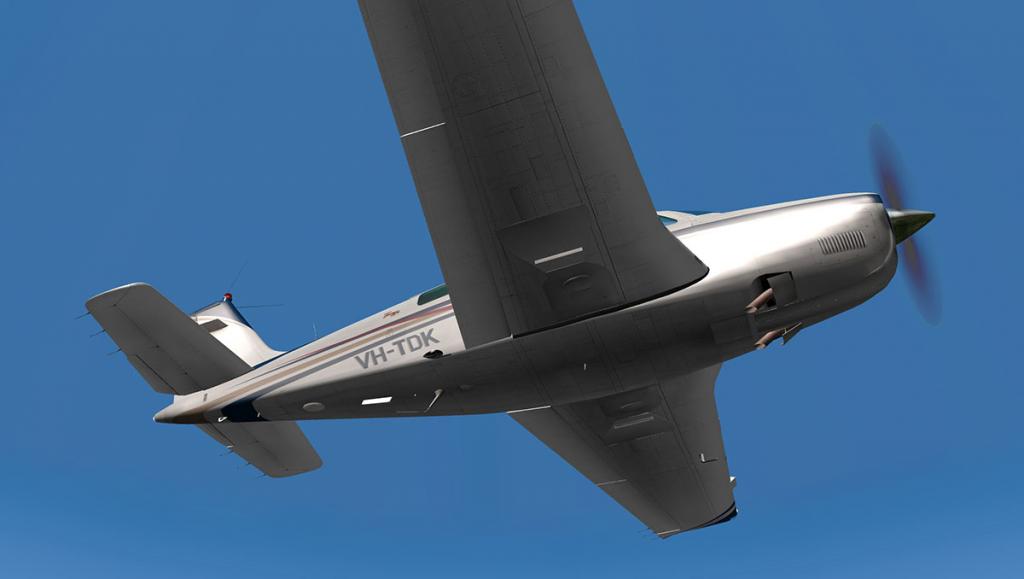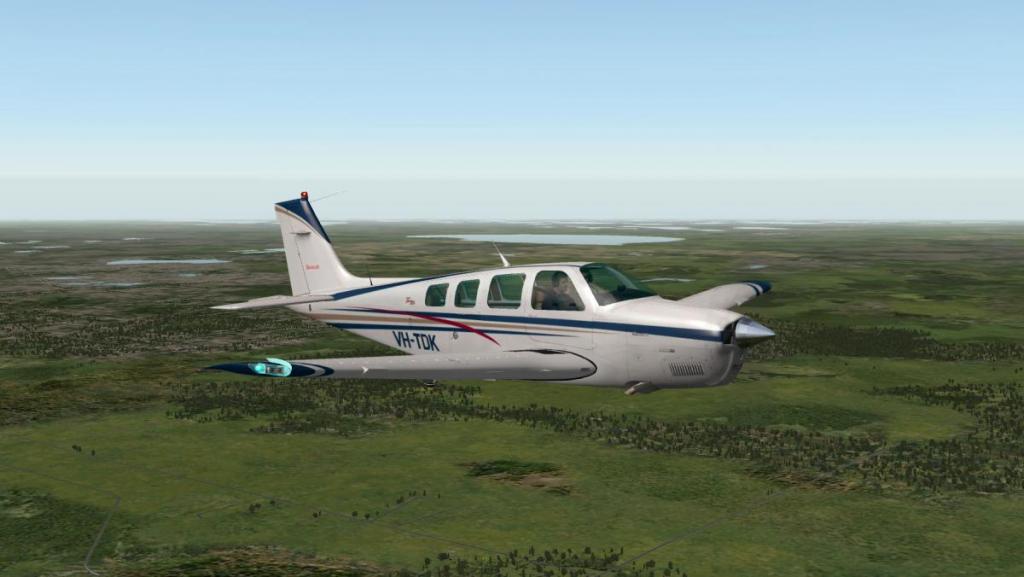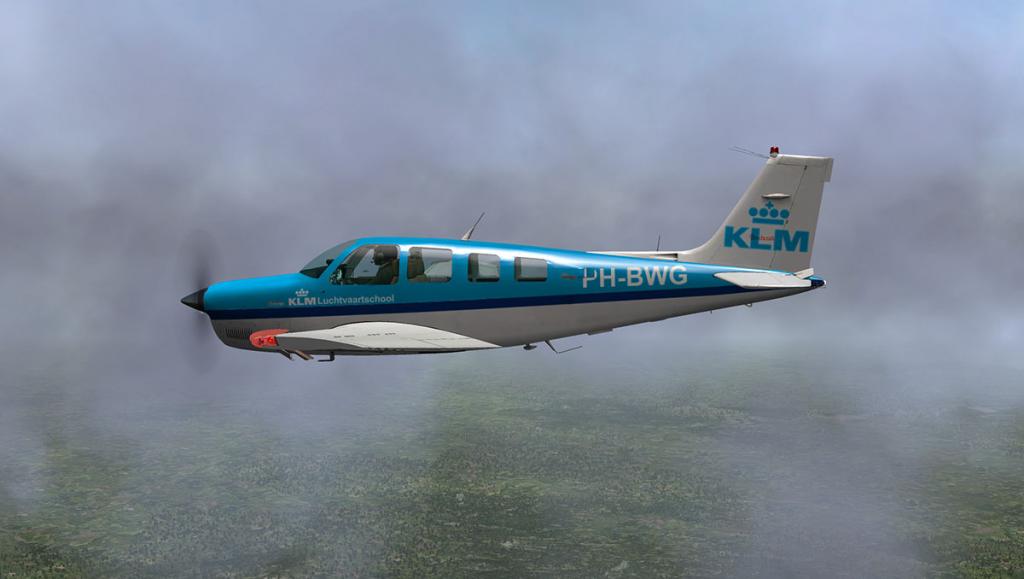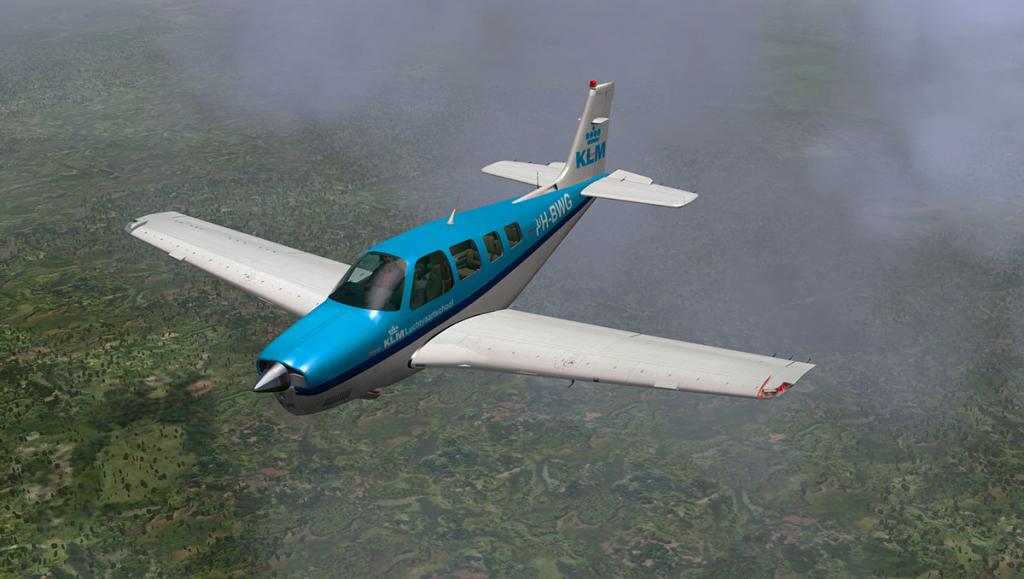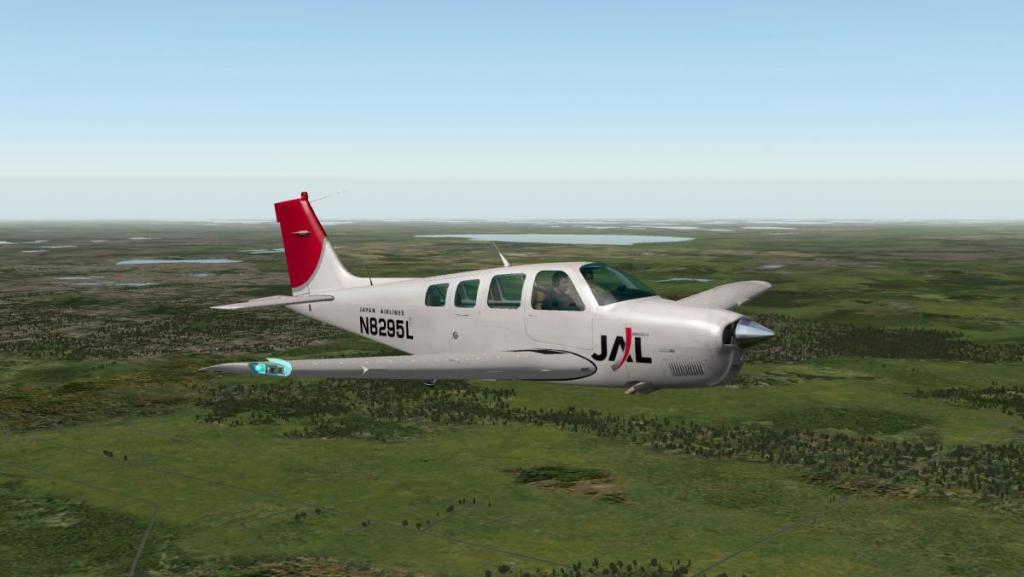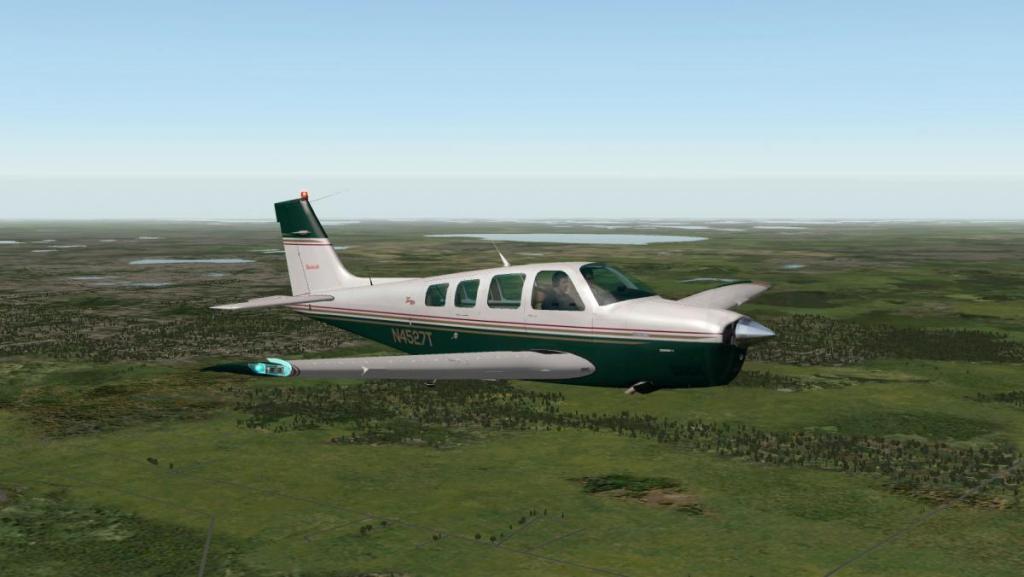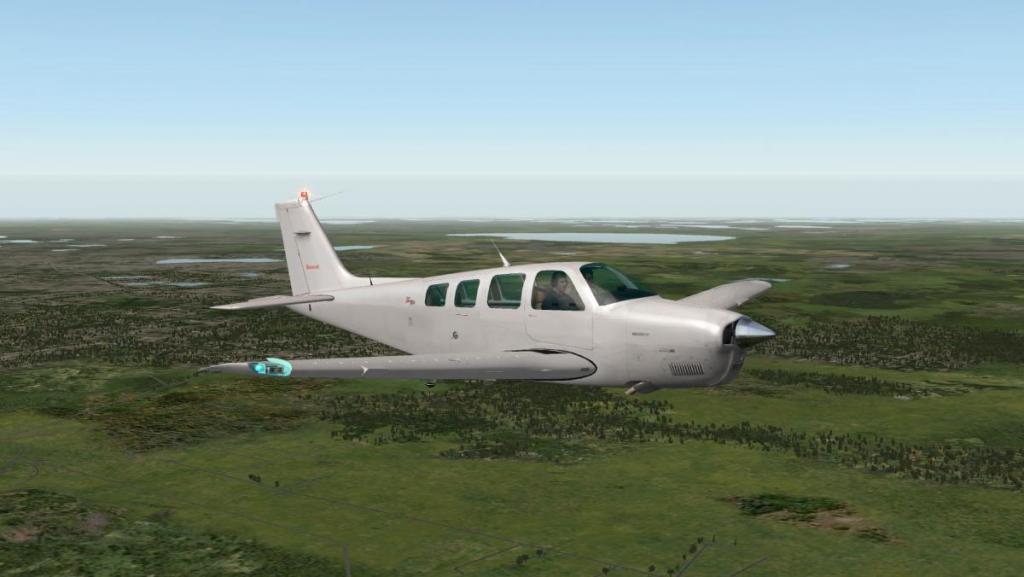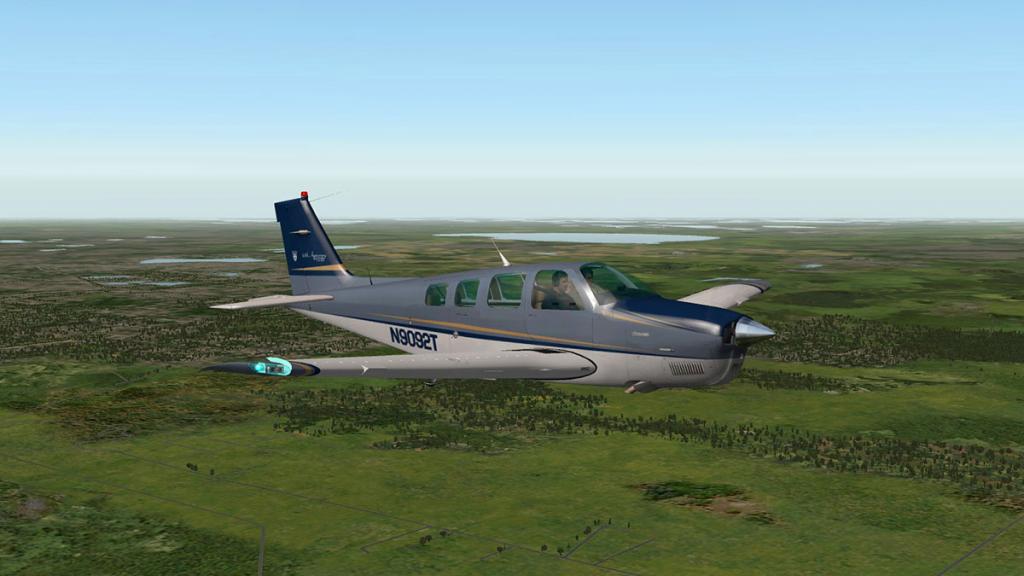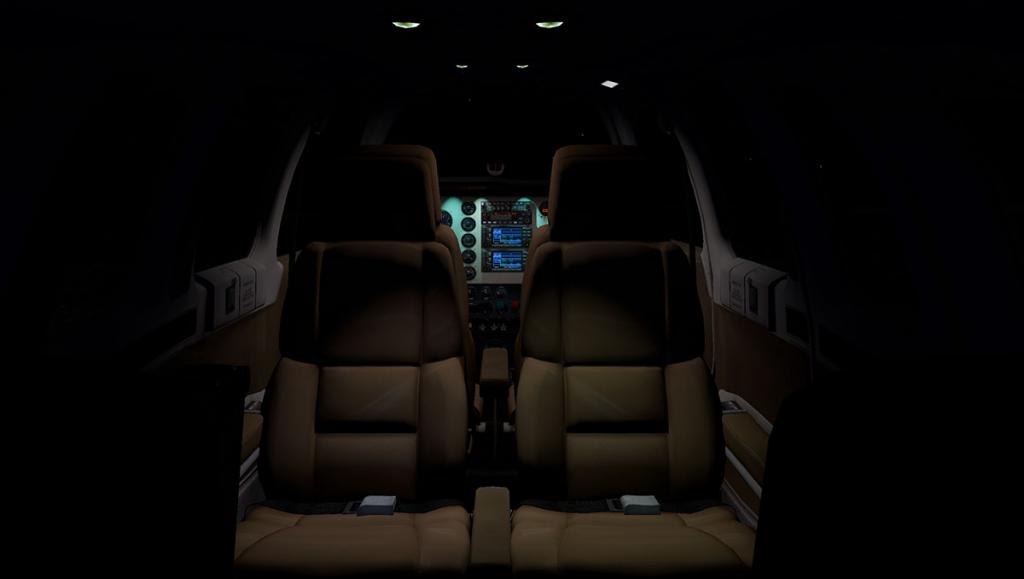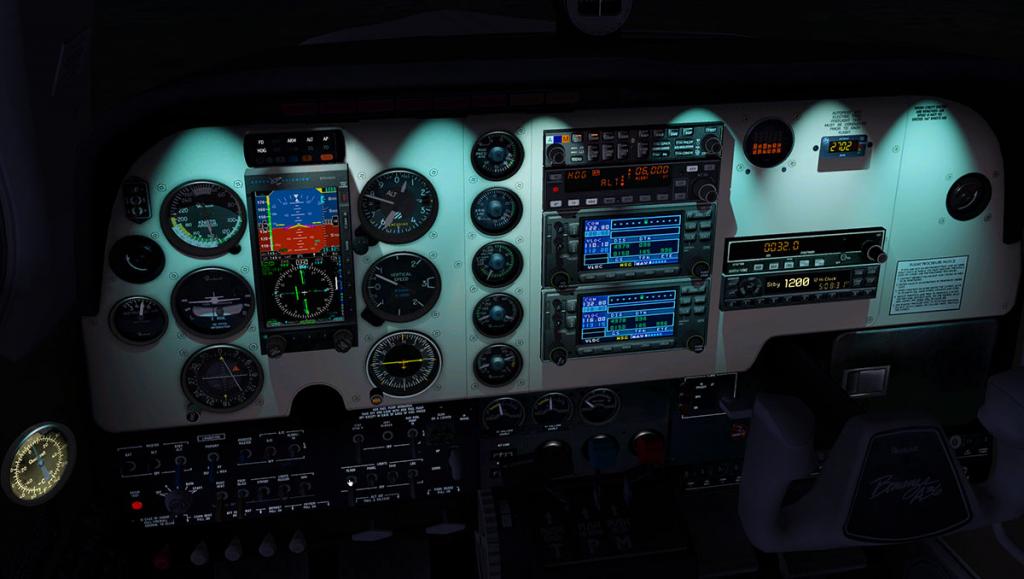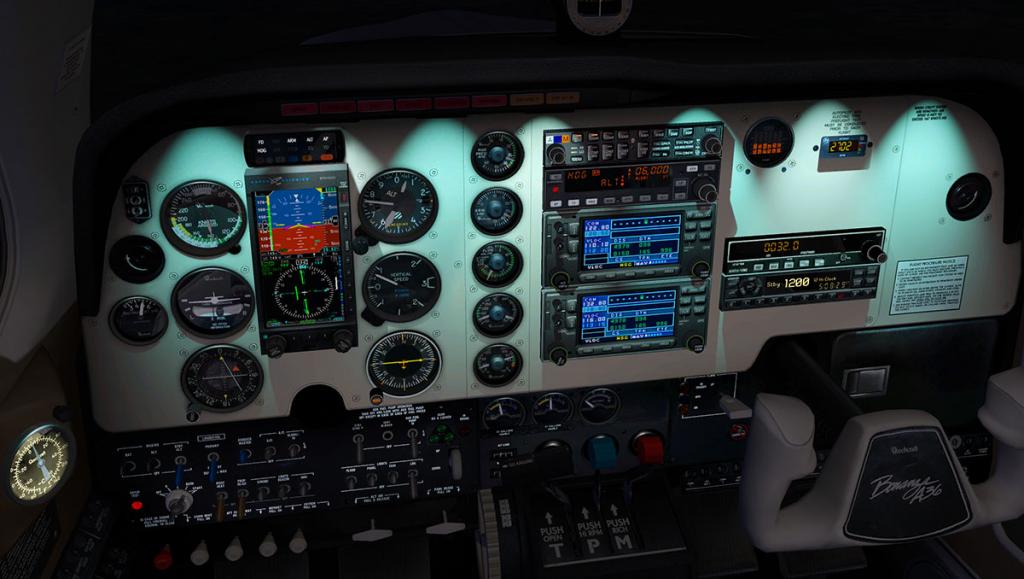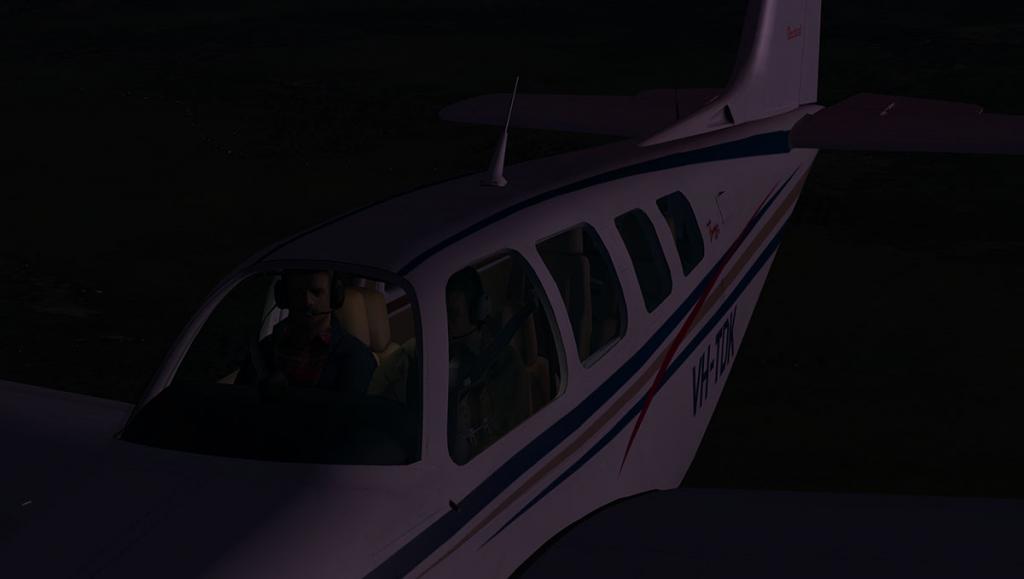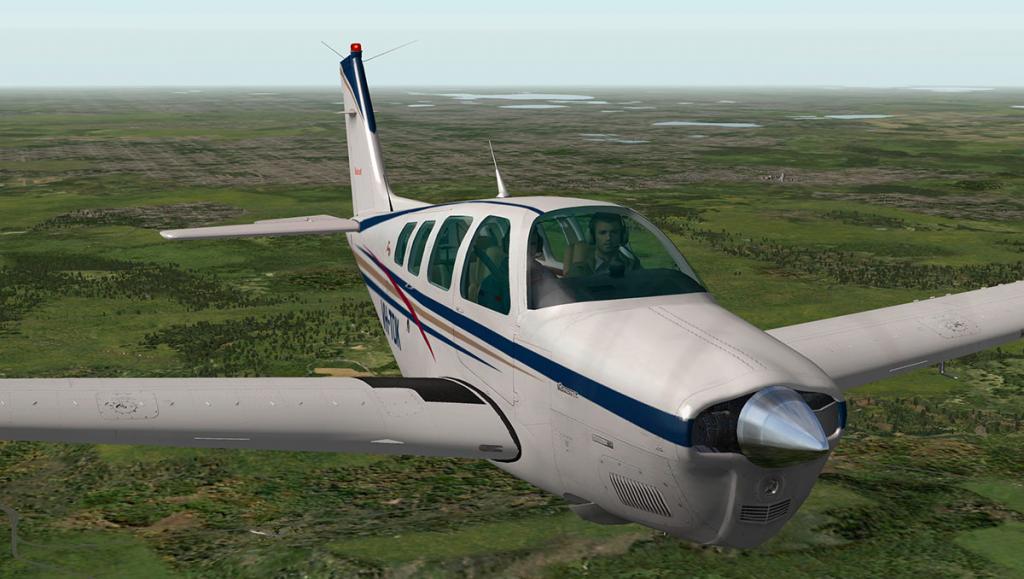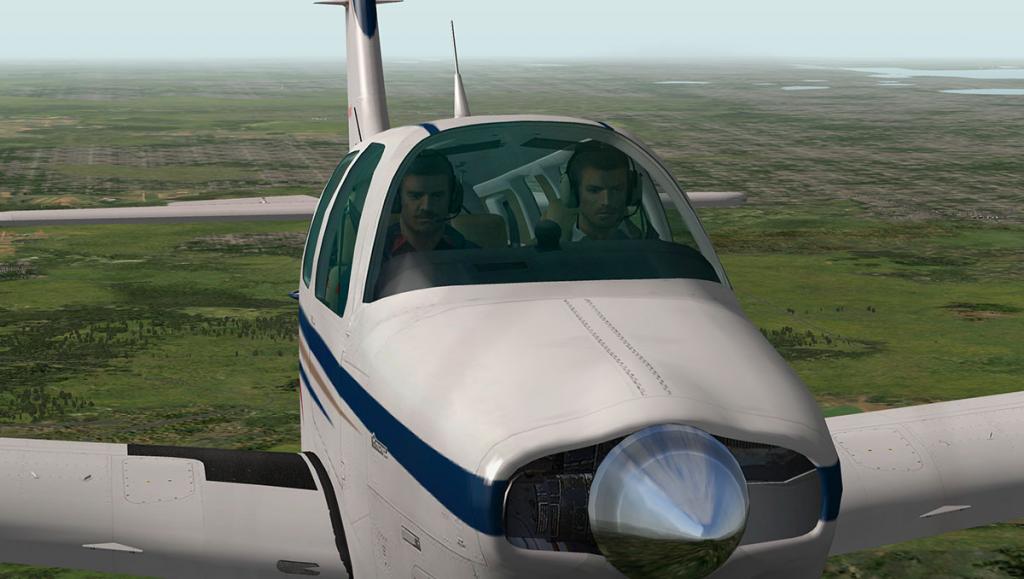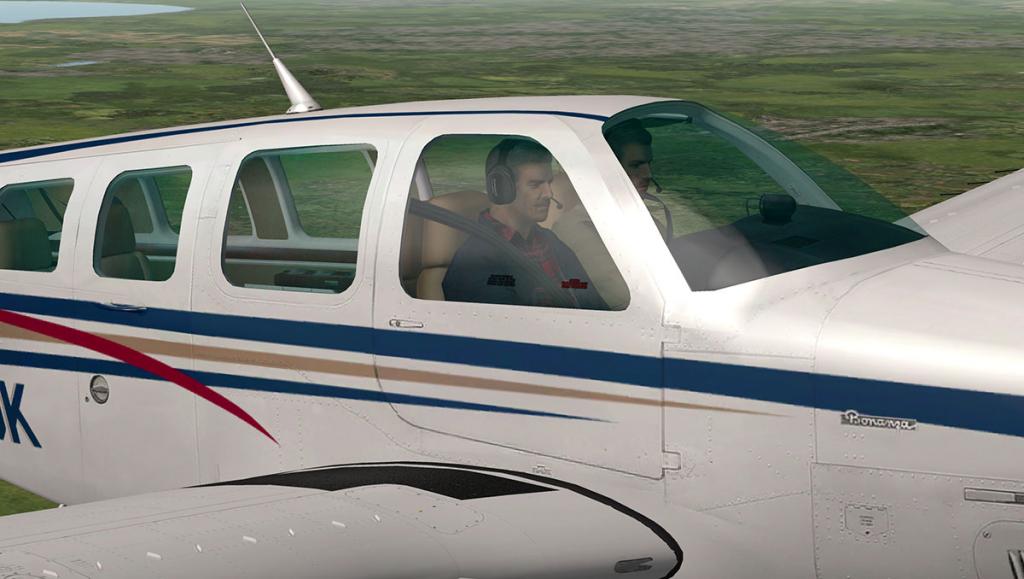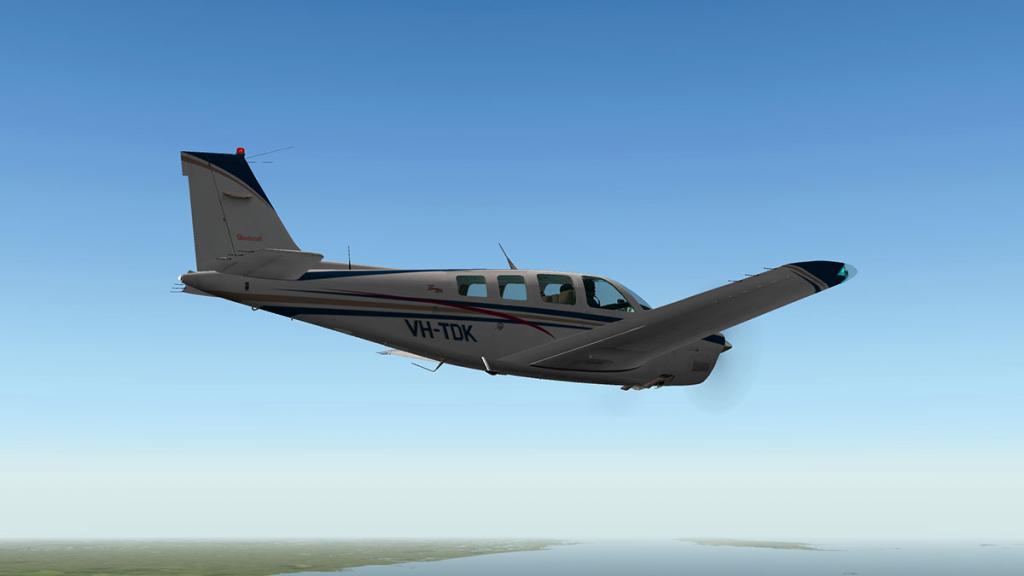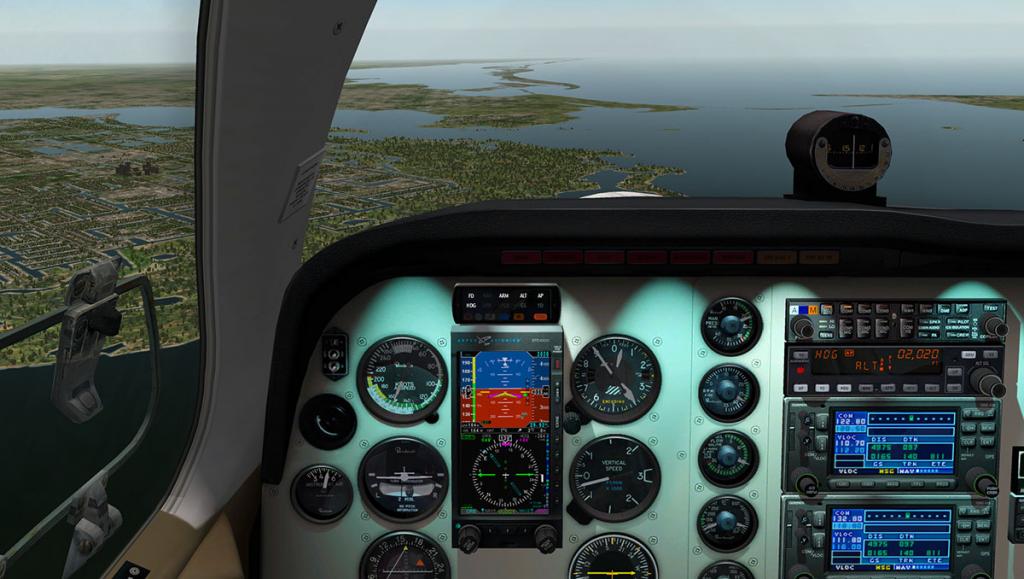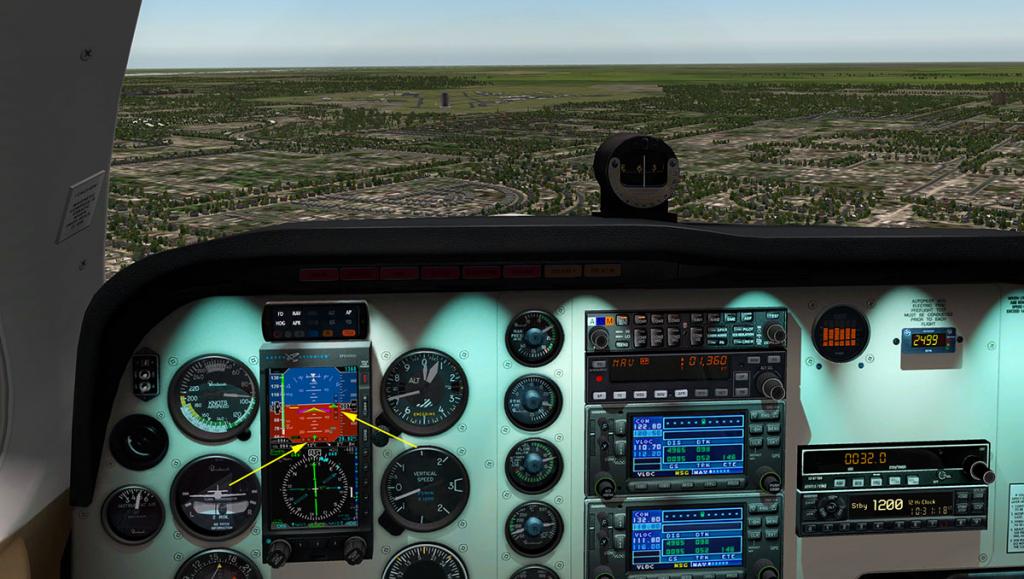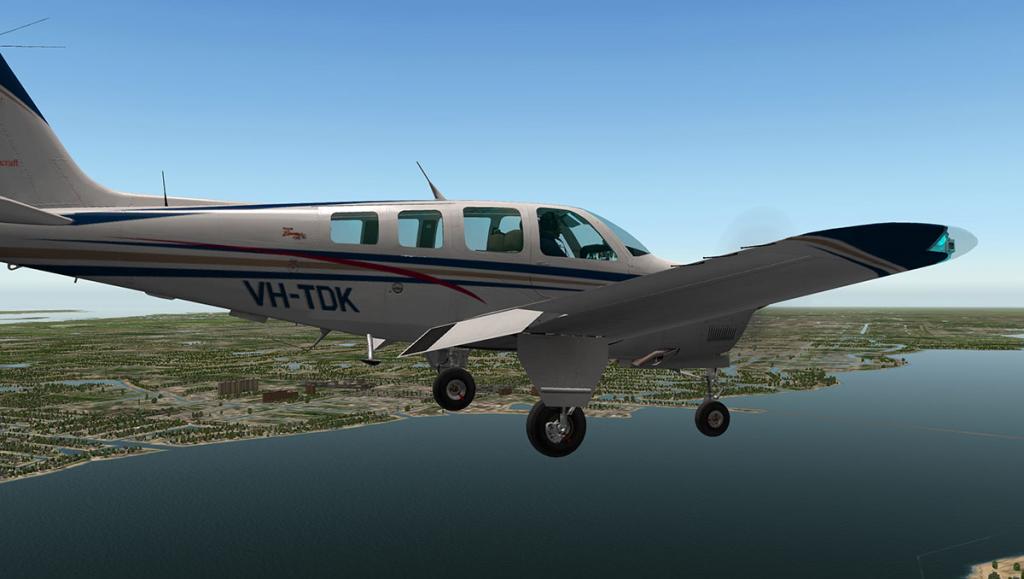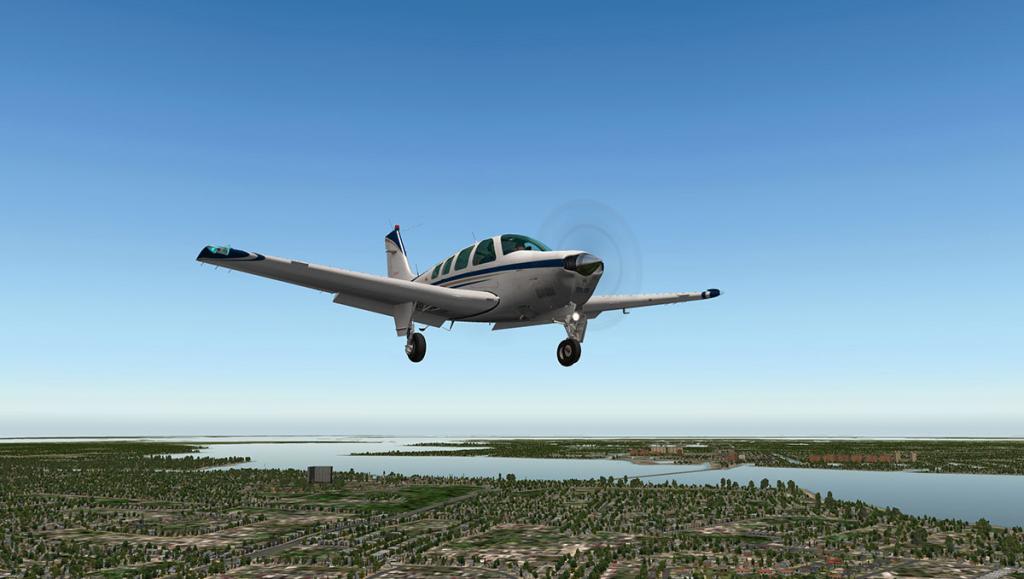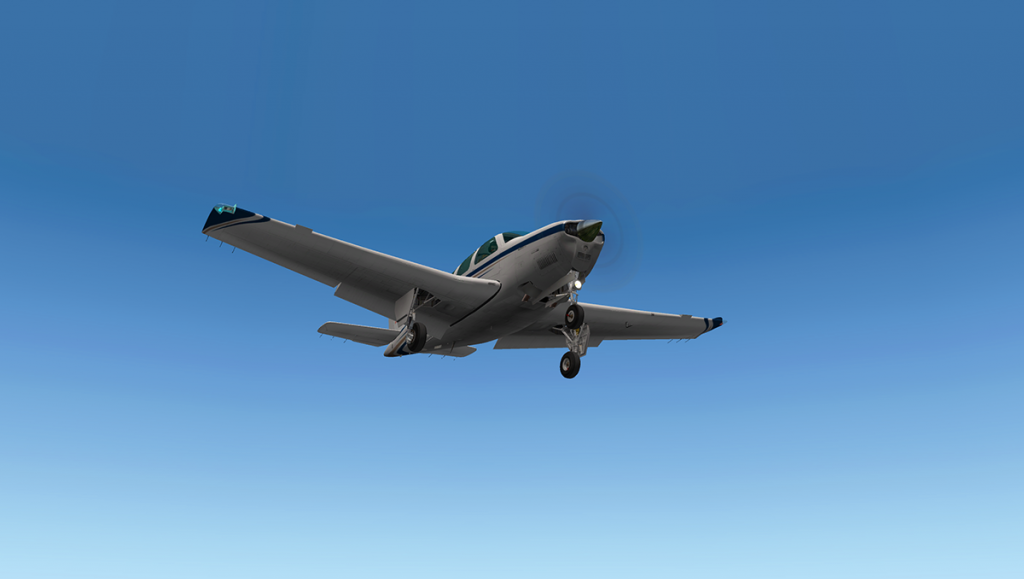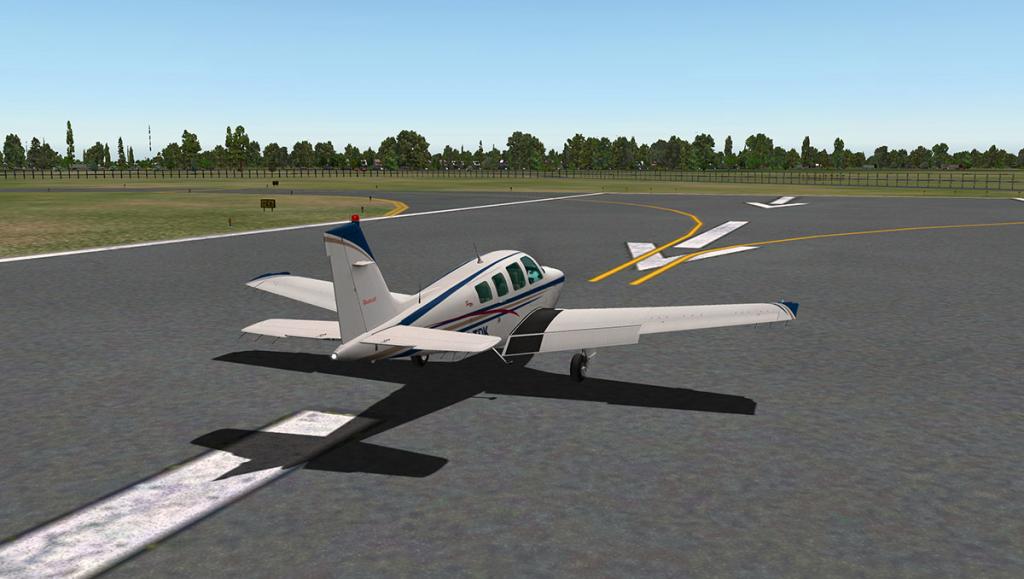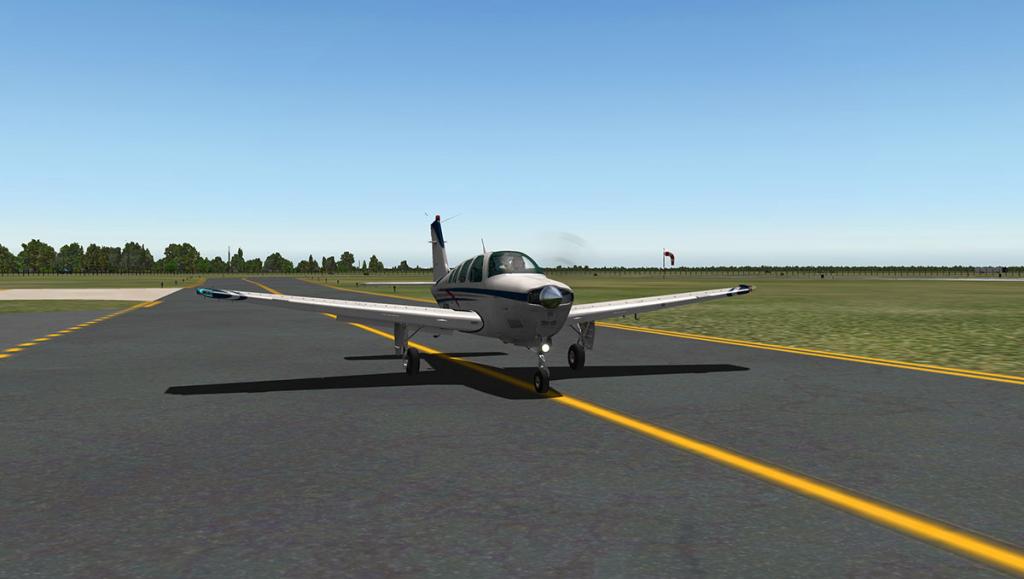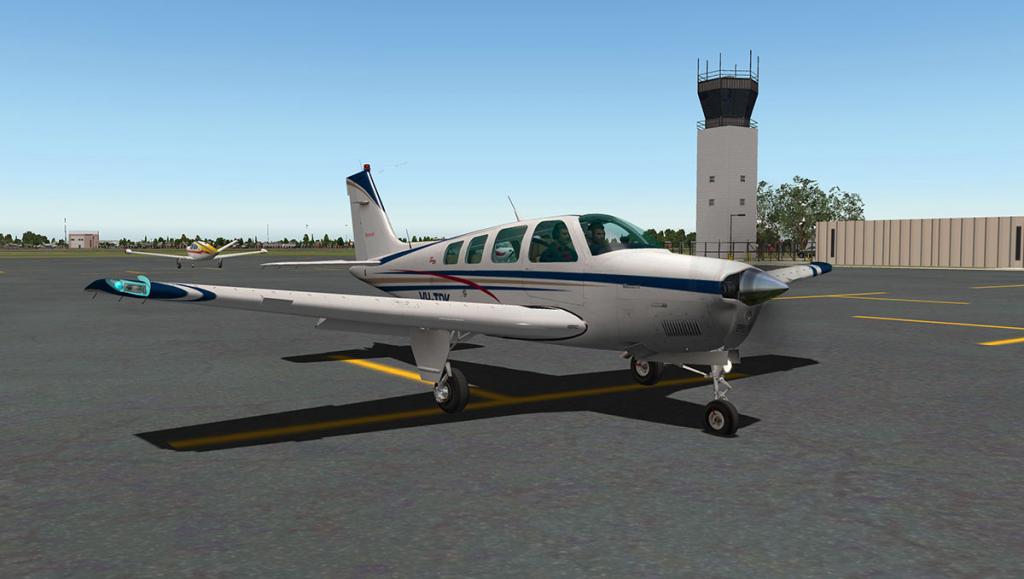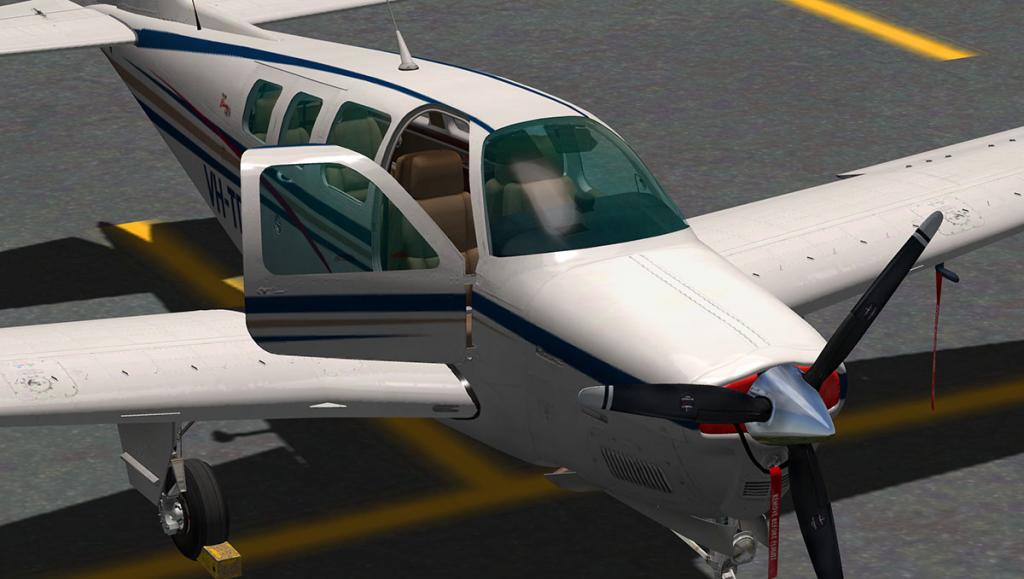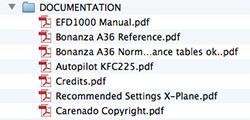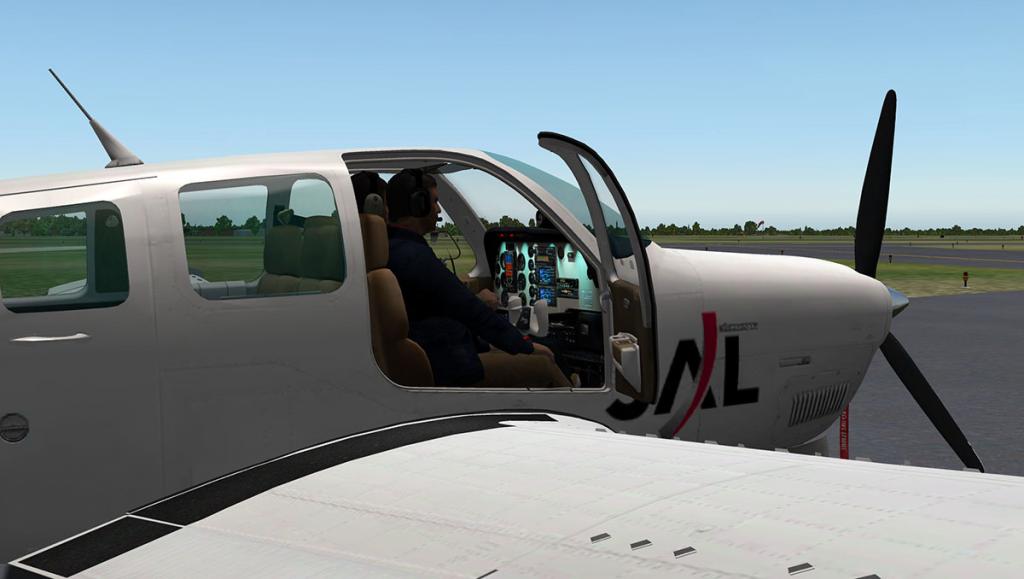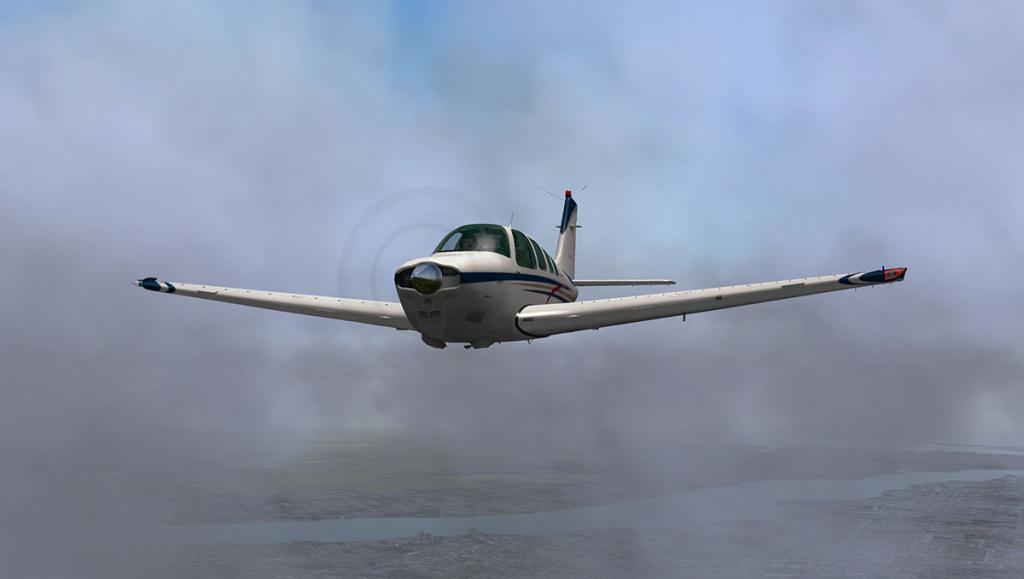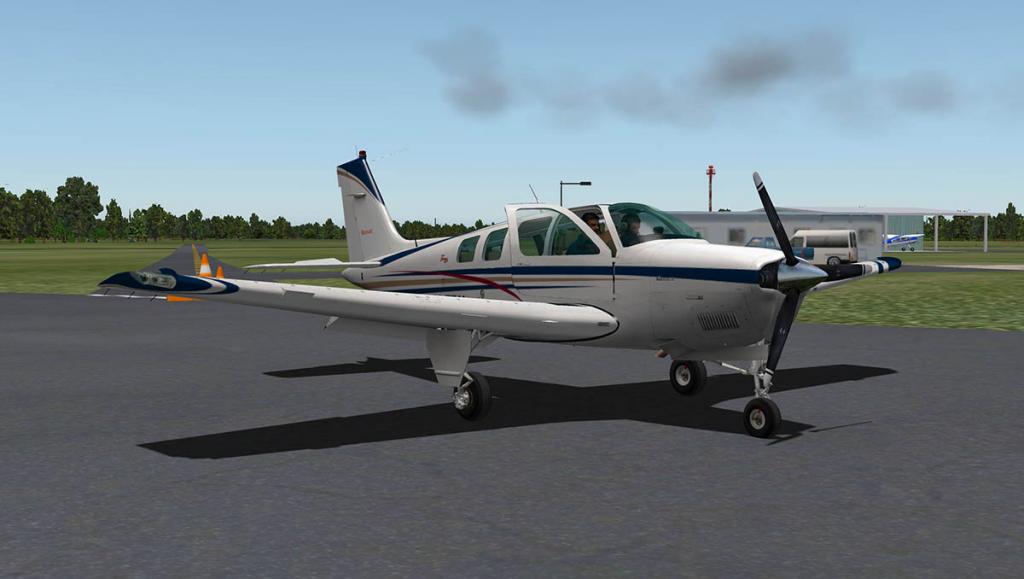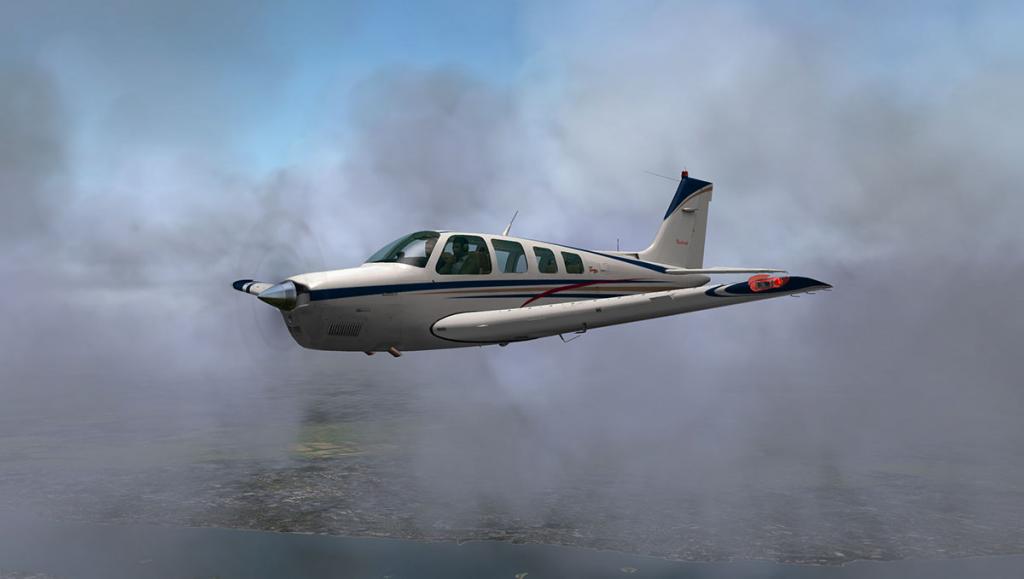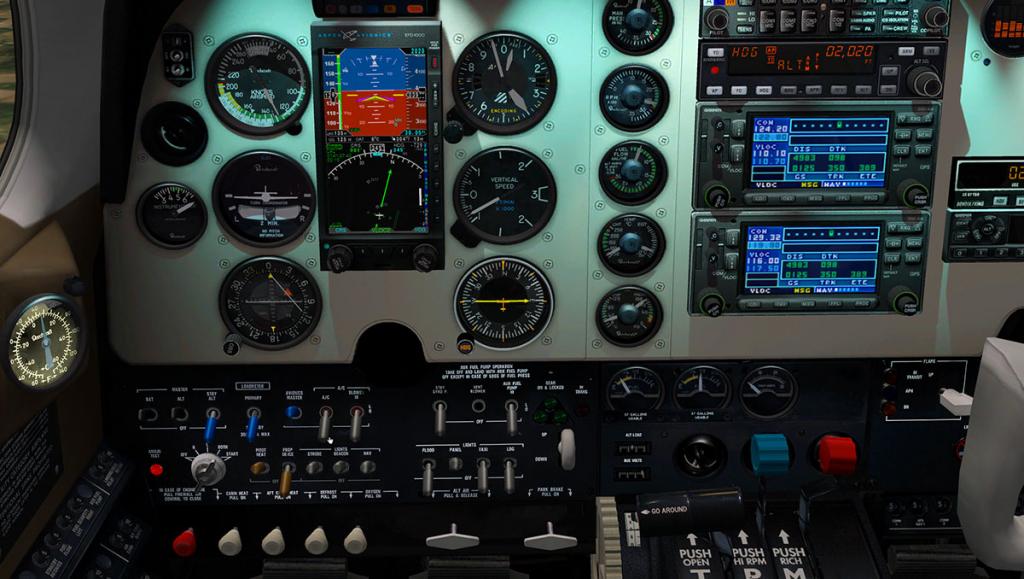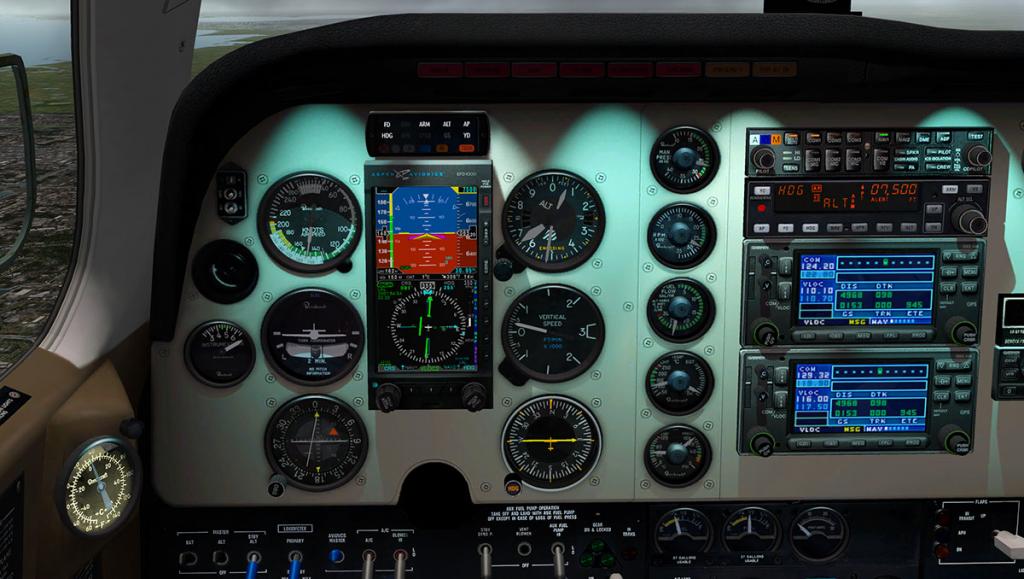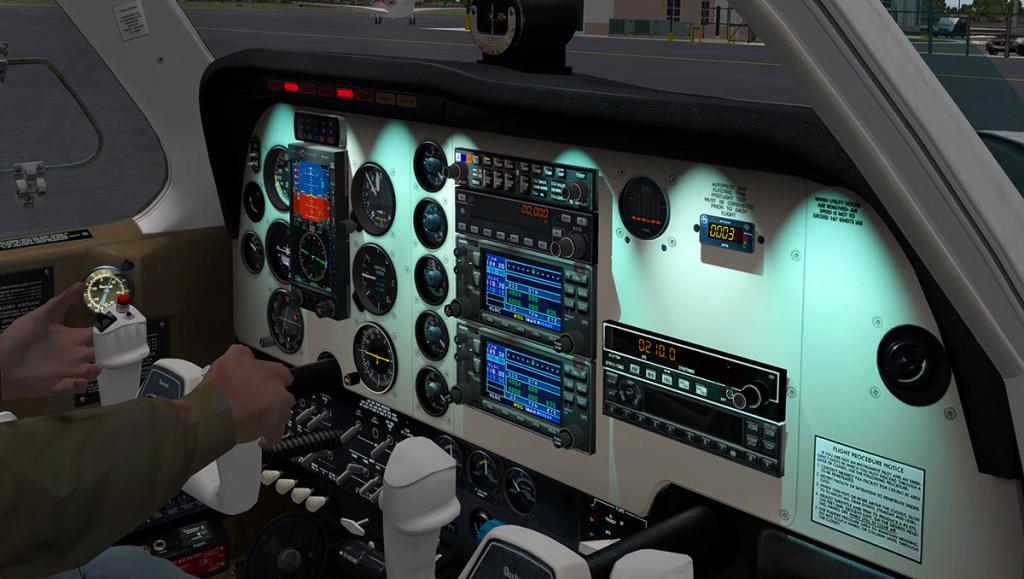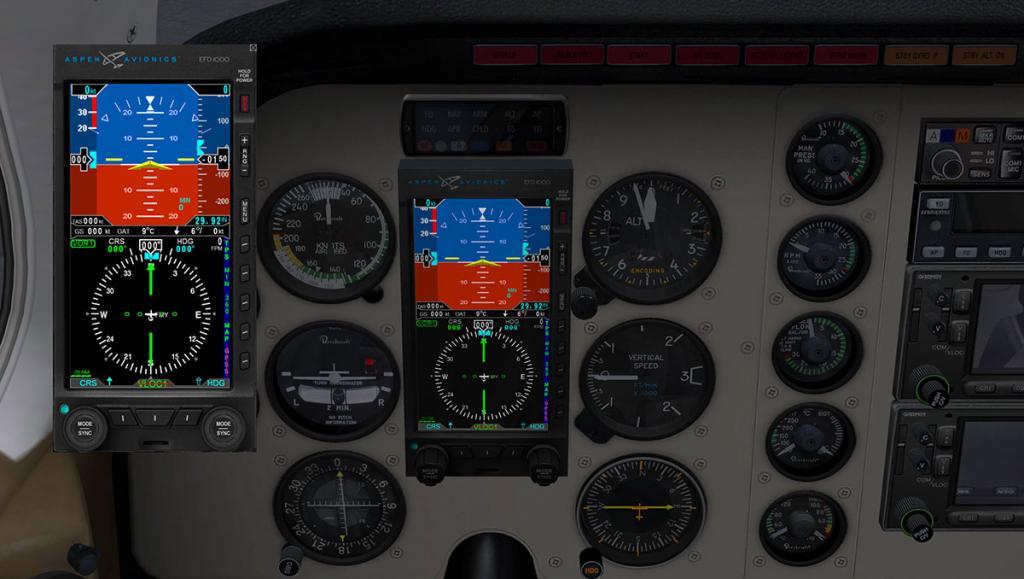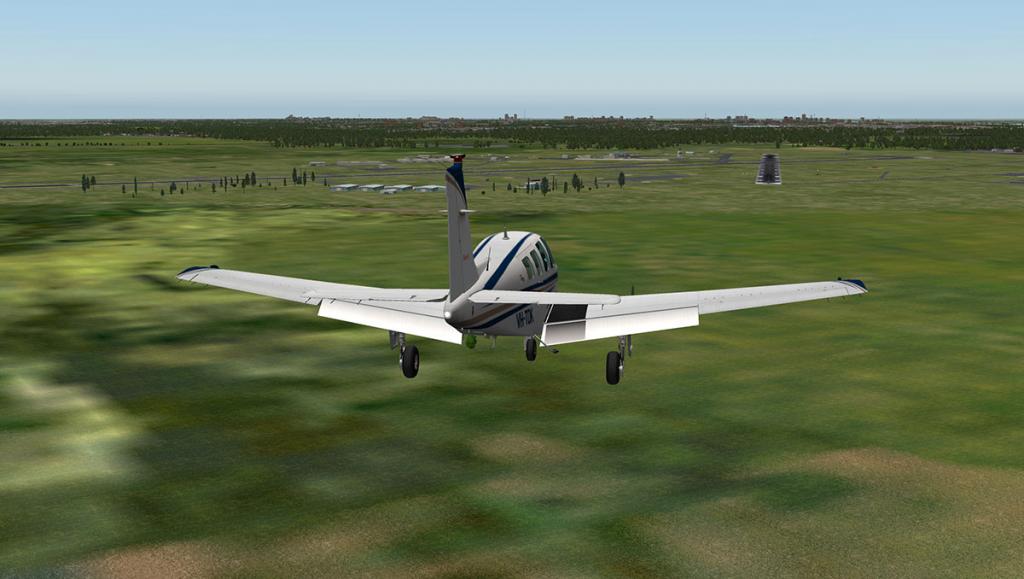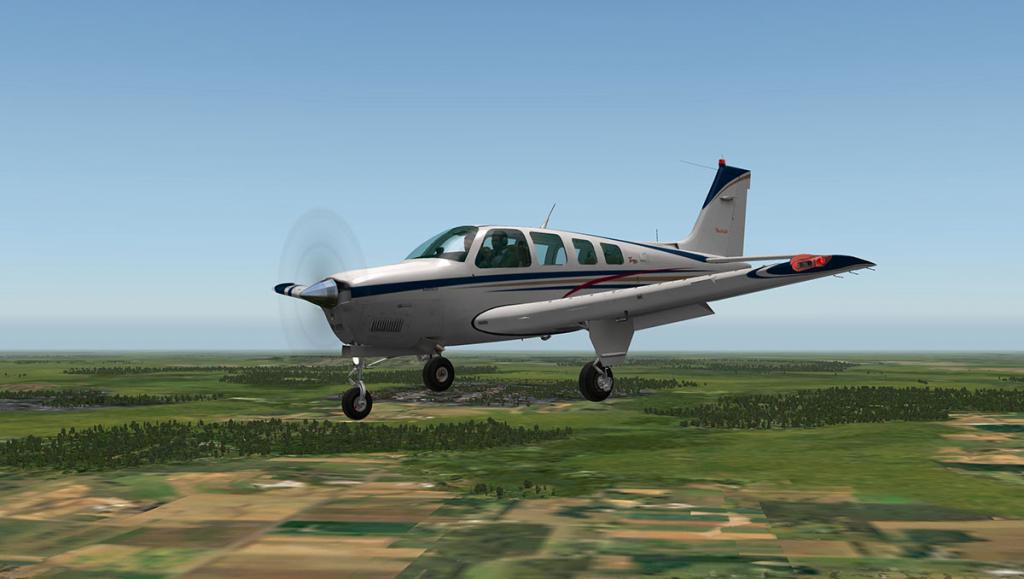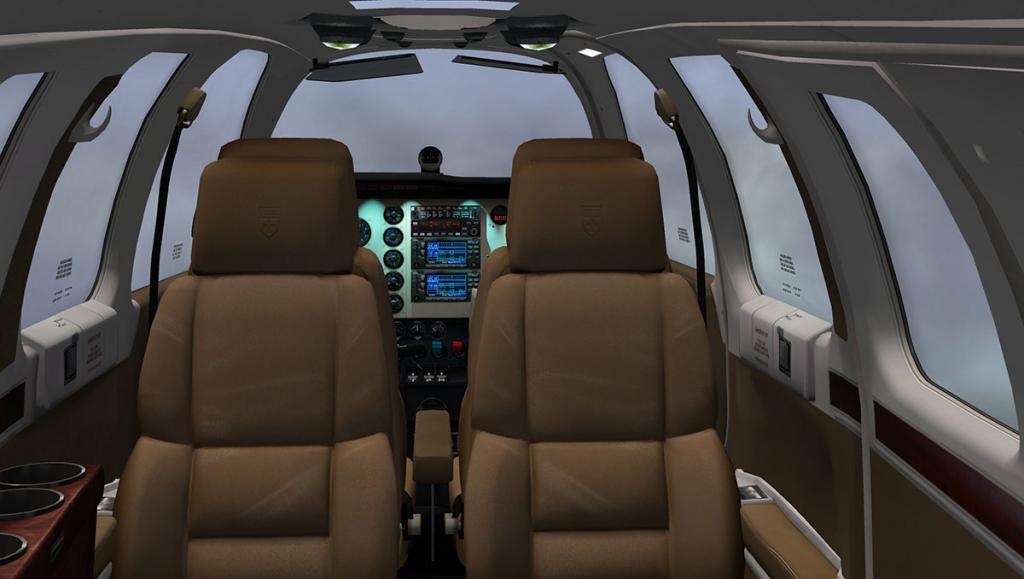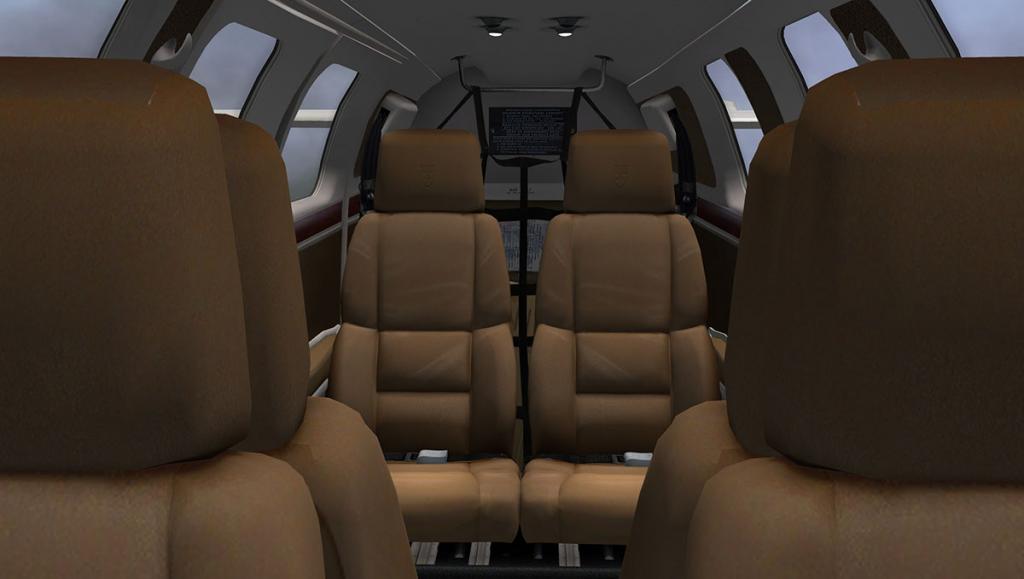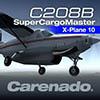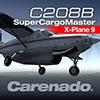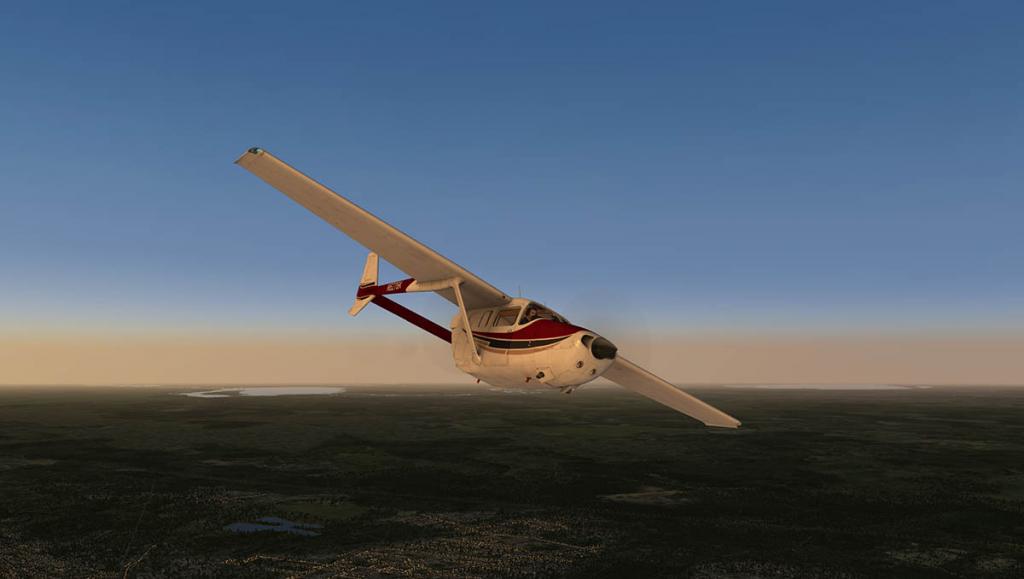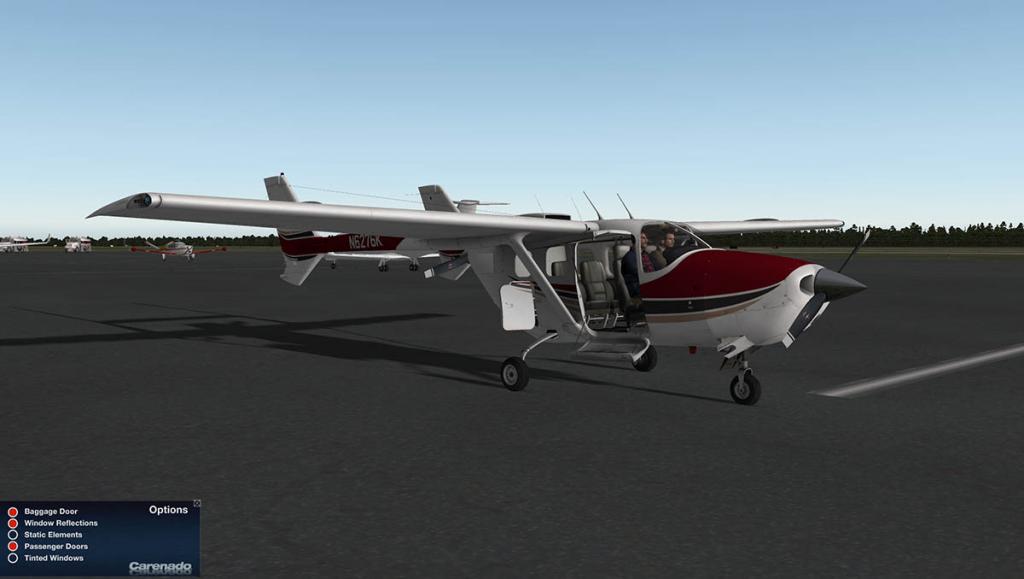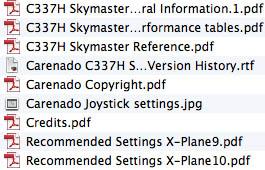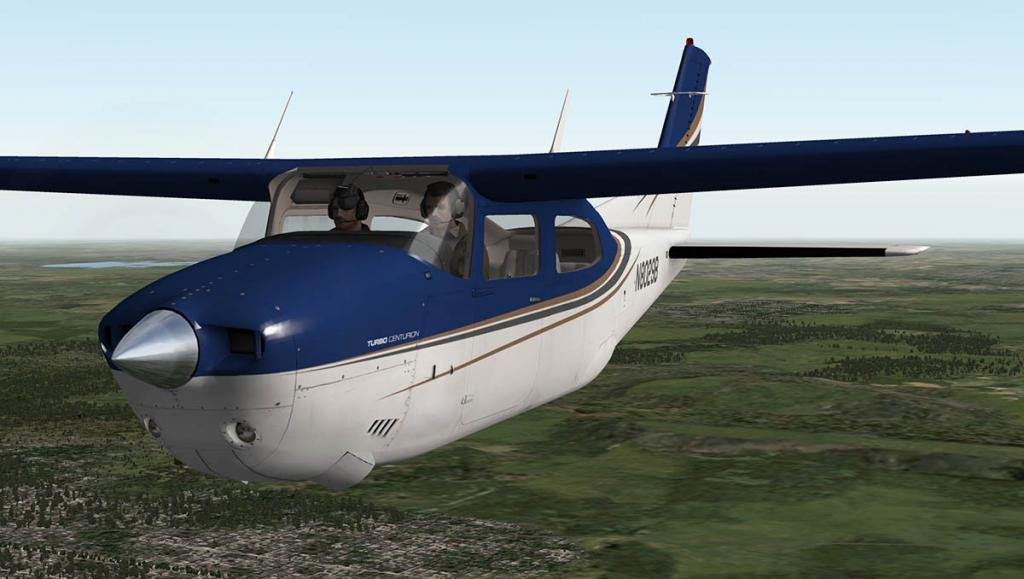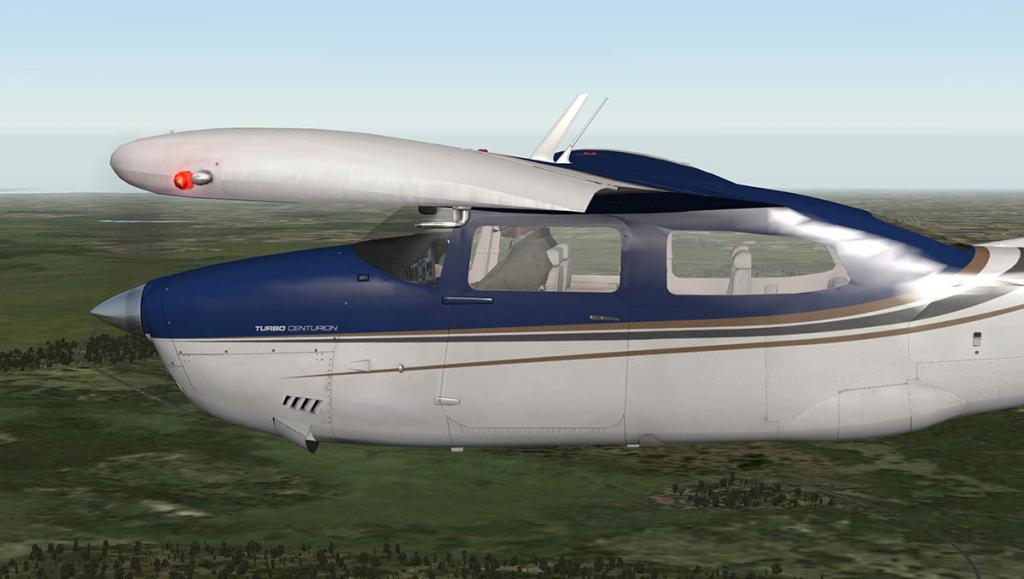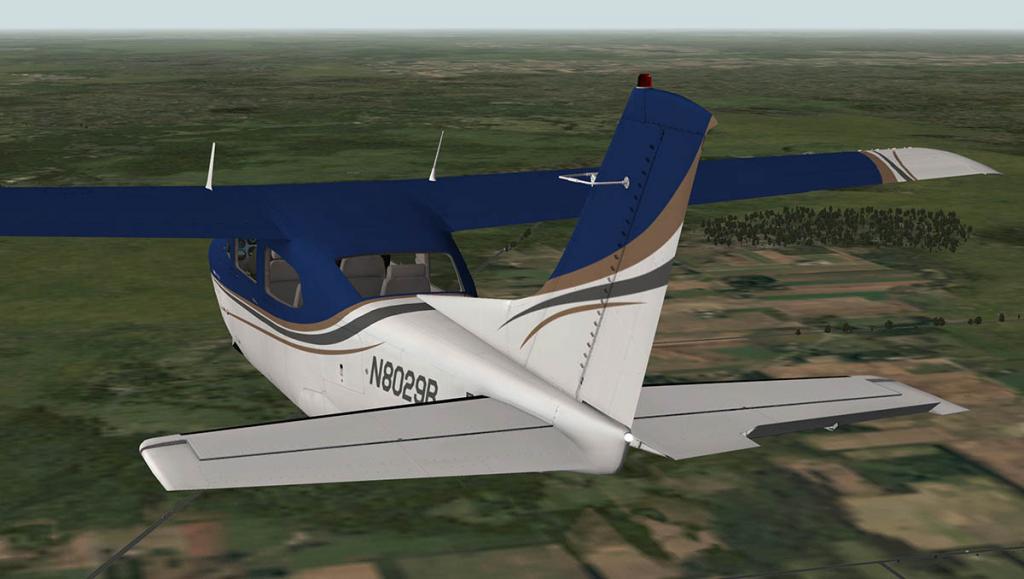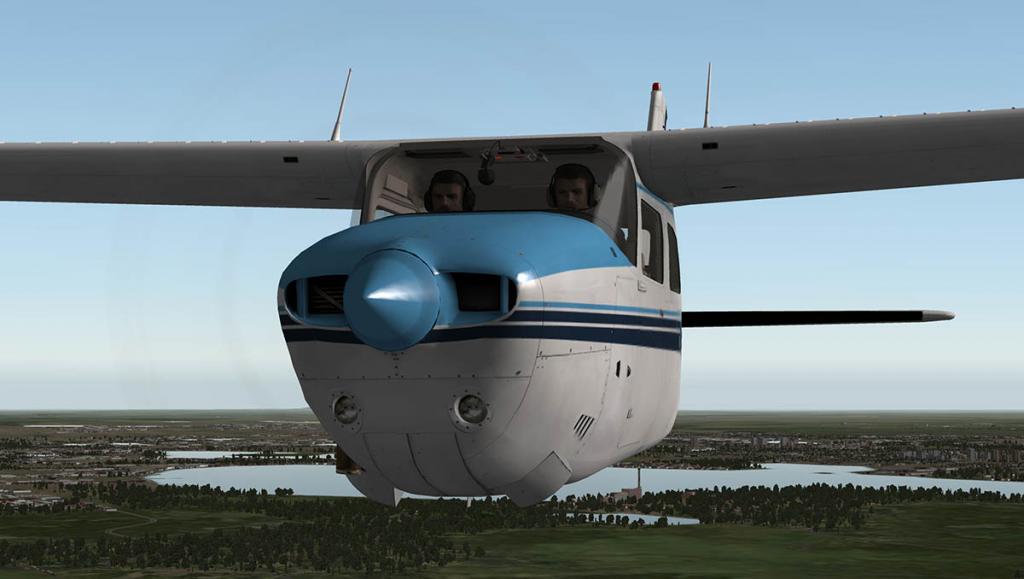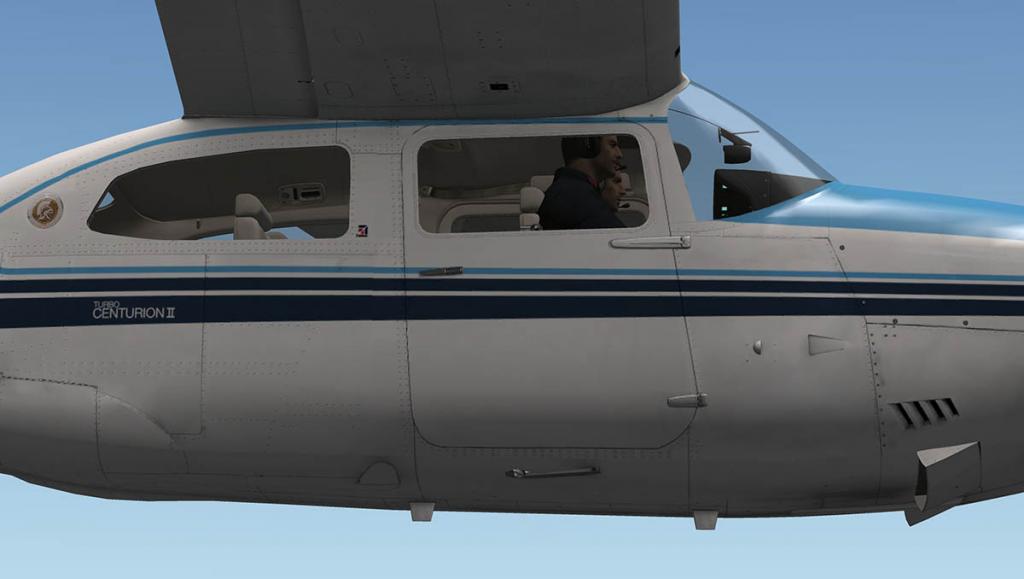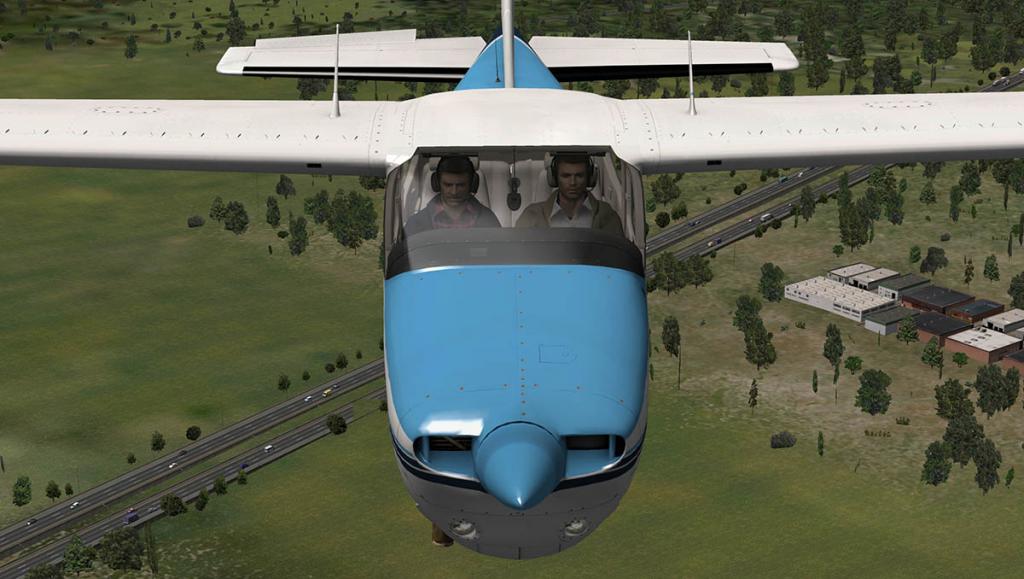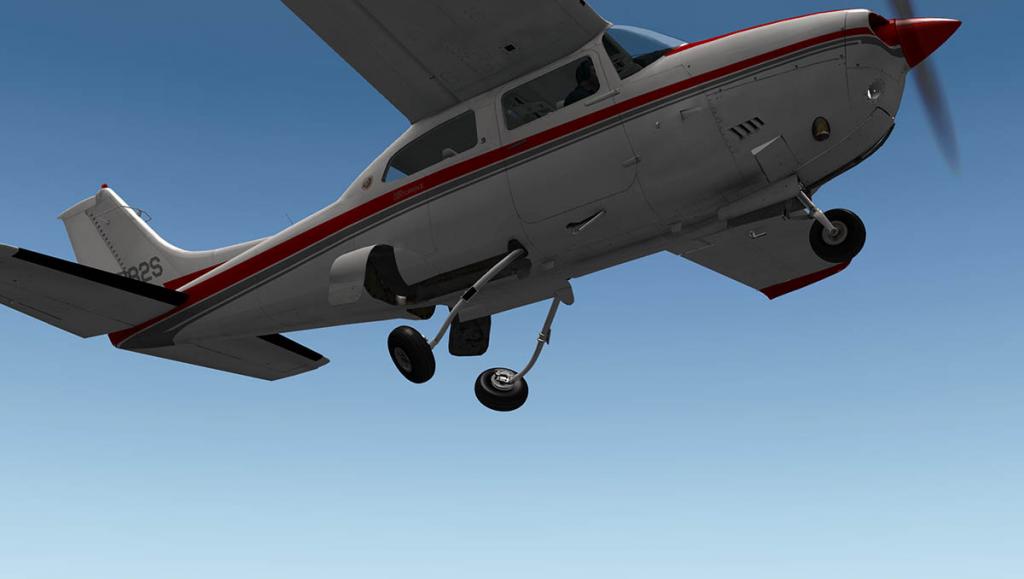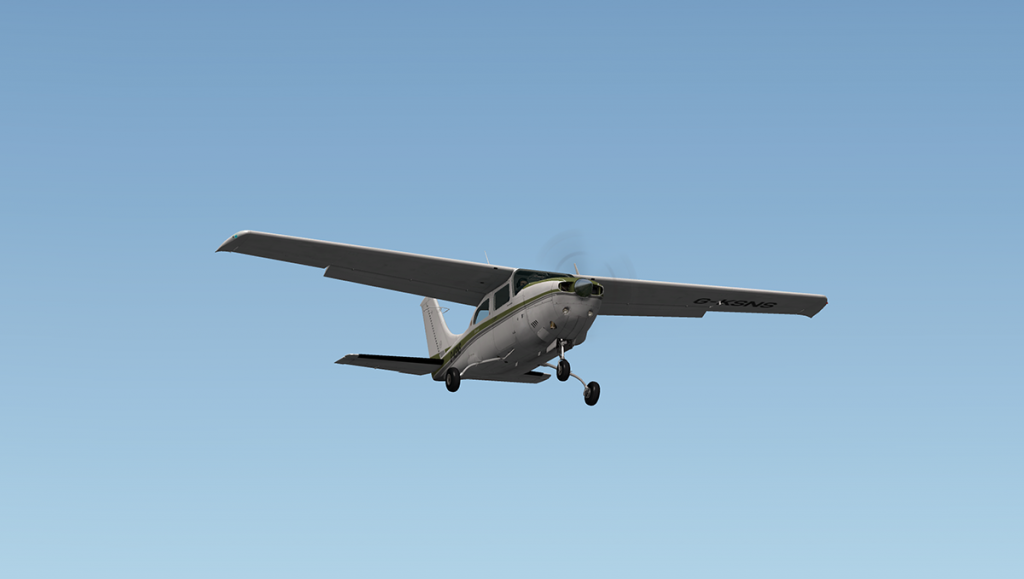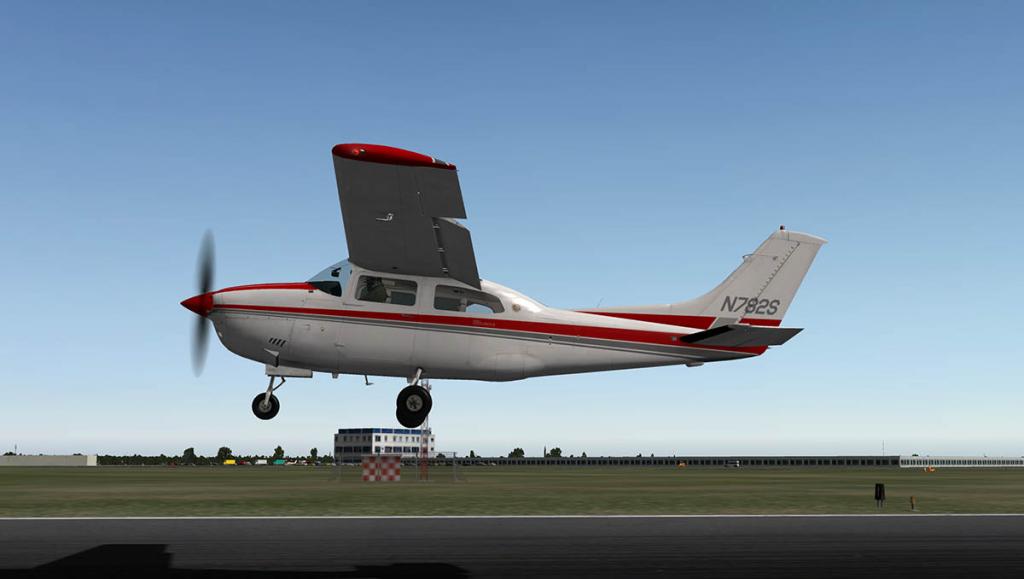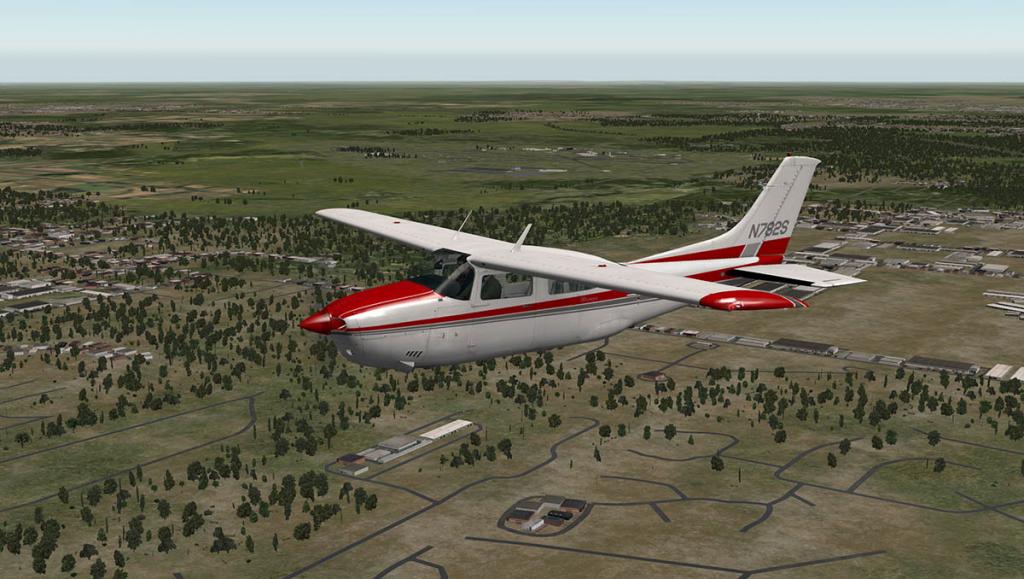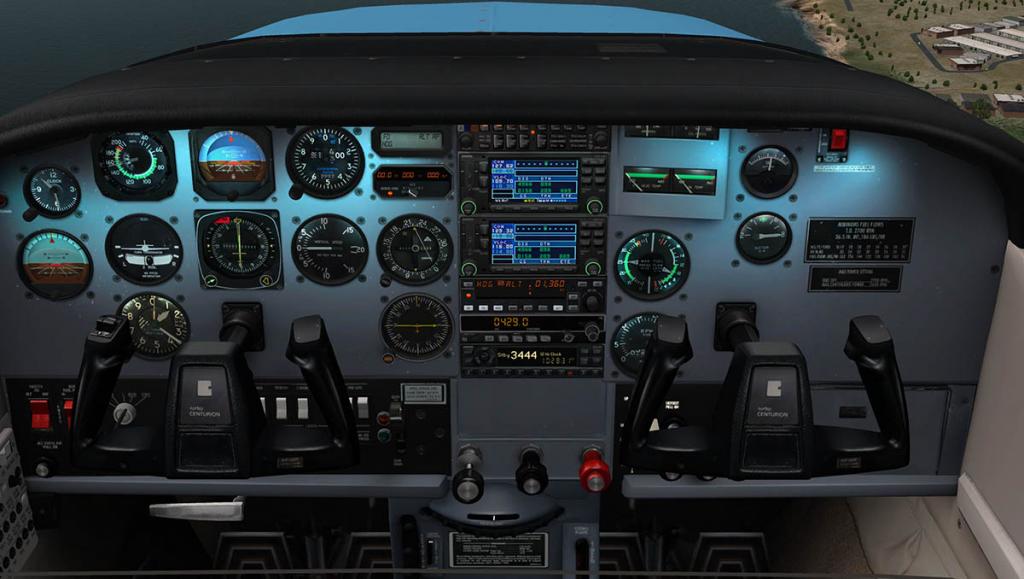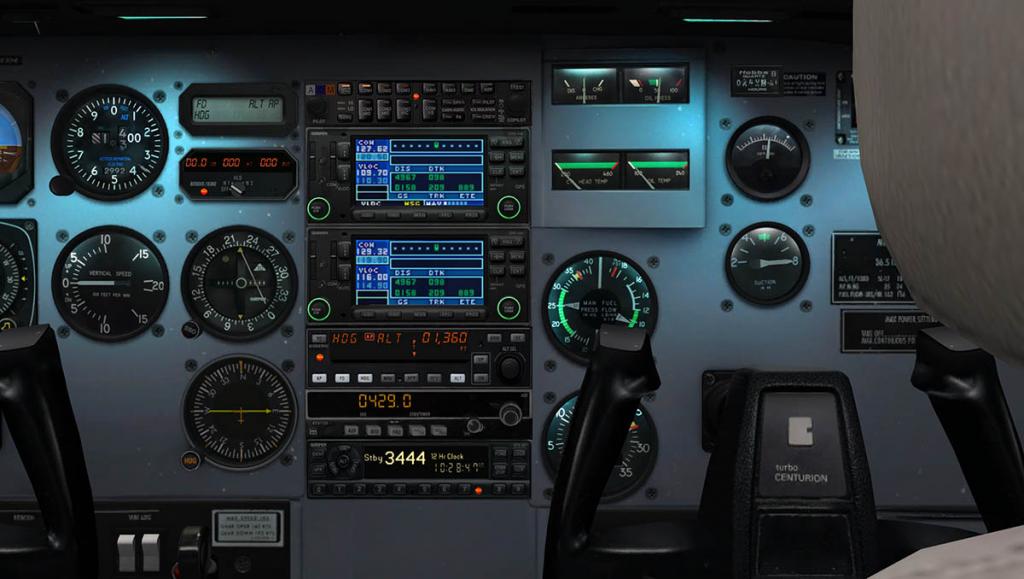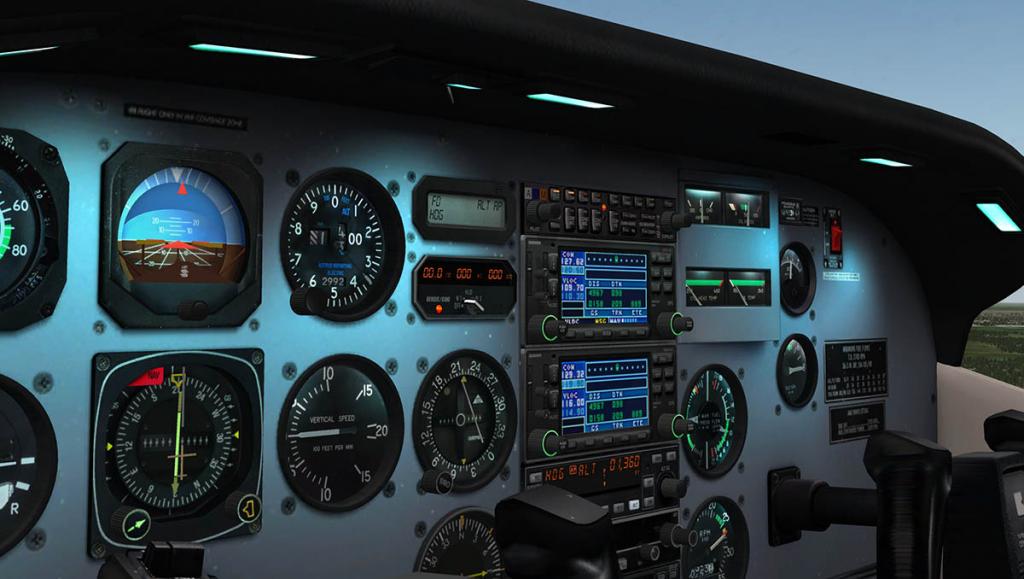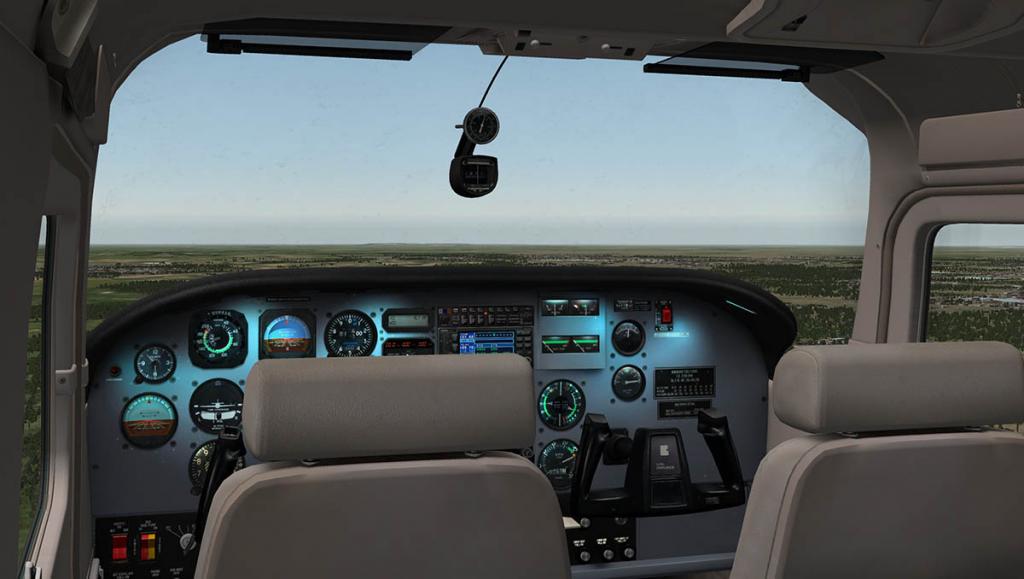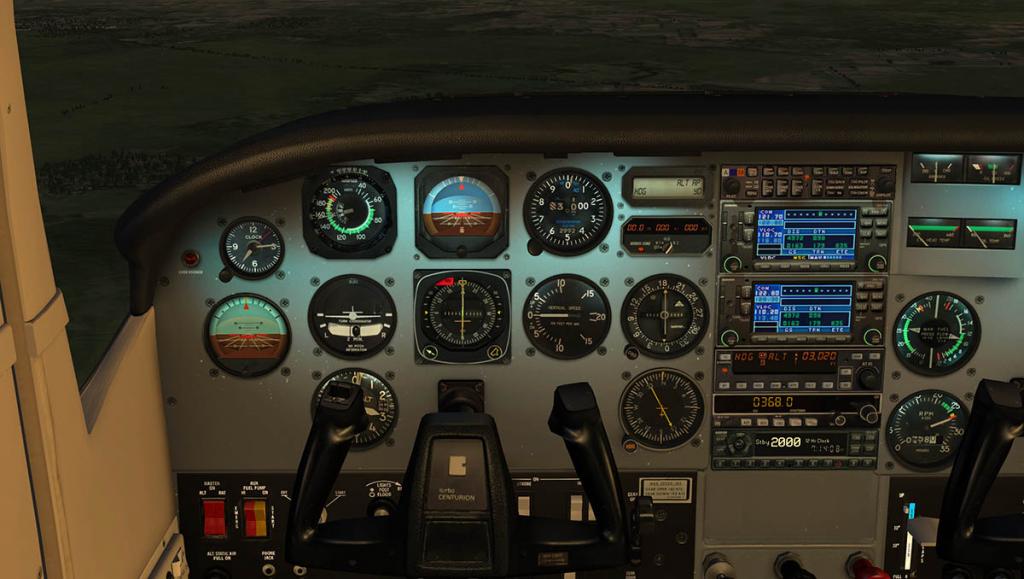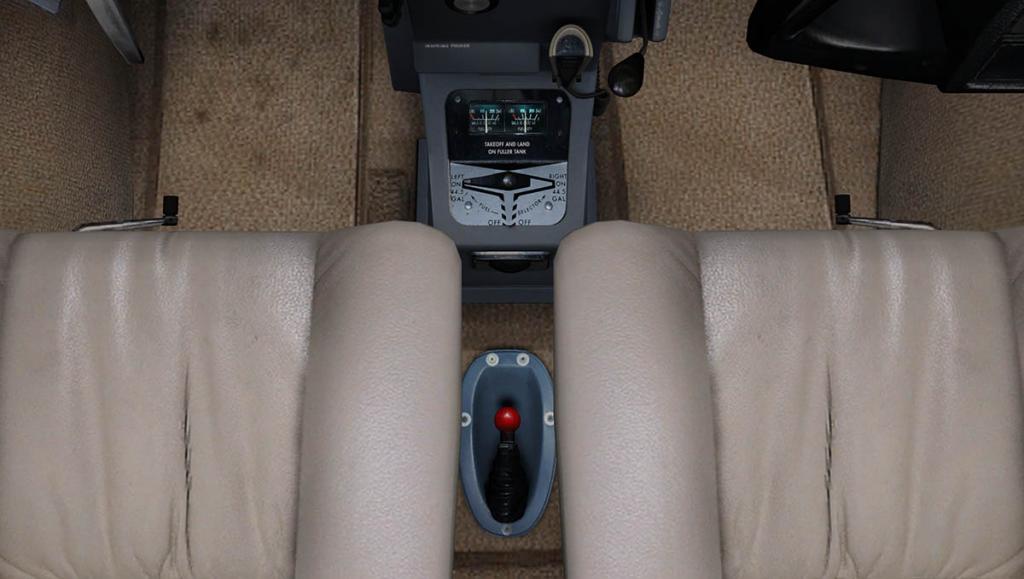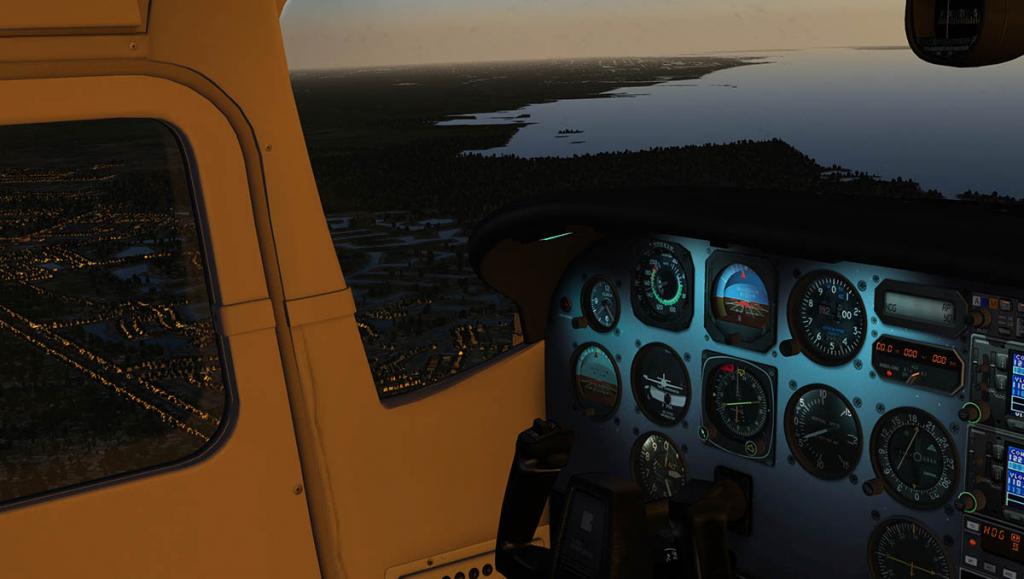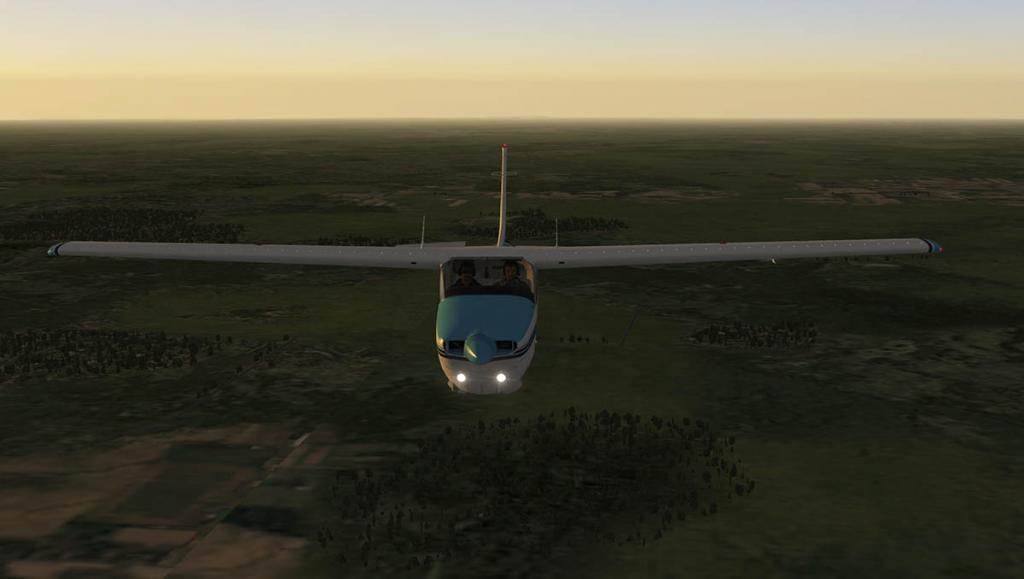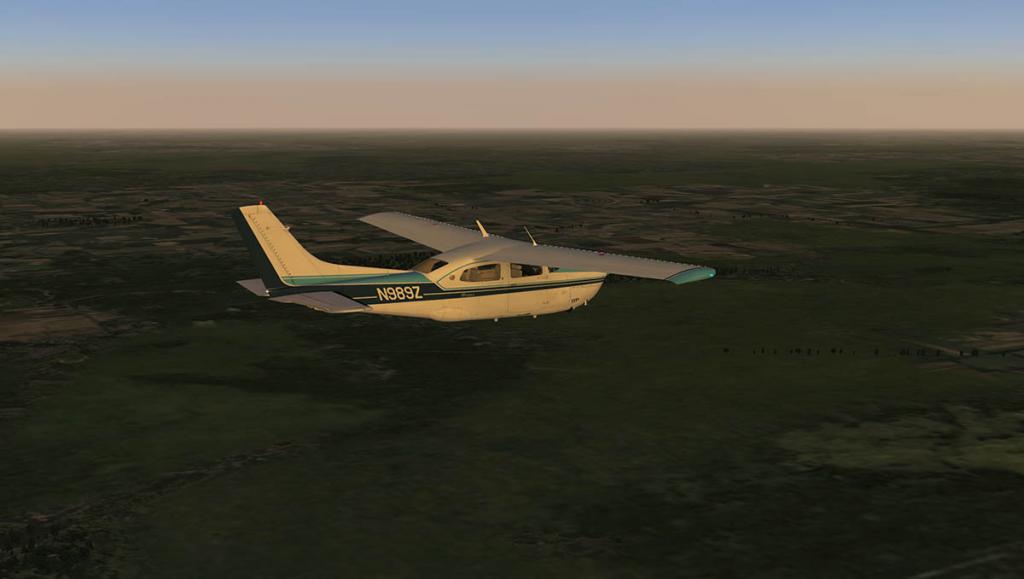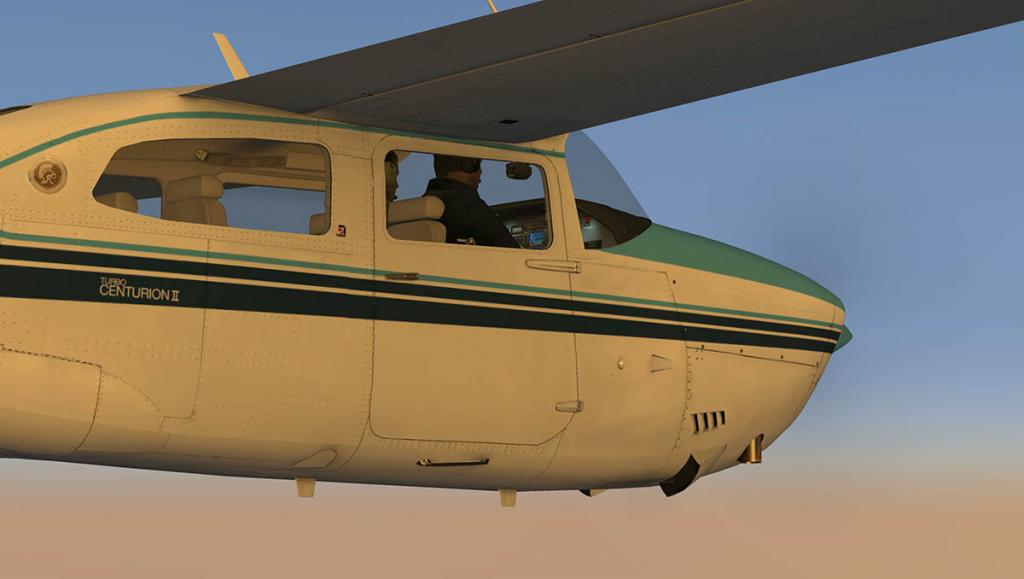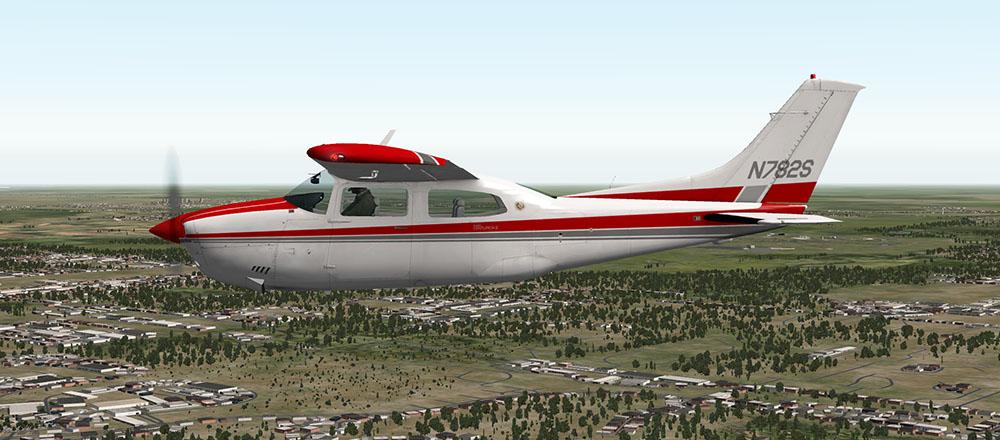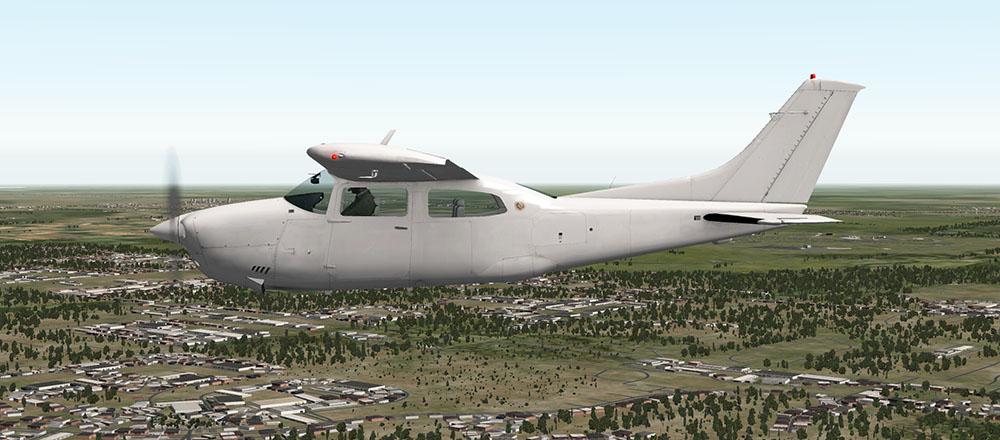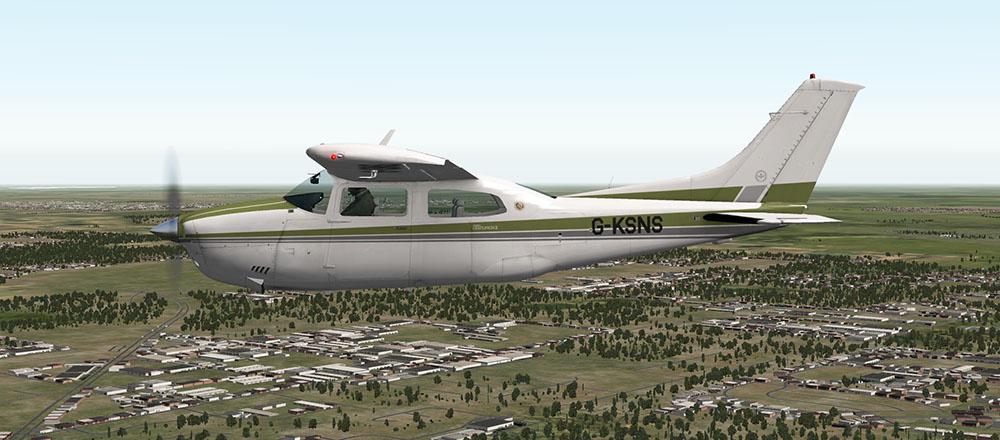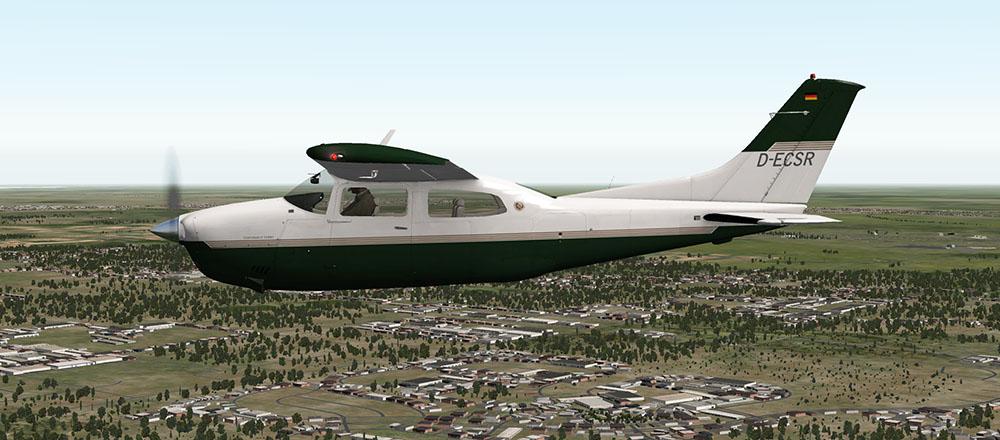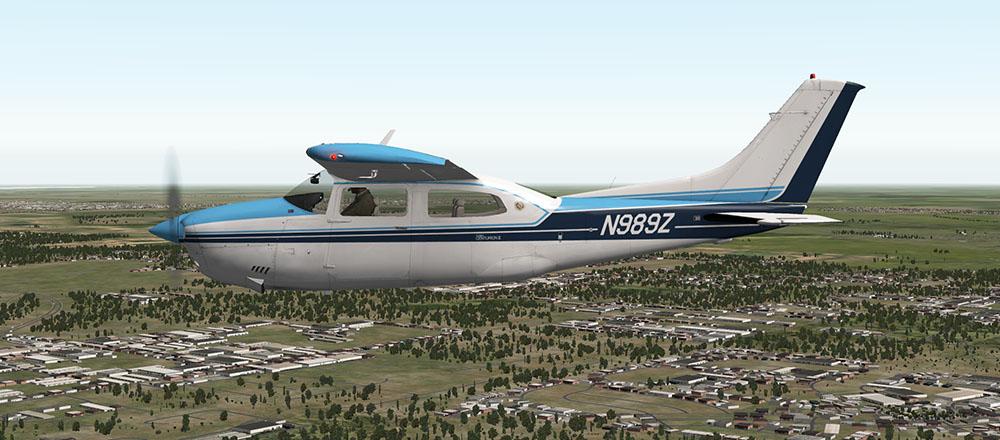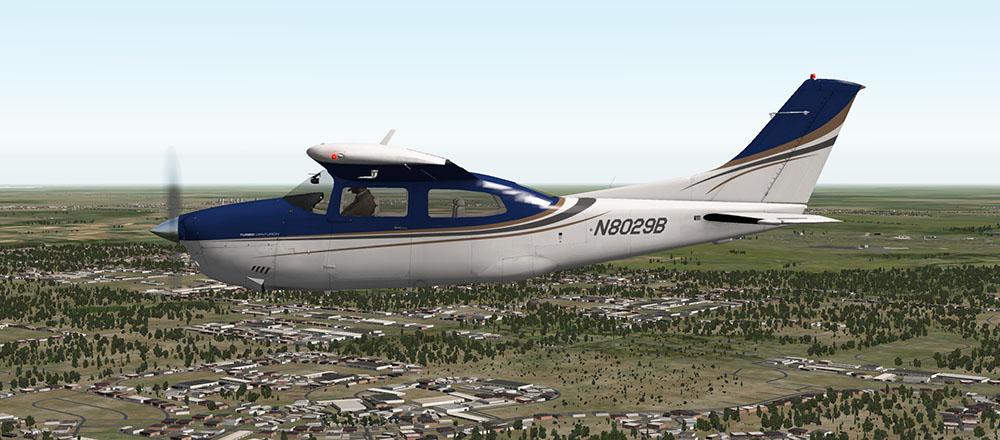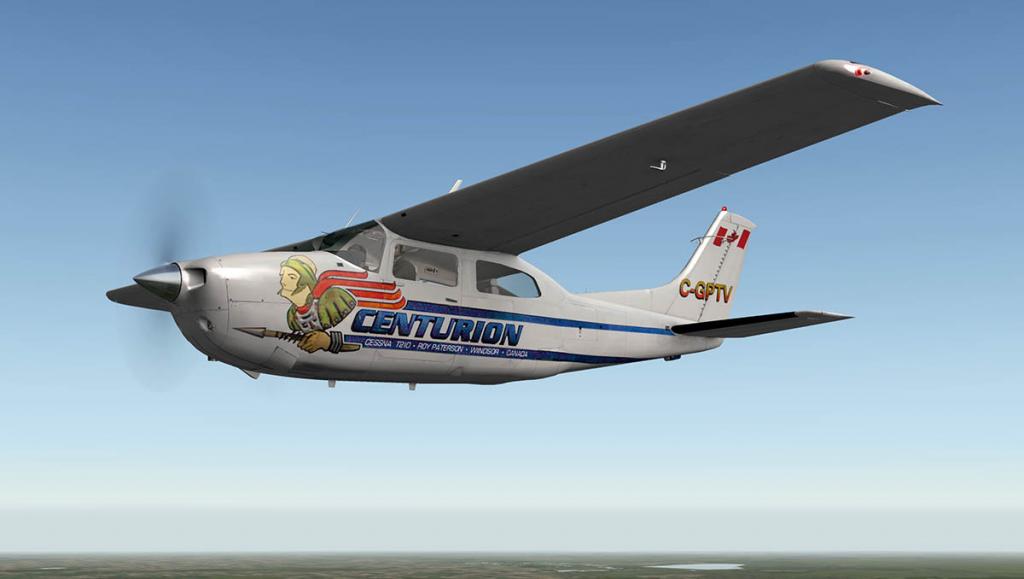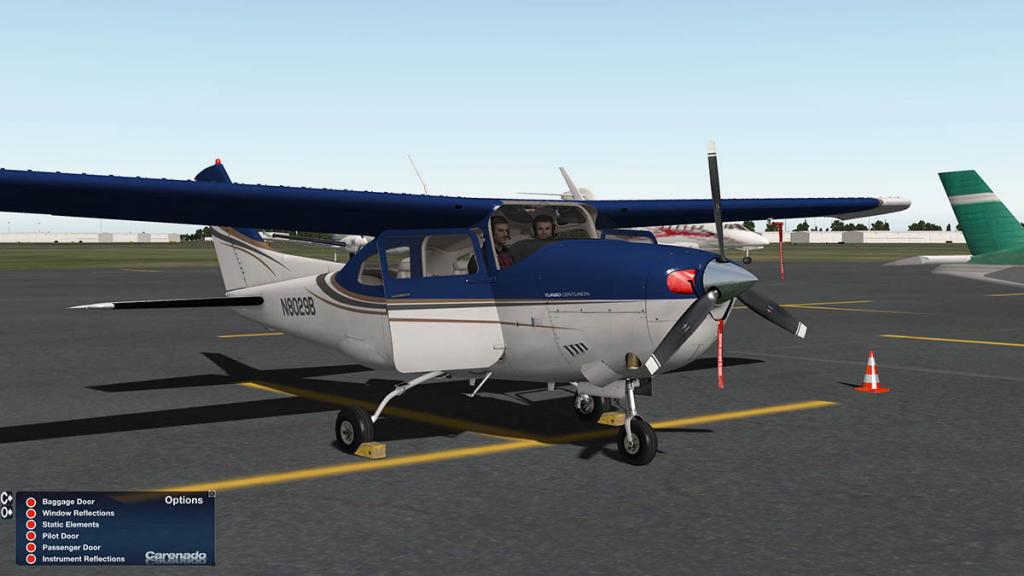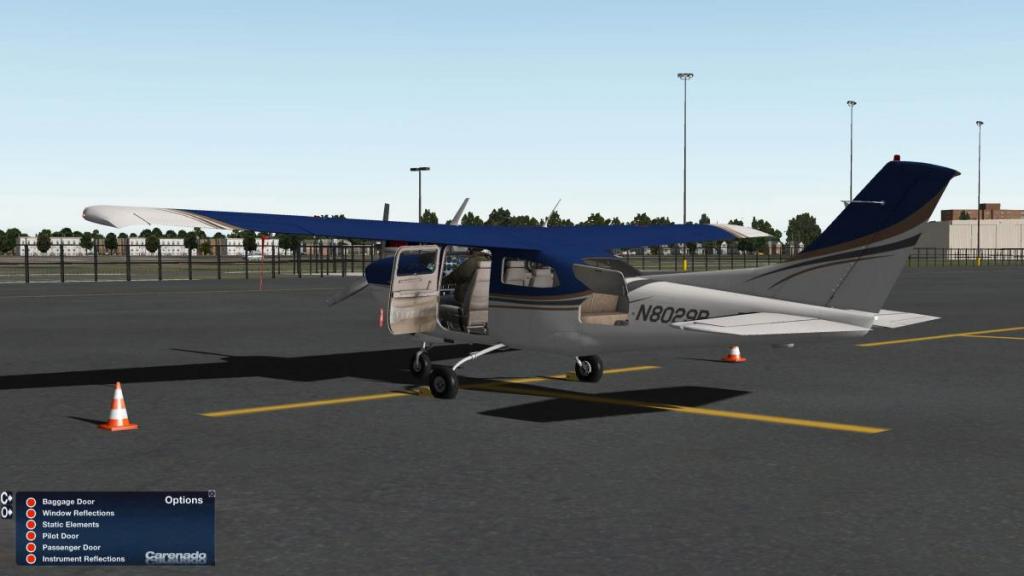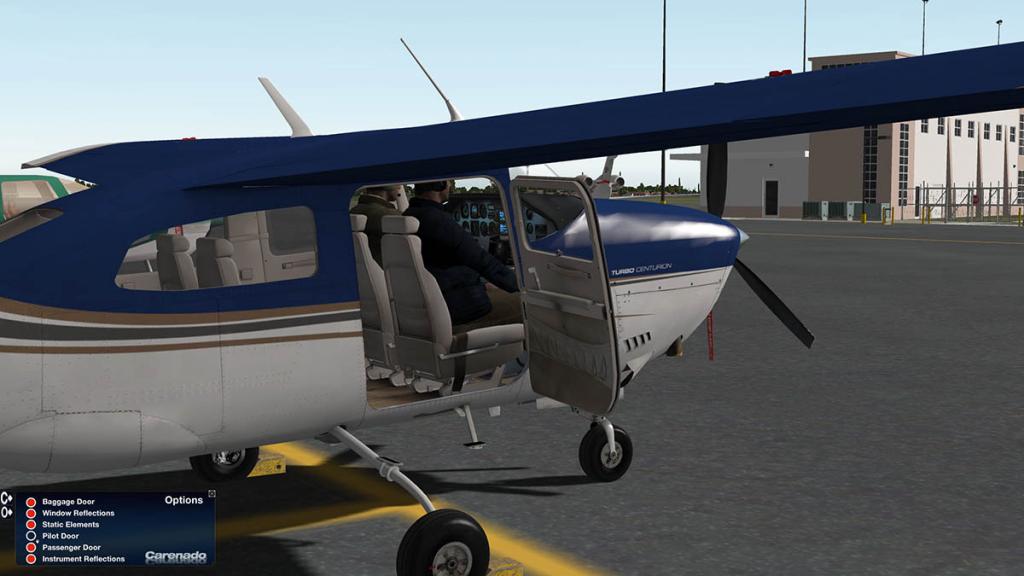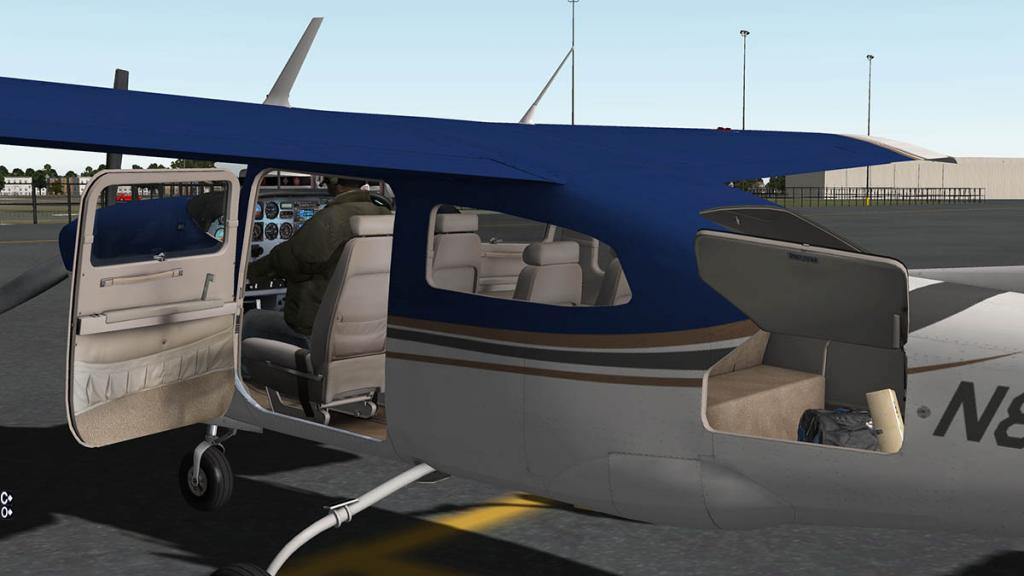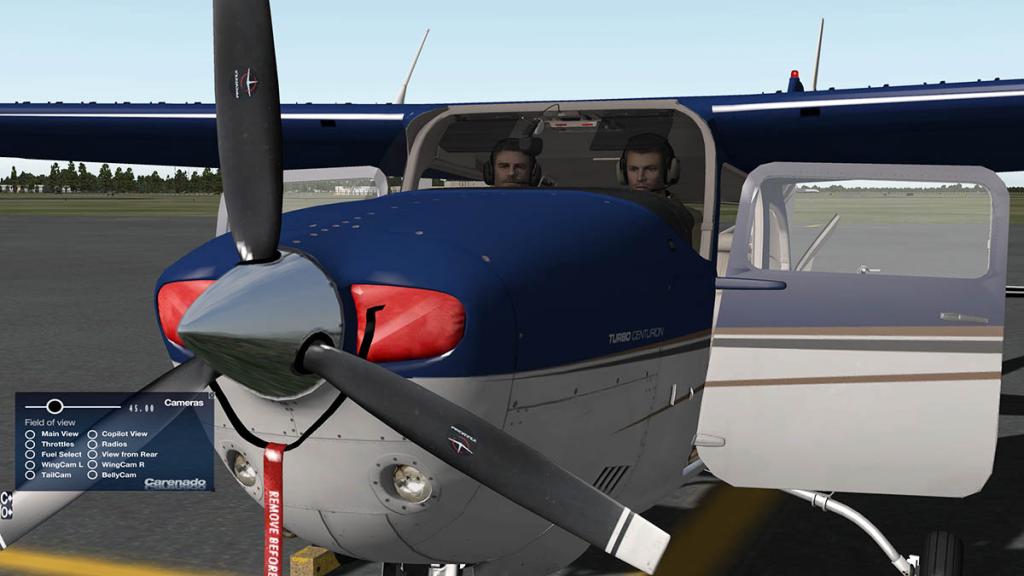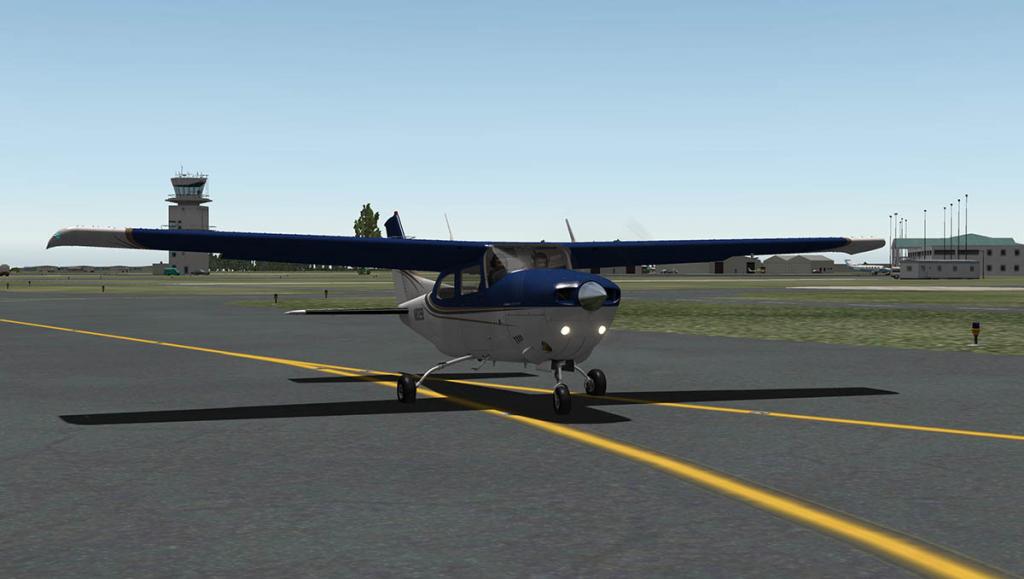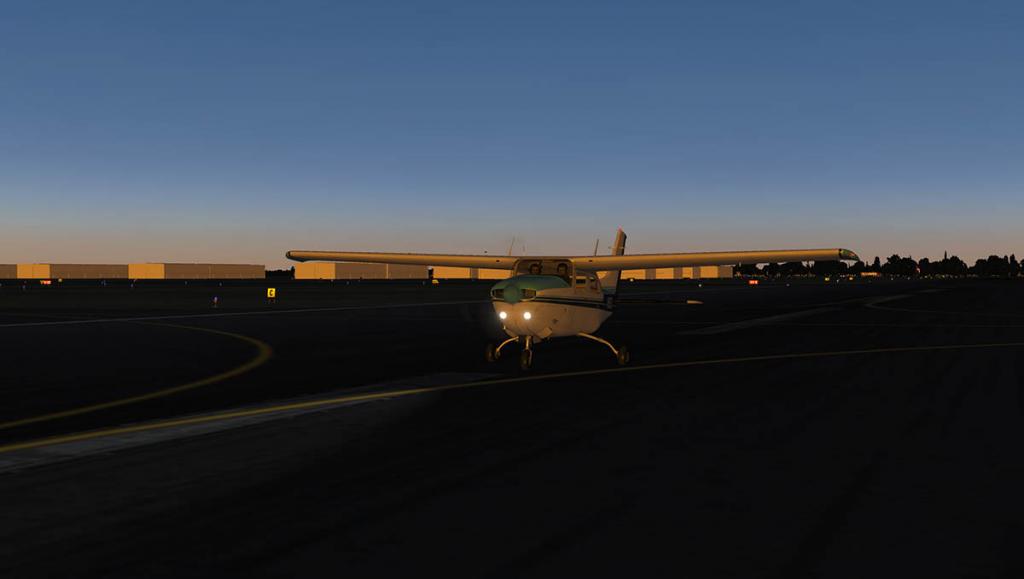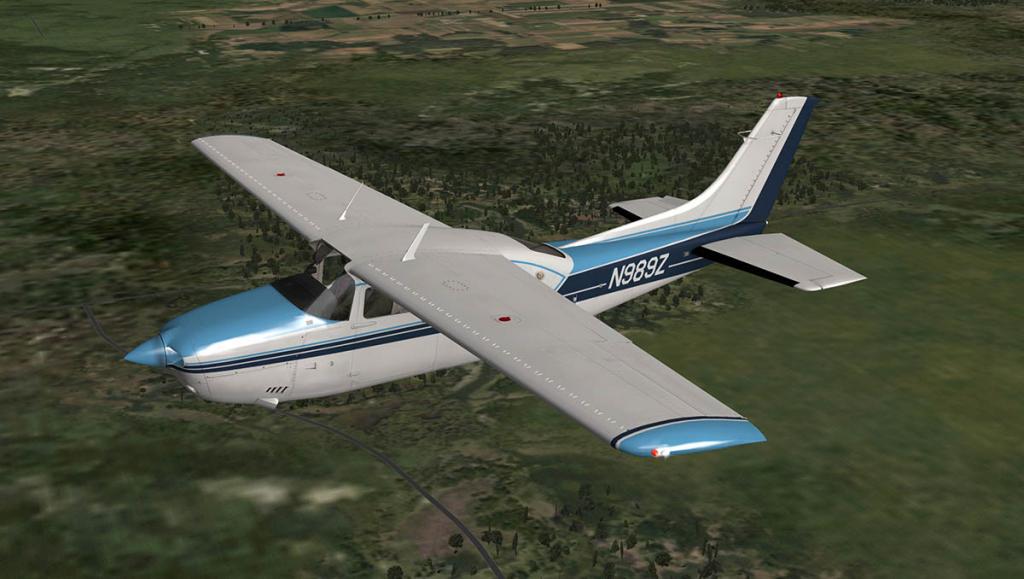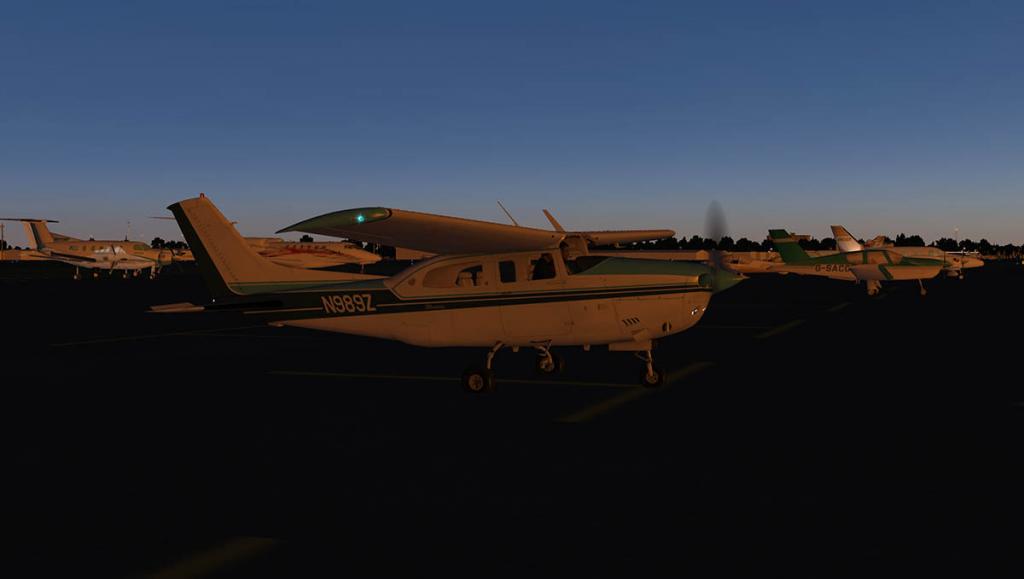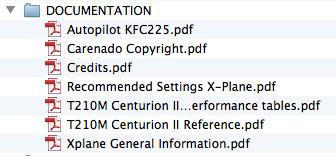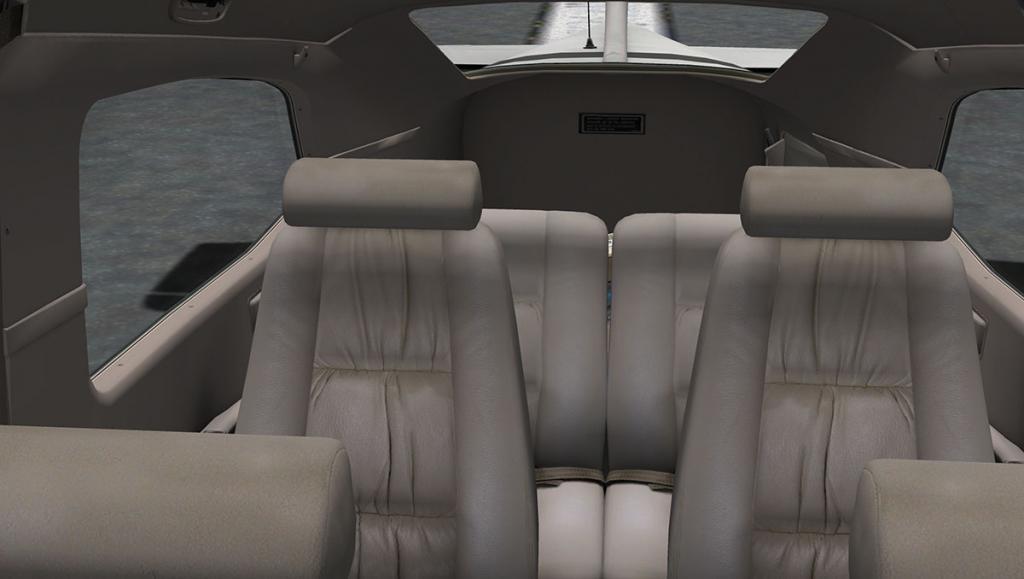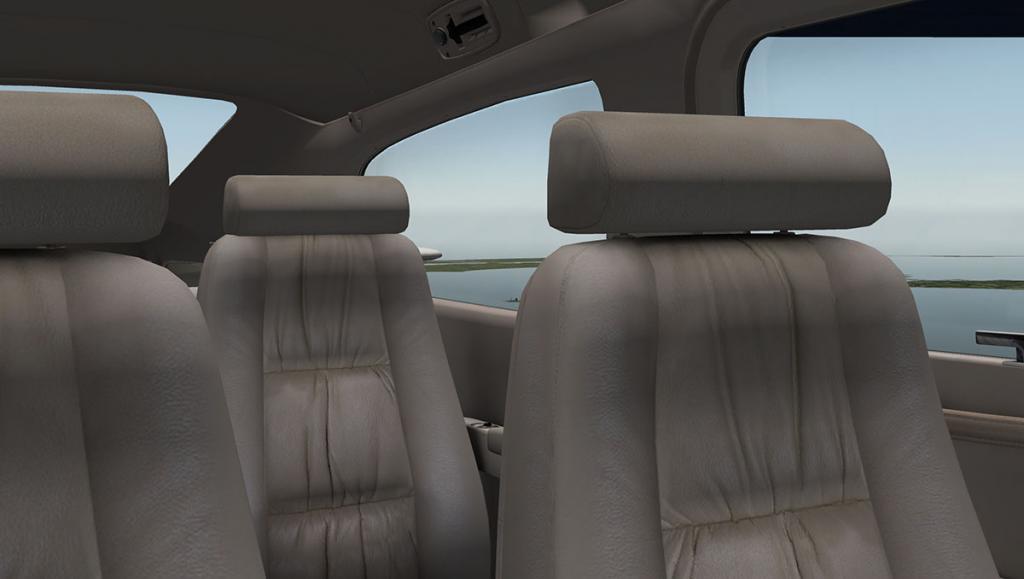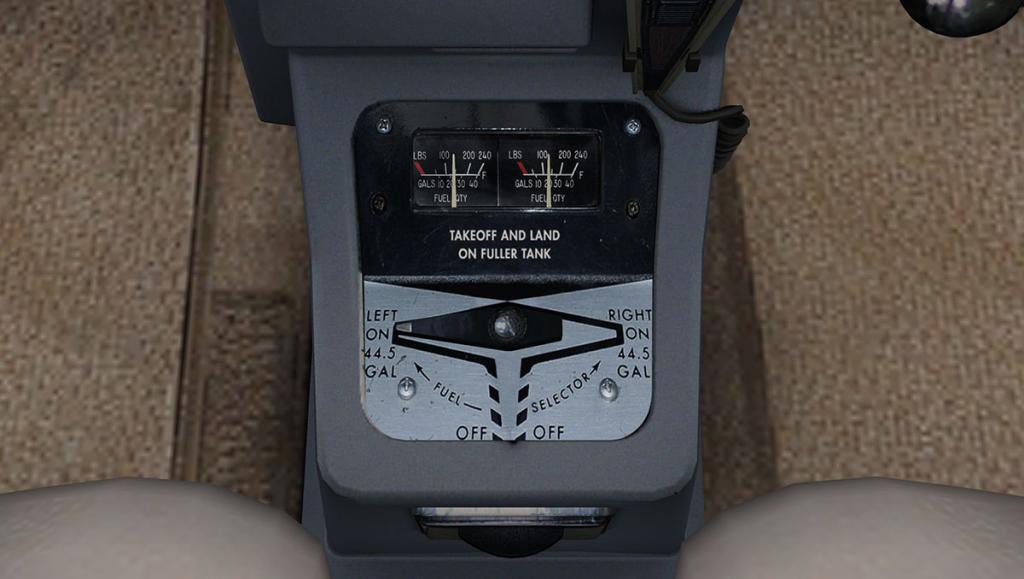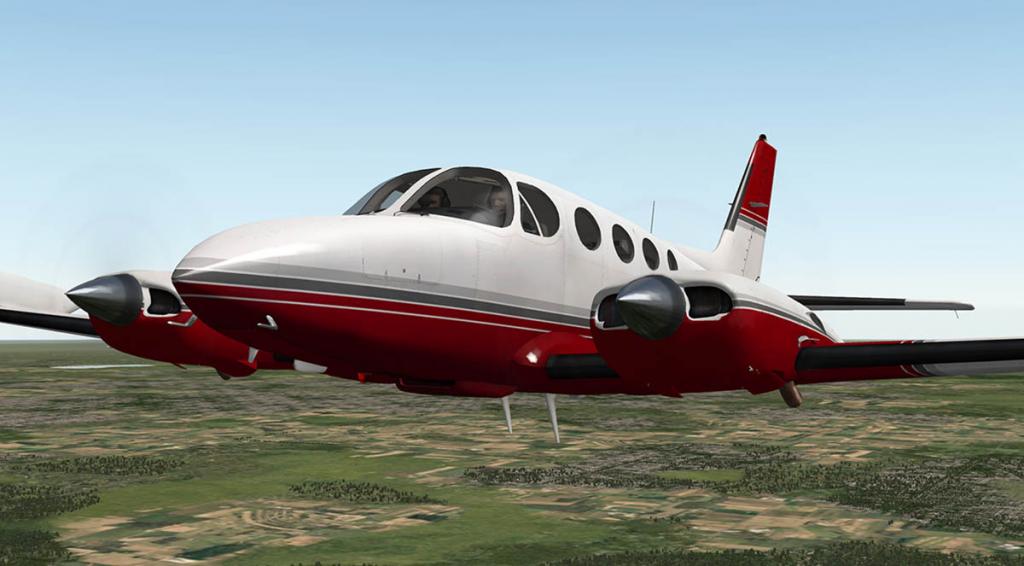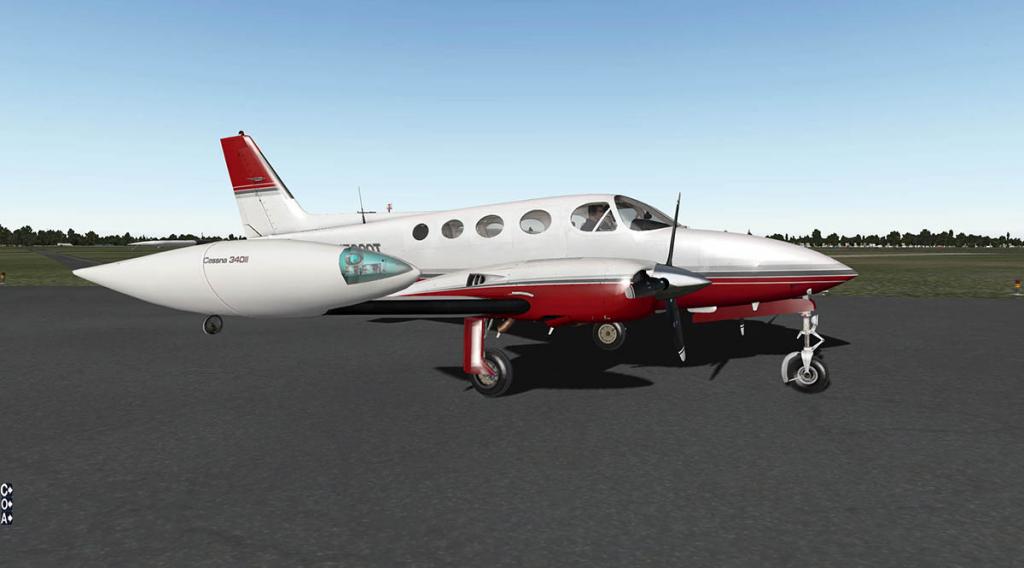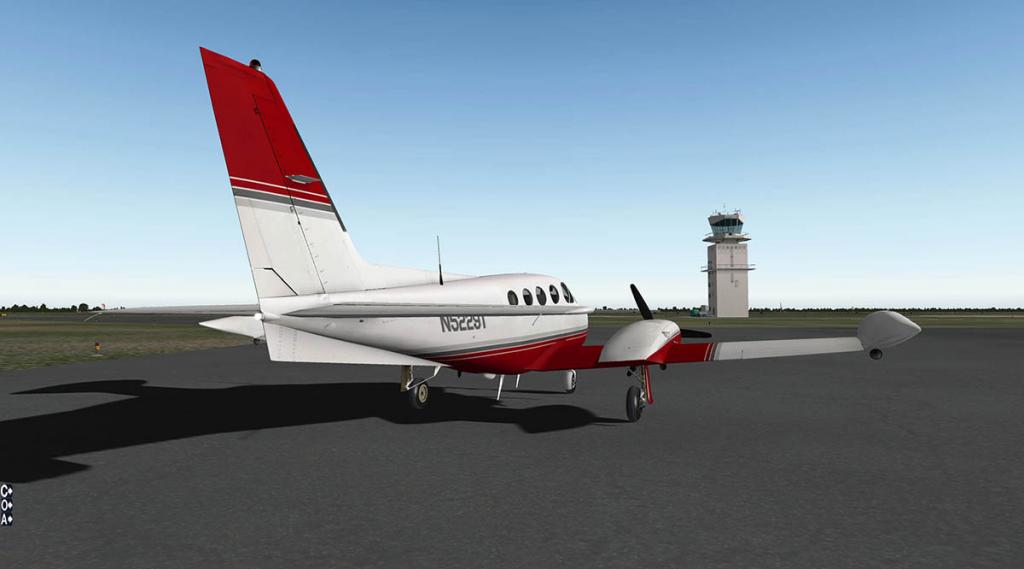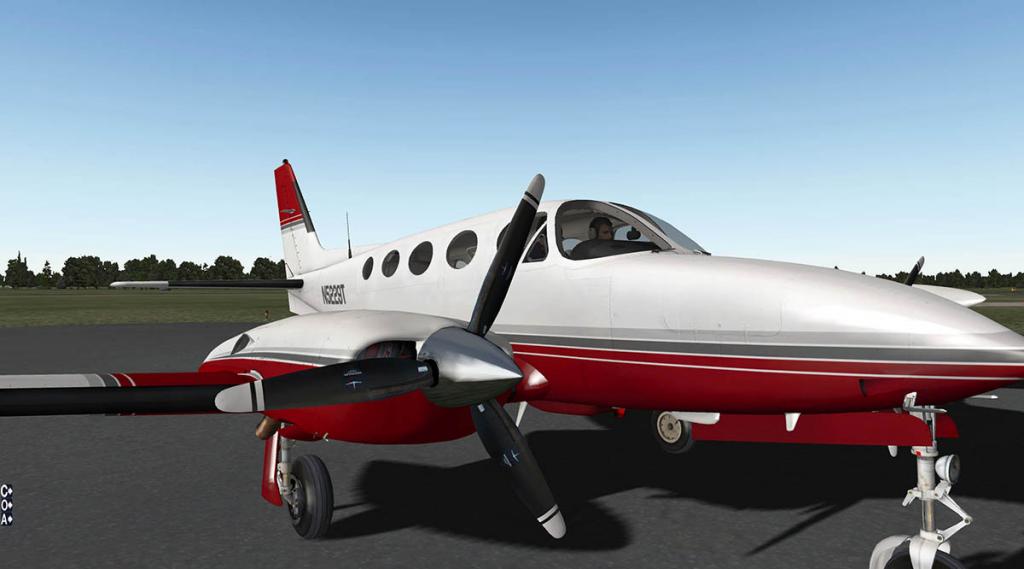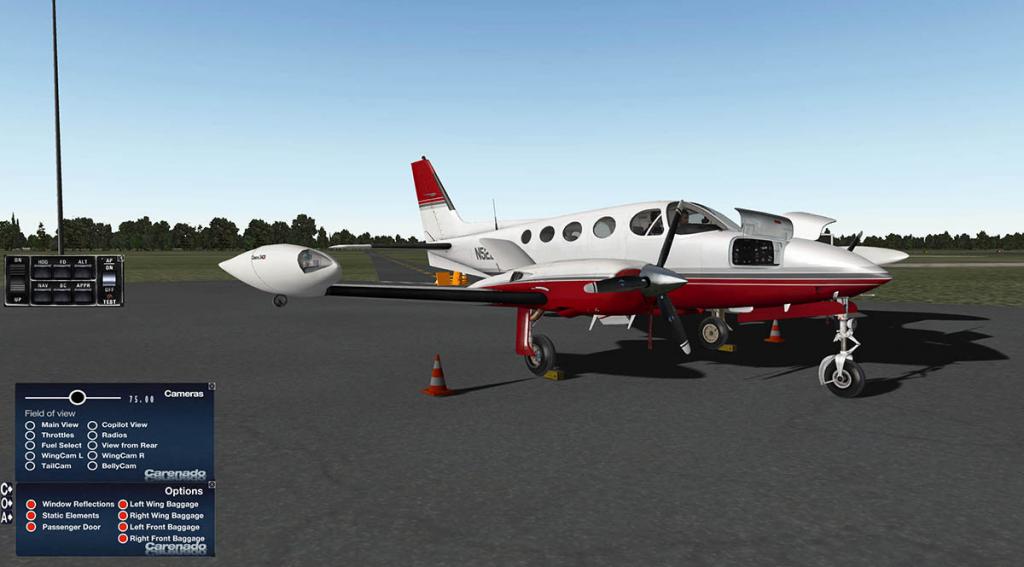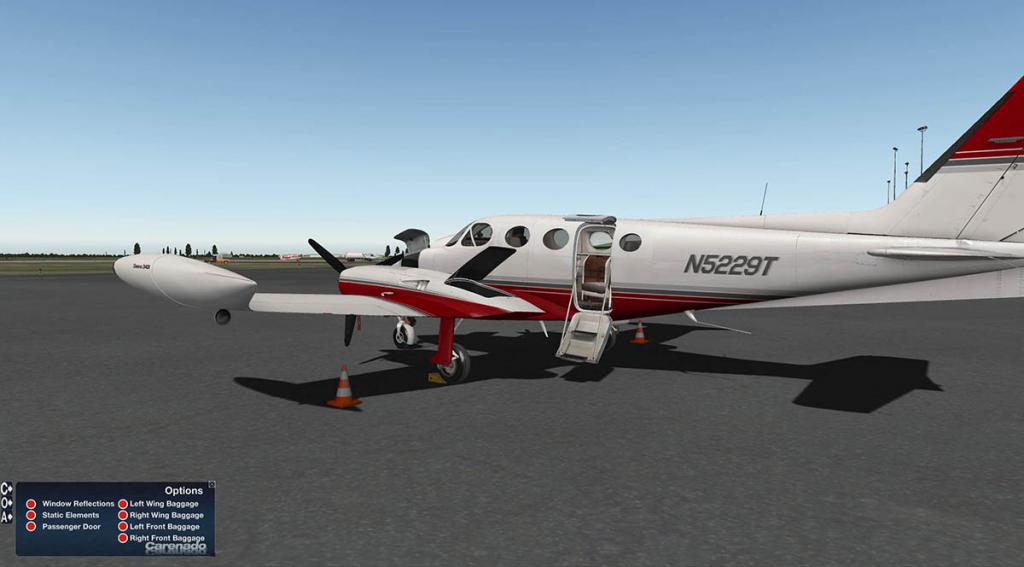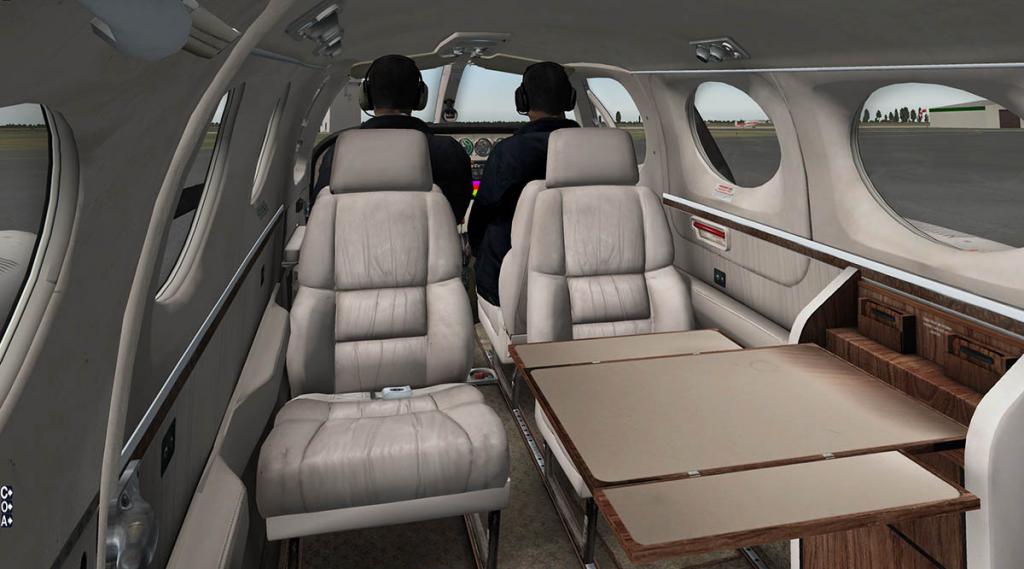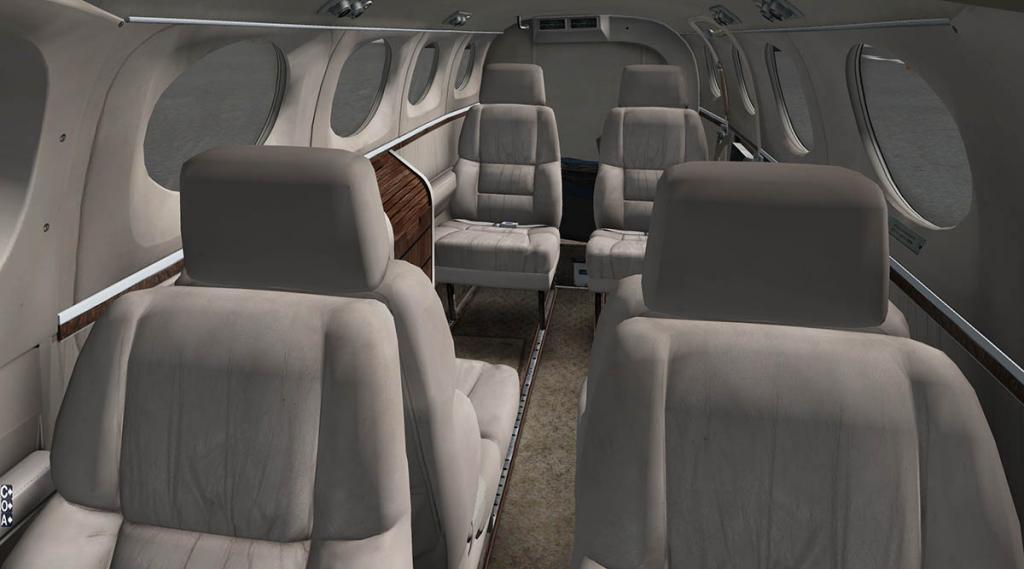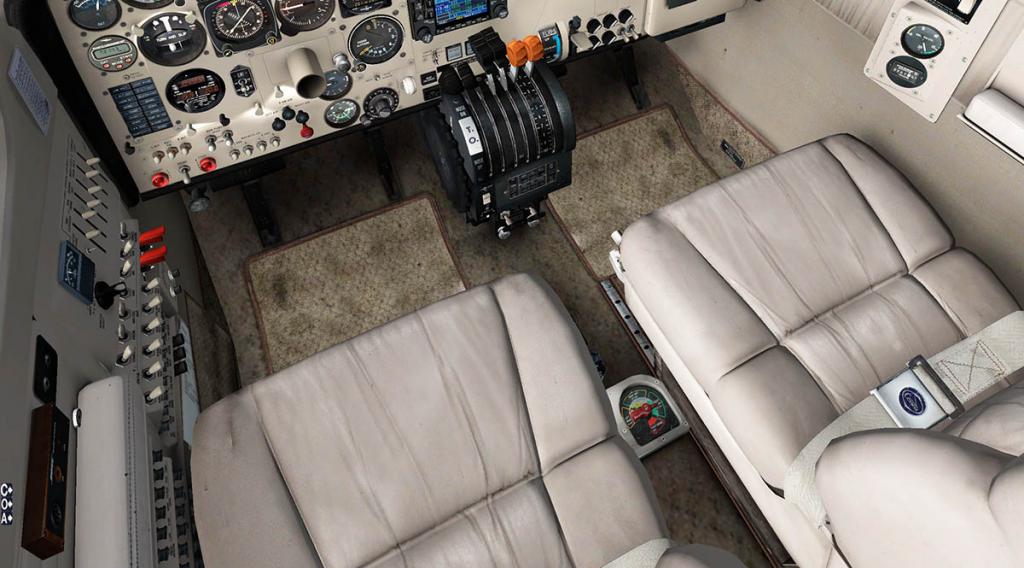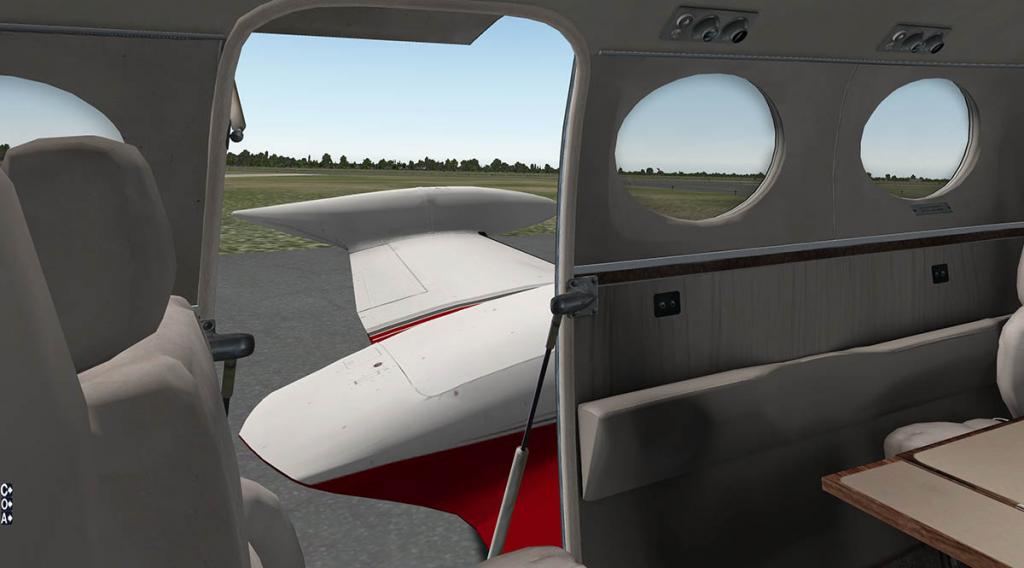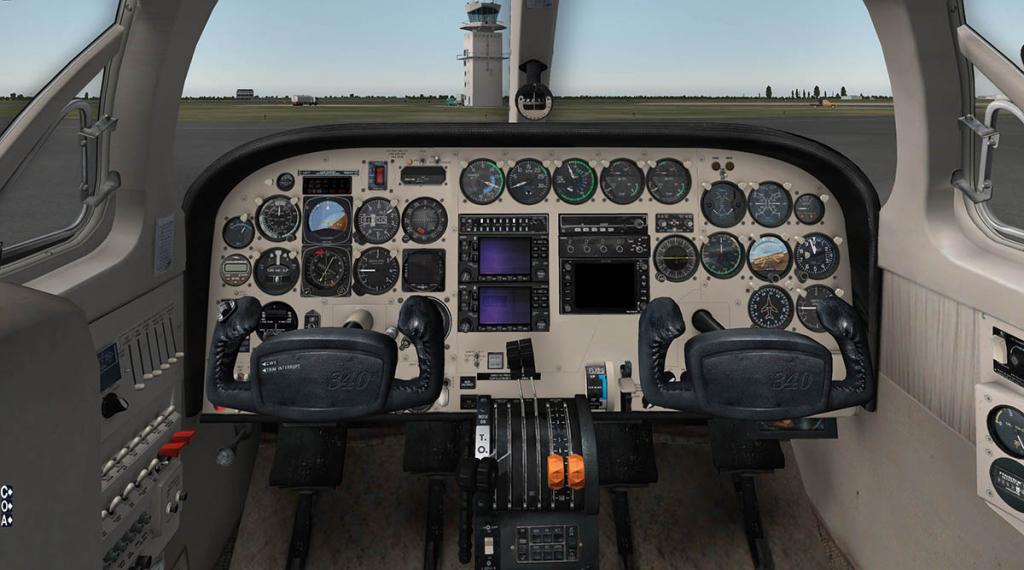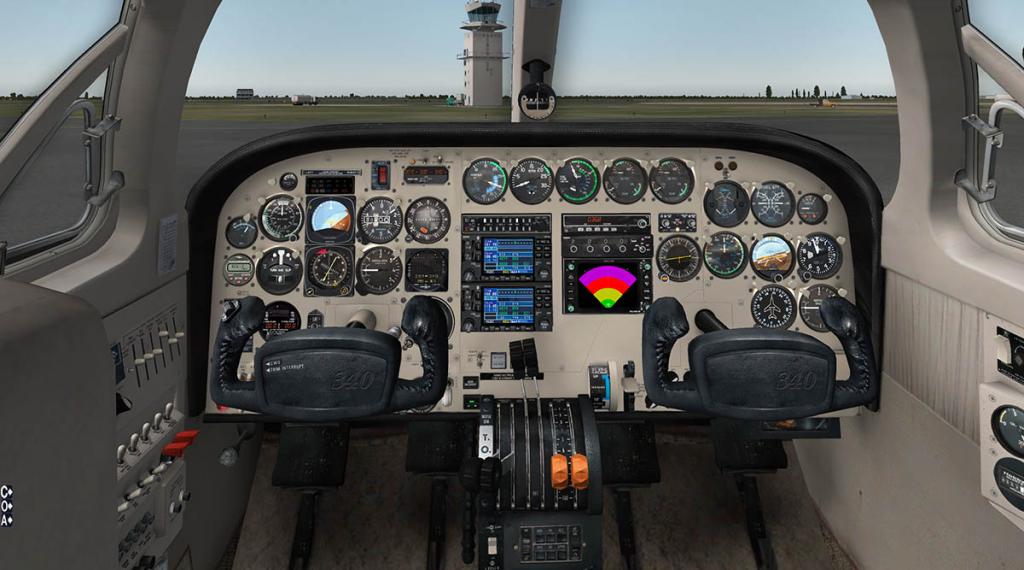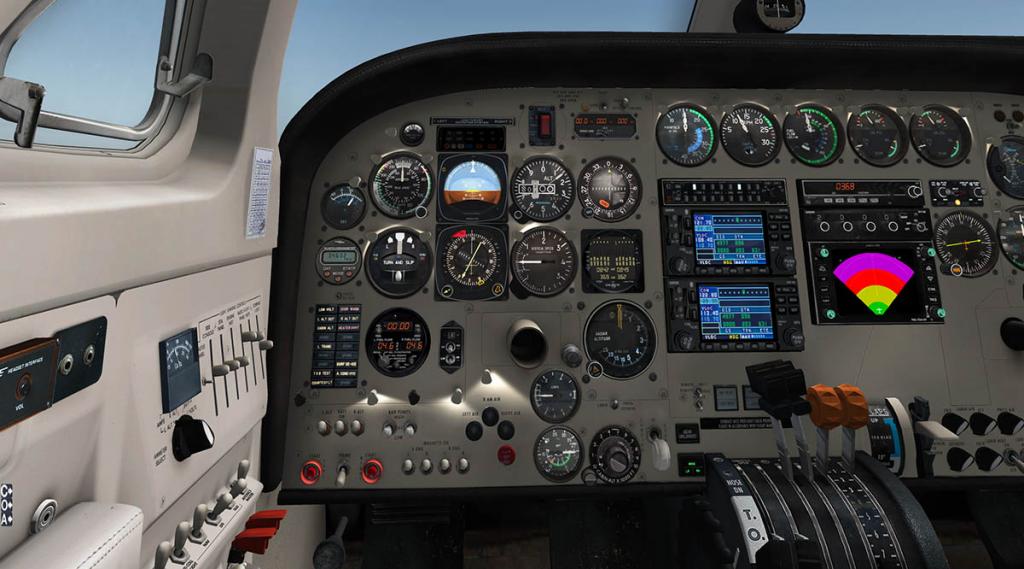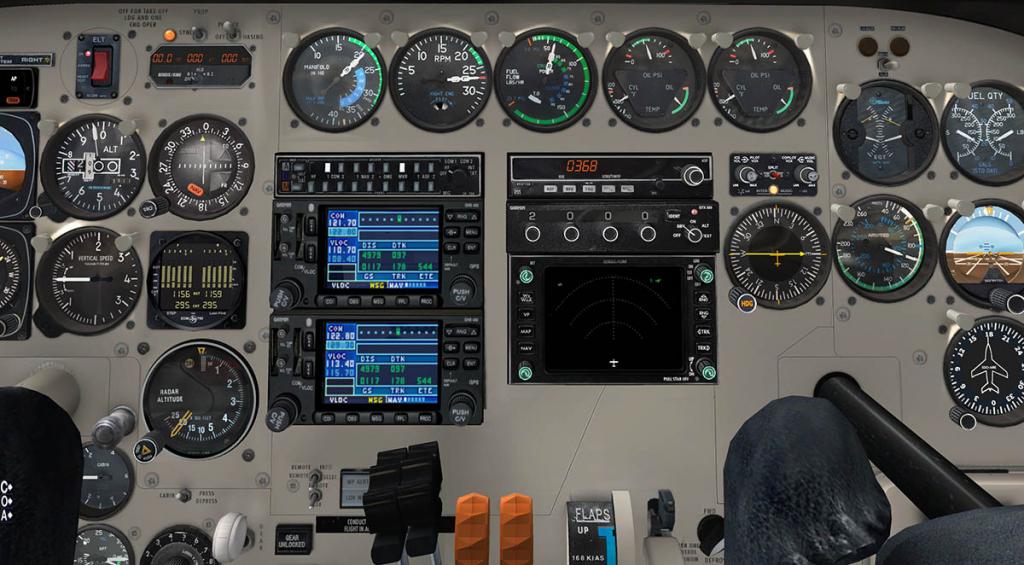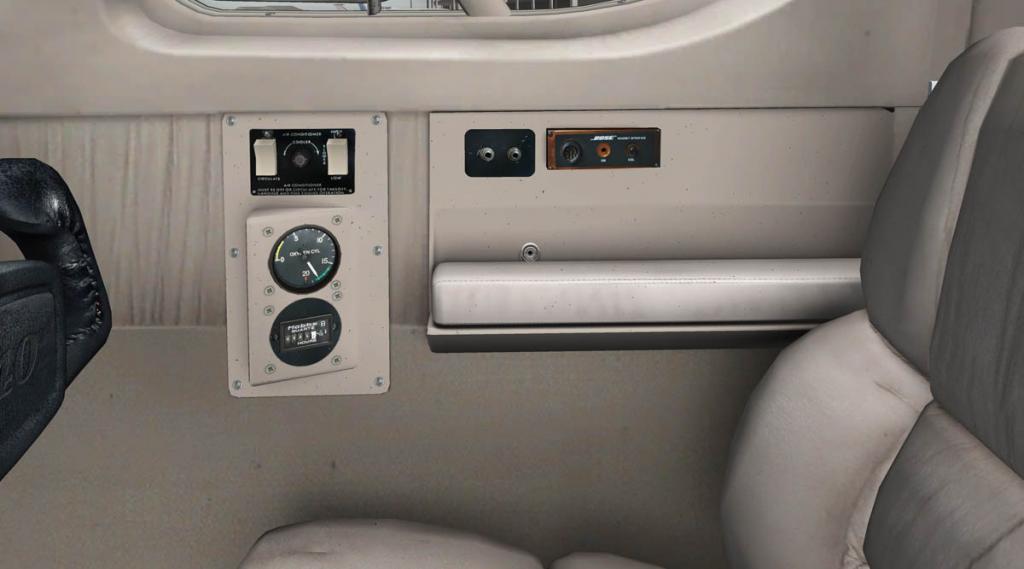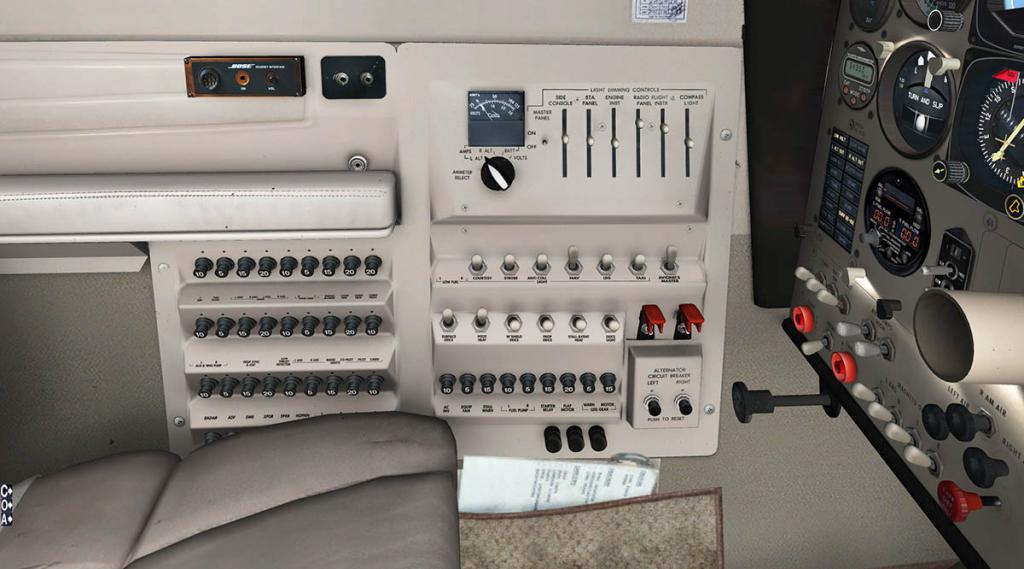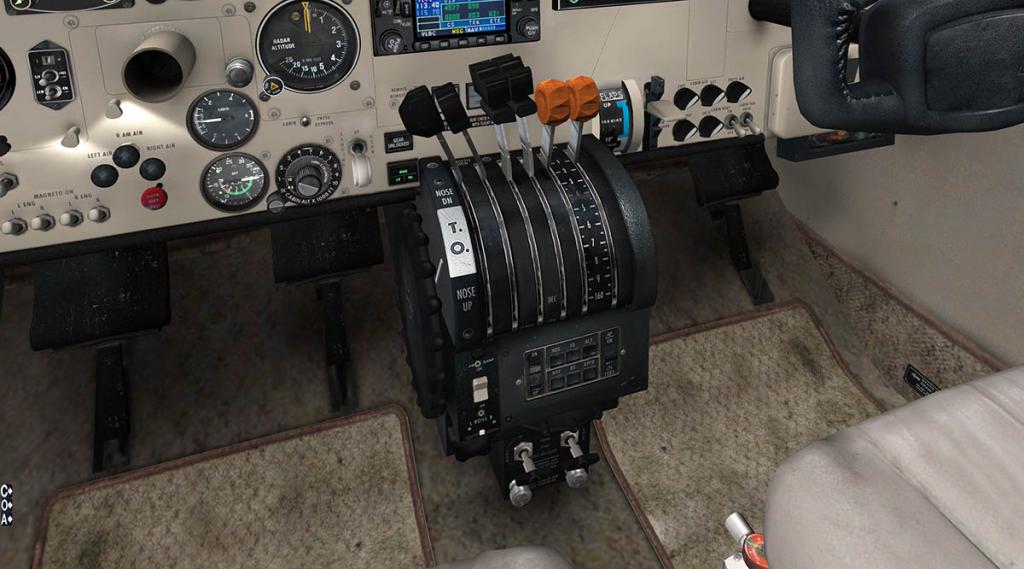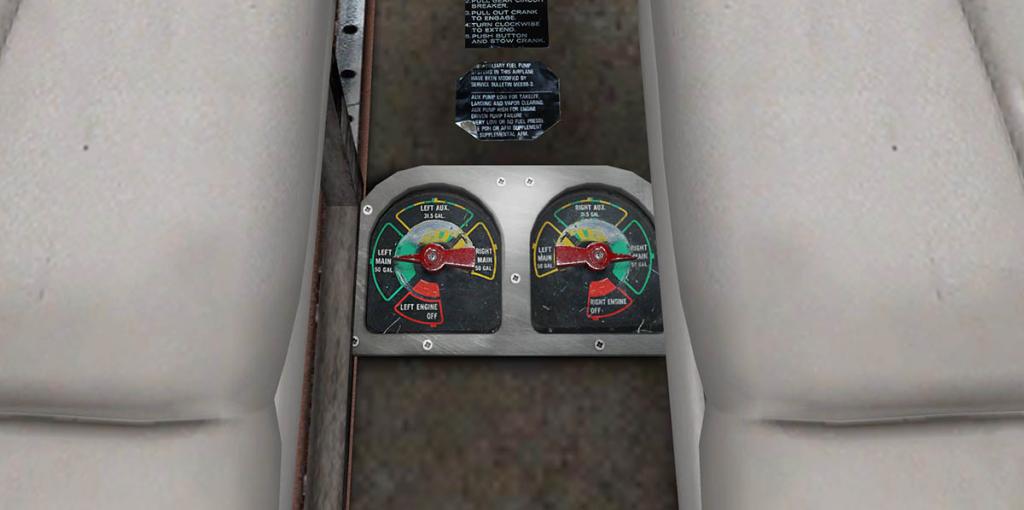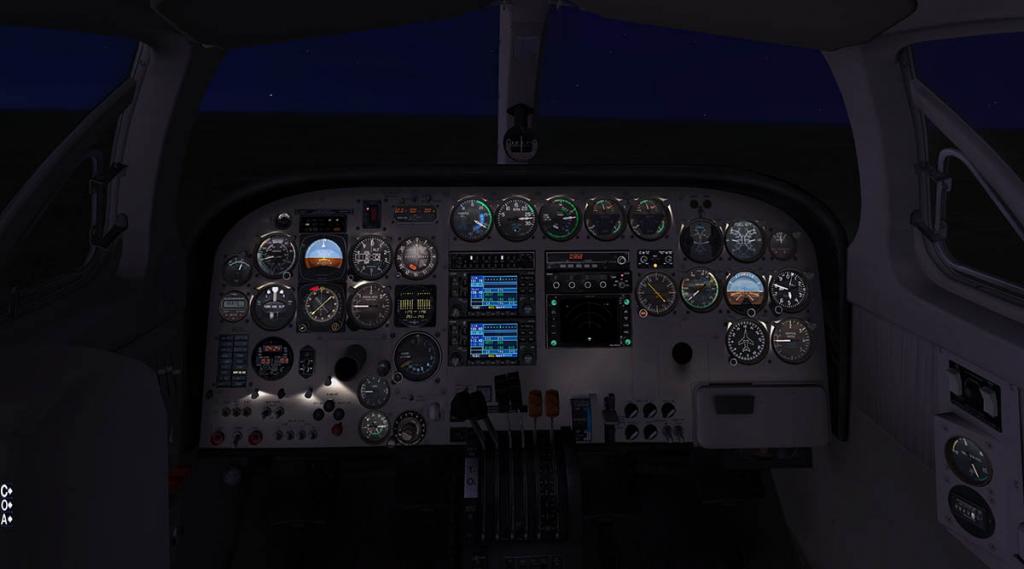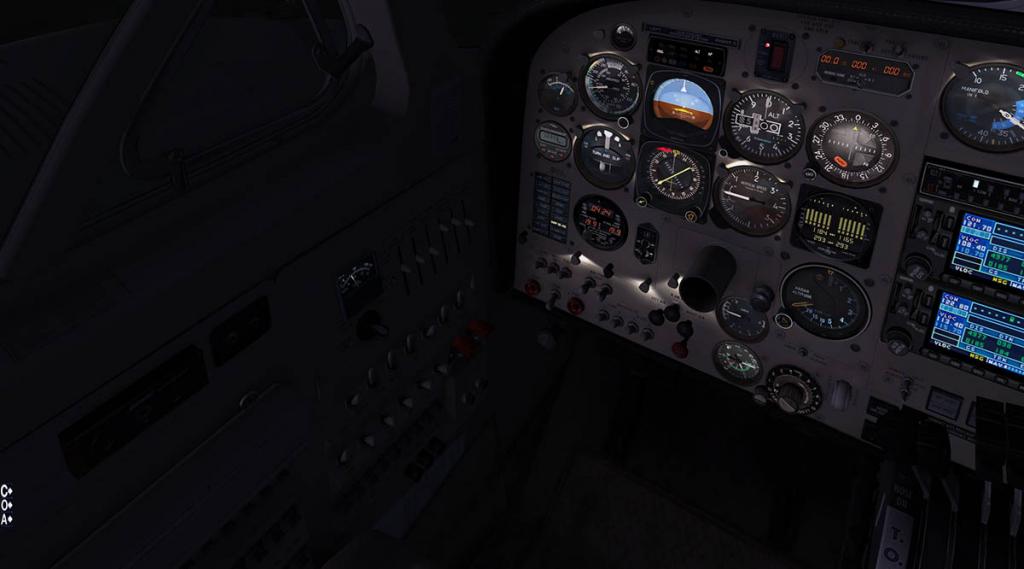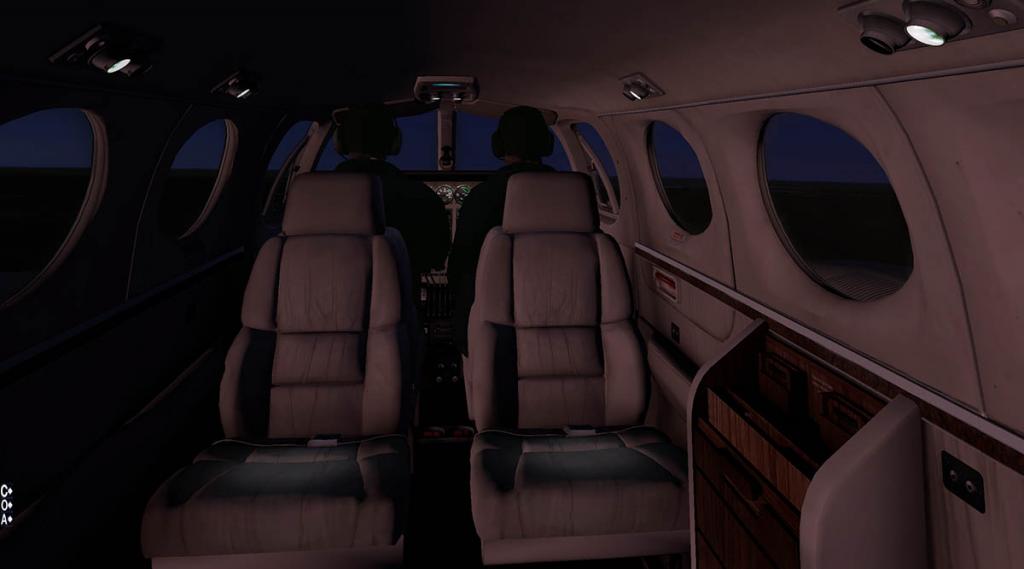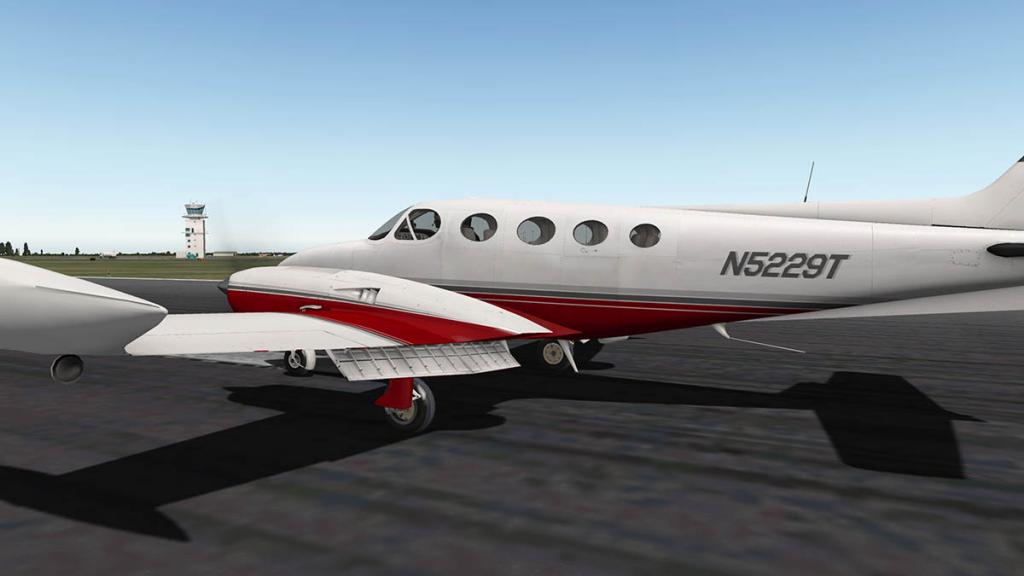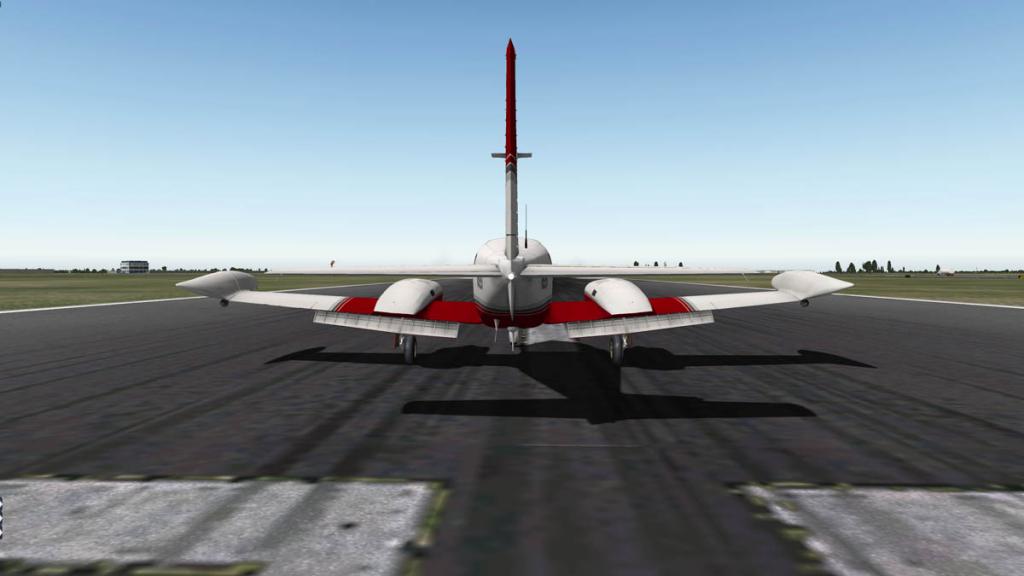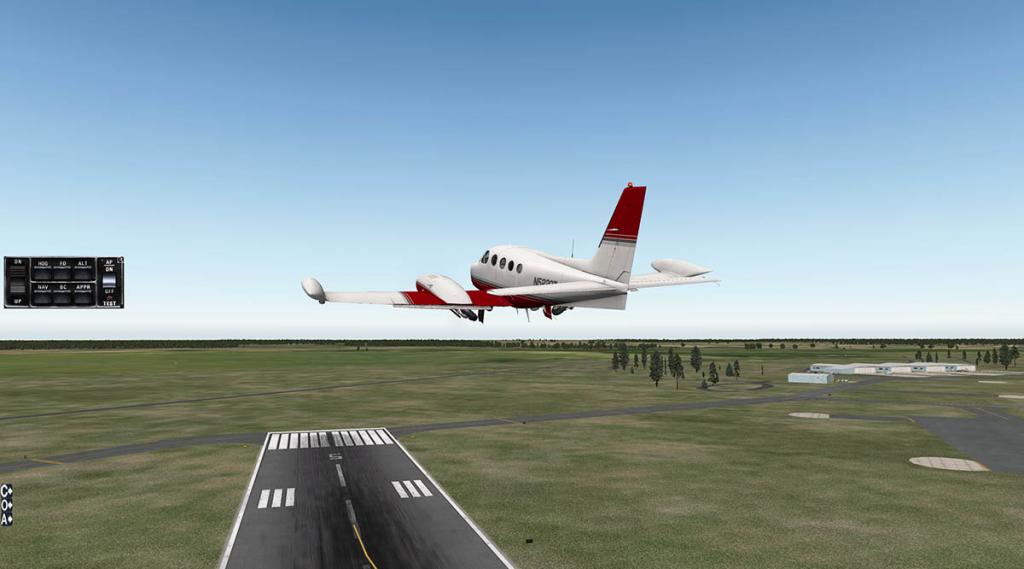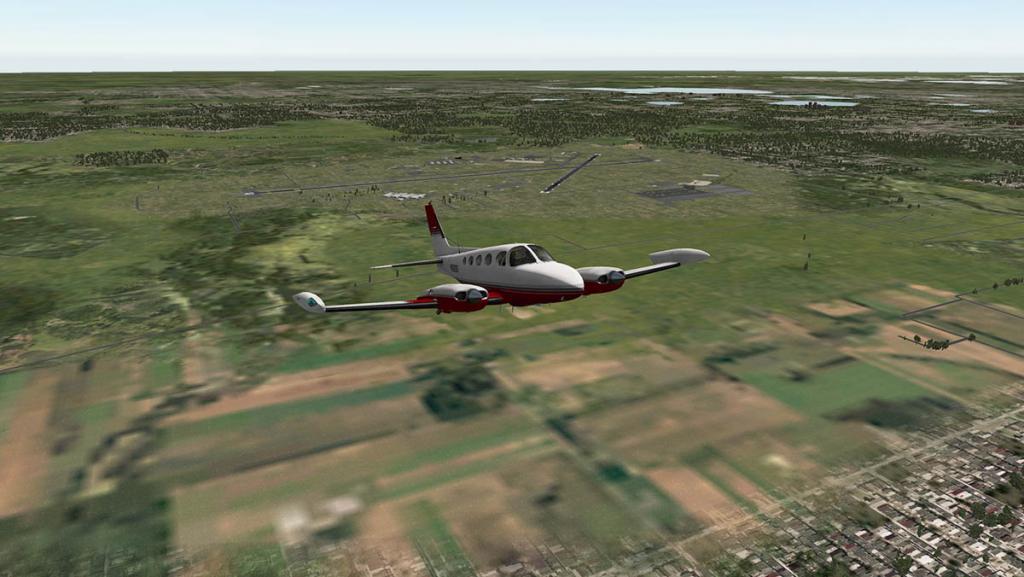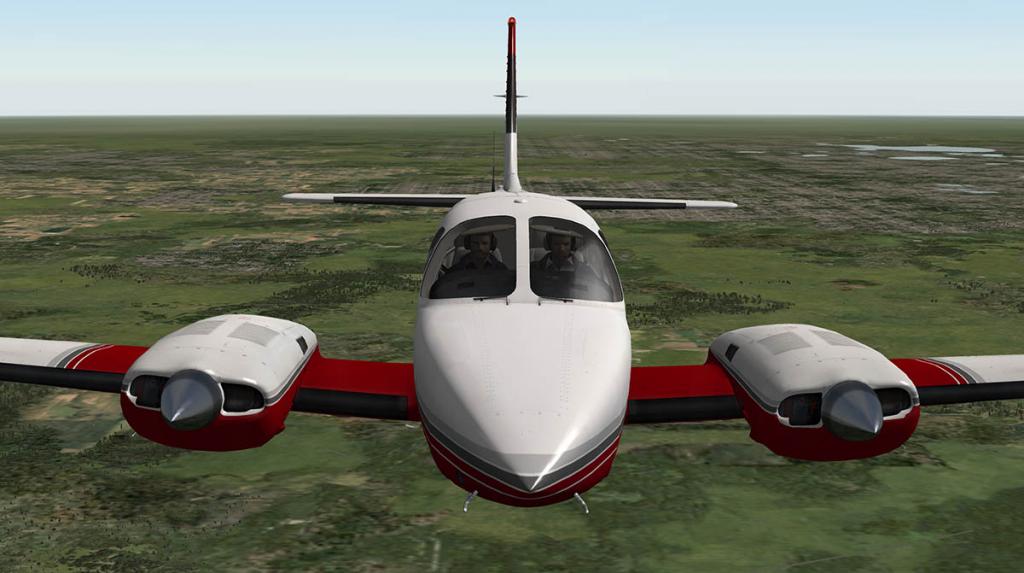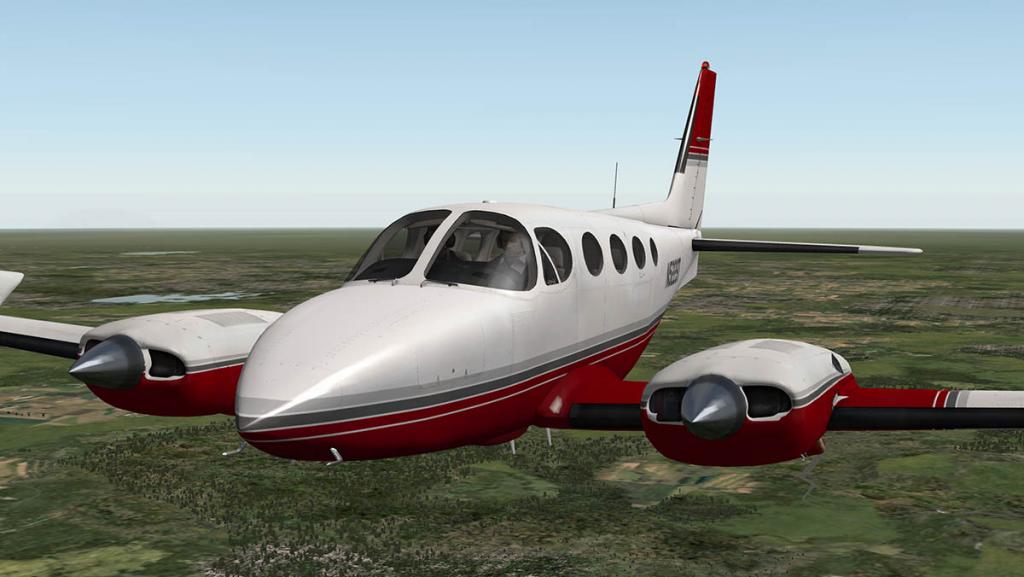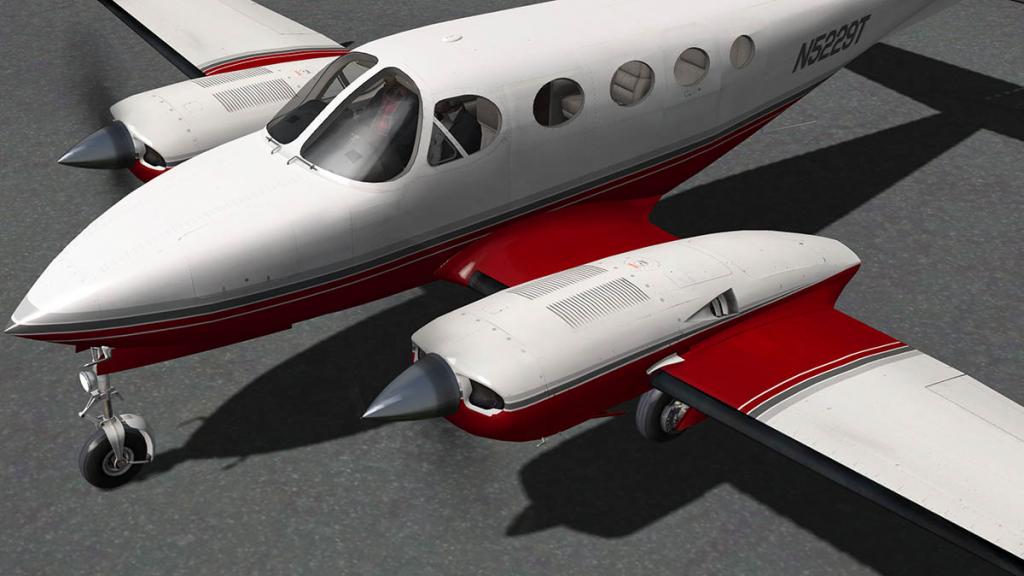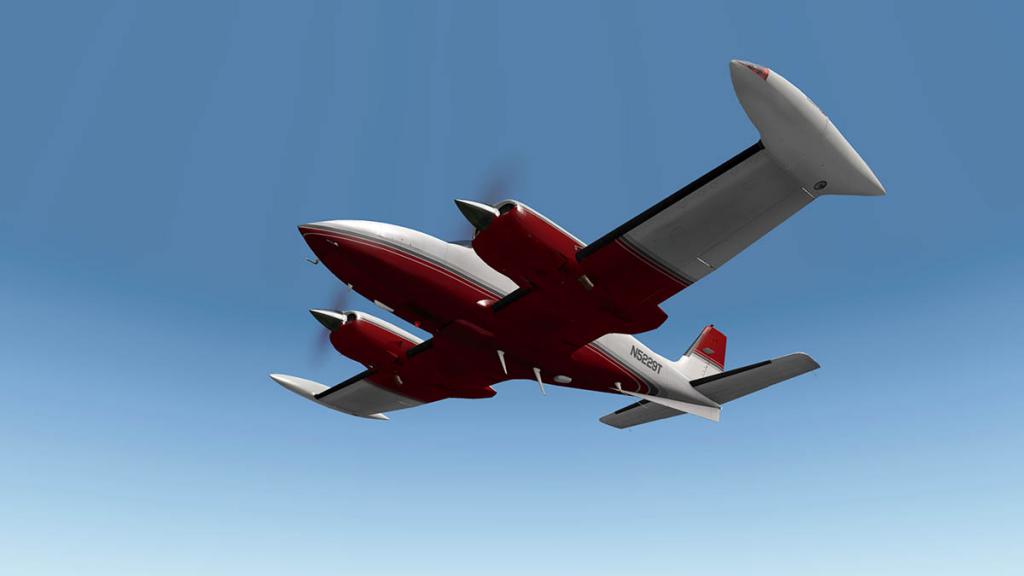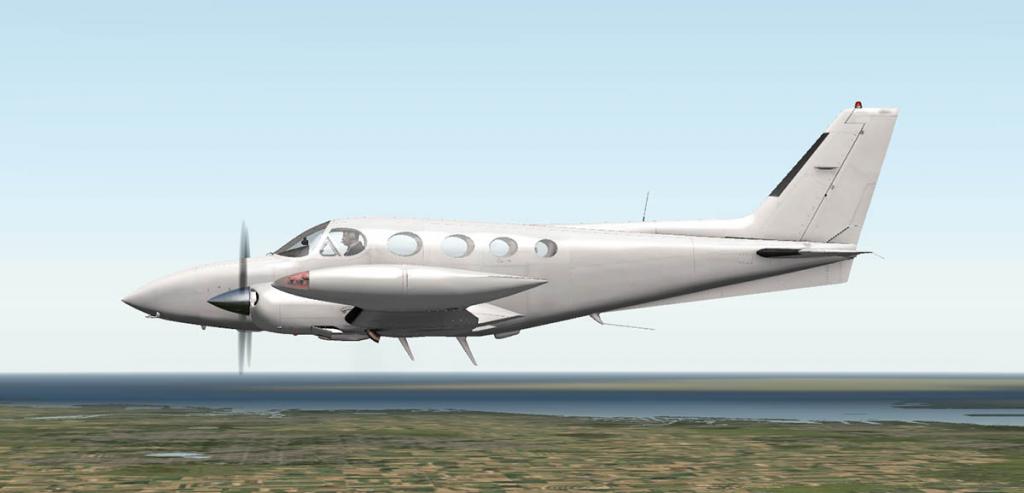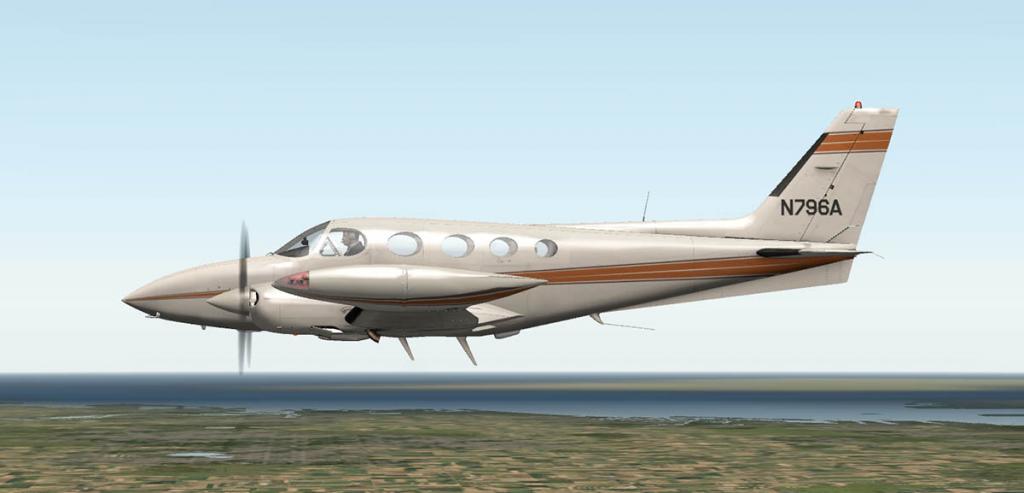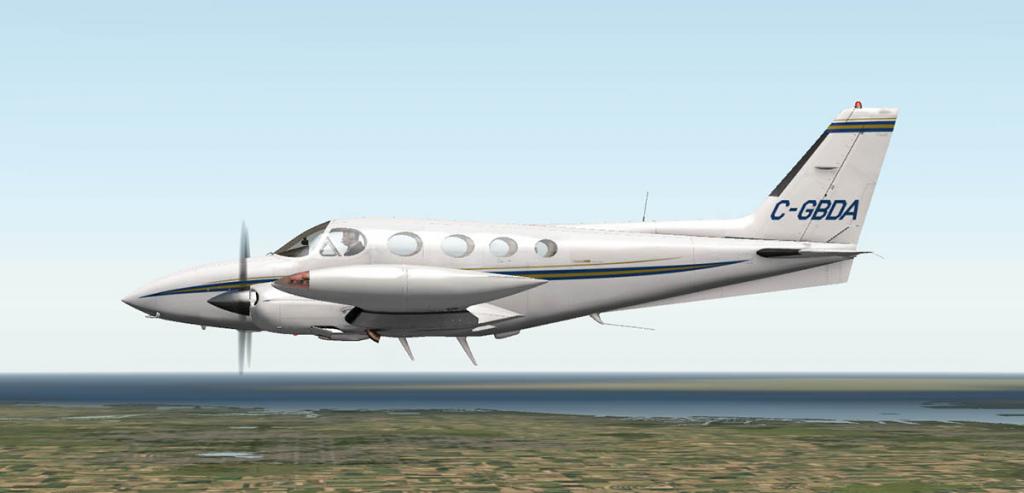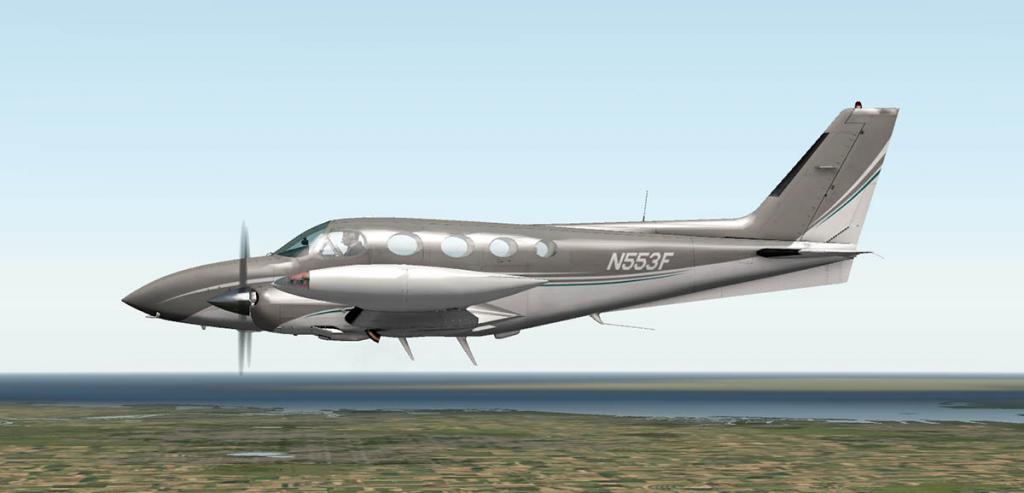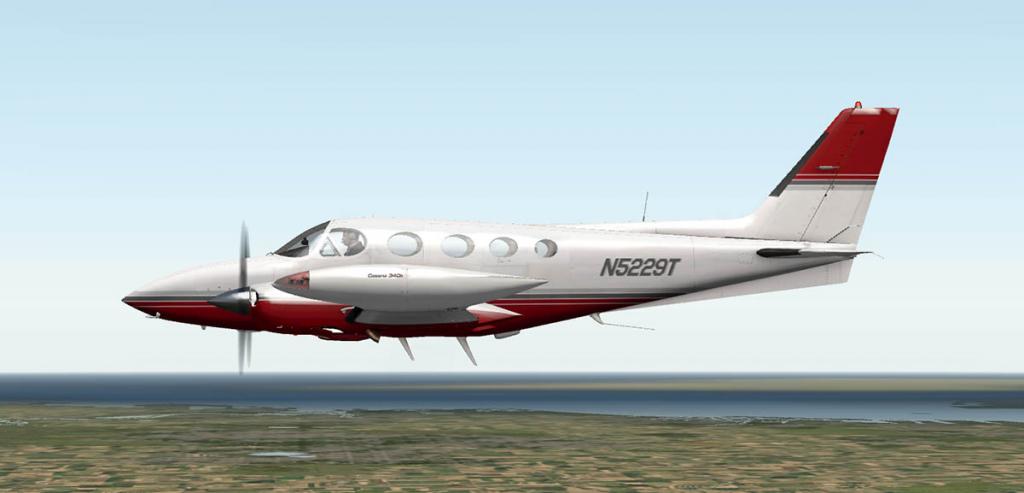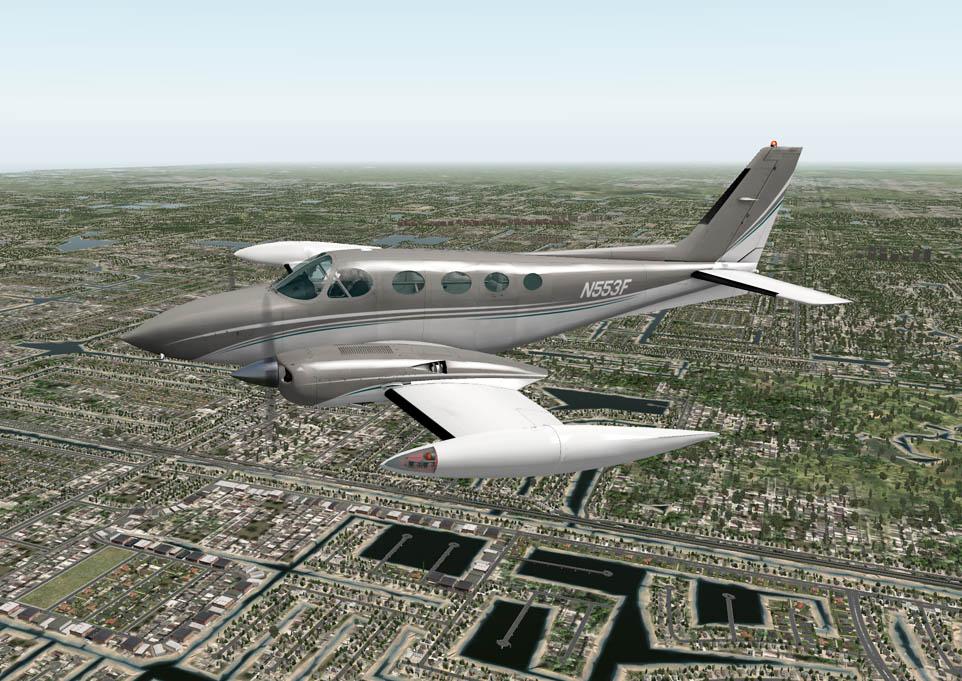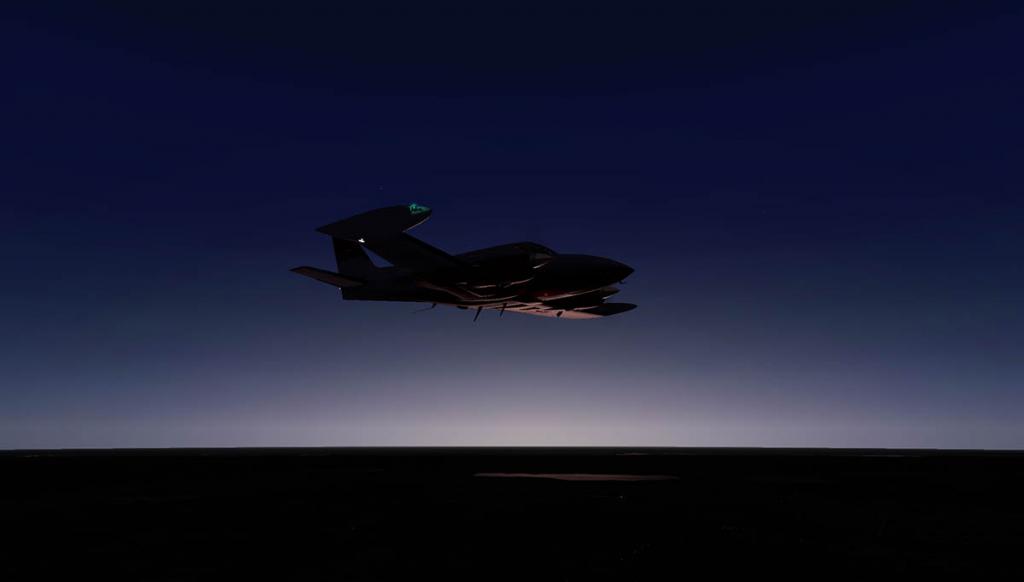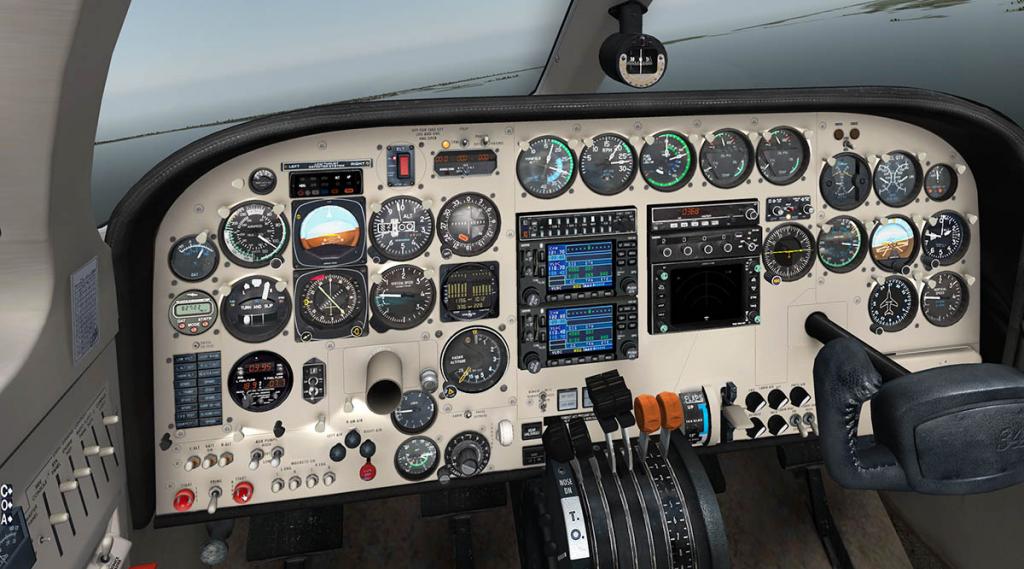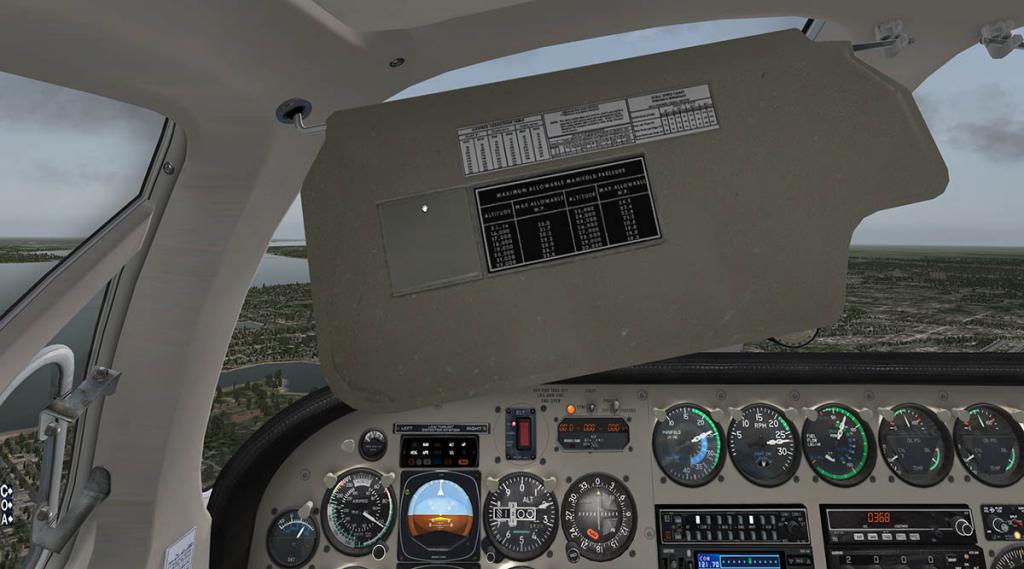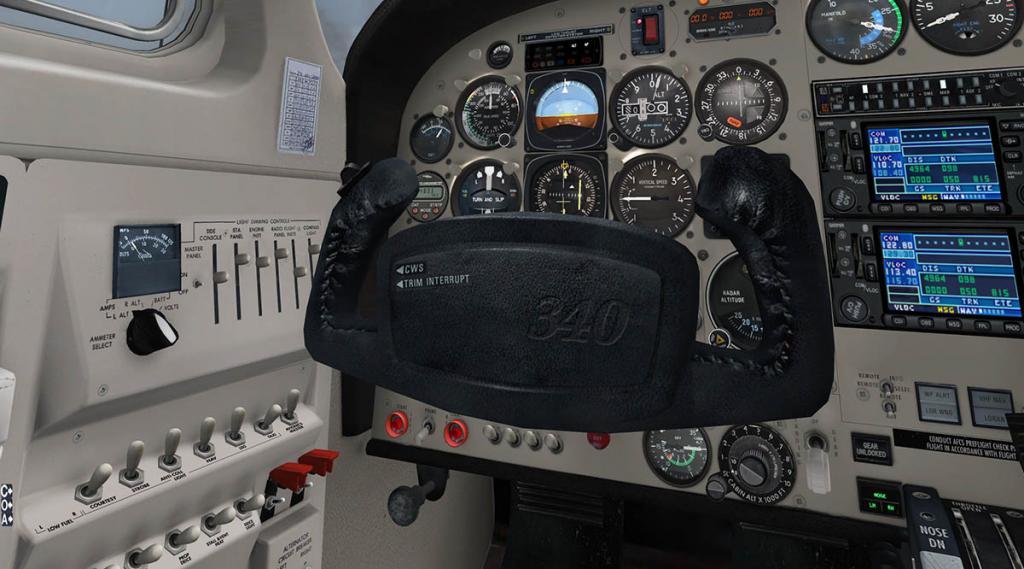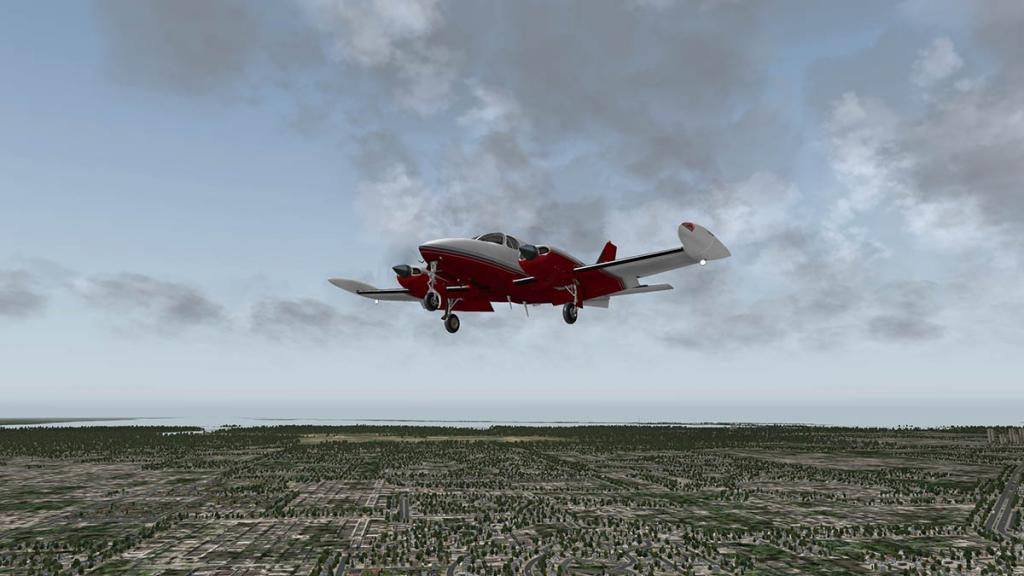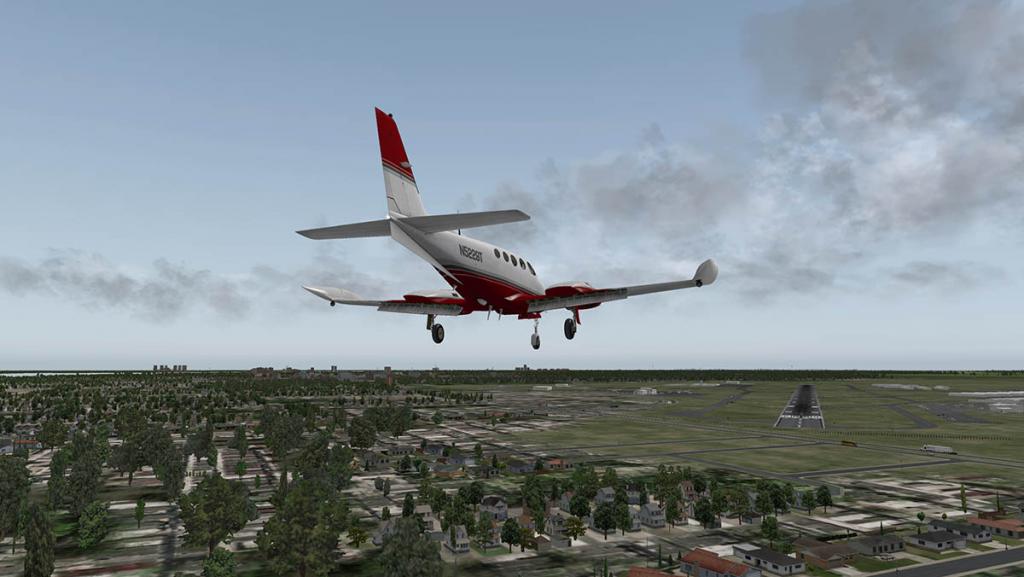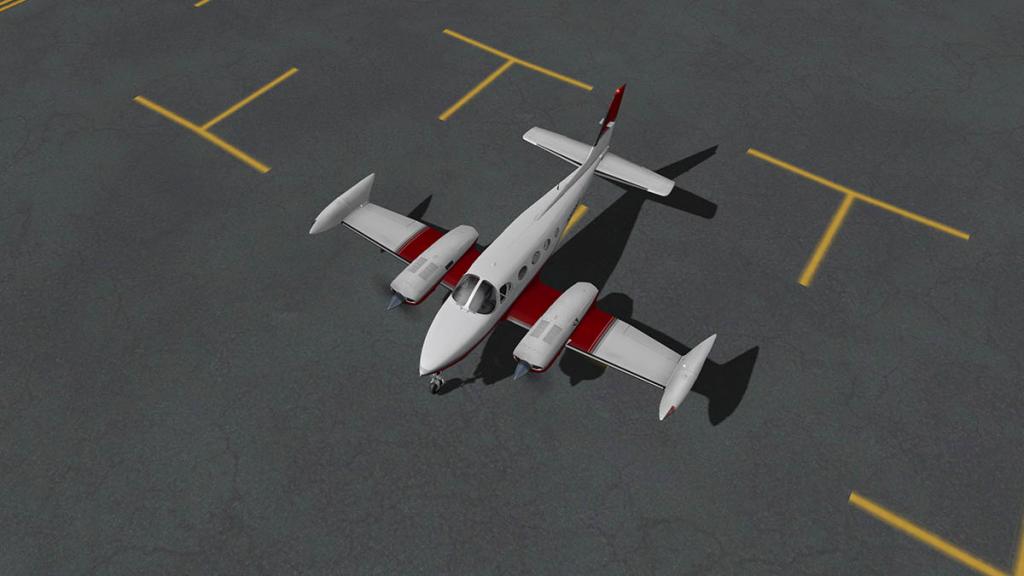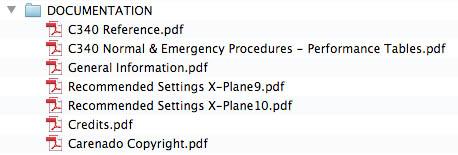Search the Community
Showing results for tags 'Carenado'.
-
Now Released! : Carenado PA46 Malibu Mirage 350P HD Series Carenado has released their next aircraft for X-Plane. The Piper PA46 Malibu Mirage 350P. Price is US$29.95 and NOW AVAILABLE from the X-Plane.OrgStore The Piper PA-46 Malibu Mirage 350P is a five seat and one pilot aircraft. It is powered by the single powerful Textron Lycoming TIO-540-AE2A 350 hp (260 kW) engine and has a new wing over the standard model. And the aircraft is currently still in production. . Features Include : HD quality textures (2048 x2048) 3D gauges Volumetric side view prop effect Original HQ digital 3D stereo sounds recorded directly from the real aircraft Volumetric side view prop effect Advanced exterior HDR lighting system. High quality animated pilots Customizable panel for controlling windows transparency, instrument reflections and static elements. Real behavior compared to the real airplane. Real weight and balance. Tested by real pilots. Realistic night lights effects on panel and cockpit. External and Internal lighting is as usual in the very high quality class from Carenado. Included in the package: 5 HD liveries 1 HD Blank livery PA46 Emergency Checklist PDF PA46 Normal Procedures PDF PA46 Performance Tables PDF PA46 EMIS PDF Autopilot and AVSS PDF Recommended Settings PDF The Malibu Mirage will be Available on the X-Plane.OrgStore Soon... Review to come as well. Technical Requirements: Windows XP - Vista - 7 (32 or 64 bits) or MAC OS 10.6 (or higher) or Linux X-Plane10.21 (or higher) 2.5 GHz processor - 4GB RAM - 1GB VRAM 300MB available hard disk space Stephen Dutton copyright©2014 : X-Plane Reviews All images in this post are courtesy of Carenado©2014
-
Aircraft Review : Carenado C90B King Air HD Series v1.1 Route : KHND - Henderson Executive to KGCN - Grand Canyon NP One of the great tourist routes (on everyone's bucket list) is a flight over the Grand Canyon in Arizona, US$250 is the average fare. Nowhere else does the aircraft really come into its own for viewing spectacle than from the position of a couple of thousand feet above this monstrously huge gnawed dug out mountain in the Arizona desert. Most operators leave for the Grand Canyon from Las Vegas's, McCarren International. But if you want the private exclusive tour then you would then head up north to Henderson Executive (KHND) and pick up a private operator that will treat you like a VIP or a celebrity for the day. It costs a lot more of course but you also get the free French champagne thrown in as part of the deal. The ideal aircraft to fly four to six passengers in comfort is the Beechcraft C90B, with its big windows, but also the power to get to the Grand Canyon quickly adds to the benefits. In the fleet we also have the X-Plane Default C90B, and a very nice aircraft it is. If you have already bought X-Plane 10 (It comes with X-Plane9 as well, but not the upgraded version) then it comes free with the simulator, and it is with no-doubt the best default aircraft in your General Aviation Folder. For me though today I got the newest addition to the fleet the just released Carenado C90B. Outwardly they look very much the same aircraft but then get closer to the Carenado version and things start to get a lot better. Carenado provide a menu (O) of Options (bottom left). Here you can give the C90B tinted windows, static elements (including chocks, warning cones but no tags, and the pilots stay seated in the cockpit), You can open the main "Passenger door" on the left rear and even open up the left and right engine cowlings. Want to check the engine oil or fluids before flight then, well now you can.... this adds to a great feature on the aircraft walkaround. The C90 is a seriously nice looking aircraft, it comes with Carenado's HD (High-Definition) series textures (2048 x 2048) and it shows in the quality of the livery. Get in very close and the detailing is superb. Panel detailing (with rivets) and vents are all very lifelike. The undercarriage is excellent with full struts, hydraulics and braking systems, and are all as real as... the real things. The Propellers are the standard quieter Hartzell four-blade, constant-speed and full-reversing 90-in diameter versions. And not the Raisbeck Swept Blade Turbofans, which were retrofitted to later C90 models. The C90's four distinctive chrome exhausts are beautifully crafted here. The wings with the updated (v2) lighting is excellent and so is the tailplane and tall tail, looking side on at the dimensions and the full perspective of the aircraft - it looks perfect. History of the C90B King Air The Beechcraft King Airs are a little confusing as they are listed in to two separate families. The Model 90 and 100 series are known as King Airs, while the Model 200 and 300 series were originally marketed as Super King Airs, with the "Super" being dropped by Beechcraft in 1996 (although it is still often used to differentiate the 200 and 300 series King Airs from their smaller stablemates). The Model 90 King Air was conceived as the Model 120 in 1961. In May 1963, Beechcraft began test flights of the proof-of-concept Model 87 with a modified Queen Air and fitted with Pratt & Whitney Canada PT6A-6 engines. On 14 July, Beech announced a new type, and a month later began accepting orders for the "King Air", with deliveries to commence in the autumn of 1964. After 10 months of test flying the Model 87 was delivered to the United States Army as the NU-8F in 1964. On 24 January 1965 the first definitive prototype, by now designated Model 65-90 and also fitted with PT6A-6 engines, flew for the first time. The first production aircraft was delivered on October 8, and by the end of the month 152 aircraft had been ordered. The Model C90 was introduced in 1971, with the wingspan increased over earlier models by 4 ft 11 in (1.50 m) to 50 ft 3 in (15.32 m), Maximum Take-Off Weight (MTOW) increased by 350 lb (160 kg) to 9,650 lb (4,378 kg) and it was fitted with the newer upgraded PT6A-20A engines. The C90B (and C) were marketing names for the updated versions of C90A which were produced between 1992 and 2005 and were 456 built. Maximum speed: 311 mph TAS (270 knots TAS, 500 km/h TAS) : Cruise speed: 260 mph TAS (226 kts TAS, 416 km/h TAS) : Stall speed: 90 mph (78 knots, 145 km/h) IAS (flaps down) : Range: 1,530 miles (1,321 nm, 2,446 km) : Service ceiling: 30,000ft (9,144 m) : Rate of climb: 2,000 ft/min (10.2 m/s) The default C90 suddenly powers up and departs for its tour. So it is time to get on board and get the aircraft ready for our own passengers. The easiest way to get inside the aircraft is using Carenado's © Camera menu. It is the standard menu on all Carenado aircraft. And it makes it easy not only to jump quickly into the 3d mode and into the aircraft, but you also have 9 other views and a "Point of View" slider. Inside there are 4 large leather seats in a club layout. And two other (smaller seats) in one facing inwards on the right and one situated on the rear bulkhead. In theory you can carry six passengers, or four and an attendant or two. The internal cabin doors can be closed via the (O) Options menu for privacy in the cockpit. The shutdown cockpit is unfussy, very clean and business like. It is not hard to find your way around everything, but there are some specialised items that we we will come to. On the overhead panel (OH) there is only the electrical dials and the lighting knobs for all the instruments and cockpit overhead lighting. One big switch on your left of the panel will turn everything On/Off in a one click each way. The power now on and the panel lights up nicely with reflective lighting. All the main power/lighting switches are grouped down low behind the pilots yoke (removable). There is a Ext Power (External Power) supply that you must remember to switch off when not needed. On the pilots side wall there are the (twin) fuel gauges and fuel transfer and supply switches. The text here is quite blurry, but easily remembered. The small windows open on both sides and the engine noise is quite significant when the open gap is there. This is great for starting the engines. Detailing is simply excellent, some switches are hard to read but very much in keeping of the panel design... Carenado are masters at this sort of detail application and it shows here with this sort of depth and quality. Each engine has its own "Ignition ON" switch, and then another switch to start the each engine that both sets are situated low and behind the yoke. It takes awhile to wind up and then start each turbine to full power. Multi-track stereo sounds are excellent as the whine and then the power as the engine comes into life. When running, don't forget to turn off the Ignition ON switches as displayed on the glareshield. Ignore the RVS, as it notes the levers are not in the up position. You can do a full test of all the alerts and very impressive it is. I set both the Prop (feather) and Idle to as low as I could get away with... In the full up position of both of these levers the C90 will taxi like a speeding bullet, you need to calm the engines down for an effective taxi. One of the highlighted features now on Carenado aircraft are the rain and Ice effects. The rain drips down the windshield, and the wiper clears it away (but the rain spots are not replaced), Ice covers the windows (but I couldn't see anything on the wings). But with both the rain and ice together is very effective. Pulling away from the stand the taxi is good if you have controlled the RPM, only small nips of the brakes are required to keep the speed. You don't use much flap, just 20º. On to the power slowly because it will leap away, and then build up the speed. As both props rotate together in the same direction there is a slight pull to the right, but only a little left rudder is required to keep the center line straight. Rotation is clean and you don't need a lot of angle to climb out, once you have a certain speed then let the C90B climb. In The Air If you have flown the X-Plane default C90, then at this point in climbing away from the runway, you will have to usually move to the Autopilot (A/P) that is situated down behind the pedestal. The problem with this is that you have to scroll away from the horizon and your forward view. To a real pilot it is only a glance down to the right and then adjust the autopilot by feel... but for you it is usually the situation that when you come back to the forward view after setting the A/P that you will either be - inverted or going in a totally different direction? In Carenado's version you have a popup (A/P) that is selected by the (A) or Autopilot on the lower left menu. This beautiful rendered panel is an excellent A/P, but it is quite large. It can thankfully be moved anywhere around you screen, It can be also resized as well by the lower right corner into any size you like. Close the A/P and come back to it later and it keeps the position and size. "Heading" is selected with the left knob and the "Course" is selected with the right. Press the center of either knob to select current heading or course. Vertical Speed (V/S) has a few different variations. You can either just set the V/S or press the rocker switch to go either up or down. The best however is "CLIMB" or "DEC" (descend). Select your height (higher or lower) in the center panel and then press either the CLIMB or DEC buttons and the A/P will set you on a - or + 800fpm altitude change. It will set the ALT SEL (Altitude Select) automatically as well to level you out when you get to correct set altitude. The Autopilot is also connected to the EFSI (Electronic Flight Instrument System) that is connected to the Electronic Attitude Director Indicator (EADI) and the Electronic Horizontal Situation Indicator (EHSI) on the main (PFD) aircraft panel. The EFSI is very detailed and functional and the displays on the small Glass panels are excellent. The EDHI has many functions including Autopilot Mode Annunciators, Marker Beacon indicator, Glide Slope Indicator and Lateral Deviation Indicator (bars), Flight Director Guide, Ground Altitude and Decision Height Annunciator. The EDSI panel has Identifier and distance to VOR or Waypoint, Course Control Symbol, VOR TO/FROM indicator, selected pointers and lateral deviation and Course selection (degrees). The various EHSI functions include In-depth and accurate fuel logic and it works like the real thing, and also takes all the failures into account. However you must turn the system EFIS system on, and the switch is on the A/P panel? Note above the EAHI is the terrain (TERR) warning system, turn it on and you get alerts from 1000ft to 500ft of your lower terrain values. In the center of the main aircraft panel there is an AVIDYNE Entegra EX500. This unit is very good but limited in application. It has fixes, but they are way to small to register. And you can have the Heading or Rose modes. The weather is also displayed and this is best function of the display. A standard GARMIN GPS400 and the standard radio (COMM and VOR) tuning knobs complete the equipment package. All powerlines lead to our first attraction - The Hoover Dam. The C90B was powering along at comfortable 200knts and easily climbed to 12,500ft. (it will climb 2000fpm with ease) In the air as on the ground the C90B is a lovely aircraft. At every angle you like the silhouette against the desert sky. It flies wonderfully as well, light to the touch and easy on the turns (just a touch of power sometimes). There is a small warning though in using to much power in the cruise as if you push the engines too hard for long periods at full throttle they will simply burn out. The trim is easy to set up and you have to be careful because the trim switches work on the craftmanship yoke. The window shades (both sides) are clever as well, They are movable right around their tracks and adjustable up and down as well. The main cabin windows can also be dimmed as well. Liveries Liveries are the standard white (default) (top), BlueGold, Deepbluered, Silverblue (upper line), Beigered, Ejercitodelaire and the famous Japanmaritime (lower line) The Grand Canyon (Hopi: Ongtupqa; Yavapai: Wi:kaʼi:la) is 277 miles (446 km) long, up to 18 miles (29 km) wide and attains a depth of over a mile (6,000 feet or 1,800 meters). It has been carved over billions of years as the plateau raised up out out of the desert to the elevation of 2,600 feet (800 m) to an average of 8,000 ft (2,438 m) above sea level. In fact the Canyon is a big plateau with a huge gap carved through it. The biggest misnomer is the that everyone thinks the canyon was big cut down into the ground, when in fact it is the opposite in that it rises up very high. To cover this you have to quickly fly high. 12,000ft will then put you only at a slight height above the canyon. For the C90B this was an easy task. I started my run from the west looking for Point Sublime and then followed the zig-zag off to a slight angle to give the passengers the best view. The French champagne was out with a small meal that is helped by the foldaway tables. The view outside the windows was spectacular and so was my view from the cockpit. Keeping close to South Rim and over the Grand Canyon Village you turn North at just before Zuni Point and then held that heading until past Chuar Butte and then flew out over the plateau before doing an almost 170º turn back and heading down the eastern side of the "Palisades of the desert". The view right out of the cockpit windows was spectacular, and every time you do this Canyon run it will always run a tingle up your back. The Carenado C90B has great nightlighting... The panel is simply beautiful at night and entirely adjustable via the OHP selection of lighting knobs. There is the new feature of the swivel lighting on the roof of the cockpit. You can move the light in any direction and bright or fade the lighting on the light itself. This shows the power of the HDR in X-Plane and how versatile the HDR system is. In the rear cabin (switchable) the lighting is spot lit on to the seating. The ambience inside is excellent, but the HDR switched on is a real framerate buster. down to only 2-3 frames on my system. Grand Canyon National Park Airport (IATA: GCN, ICAO: KGCN) is just south of the South Rim and Village. I did another 90º turn to the West and another 90º turn to line up with RWY 03, but watch your elevation here as it is 6609ft (ASL), and the C90's height radar is the item you keep your eye on. Reducing height with the DEC makes your life very easy, and the EADI shows you your cross hairs with the glideslope. Manually or automatic the descent is very easy as you reduce your speed. Flaps will slow you effectively, and the deployment is not going to give you too much lift if you get the correct speed at each drop, but watch that stall speed that is quickly in the red zone at 80knt's, so you aim for just above at 90knts to 95knt's. In the flare you add a little power before settling down the wheels and reversing the propeller pitch for reverse thrust. (well noted on the pedestal) The thrust is very effective and KGCN's runway 3/21 at 8,999ft (2,743m) is very long for a General Aviation aircraft so in fact you can take your time to slow down or flare late to get to the terminal that is situated at the far north end. The company does the tagging system to return passengers back to Henderson, I will sit here and refuel quickly as the first group will return soon that went out on an earlier flight, my group will come back to KGCN in a few hours of seeing Canyon from the visitor centre. Conclusions As Carenado aircraft get larger, then so does the file size. The C90B will average around 460mb so if you have only 512 VRAM (like I do) available you are going to start to feel the pinch. 1gb VRAM is recommended by Carenado and I second that recommendation. If you have downloaded your C90B from Carenado (ver1.0) then I recommend to update as soon as possible because the 1.1 version (the .org version is the correct 1.1 ver) fixes a lot of - if not all the issues with framerate on the Mac and a few lighting issues. The review here has been updated to the v1.1 version. And the updated version is now very good. And yes because of the minimum VRAM available you are going to have to compromise somewhere if you are running very large sceneries or if the weather is heavy on your system. In this review I averaged 50-40fr dropping as low as in the high 20's with clear skies, and that is very good. Direct comparisons to the X-Plane default C90B is always going to be put forward. Because the aircraft is very good in its basic form. I have had many hours behind its controls and it has a place in my heart if not the earliest of my own X-Plane experiences. The Carenado C90B is however a far more advanced and far better quality machine. It's detailing and functionality is way above the standard version. Outwardly they look the same. But on closer inspection they couldn't be more further apart in quality, equipment and certainly in the outstanding features. Fly the C90B once and you won't want another twin. And that is big claim with so many twins in the Carenado hangar. It is a lovely large machine. The A/P is very comprehensive, convenient and resizable. The only issue is the HDR on less powerful equipment in that it brings the framerate to its knees. But in every other area of quality, functionality, cockpit lighting, excellent 3d surround sounds and system realism it is simply outstanding. Value!... In value it is a Carenado aircraft, and that is always a great investment. And the bigger the Carenado aircraft grows then the better it seems the value and the return for your money. Overall the Carenado Beechcraft C90B HD series is excellent. Yes! the Carenado C90B King Air HD Series is now Available from the X-Plane.OrgShop : C90B King Air HD series Price is US$34.95 Documents : Developer Site : Carenado Dev Thread : X-Plane.org ___________________________________________ Review By Stephen Dutton 20th November 2013 ©copyright 2013 : Stephen Dutton Note: Carenado have released an C90 King Air Service Pack, dated 20131119. that addresses the ver1.0 framerate issues, HDR lighting has been updated and other minor tucks and fixes. Go to Carenado to login and download this updated 1.1 version Technical Requirements :Windows XP, Vista 7 or 8 (32 or 64 bits) or MAC OS 10.3.9 (or higher) or Linux X-Plane 9.70 or X-Plane 10.20 (or higher - 64 bit compatible) 4GB RAM/1GB VRAM Version 1.1 (last updated November 19th 2013) Review System Specifications: Computer System: - 2.66 Ghz Intel Core i5 iMac 27” - 6 Gb 1067 Mhz DDR3 - ATI Radeon HD 4850 512mb Software: - Mac OS Mavericks 10.9 - X-Plane 10 Global ver 10.22 (final) Addons - Saitek x52 Pro system Joystick and Throttle Scenery - Hoover Dam & the Grand Canyon version 10 - chris noe (X-Plane.org) - KLAS - KHND (Glitter Gulch) - Tom Curtis (X-Plane.OrgShop US$24.95) - KGCN Grand Canyon National Park Airport - myb (X-Plane.Org)
-
Carenado have release the C90B King Air HD Series aircraft. In every release the Carenado aircraft seem to get a size larger. The Beechcraft C90B is their biggest yet and with more features than ever. Special Features: For X-Plane 9.6/9.7 and X-Plane 10.21 or higher. X-Plane 64 bits compatible. Original EFIS (EADI and EHSI) installed. Windshield rain and ice effects. Rain effects on a Carenado!... bring it on! More features include: Original EFIS (EADI and EHSI) installed. HD quality textures (2048 x 2048). Accurately reproduced C90 systems. Original HQ digital stereo sounds recorded directly from a real PT6A (Pratt and Whitney Canada) engine. 2D windows: Cameras (for setting different cameras and field of view) and Options (for opening doors, hiding window reflections and static elements). Autopilot (for convenient control of the EHSI and autopilot). Accurately reproduced flight characteristics. Real weight and balance. Tested by real pilots. Realistic night lighting and other visual effects on panel and in cockpit. Windshield rain and ice effects. Full moving parts: Ailerons, elevators, rudders, flaps, rolling wheels and trim tab Animated sections such as: propeller, doors, windows, sun visors, smooth switch action, click-and-drag manipiulators, etc. Interactive virtual cockpit. Toggle yoke Included in the package: 6 HD liveries. 1 HD Blank livery. C90B EFIS PDF. C90B Emergency Checklist PDF. C90B Normal Checklist PDF. C90B Performance Tables PDF. C90B Reference PDF. C90B Terrain Awareness Annunciator Control Unit PDF. Recommended Settings X-Plane 9 and 10 PDF Recommended Technical Requirements: Windows XP - Vista - 7 (32 or 64 bits) or MAC OS 10.6 (or higher) or Linux X-Plane 9.7 - X-Plane10.21 (or higher) 2.5 GHz processor - 4GB RAM - 1GB VRAM 395MB available hard disk space Price is US$34.95 Developer Site : Carenado Stephen Dutton 13th November 2013 X-Plane Reviews will review the Beechcraft C90B, so watch this space! All images courtesy of Carenado
-
Carenado : 3 years and counting... Carenado’s Current fleet I read a thread on the .Org that went “Carenado’s Coming Yippie!” and thought “okay”... but I didn’t really understand the real implications of the comment at the time. To a point I don’t think that the X-Plane community understood either as at now just over 3 years ago on how much this studio would change X-Plane in so many ways. Certainly the Studio already had an immensely large reputation in the Flight Simulator realm but that does not always translate over to the X-Plane platform. Most FS companies over-promise and under-deliver for X-Plane, or mostly not to even deliver at all. For Carenado that notion has been the other way round, and mostly in that they have under-promised and over-delivered. But not only that as they also have lifted the quality of aircraft in the simulator to very high standards, and not only to have those high standards but to still refine and push even into the higher boundaries of quality and features. There are 15 plus two expansion packs of different models now available as listed below. And uniquely every one is different, and that includes aircraft of their own variants. Every aircraft here has its own flavor and feel. It is also becoming increasingly impossible to choose a favorite or to single out one aircraft to really love. The 208B Caravan is simply exceptional, but any on offer here is not going to disappoint in any aspect. This point in time also completes the revision of all the Carenado aircraft to v2 (Version 2) specification. In that they are all 64bit compliant and with fly in both X-Plane9 and X-Plane10 and on your Windows, Mac or Linux computer platforms. This v2 compliance means updated graphics (HD Textures), new sounds, a completely new lighting system and all are 64bit enhanced. (Although hints have been made that Carenado may stop support for X-Plane9 to deliver aircraft quicker without the extra complexity of supporting that X-Plane platform). Daniel Klaue has compiled a video of all the current aircraft available from Carenado. Listed here are all the aircraft from the current fleet available from Carenado for X-Plane. The Shop.OrgStore links are listed and so are links to the reviews for the aircraft that X-Plane Reviews have covered. (Every aircraft will be eventually covered). I have added also a few quick summery notes on my own views on each of the aircraft for you to consider. Mooney M20J The M20J is known as the “Porsche of the Skies” and goes at 200mph but I found it heavy (It is made of wood). Very different it is to other aircraft, I really liked the comprehensive equipment stack and the fact you get the full width of the panel stacked with these instruments, That then makes the Mooney great with all this instrumentation for very long VOR flights across country. Shop.OrgStore Price US$26.95 - Mooney M20J Review : None Saratoga PA32R A big wide 70’s style single-engined aircraft with white seats and a lot of black inside. The wing is broad and the cabin is long, but it felt slightly dated and has little in the way of equipment (A great instrument popup is a good feature). The challenge of the Saratoga is to fly a classic without the all gizmo’s and what have-you’s and find the pure flight of an aircraft. Shop.OrgStore Price US$26.95 - Saratoga PA32R Review : None C152 II The smallest and the easiest aircraft to fly from Carenado, the C152II is as basic as they come. Detailing is perfect on this small trainer as Carenado gets the feel just right. Shop.OrgStore Price US$26.95 - C152 II Review : None PA28 181 Archer II The Piper Archer is one of the most popular aircraft in the world. If you liked the Saratoga. Then this smaller version will in many ways feel very similar. Cabin is dirty and worn beyond belief and is showing its age, and also like the Saratoga you don’t get a lot of radio equipment. It comes at a good price for a Carenado aircraft. Shop.OrgStore Price US$24.95 - PA28 181 Archer II PA28 181 Archer II Review : None C172N Skyhawk II More students have trained on the highwing Skyhawk than any other aircraft built, It is the backbone of any training school, Carenado’s version is sublime for your own practise and first flight in a simulator. Detailing is exceptional and the C172N comes with different variants in Wheels (covered), Ski’s and Floats. The panel is first rate with lovely backlighting. For the money you get a lot of extras and incredible value. Shop.OrgStore Price US$24.95 - C172N Skyhawk II Review : None Bonanza F33A The first Carenado aircraft I bought was the F33A and it is still one of my favorites. Overwhelming quality (cabin is breathtaking) and packed with equipment, the F33A is a perfect personal aircraft to get straight into and just fly. It flies very nice as well. A classic aircraft no doubt - but a Carenado classic as well. Shop.OrgStore Price US$26.95 - Bonanza F33A Review : None V35 Bonanza (V-Tail) It was nicknamed the “V-tail doctor killer”. But most accidents in the V35 were caused by pilots flying them outside their performance boundries that caused the structural failures. You get those long-range 20 Gal tip-tanks that allows you to double your range and still have all the quality and detail that comes with the F33A. And it looks simply fantastic. Shop.OrgStore Price US$26.95 - V35 Bonanza Review : None C185F Skywagon The C186F is a nifty taildragger. A great aircraft for flying from one dirt strip to another dirt strip - it is also very nice and light in the air. Don’t forget to lock that rear wheel from the menu options and you have optional wheel covers as well. The aircraft comes with (thankfully) VOR (2) instruments to find your way home. Shop.OrgStore Price US$26.95 - C185F Skywagon Review : None C185F Skywagon Bush Extension Pack You must own the C185F Skywagon to be able to use this expansion pack. This pack will give the standard C185F more variants in Tundra Tires, Ski’s and Floats, The extension pack is excellent for flying around the frozen north and the lakes and passages of Alaska/Western Canada Shop.OrgStore Price US$12.95 - C185F Skywagon Bush Extension Pack Review : None PA34 200T Seneca II This large Piper Twin is a powerful way to fly. This is great detailing and is also an authentic design from Carenado, the highlights are the complex panel with pop-out autopilot controls and an excellent cabin in the rear. And with all that power it climbs like hell at 1300fpm and can go as high as 24,000ft (10,000ft recommended) . Shop.OrgStore Price US$27.95 - PA34 200T Seneca II Review : None C208B Grand Caravan HD Series All Carenado aircraft are excellent. But the Grand Caravan is something else. Without doubt the most successful release from the studio. Versatility is its main feature as you can fly this aircraft in so many different scenarios and on so many different short-haul low altitude routes is not funny. brilliant panel and excellent lighting, the Caravan is a must have in any hangar. Shop.OrgStore Price US$29.95 - C208B Grand Caravan HD Series Review : C208B Super Cargomaster Exp. Pack You must own the C208B Grand Caravan to be able to use this expansion pack. Adding on this expansion pack gives you more of even more Caravan versatility. Cargo (packages) loading is a great feature and there are three great liveries in FedEx, DHL and Civil. This is the best feeder experience you can do. Shop.OrgStore Price US$7.95 - C208B Super Cargomaster Exp. Review : Beechcraft B58 Baron It is highly debatable on which is the best light-twin in Carenado’s fleet in the Seneca or the B58 Baron. Both are excellent but if I had to close my eyes and choose then the B58 Baron would be my choice. I like the clean modern panel and the chunky yokes. It is dream to fly, stable and very smooth and it is also very fast and has an excellent KFC225 autopilot installed. Shop.OrgStore Price US$27.95 - Carenado B58 Baron Review : C337 Skymaster HD Series The iconic (and very noisy) C337 Skymaster is truly a one of a kind. It is a twin-engined (inline) Push-Pull configuration. Those twin-boom tails are magnificent and this is a great aircraft. I loved the authentic autopilot and it is well equipped and the impressive 3d sounds are first rate. Shop.OrgStore Price US$29.95 - C337 Skymaster HD Series Review : Bonanza A36 A bigger better Bonanza with a semi-Glass cockpit. The A36 is longer than the standard Bonanza and it flies more sturdy as well. The main feature is the Aspen EFD1000 (pop-out) that makes this aircraft very modern in not only the visual sense but in the way you actually fly the aircraft and this gives you a very comprehensive equipment package. Shop.OrgStore Price US$26.95 - Bonanza A36 Review : CT210M Centurian II The CT210M is a turbo powerhouse. It climbs and flies like no other aircraft. It is a hang-on and enjoy the ride sort of machine. The panel lighting is gorgeous and the aircraft just oozes quality. Equipment is excellent and at anytime you want to go across a state or a small country quickly, then this is your rocketship. A favorite. Shop.OrgStore Price US$29.95 - CT210M Centurian II HD Series Review : C340 II HD series The Cessna C340 II was not included in the v2 upgrade series as it was released only in July 2013. It is however already v2 compatible and what a great large twin-engine aircraft this is. Carenado’s larger aircraft just seem to be that little bit all round better and the C340 II also benefits from having all the better textures (2048 x 2048) and improvements without going through older versions to get there. It is a sweet flying aircraft as well considering its size and the panel is excellent in both night and day functions. Shop.OrgStore Price US$29.95 - C340 II HD series Review : Future Carenado X-Plane Release possibilities We have noted above the Carenado releases over the last three years and so what may also come our way in the future. One item we hope will come out will be the Garmin G1000 glass panels, The reason the G1000 is important is because it will open the flood gates to many other aircraft not available right now in X-Plane. Currently available for the FSX/P3D platform are these tantalizing aircraft. CT206H Stationair G1000 Extension Pack. This is the G1000 expansion pack for the CT206H... but you would need the standard CT206H to add in the Expansion park! For both versions... Yes please. Another aircraft that has just been released from Carenado is another version of the Grand Caravan, called the EX (Executive). Here you have the full panel three screen version of the G1000 and the expensive leather chairs and wood paneling in the rear. Could this be another great new 208B GC version to add to your current fleet. King Airs are very popular and may we get them in X-Plane from Carenado? There are two in FSX/P3D that we hope will make the transition. First is the C90B... The C90B is a beautiful aircraft that even has opening engine cowlings? Another King Air is the B200 high T-Tail. This is a stunning aircraft in the B200 that would certainly fit in any X-Plane hangar... And at the top of any wish list. The trend lately coming out of the Carenado studio is towards larger aircraft other than the usual General Aviation aircraft the studio is renowned for. One aircraft that shows this new direction is the B1900D which is now under development. Does Carenado do jets? Well they do now, as another aircraft in production for FSX/P3D is the Phenom 100. Can you imagine the quality of this small jet with the Carenado detailing and textures? The B1900D or the Phenom light-jet won’t be available for X-Plane for some time yet. But if we can look back in another three years and if a few or all of the above become available for X-Plane, then the next three years will certainly be as exciting and fulfilling as the last three years. Carenado is an exciting studio. They deliver outstanding aircraft that make our simulation world come very much alive. So can you imagine the last three years without them?... I can’t, and I thank them for their incredible contribution to our world of simulation. Stephen Dutton 18th October 2013 Developer Site: Carenado
-
Aircraft Review and Update : Carenado Beechcraft A36 Bonanza v2 HD Series Route - KLAL (Lakeland Linder Regional Airport) to KFMY (Page Field, Fort Myers) If you like to fly Beechcraft Bonanzas then in choice you can’t go wrong as Carenado has three different versions available for X-Plane. (from left to right) First choice is the original F33 of which is the most basic model, Then the V Tailed V35 and the last version is the A36. The A36 is different from the earlier versions, and the best way to sum up the A36 compared to the others is that it is like the Boeing 737-800NG compared to the Boeing 737-200 of the late 60′s. They both look comparatively the same and even the airframe is relatively the same as well, but the A36 aircraft has been modernised and stretched. Put a A36 next to the F33A and you start to see what I mean, there is an extra 10 inches (In the old school) in there and an extra window. The A36 has also a more modern instrument layout than the other two versions (dials). The A36 has the General Aviation equivalent version of a glass cockpit in the Aspen EFD1000. It is a tight bundle and it is set out in-between the unusual layout of the Standard Six dials (Three on either side) and of which has the feature of popping out for ease of use. The A36 Bonanza is the last of the current series to be updated by Carenado to the v2 64bit specifications, however the SASL 2.1 plug-in was done earlier in the year for a fix of a memory leak issue (that drove me mad with simulator crashes). Aspen EFD1000 So what is special about the Aspen EFD1000? It is a very compact but function heavy display that is split into three sections with at the very top is your speed and height in the PFD (Primary Flight Display) and artifical horizon that also comes with both airspeed and altitude tapes (switchable on/off.) In the middle section is your TAS/GS speed, OAI (Outside Air Pressure), Wind direction and Baro. In the lower section is the Navigation Display with 360°/ARC heading, and we are not finished there either as there is a Map function as well.. Left tuning dial (knob) is for CRS (Course) and airspeed bug, Right tuning dial (knob) is for HDG Heading, Target Altitude, Baro Pressure adjustment and Minimums. Blue is set and Magenta is change by pressing the in centre of the tuning knobs. CRS Course and HDG selection is “Blue” for set and “Magenta” for adjust. But it can be a little tricky as there are two types of adjustments. One is a global “move your mouse in any direction to adjust”. The others are little arrows to adjust left or right. The problem with the “global” movements is they move everything very quickly, so if you are adjusting the heading then the pointer moves around erraticly and it is hard to focus on a degree number, The arrows are far better to use to select in increments the heading you want to use in this case, but you have to hit the button to change the function from “Blue” to “Magenta” to do the adjustments and that can be tiresome (and slow) if you are making a lot of adjustments for say on lining up for a runway. Selections for the two screens are situated down the right side of the system. (top to bottom) Power switch : (even if you turn off the aircraft batteries the EDF 1000 will still be on!.) + RNG - (Range) : for the map display (1.) - When adjusting the range it is shown by green bars on the lower left. Menu : A full range of MENU Items are available including Vrefs and display settings. TPS (Tapes on/off) (2.) MIN : Minimum (height) settings (on/off) 360/ARC : switch between the 360° or ARC display. (3.) MAP Display map : (3 settings off/Nav items/ Nav Items with names) (4.) GPSS : Toggle GPS/Autopilot Nav Source. The .fms flight-plan function is really wasted because you can only set a single waypoint to waypoint line in the Garmen GNS 430. The Aspen EFD1000 does not have the FMS function anyway. But if you really want to load a FMS flightplan you still can via the : menu - Joystick, Keys & Equipment>Buttons:Adv>FMS setting. The centre three buttons select (right to left) Double-line (VOR1, VOR2, GPS1) – CDI source (VOR1, VOR2, GPS1) – Single-line Pointer (VOR1, VOR2, GPS1). Here is the setting for VOR1 – Nav1, (VLOC1), Nav2. - which are the standard landing settings. Carenado provide (O) Options (menu) on the lower left of the screen. Which include: Opening the Rear doors Window Reflections Static Elements (Chocks, Tags, Pivet covers and Engine inlet covers) Opening Passenger Door (Co-Pilot) The A36 is powered by the upgraded 300 hp (224 kW) 2002 version of the Continental IO-550-B engine as the F33A which is powered slightly lower at 285hp with the IO-520-B. Detail and Construction Detailing is exceptionally well done. Focus on the undercarriage and you can see a perfect reproduction of the gear equipment. Bolts and brake assemblies are completely built and designed, Struts and links are making it hard to realise this is only a computer model and not the real items, All shock absorption (animation) with moving struts is excellent and all links and wheels and tyres are weathered and realistic. A taxi light is built into the front wheel strut, a landing light is in the cowl above. Engine vents and protruding (animated) exhausts are all expertly created. The detailing is also highlighted by the wing and end lighting, with the Nav and Strobe lighting (and all other lighting being completely redone for these v2 aircraft. Inside their glass canopies you have to admire the detail of the light fixtures. Wings have small vortex generators and a rubber wing protection on the entry side of the aircraft. Inside and the cabin detailing is again excellent with leather seats and door trims, A dark wood drinks table will open and close and you can see the extra space in the A36 to allow club seating in the rear. Another Menu item (C) Camera allows you to go straight to certain view. This makes it easy to move to another viewpoint quickly without using the X-Plane default view values. Cockpit Power off the panel is waiting for it’s user to turn on the power. Power on and the cream on black panel is gorgeous and like the same overall but smaller version of a back fit and switch layout as in the Cessna Caravan and as being modern. The lighting, power and start switches are located down behind the lovely chunky yoke with built in timer and clock. The low set switches are hard to see with the bulky yoke in place, but you can remove it. The Starter switch is however missing the usual swinging Carenado Key tag? Equipment Stack is very good but really not great. Besides the Aspen Avionics EFD 1000, there are two GARMEN GNS 430s, a very modern GARMEN GTX 327 transponder and the standard KR 87T50 Bendex/King ADF, A GARMEN GMA 340 Audio Panel…. The KFC225 Bendix King autopilot however is very good. This piece of equipment comes with Heading, Altitude (by Pitch or by V/S) with ARM, NAV (Nav1), APP (Approach) YD (Yaw Damper) and it is a unit that is as good as it looks and it comes with all the “bells and whistles” and works well in conjunction with the Aspen EFD1000. Throttle, RPM (engine) and Mix(ture) levers are simple and easy to use, and with a huge pitch trim wheel of which are situated on the upper pedestal and with the rudder knob and engine vents lower down, Above the levers are two fuel tanks dials that are switchable via a handle down to the left of the pilots seat. The red handle is not visible until you touch the switch and then you can select which tank you need. If the fuel gauges are in the yellow zone then it is not preferable to takeoff. The main engine dials are in a line downwards on the panel between the S6 Instruments and the radio/nav stack (top to bottom) MAN Press, RPM, Fuel Flow, Temp ºC (CHT/EGT) and finally Oil Pressure (Temp/Press) Cruise speed: 176 kn (203 mph; 326 km/h) Range: 221 nmi (254 mi; 409 km) with full passenger load - Ferry range: 930 nmi (1,070 mi; 1,720 km) Service ceiling: 18,500 ft (5,600 m) Rate of climb: 1,230 ft/min (6.2 m/s) With the RPM and Mix levers up and a twist of a key to start. The 3d sounds are first rate (open the side window to hear the engine) and the A36 sounds and feels right at Idle. The window blinds are fully useable, but I don’t need them so I stow them both away. Release the brakes and your rolling with very little throttle if you pull the RPM back to low and the mix just a touch. You have to adjust the rudders/steer for the asymmetrical thrust that pulls the aircraft to the right while taxiing, and you have to correct it all the time you move around on the ground, It is not too bad as I have had worse... But you still need to be aware of it. On takeoff the asymmetrical pull thrust is not to bad, You have three flap settings in UP then APH and DN (Down), lights will note “In Transit” or position. For takeoff APH is fine. I head directly south, however Page Field does not have a VORDME so I tune in to the closet one at PGD (Punta Gorda) setting the KFC225 Autopilot to climb (with ALTHold) and it works very well with the Aspen EDF1000. The only small annoyance is the niggling changing of the heading as noted before. In the air the A36 is noted as a very nice aircraft. The extra length gives it a more solid appeal and you feel that through the controls in turning (degree turns are very good), climbing and descending, and the work by Carenado in the detail is always overwhelming. There is very little or anything to fault, panel fit and riveting is expertly done, it is weathered and slightly dirty. The static discharges flip and whip about in the slipstream. Liveries The “White” is the default livery with (Left to right) : Anniversary60th - DeepGreen - JAL - Stripes. All are HD (High-Definition) textures that are refined to use low pixel count for low speed computers, That gives you not only great outside textures but very good cockpit text as well. One fine livery worth downloading on the .Org is (KLM Luchtvaartschool) Sky One. HDR Night-lighting is very good. The lighting can’t be dimmed and can only used on/off on the panel and roof mounted lighting (front and pushbutton spot in the rear), The panel has two settings “Panel” (left) and “flood” (right). However it is fine and the lighting works very well. Pilots are fully animated, and very realistic in their movements - and they don’t miss a visual trick. Approach and Landing You don’t have to pull back too much on the power to descend. I used -500fpm and kept the speed around 150knts, The Aspen MAP function is not really useful as the airports and fixes are too small to be read. however they can still give you pointers to a runway or position. If the airport has a VORDME then the pointer is excellent and you have the centre OBI Indicator to center you on to the runway. With VOR1 active, The Aspen will show the alignment ILS guides like they are in a larger heavy aircraft and they are also extremely effective. If you put the flap to the “DN” position, then the warning will go off asking for the undercarriage to be lowered. Annoying it is when you just want a slow speed and you are still 1200ft above the ground?... otherwise you can control the speed on the ILS descent very nicely. The undercarriage makes a nice hydraulic sound when lowered (or raised) and into the flare I found to keep the power on a little until you almost above the runway and a nice slight pitch to flare. It is best to let the aircraft roll as long as you can to lower the speed before touching the brakes to wind off the last of the speed. watch the aircraft does not twitch to badly when you switch off the “Control_wheel_steer”. the right speed here is critical and to remember that right side thrust pull will return as you start to approach the lower taxi speed. The rest of the flight with a park up, engine and power shutdown and the (O) options in setting the Static Elements is as simple as “Bob’s your Uncle”... Conclusions With Carenado’s current three options on Bonanzas. They why buy three? Because they are all very different variants of the aircraft and certainly in the case of the A36. It is bigger, has a very different internal layout and the panel layout is certainly completely different. And there is then the main feature of the Aspen EFD1000, of which gives you a semi-glass (PFD) panel display of a regional jet with the same options and menus. The Aspen also works perfectly with the modern KFC225 Bendix King autopilot and that makes the aircraft a far more different machine than the F33A original version. In every other aspect the A36 is certainly up there with Carenado’s usual quality and though detailing. You don’t buy simulated aircraft from Carenado, but a miniature version of the real one in almost every aspect of realism, The only things missing really is the engine and the fuel and oils. In the version two (v2) upgrade the lighting has been refined (the HD textures were done in v1), but as the A36 was the last aircraft released as the v2 upgrade started it already had most of the v2 changes already completed. This is a great aircraft from Carenado and the semi-glass Aspen cockpit is certainly the main attraction. It is great to fly and use. It does depend on if you really like the old style dial cockpits or something a little different. The A36 as was the real Bonanza A36 was also noted as a niche aircraft (2128 were built), but it still transfuses the old world with the new... and in a way the A36 gives you both of those worlds in one. Yes you will still have a Bonanza... but with a modern feel to it. Review By Stephen Dutton The v2.0 A36 Bonanza update is now available at the X-Plane .Org Store : Carenado A36 Bonanza HD series The A36 Bonanza is available for both X-Plane 9 and X-Plane10 (note for some effects and features you require X-Plane10) Price is US$26.95 Technical Requirements Windows Vista or Windows 7 (32 or 64 bits) or MAC OS 10.3.9 (or higher) or Linux X-Plane 9.70 or X-Plane 10.20 (or higher) 32 and - 64 bit compatible 4GB RAM/1GB VRAM - 250MB available hard disk space Current version : 2.0 (last updated Oct 8th 2013) Documentation: Developer Site : Carenado 12th October 2013 v2.0 list of changes: (Full list including earlier updates) -32-bit and 64-bit Mac, Windows, and Linux support. -Updated SASL to official v2.0.1 release, which contains optimizations that benefit from Laminar's X-Plane 10.22 release. -Overhauled lighting system. Lighting halos for nav and strobe lights are now more visible under certain viewing angles. -Landing light features tightly-focused "glare" effect when viewed from the right angle. -Nav lights have been improved for a more realistic appearance. -Improved ground handling -No longer has inverted fuel and oil systems. More realistic. -Optimized "options" menu, to use less memory. -Optimized "Cameras" menu to use less memory -Tweaked volume knob for engine sounds ("Vol" knob on GNS430) -Tweaked turning radius on ground to compensate for new v10 no-toe-brake-with-rudder setting. -Adjusted trim time from centre to max for v10, as this setting, left un-addressed, will cause the same plane to take twice as long to trim. -tweaked gauges, such as fuel and oil pressure, vacuum, etc. to conform to v10's new way of calculating "Nominal pressure/temperature" as opposed to "Max pressure/temperature". -Programmed default camera snap points for v10 (on top of existing ones via "Cameras" pop-up menu) 2 Different .acf files: one for v9 and one for v10. -v10 .acf features optimized objects. Interior/exterior shading is applied only where needed, saving resources. -v10 .acf has further optimizations to objects that don't need the background (clouds, skies) to be drawn through them, if they're not transparent, saving further resources. -v10 .acf also protects certain textures from resolution degradation at low rendering settings. This guarantees that the panel instruments and text are always crisp and clear, no matter what rendering settings are chosen for the sim. -v10 .acf is optimized to make use of HDR rendering, especially in terms of lighting. This includes spill lights, which illuminate the surroundings, coming from Nav and Strobe lights. -When HDR mode is turned off, care has been taken to optimize the appearance of the plane without the enhancement benefits of HDR. Review System Specifications: Computer System: - 2.66 Ghz Intel Core i5 iMac 27” - 6 Gb 1067 Mhz DDR3 - ATI Radeon HD 4850 512mb Software: - Mac OS MountainLion 10.8.2 - X-Plane 10 Global ver 10.22 (final) - ExtremeSceneryMAXX Addons - Saitek x52 Pro system Joystick and Throttle Scenery - KLAL (Lakeland Linder Regional Airport, Florida) - Drankum - KFMY (Page Field, Fort Myers, Florida) - timbenedict3
-
Carenado : A36 Bonanza v2.0 HD Series Carenado has announced the update of the A36 Bonanza HD series to version 2.0, including an update to the SASL plugin system to v2.0.1. The A36 Bonanza is now full v10.20 - 64bit compatibility. and it is also compatible in Windows, Mac, and Linux operating systems for v9.70 and v10-32bit. The highlight of the A36 is the Aspen EFD1000 display, it is a highly featured glass cockpit display for General Aviation Aircraft. The Aspen EFD1000 also pops out for ease of use and settings. The A36 is the most modern of the Bonanza Family and Carenado have again produced a version of high quality and functionality. The v2.0 A36 Bonanza update is now available at the X-Plane .Org Store : Carenado A36 Bonanza HD series The A36 Bonanza is available for both X-Plane 9 and X-Plane10 (note for some effects and features you require X-Plane10) Price is US$26.95 Developer Site : Carenado A full Mini-Review of the v2 A36 Bonanza is coming soon! 9th October 2013 v2.0 list of changes: -32-bit and 64-bit Mac, Windows, and Linux support. -Updated SASL to official v2.0.1 release, which contains optimizations that benefit from Laminar's X-Plane 10.22 release. -Overhauled lighting system. Lighting halos for nav and strobe lights are now more visible under certain viewing angles. -Landing light features tightly-focused "glare" effect when viewed from the right angle. -Nav lights have been improved for a more realistic appearance. -Improved ground handling -No longer has inverted fuel and oil systems. More realistic. -Optimized "options" menu, to use less memory. -Optimized "Cameras" menu to use less memory -Tweaked volume knob for engine sounds ("Vol" knob on GNS430) -Tweaked turning radius on ground to compensate for new v10 no-toe-brake-with-rudder setting. -Adjusted trim time from centre to max for v10, as this setting, left un-addressed, will cause the same plane to take twice as long to trim. -tweaked gauges, such as fuel and oil pressure, vacuum, etc. to conform to v10's new way of calculating "Nominal pressure/temperature" as opposed to "Max pressure/temperature". -Programmed default camera snap points for v10 (on top of existing ones via "Cameras" pop-up menu) 2 Different .acf files: one for v9 and one for v10. -v10 .acf features optimized objects. Interior/exterior shading is applied only where needed, saving resources. -v10 .acf has further optimizations to objects that don't need the background (clouds, skies) to be drawn through them, if they're not transparent, saving further resources. -v10 .acf also protects certain textures from resolution degradation at low rendering settings. This guarantees that the panel instruments and text are always crisp and clear, no matter what rendering settings are chosen for the sim. -v10 .acf is optimized to make use of HDR rendering, especially in terms of lighting. This includes spill lights, which illuminate the surroundings, coming from Nav and Strobe lights. -When HDR mode is turned off, care has been taken to optimize the appearance of the plane without the enhancement benefits of HDR.
-
Aircraft Update and Review : Carenado C208B Grand Caravan v2 HD series Route - KEYW (Key West) to MYNN (Nassau Intl) The Grand Caravan from Carenado was their first larger, one size up aircraft for X-Plane. And right from the start at the release in Mid-2012 everyone knew this was something special. It was a sensational success and really cemented Carenado’s already formidable reputation of creating the very best aircraft in General Aviation. Over a year later it has now been finally updated to 64bit and moved over into the HD series. So what does make the Caravan C208B so special. What are the core ingredients that makes it stand out a little above the rest of so many other really good aircraft. Why time and time again it was always the Grand Caravan that you of choice would to choose to fly again and again. I think I know the answer to those questions and this review is a way to explore them and highlight the qualities that made this aircraft so good and we can also see the extra features and update changes to v2 . The Cessna 208B Caravan is a short-haul regional airliner and utility aircraft with a single turboprop engine. It uses a fixed-gear undercarriage for reliability and for rough runways and the aircraft is built by Cessna in Wichita, Kansas in the United States. The aircraft typically seats nine passengers with a single pilot, although with a FAR “Part 23’ waiver it can seat up to fourteen passengers. The 208 Caravan I prototype first flew in December 1982. The production model was certified by the FAA in October 1984. Since then, the Caravan has undergone a number of design evolutions, and working with FedEx, Cessna produced first the Cargomaster. (utility cargo version). Cessna offers the 208B in many configurations and the basic 208 airframe can be outfitted with many various types of landing gear, and allowing it to operate in a wide variety of environments. Some common adaptations include skis, enlarged tires (Tundra) for unprepared runways and also floats on the Caravan Amphibian model. The 208B Grand Caravan is a 4 feet (1.2 m) stretch of the Caravan I. The 208B also features a more powerful Pratt & Whitney PT6A-114A engine (built in Canada). Cost is US$2,022,450 (Base price) and over 2000 have been built. Cruise speed: 197 mph (171 kn; 317 km/h), Range: 1,240 mi (1,078 nmi; 1,996 km) with max fuel and reserves, Rate of climb: 770 ft/min (3.9 m/s) To a point the Grand Caravan is a niche aircraft with a wide scope of different roles, It fills the need of an aircraft sized larger than the standard General Aviation aircraft and is still smaller than a commuter aircraft of 20 seats and above. So it is ideal as a regional feeder aircraft or in its most popular role as an Island hopper in transporting around 9 to 14 passengers over short distances (200nm to 500nm). This is a typical route that we will fly today is from Key West to Nassau Intl which is 245 nm. To set the aircraft up for its flight you have three sets of menu options on the lower left of your screen. (D) is for Doors and this pop-out menu allows you to open and close the aircraft doors, which in include the Pilots and Co-Pilots door(s) (with a great swing down ladder), a passenger door (right rear) and a double (upper and lower) Baggage door, and when you open the passenger door if you have the cargo pod attached under the aircraft the four smaller baggage compartments also open. (O) is for Options and this second pop-out menu allows you to stow the Static Elements (Chocks, Tow Tractor, Pivot Cover and engine and prop covers. You have a choice of two seating configurations in eight Single seats (8 Pass) or a singe and a double seat per row (and two single seats (11 Pass). the Co-Pilot's seat can be used as either a passenger or a pilot. I am here going for the 11 passenger configuration for this flight. You can also on this menu select either Clear or Tinted windows (VC Windows), I like the dark green tinted. You can choose if you want the under-slung extra (baggage) cargo pod on or off, It adds weight to the aircraft and so if you going for range or flying a considerable distance it is better left off. (C) The top Menu item is “Camera”, that gives you the standard Carenado view system with a zoom function. This has been extended in v2 to add extra programmable views. Settling into the Pilots seat is time to get the C208B ready to go, the panel is clear, unfussy and well laid out. The main engine and power/electric switches are on your left on a tall box structure, and the lighting switches are arranged (grouped) on the left lower part of the panel. The centre upright pedestal has an emergency power lever, single throttle lever, Propeller RPM/Feather Lever and a (clever) gated conditioning/cutoff lever. On the far right is the gated flap lever (3 positions). A huge pitch trim wheel on the side and another rudder trim wheel lower down in the pedestal box. The Bendix/King weather radar has been updated in v2 with a rainbow activation screen. It is quite bright and can either (thankfully) be turned down or you can select the “on” position that gives you the standard screen. The system is just limited to the standard X-Plane weather screen and is really just on or off. You don’t turn a key but push a switch to start the huge Pratt & Whitney PT6A, So after setting the RPM and condition levers to right up high you then just sit there. Nothing happens at first but then deep in the nose something stirs, it cranks and whines and finally rumbles into a sucking whiny loud turbine roar. One of the highlights of the Caravan is its noise, 3D stereo sounds are all around you, but in reality it is so noisy you can’t really tell which direction it is coming from anyway. It is mega great though as nothing else sounds like the caravan, on the ground you get those whiny sucking air turbo sounds and in the air it just roars. The propeller animation in v2 has had a revision and it was pretty good in v1 but now in v2 it is more refined. Let off the brakes and you have to control the power. The Caravan was always hard to taxi as it has so much thrust. I found adjusting the RPM doesn’t work? The only way could reign in the power was to pull the condition lever back into the gate (to far back will kill the engine) and finally you can taxi out at the right speed (and with a bright “low oil Pressure” light in your face). It may not be the right thing in a real Caravan to do but, it was the only way to reign all that thrust in? Power is the problem on takeoff as well. Push up the throttle on 10º Flap, and the asymmetric thrust will pull you hard to the left. So you have to be aware right from the moment you let the brakes go to give only a little thrust until you can lock the nose-wheel straight and then give it full power after a certain speed. It works with a little deft right rudder and once in the air you can quickly straighten the airframe up. Even with a full fuel and passenger load the aircraft has the power to climb easily and you soon find the aircraft settled into a 800fpm climb to 10,000ft. Watch you speed though, if the C208B starts to struggle then half the pitch. But otherwise it will climb quite high, you are not pressurized but have a ceiling of 27.700 ft (8.443 m). You have real C208B weight and balance dialed into the aircraft and that gives you a realistic feel for the aircraft empty or fully loaded. I don’t know if you could call the Grand Caravan a beautiful aircraft, it is functional and utilitarian rather than pretty. But Carenado’s work here is exceptional, the textures are now in the HD (High-Definition) series, and the detailing is excellent. All the riveted panels are there to be seen and the detailing is exquisite in noting the flap runners and pitot probes, and the rubber trailing edge aerials that feel and act with realism and movement. Wire mesh in the engine intakes and a beautifully crafted tricycle undercarriage, that springs and claws together when not under-load. A final piece is the large horn of an exhaust that billows smoke under-load. The windows and glass is perfection in realism. In the air the panel is very functional. The white background on black dials looks modern and distinctive, The Standard Six set of instruments is well set out, but the yoke (removable) can hide the radar height and turn indicator. I like the voltage switch, you can switch it to different aspects of the voltages in four modes. There is a full set of alert lights that can be in two modes in that completely dark or a night setting, which illuminates the panel slightly to see them at night - It works well in the day also to see what their different functions are. The equipment stack is not large, but you still have everything you need. Radio, A Garmin GNS430 (Comm1/VOR1), Bendix King KX165 (Comm 2/ VOR2), Garmin GTX 320 Transponder, Bendix King KR67 ADF and an excellent KFC 150 Autopilot with pitch hold (V/S) and height ALT on a separate panel (push button to switch to either “select Height or V/S” (Vertical Speed) ) The Co-Pilots./Passenger side only has the Standard Six instruments with lower Air-Conditioning and Cabin Heat controls. The panel lighting is excellent with small over lights on the dials, switches and with no background dial lighting, and so at night it is spectacular and still very functional. Overhead is your fuel supply switches and oxygen supply. Overhead lighting works in the front but not in the rear? The front window blinds work in being very adjustable, but still odd in the way you move them into position, and get it wrong and they can be hard to store away again, They are just tricky to use but essential for the pilots in flying directly into the sun. Cabin detail is first rate and can’t be faulted, worn in parts but still a modern flavour in cloth seating for the pilots and rear seats. The two pilots up front are fully animated and realistic... Wouldn’t it be great to have the same animations as passengers in the rear?... As it looks pretty empty back there without anybody sitting in the seats. In v2 the lighting has been brought up to HDR standards, the new flickering strobes are excellent, as is the wing light (left side only). The taxi and landing lights are both set in the wings together and are very good, the tiny detail attention by Careando is shown here by them (Taxi/Landing) being noticeably different up close. The standard Nav/Beacon lighting is also more noticeable though the upgrade. Now way out over the water it is starting to feel empty out here, The engine is feeling strong and purring along, but you have to watch those flickering dials. This engine feels like a tractor engine and you can run it hard at full throttle until the pressures start to show you that you should back off a little. You get a white (paint/default) livery and five other HD liveries, (Clockwise) Executive (Blue), E Arab, GoTrop, Brazil and Executive 2 (Red). GoTrop is my favorite, but there are over thirty others available on the .org As Nassau Island popped up on the horizon it was time to descend. I was happy the VOR (ZQA 112.70mhz) finally kicked in and on the Caravan it gives you your speed and distance to the Nav-Aid. In many cases you pull back on the throttle and slow the speed. But in the C208B it can cause you to stall without the power on. So it is a little throttle back and set the V/S to -700 to start the glide down and then adjust the throttle to match the right speed. If you get it right dropping the flaps to 10º and then 20º to reduce the speed down to 80knts, but don’t forget to give the aircraft a little throttle to balance the drag - as the flaps do create a lot of drag. The Caravan is very stable on the descent and it is very easy to turn-in and line-up with the runway (RWY32). Using the throttle to find the right speed is also very easy and a final flap down to 30º is setting the aircraft up easily for landing. Lowering the speed (throttle) smoothly till you get to the right place to slightly flare it down. As quiet as it is in the air. The Caravan suddenly becomes noisy on the ground. First is the noise of the Reverse Thrust of the Propeller, and noisy and powerful it is. This action can give you almost STOL (Short TakeOff and Landing) capabilities. The sounds of the engine reving up high here is simply amazing as in “goosebumps” territory. But then you suddenly have duel issues to contend with, 1) holding it straight on the centerline (keep the front wheel locked until the speed is right down) and 2) that powerful engine is pulling you hard as you move into the taxi speed zone. I have to jump on the condition lever to get it back to the first gate position as soon as possible to quell the speed. Otherwise set it on the approach ready. This can be problematic if you need power on a missed approach and really not advisable, but it does give you a better transition from your landing speed to a sedate taxi speed. As you taxi the 3d sounds change with every turn as the high whine returns. Find your parking position and pull back the condition lever to “Cut-Off” and revel in the winding down of the turbine. You just love these sounds and never get bored of them and that is a big part of the attraction to this aircraft. Hit the menus to open doors and get the baggage out. I personally would like the lower pod baggage doors on a separate button option from the opening passenger door, as they droop down even if you just want to let a passenger out. The C208B is a complex aircraft but frame-rate is not a problem, I rarely get the shudders and rarely go below the 20 frame-rate mark. Conclusions Why is the Grand Caravan 208B so good. First off is the sheer versatility of the aircraft. Any situation or idea you can dream up in a short distance flight, can be usually done in the Caravan. Pickup passengers, island hop, deliver mail, short regional airport to regional airport delivery flights, tourism flying, hub shuttling and delivering cargo or small freight. The Caravan can do anything that you can put together in flying 8-11 passengers (or Cargo) in a 500nm circle. The Carenado Caravan was my “Aircraft of the Year 2012”. Many other aircraft that were released were better like the Boeing 777. But I flew more hours and went to more destinations in six months in the Caravan than any other aircraft over the whole year. It is challenging to fly in all that power from one engine, it has brilliant sounds, It is beautifully crafted by Careando and fully featured and detailed, and you can also configure the aircraft in many different ways... and most of all you just fly and watch your course and hum along to that turbine sound like you are in heaven. At 10,000ft in a C208B Caravan you are as pretty close to heaven that you can get. Follow on from this review to the "Expansion Pack" Version of the Caravan with a review here; Aircraft Update and Review : Carenado C208B Grand Caravan CargoMaster v2 HD "Exp Pack" So If you have the v1 of the 208B Cessna Caravan then the v2 update is now available at the X-Plane .OrgShop... or if you want to buy: Price is $29.95 : C208B Grand Caravan HD Series Documents: Technical Requirements: Windows XP , Vista, 7 or 8 (32 or 64 bits), MAC OS 10.3.9 (or higher). Linux X-Plane 9.7 , X-Plane 10.22+ . 32 and 64bit compatible Pentium 2 GHz - 4GB RAM/512 MB VRAM. 1GbVRAM Recommended Download: 291.60mb - 252MB available hard disk space Current version: v2 (last updated September 25th 2013) X-Plane10 is required for HDR lighting effects and the HD textures are rendered to maximise the low frame-rate. updated store# Developer Site: Carenado Review By Stephen Dutton 27th September 2013 (note: the engine torque enhancements are included and ignore the C208B service pack on the Carenado site.) Full List of v2 updates: -32-bit and 64-bit Mac, Windows, and Linux support. -X-Plane 9.7 and 10.22 acf files included. -Updated SASL to official v2.0.1 release, which contains optimizations that benefit from Laminar's X-Plane 10.22 release. -Overhauled lighting system. Lighting halos for nav and strobe lights are now more visible under certain viewing angles. -Landing light features tightly-focused "glare" effect when viewed from the right angle. -Landing lights optimized to work better under v9.7 lighting, as well as v10 HDR-off and HDR-on lighting -Nav lights have been improved for a more realistic appearance. -Strobe lights have been re-programmed to follow a strobe flashing pattern, determined by the plugin. -Improved ground handling -Optimized objects -Improved weather radar, -improved stereo sounds -Improved interior and exterior graphics and visualizations -No longer has inverted fuel and oil systems. More realistic. -Optimized various menus, to use less memory. -Tweaked turning radius on ground to compensate for new v10 no-toe-brake-with-rudder setting. -Adjusted trim time from centre to max for v10, as this setting, left un-addressed, will cause the same plane to take twice as long to trim. -tweaked gauges, such as fuel and oil pressure, vacuum, etc. to conform to v10's new way of calculating "Nominal pressure/temperature" as opposed to "Max pressure/temperature". -Programmed default camera snap points for v10 (on top of existing ones via "Cameras" pop-up menu) 2 Different .acf files: one for v9 and one for v10. -v10 .acf features optimized objects. Interior/exterior shading is applied only where needed, saving resources. -v10 .acf has further optimizations to objects that don't need the background (clouds, skies) to be drawn through them, if they're not transparent, saving further resources. -v10 .acf also protects certain textures from resolution degradation at low rendering settings. This guarantees that the panel instruments and text are always crisp and clear, no matter what rendering settings are chosen for the sim. -v10 .acf is optimized to make use of HDR rendering, especially in terms of lighting. This includes spill lights, which illuminate the surroundings, coming from Nav and Strobe lights. -When HDR mode is turned off, care has been taken to optimize the appearance of the plane without the enhancement benefits of HDR. Review System Specifications: Computer System: - 2.66 Ghz Intel Core i5 iMac 27” - 6 Gb 1067 Mhz DDR3 - ATI Radeon HD 4850 512mb Software: - Mac OS MountainLion 10.8.2 - X-Plane 10 Global ver 10.22 (final) - ExtremeSceneryMAXX Addons - Saitek x52 Pro system Joystick and Throttle Scenery - KEYW - Key West International Airport V1.0 - fletcherj - MYNN - Lynden Pindling International (Nassau Intl) - mhayling
- 11 replies
-
- carenado
- cessna caravan
-
(and 1 more)
Tagged with:
-
X-Plane Reviews : Update & Review : Carenado Cessna C337H Skymaster v2 HD Series KLAL Lakeland Linder to KJAX Jacksonville (213.40nm) "What time is it?" "Oh about 4am" "Where are we going at this hour?" "Jacksonville!" "Fine I'll put some extra fuel in the C337 and get her ready, I was a little short last time I did this run".... If I was going to get up and fly at 4am and do a quick 200 Nautical Miles or so then the C337H Skymaster was the machine to fly. This version by Carenado is again another small masterpiece of quality and craftmanship. I turned on the battery and turned up those lovely blue shadowing panel lights and adjusted the overhead light to get the aircraft sorted for flight... extra fuel to 60 GALs in each one of the front and rear tanks. I had to move quickly as I am only on the battery and it may run down to much power to start the engines. The customers were here and it was time to get them sorted, On the left lower screen there is an (O) options menu... It opened a rear baggage door for their luggage, turned on or off the window reflections, it took away the static elements of tags, wheel-chocks and engine covers that were now needed to be removed, Opened the upper and lower doors to get them into the very high cabin and had the option to turn on or off the nice slightly green tinted windows. I looked around and noted everyone was sorted and belted in, the doors were closed and it was time to fire up the engines. The C337H is a twin engine aircraft but with a twist. this configuration is noted as centreline, tractor or Push-Pull and in a few instances as In-Line. I turned each engine switch separately till the engine caught, they warmed up and then settled down to a slightly noisy "Chugga Chugga" sound that is unique to this aircraft. Carenado do 3D surround sounds on the C337H and here in the early morning it felt louder than you can imagine and more realistic that I am glad that Lakeland Airport is situated away from any housing. It may however make a few souls turn over with the noise in their beds in the nearby motel. With the engine temperatures reading normal it was time to turn on the lights NAV, Beacon (on the right tail) and strobe on. I am running HDR on here and that shows the excellent frame-rate with the Skymaster on my system, the HDR also shows off the revised v2 lighting by Carenado and brilliant it is... I also switch off the overhead cabin light and the two spot lights in the rear and toned down the main panel lighting to see out better, as lighting goes here it can't not be bettered... It is fully adjustable to get the very best balance of the instruments and also the dark view out of the front windows... There are a few lighting reflections but you get used to them. Now ready to go I switch on the two lights in the nose. One is for taxiing and and other one is your main landing light, here i will use both and the ramp before me is now very well lit. Off the brakes and the taxi is quite rapid, it can go too fast and a small pull back of the mixture levers will give you a slightly less pull, the engines however protest in going more "Kling, Kling" than "Chugga Chugga". We line up at the hold of RWY23, waiting for an another early departure of a C172 to leave. A glance around at our passengers and they look a little perplexed with all the noise as the rear engine is only set a small distance behind them, I give a smile to my Co-Pilot in the dark as I set the flaps to 1 of 3 settings down, It is great design by Carenado by the way the flap lever moves out to the right with every flap setting, handy in the dark. Runway clear we line up and push the throttles up for power. The C337H will track perfectly straight as the inline counter-rotating propellers give no directional thrust pull, and plenty of power there is. 75-80knts and you are off the ground and climbing easily away with that huge centre wing between the boom tails giving you as much lift as the wings. A loud double clunk!, gives the passengers another fright as the undercarriage locks up in to place. I turn smoothly and climb manually at 800 hundred feet per minute (fpm) till six thousand feet, no loss of power even if i had wanted to use 1000fpm or more, but as soon as I reach my altitude I pulled the throttles back into the panel dials safe zones. Against the first light the distinctive iconic silhouette of the twin tail Skymaster started to appear. I tuned in the freq 112.20 for ORL Orlando VORTEC into the NAV 2 and tuned my heading towards the Nav-Aid. I set the AP (Autopilot) to on and sorted the heading to the VOR 2 direction and finally set the altitude to hold 6000ft. The AP on the C337H is beautiful to behold, the buttons glow green in the dark light. My passengers where now starting to come alive sitting behind me in pointing out Florida's Disney World lit up on the horizon. With more light the cockpit started to come alive as well. looking left and right you can now make out the superb interior detailing. The cockpit is slightly quite small but oddly tall in the rear. By looking over to my right at Orlando International (KMCO) of which I use as a visual reference guide - I note I am on course and on track over Disney World. I love early morning departures in X-Plane. The transition from dark to light is always a thrilling feeling and the aircraft glows in a more softer light. The first Skymaster first flew on February 28th, 1961, and it went into production in May 1963. In 1965 Cessna introduced the model 337 Super Skymaster.This model was larger, and had more powerful engines in the two 210 hp (160 kW) Continental IO-360-C's, retractable landing gear, and a dorsal air scoop for the rear engine and then “Super” name was subsequently dropped. Cessna altogether built 2993 Skymasters of all variants, including the famous 513 military O-2 versions. Production in America was finally stopped in 1982. If you want to by one today the average price is around US$70,000. Maximum speed: 199 mph (173 kn, 320 km/h) at sea level : Cruise speed: 144 mph (125 knots, 232 km/h) at 10,000 ft (3,050 m) (econ cruise) : Range: 965 mi (839 nmi, 1,553 km) : Service ceiling: 19,500 ft (5,945 m) : Rate of climb: 1,200 ft/min (6.1 m/s) The ORL VORTEC is now way behind us and the Skymaster has now reached the east coast of Florida. Now it was time to turn north towards St Augustine and a re-tune of the NAV2 to (SGJ) Freq. 109.40. Excited noises now came from behind me as the view up the coast was spectacular, a lot of finger pointing and chattering would mean happy passengers and return business. The detailing on the C337H is extremely good. I wondered how Carenado could do this but in a certain light you can see the crafted separate panels that make up the 3d model, many developers usually craft 3d items in a full body, but it is in these panels that give the aircraft its authenticity. All aircraft in the HD series has the higher quality 4K textures that give excellent quality but with a very low render requirement. At every angle the C337H is a beautiful sight as the detail is outstanding in every aspect but the 4K textures also allows for every fine detail. The highlights are of course those twin beams with those twin lovely huge tails with the wide board between them... the detail on the tails is so perfect and right down to the rubbery aerials in the slipstream. You get one default (White) livery and five designs; Australian Westpac Coastguard, Rhodesian AF, Red, Grey and blue... The Skymaster's main panel is so well crafted. It does not have many mod-cons and it shows its age in design. There is digital engine readout and that lovely green buttoned AP. But otherwise the instruments on the pilots side are the standard six and few extra gauges for VOR navigation, the rocker switches below are mostly for lighting and main power selection. Reflections on the instruments (and the windows) are simply first rate. As the light moves then so do the reflections, and everything is highly realistic. The Equipment stack is quite old with a COMM unit, Garmin GNS430, Collins COM/NAV (x2) and two King ADF KR87's and a KT 76A Transponder. On the Co-Pilots side there are some excellent twin engine gauges with manifold pressure and RPM. A Fuel Flow and EGT dial. The highlight on this side is the engine dials that show fuel gauges (two tanks), oil pressure and engine temperatures. You watch these engine temp gauges like a hawk because the rear engine has a tendency to overheat. On the very early models of the Skymaster the rear engine would quickly overheat and mostly if you had a long way to taxi to the runway. Most of the early Skymaster accidents were caused by the rear engine failing and pilots not having enough power to climb into the air with only use of the power of the front one. You can cool the engines by opening vents on the underside at the front by the exhausts and up high on the rear fuselage. You do this via two switches low down on the panel with green lights to show they are open. The front exhausts are also very prominent with the vents closed and vibrate with a trail of a bit of smoke. The rear engine exhausts stick out from the rear bulkhead and also shake with a second trail of smoke adding more to the black cloud that is billowing from the front. The pedestal is excellent with six levers for the two engines (Throttle, Prop and Mix (Mixture). You can adjust either with a single lever or grab two for each selection. It is very easy to want to adjust the pitch via the trim selector (wheel). But that will just kill the Autopilot. The AP pitch adjustment is however low down on the pedestal with a roll adjustment and AP on/off switch. It is an annoying stretch down to the pitch wheel and it takes your eyes off the horizon, but there it is. Cabin details are excellent with two seats high for the pilots and two set low down in the rear. You can adjust the window shades in any position which is handy with the early morning sun. Roof detail has a speaker and fuel selection switches. The second menu available on the lower left of your screen is for ( C ) camera or different views around the aircraft, you can also zoom in or out by the slider. Black Hammond Island at Jacksonville twists at the Northend into this sort of Hammerhead and my Co-Pilot points out the formation as my point to turn west inland towards KJAX. I drop my height to 1400ft and run parallel with the airport. Behind me the couple have noticed their Southwest flight is already at the gate waiting. I am landing on RWY06 which will require a long run west then a turn back of 180º to the threshold, soon after the first 90º turn I lower the flaps two notches and adjust my speed. I drop the pilots shade to help to see the runway. And drop down the gear. My passengers didn't care about the noise this time around as it unfurls out of the fuselage, Carenado have created some magnificent animation to get this action perfectly right and complicated it is. The detailing on the wheels and associated landing struts are excellent. Final flap selection to three and I reduce the speed down to 150knts. The C337H is great under flap, as very little pitch adjustment is needed to keep the nose level. I used the AP to land the Skymaster of which I don't usually do. But I wanted to see how the aircraft reacted when it came out of the lower end of the beam. I fact it is not bad going into the flare although I found myself going a little to fast in case I had dropped quickly off the end of the beam. You can see the concentration on my face as In this case I slightly floated until I smoothly dropped finally down on to the tarmac. Again I suspect that large rear wing gives you more lift than you need with its large wing area, but placing the Skymaster on the centreline was a cinch and I expected at least some polite applause from the rear passengers... I had to pull the mixture back a little to get a slower taxi speed and we "chugga chugged" in along the taxiway and soon found our waiting parking space and so I finally shut the C337H down. Our passengers wanted out of the cabin and to quickly grab their bags. With the ( O ) options I opened the doors and got the bags out of the locker. As they disappeared to a waiting mini-bus I closed up the aircraft and looked over at my Co-Pilot... "What time is it?" "Just after 6.30" "So do like the Skymaster?" "Yeah I love it... this is a really great aircraft, fast powerful and pretty easy to fly, I love any Carenados, but they got a hell of a lot right with this one" "yeah I will agree with you on that... This version two is excellent". "I'm hungry... I need some breakfast, Do you know anywhere in Jacksonville open at this hour?" "I know a famous Diner that Ian Fleming dined at while he was writing Live and let Die" "did he like it?" "Na, he hated it... but he was always was a fussy eater.... It was in the book" "Sounds like my sort of a place" (laughs) The Cessna C337 by Carenado is available from the X-Plane.Org Store here : C337 Skymaster HD Series And is priced at only US$29.95 _____________________________________________________________________________________ Review by Stephen Dutton 31st August 2013 The v2 C337 Skymaster update is now available at the X-Plane .Org Store just check in and download the new version if you have an account. The Cessna C337 is available for both X-Plane 9 and X-Plane10 (note some effects and features require X-Plane10) : Installation is to download the file (254.40mb) and unzip (371.80mb) to your Aircraft/General Aviation Folder. Documentation - Is comprehensive for Versions v9 and v10 Developer Site : Carenado v2.0 list of changes: -32-bit and 64-bit Mac, Windows, and Linux support. -Updated SASL to official v2.0.1 release, which contains optimizations that benefit from Laminar's X-Plane 10.22 release. -Overhauled lighting system. Lighting halos for nav and strobe lights are now more visible under certain viewing angles. -Landing light features tightly-focused "glare" effect when viewed from the right angle. -Nav lights have been improved for a more realistic appearance. -Improved ground handling -No longer has inverted fuel and oil systems. More realistic. -Optimized "options" menu, to use less memory. -Optimized "Cameras" menu to use less memory -Tweaked volume knob for engine sounds ("Vol" knob on GNS430) -Tweaked turning radius on ground to compensate for new v10 no-toe-brake-with-rudder setting. -Adjusted trim time from centre to max for v10, as this setting, left un-addressed, will cause the same plane to take twice as long to trim. -tweaked gauges, such as fuel and oil pressure, vacuum, etc. to conform to v10's new way of calculating "Nominal pressure/temperature" as opposed to "Max pressure/temperature". -Programmed default camera snap points for v10 (on top of existing ones via "Cameras" pop-up menu) 2 Different .acf files: one for v9 and one for v10. -v10 .acf features optimized objects. Interior/exterior shading is applied only where needed, saving resources. -v10 .acf has further optimizations to objects that don't need the background (clouds, skies) to be drawn through them, if they're not transparent, saving further resources. -v10 .acf also protects certain textures from resolution degradation at low rendering settings. This guarantees that the panel instruments and text are always crisp and clear, no matter what rendering settings are chosen for the sim. -v10 .acf is optimized to make use of HDR rendering, especially in terms of lighting. This includes spill lights, which illuminate the surroundings, coming from Nav and Strobe lights. -When HDR mode is turned off, care has been taken to optimize the appearance of the plane without the enhancement benefits of HDR. As this review was being completed. Two great Lightning Liveries for the C337H popped up on the .Org by Tanisa. Review System Specifications: Computer System: - 2.66 Ghz Intel Core i5 iMac 27” - 6 Gb 1067 Mhz DDR3 - ATI Radeon HD 4850 512mb Software: - Mac OS MountainLion 10.8.2 - X-Plane 10 Global ver 10.22 (final) - ExtremeSceneryMAXX Addons - Saitek x52 Pro system Joystick and Throttle
-
Carenado have updated the Carenado CT210M Centurion II to Version 2.0. The CT210M was released in early April 2013 (March 28th), which is only a few months back. But the timing was not the best as the aircraft found itself between the changes of the X-Plane 10.20 plugin updates. Of all the releases from Carenado the Centurion caught the worse of changes and was prone to crash. (usually as it ran out of memory when loading heavy scenery). I must stress the point that the issue is not Carenado's fault in any possible way, It was just all in the timing. To my own frustration the aircraft has spent most of the time sitting in the hanger. I would give in and let it fly (No pun intended) and just accepted I would not get to my destination (usually I didn't) but I didn't care. Of all the releases from Carenado and I love them all. With including the multitask 208B Caravan, the Centurion II went very quickly to the top of my list of one of very best experiences you can have in X-Plane... I damn well love this aircraft! Carenado CT210M Centurion II HD Series - Ver 2.0 At first the aircraft looks a little plain. Without the undercarriage hanging down and being strapped up and locked away in the belly it makes the aircraft looks very minimal with just its clean fuselage, wings, tail and tailplane. But look closer and the detail is very well done, with rivets, vents and flapping aerials all contributing to the realism. The Cessna 210 (210 and 210A) first flew in 1957 and was even then essentially a Cessna 182B to which was added a retractable landing gear, swept tail, and a new wing.Built were 9,240 aircraft of which there as many variants as 26 and they were all built between 1957 and 1986. This version is the 210M Centurion or Turbo Centurion with the optional 310 hp (231 kW) TSIO-520-R engine and minor changes and was produced between 1977-80 and 1381were built. Clean the CT210M is under the fuselage with the undercarriage all folded away……. but the retracting undercarriage was very problematic – It is longer than the original 201 undercarriage to allow for the two extra seats in the cabin. Extended the gear looks as vulnerable as they are in real life. The rear seated passengers also got a shock or a bump in the lower extreme every time they were retracted and so many pilots just left them locked in the down position. Flying The Centurion II So why did this CT210M aircraft become so special?... because the “T” in the name is for “Turbo”, Turbo means power and a lots of it. It goes uphill like a steam-train with no carriages on the back, at 7° (noseup) you can hold 100knts all day. The Centurion will climb all day with you holding on to the glareshield for support, more than 7° and your speed starts to drop, drop the nose a little and you accelerate like no tomorrow, turn your head away from the instruments and your at 10,000ft in minutes. Maximum speed is 204 knots (235 mph, 378 km/h) at 17,000 ft (5,200 m) however the normal cruise speed is193 knots (222 mph, 358 km/h) at 20,000 ft (6,100 m) and the final ceiling is around 27,000ft, which is very high for a small aircraft like this. So it goes like hell for a small aircraft and climbs like hell and it goes very high as well because it is pressurised. With so much in ability you can cross distances in no time - the power is intoxicating. Another huge attraction is with the equipment provided. The radio stack is very well provided for with – two Garmin GARMEN GNS 430′s, a very modern new GARMEN GTX 327 transponder, GARMEN GMA 340 Audio Panel and that fabulous KFC225 Bendix King autopilot. Only issue I have with the KFC225 is the V/S (Vertical Speed) mode, you use it the same both ways when you set the altitude, so they can become a little mixed up – “are you setting the altitude” or are you “setting the V/S?” your watching the numbers not the mode… I just set the “up” and “down” buttons for the right angle and arm the target altitude and that works fine. You have all the tools here to do the job with and the panel is pure Cessna, it is not as over filled with gauges and gadgets as the Co-Pilot does not have the Standard Six instrument pack, but it is all the better for that, the fall down lighting is superb giving the metal panel a lovely (blue) glow. As the outside lighting fades away the panel shows off its wonderful detail. all the dials are superb, but the standout item is the Fuel Flow/Man Pressure gauge. It catches your eye when you power up or down, you use it effectively as well to regulate the power setting in cruise or for setting the power to climb or descend. The cabin is well appointed - but note the fuel tank switches between the seats. With all that power available you drain your tanks a lot quicker than with most General Aviation aircraft. Worse is that if you don't keep an eye on the gauges you can run a tank dry before switching over to the other side, and then you can then find yourself with an engine stuttering without any fuel - You watch those fuel gauges! The side windows are set very low and can be a problem when looking out to the side for an airport. You have to duck down to see out, but at low speed or on the ground the windows open with great Carenado detail. The outer lighting is very good, with the standard beacon, nav and the new v2 flashing strobes. There are two main lights in the nose for landing and taxi. Liveries There is one white (paint) default livery and five supplied liveries. Clockwise: White - Light Green - Electric Blue - Light Blue - (dark) Green - Red The Light Green is the livery I like the best, however there is a great add-on livery from Leen de Jager Menus Carenado supply two menu tabs on the lower left of your screen. Options (O menu) opens both the Pilot and Passenger doors and a “Baggage Door” on the left side of the Cessna. Other items on the options panel are: Instrument reflections, Window reflections and “Static” Elements. (chocks, engine covers and tags) Camera (C menu) is the standard Carenado viewpoints with adjustable zoom. Version 2 (v2.0) update This is the v2 aircraft and the main item to be noted is the updated SASL plugin - offical v2.0.1, it also covers 32-bit and 64-bit Mac, Windows, and Linux support. The Centurion II comes for both versions of X-Plane9 and X-Plane10, the lighting has been upgraded for both XP9 and XP10 in many areas like the lighting halos for nav and strobe lights which are now more visible under certain viewing angles. Landing lights now feature tightly-focused "glare" effect when viewed from the right angle and the Nav lights have been improved for a more realistic appearance. But more effects are available with the HDR XP10 version for spill lights, which illuminate the surroundings, coming from Nav and Strobe lights. And a lot of texture enhancements on liveries and panel instruments and text which will benefit people with low powered computers and low set texture settings. This gives you a high quality aircraft even if you don't own a very powerful machine. A lot of tweaking has gone on as well by Carenado, the v1 CT210M was hard to taxi as the power was on or off, mostly on. Now you have to apply the power to get the aircraft moving but you still have to find that sweet spot between the propeller biting the air and no pull at all, thankfully it is easy to do, and the taxiing is now very good. Sounds are very good in the full range and in 3d, but still inside the cabin they can be a bit monotonous over a long flight, the sounds do come from a real Centurion but they do still drone a little. The difference between v1 and v2 is significant. the aircraft is certainly a better machine on the ground, but the CT210M is excellent in the air. It does not hit your frame-rate with as much pain either. So this is a great upgrade. (a full upgrade list is noted below) Conclusions With the standards of aircraft quality rising, you are also given a huge amount of choice in what you buy and what you fly. Right from the moment the CT210M Centurion II was released it very quickly went to the top of my aircraft of choice to fly in General Aviation, I love this aircraft, the speed, the power and the quality. It gives back a feeling of a great aircraft that is packed with features. But overall it just great to fly and spend time with in the cockpit. The v2 upgrade fixes and also fine tunes this very good aircraft before - and turns it into this simply great aircraft now. Being a Carenado the quality is outstanding as you would expect in every area and the highlights are the panel lighting and livery details... but overall it doesn't get any better than this. Documentation Price US$29.95 For X-Plane 9.70 and X-Plane 10.22 (different versions are supplied for each simulator) The CT210M Centurion II is available now from the X-Plane .Org Store: Carenado CT210M Centurion II HD Series - v2.0 Developer Site: Carenado Review By Stephen Dutton Published 10th August 2013 Technical Requirements: Windows Vista or Windows 7 (32 or 64 bits) or MAC OS 10.6 (or higher) or Linux XPlane 9.6/9.7 or XPlane 10.11 (or higher – 64 bit compatible) Pentium 2 GHz – 4GB RAM/1GB VRAM 308mb available hard disk space/Download was 257mb Review System Specifications: Computer System: - 2.66 Ghz Intel Core i5 iMac 27” - 6 Gb 1067 Mhz DDR3 - ATI Radeon HD 4850 512mb Software: - Mac OS MountainLion 10.8.2 - X-Plane 10 Global ver 10.22 (final) - ExtremeSceneryMAXX Addons - Saitek x52 Pro system Joystick and Throttle v2.0 Update list of changes: -32-bit and 64-bit Mac, Windows, and Linux support. -Updated SASL to official v2.0.1 release, which contains optimizations that benefit from Laminar's X-Plane 10.22 release. -Interior lighting optimized for X-Plane v9 and v10. -Overhauled lighting system. Lighting halos for nav and strobe lights are now more visible under certain viewing angles. -Landing light features tightly-focused "glare" effect when viewed from the right angle. -Nav lights have been improved for a more realistic appearance. -Improved ground handling -No longer has inverted fuel and oil systems. More realistic. -Optimized "options" menu, to use less memory. -Optimized "Cameras" menu to use less memory -Tweaked volume knob for engine sounds (Left "Vol" knob on audio panel) -Tweaked turning radius on ground to compensate for new v10 no-toe-brake-with-rudder setting. -Adjusted elevator trim characteristics -Adjusted trim time from centre to max for v10, as this setting, left un-addressed, will cause the same plane to take twice as long to trim. -Tweaked pilot head moevments -tweaked gauges, such as fuel and oil pressure, vacuum, etc. to conform to v10's new way of calculating "Nominal pressure/temperature" as opposed to "Max pressure/temperature". -Programmed default camera snap points for v10 (on top of existing ones via "Cameras" pop-up menu) 2 Different .acf files: one for v9 and one for v10. -v10 .acf features optimized objects. Interior/exterior shading is applied only where needed, saving resources. -v10 .acf has further optimizations to objects that don't need the background (clouds, skies) to be drawn through them, if they're not transparent, saving further resources. -v10 .acf also protects certain textures from resolution degradation at low rendering settings. This guarantees that the panel instruments and text are always crisp and clear, no matter what rendering settings are chosen for the sim. -v10 .acf is optimized to make use of HDR rendering, especially in terms of lighting. This includes spill lights, which illuminate the surroundings, coming from Nav and Strobe lights. -When HDR mode is turned off, care has been taken to optimize the appearance of the plane without the enhancement benefits of HDR.
-
Carenado has released another big twin engined aircraft for X-Plane in the form of the Cessna C340 II HD Series. It is a size larger than the other twins from Carenado in the form of the B58 Baron and the PA 34 Seneca II and at a distance or a glance could be easily mistaken for the X-Plane default GA Beechcraft King Air C90B (The same livery does not help in the confusion) - Come in closer and it is in no doubt a Cessna. Carenado has the special ability to somehow make every one of their releases unique, every aircraft has a slightly different feel and layout that signifies the real aircraft, That is the aim of simulation of course, but how hard is that to reproduce on a computer screen, It is with only skill and the pure detail that Carenado can produce such reproductions that are almost micro versions of the real aircraft. History The C340 II is a larger-class size of the Cessna 310, seating is revised from 4 seats to 6 seats, and the wings were adapted from the C414, the aircraft was pressurized (The unpressureized version is the C335) and it was powered by two Continental TSIO-520-NB engines of 310hp (233 kW) each. Production on the 340 began in 1969 and the first aircraft was delivered in 1971, a crash during flight testing was a small setback to the program. Production was from 1971 to 1984 with 1351 deliveries. The original version was the C340A, The C340 II and the C340 III are only different in the types of avionics suites fitted in each aircraft. Carenado C340 II HD Series (Download and Installation) Download 260mb Installed 315mb Installation is very simple in that you download and unzip the file and then deposit the file in your General Aviation folder. There are two platform versions included for both X-Plane10 (With HDR lighting) and X-Plane9. The C340 is part of the HD Series that has the higher resolution textures (2048 x 2048), but are also refined to give the best performance even on lower performance computers, thoughout the textures are extremely clear and of very high quality. First Impressions and Outside Details The C340 is a very clean skin design, mainly because there is only one door on the left rear, the aircraft is dominated by those large wingtip fuel tanks, they are not just extra supplementary tanks but the main fuel tanks for the aircraft. Detailing is extraordinary good, all the landing gear (NLG) and (MLG) is perfectly realized, with a shin guard on the nose-wheel. Wear and tear is minimal but with weathering is so good it is hard to fault. The airframe is has all the required various vents, fins, pitot-tubes and aerials all over the aircraft, the aerials are rubbery excellent and move with any wind force. The De-Icing tubes are also well noticeable in the front of the main cockpit windows. Glass is well represented, you can in the options select if you want the reflective (dark green) or the clear clean window view, the winglighting (Nav, Strobe) is in-cased in a glass shell that shows the care and detail that goes into these aircraft. Carenado provides three types of popout Menus, that are located on the lower left of the screen. C - Camera: Is the standard set of Carenado views including a point of view slider. O - Options: which includes, Window reflections, Static Elements, Passenger Door (open and close), Left and Right Wing Baggage lockers (Storage), Left and Right Nose Baggage lockers (Storage). A - Autopilot: The Autopilot controls popout for ease of use, useable inside the cabin and external. All the Options are highly usable, and quite clever in detail, however I don’t know if I would want my Gucci Suitcases so close to those hot engines? Interior and Instrument panels The interior is first class and the aircraft has had the all leather interior option selected. There is a crafted wood pull-out animated table on the right side of the cabin, that compliments the four rear club seating arrangement, there are two packages sighted behind the rear seats as well. Every item is weathered and worn, the front seats need a really good clean, and are showing their age, the carpet is simply beautifully filthy and dirty ( I mean in real life would you buy an aircraft this dirty?) But for simulation it is simply the best of the best in detail The main panel is the best workplace available and fully functional in detail. Power off you can see the layout. Power on and dials and screens show depth and their 3d design, the weather map has a rainbow function to to note the instrument is on. Left and right flying controls and instrumentation. All standard six instruments are as detailed as the original items, and a warning and item activation panel is noteworthy on the lower left. Twin engine starter buttons and fuel primer is excellent (no fuel prime then no start!), but I couldn’t find the aircraft key? There is a radar height dial and a twin engine digital readout that is very accurate. There is a ELT (Distress radio beacon) that is very nice to turn on but does not really do anything but flash a red light (the same beacon is the one that recently went on fire in the Ethiopian Dreamliner at Heathrow?). You have a fully set of engine dials; Manifold, RPM, Fuel Flow that are duel engine instruments, if the needles are together then the engines are synced with each other (you can sync the propellers as well) Oil PSI is noted with each engine. The Equipment stack is quite average, with a Bendix KMA 24 radio, two x Garmin GNS430’s (Comm1,Nav1) - (Comm2, Nav2), King KR 87 ADF and Garmin GTX320 transponder. With no doors to open the side panels are very functional, on the pilots side there is a full set of two rows of switches, one (lower set of six switches) for De-Icing, Pitot heating, Stall & Vent Heat, and two main power (red covered) swiches. The upper set (seven switches) are lighting for external Strobe, Anti-Coll, Nav, Landing, Taxi and the main Avionics master switch, a single courtesy light switch is on there as well. Above is a full set of light dimming and adjustment sliders, no fudging under the panel here to set up the perfect lighting, these controls are excellent for day and night adjustments. Bose audio headset panels on each side is also great detail, and so is the working Ammeter voltage selector. On the right panel is the Air-conditioner adjustment, Oxygen supply and hour meter. The central throttle pedestal is like it was removed from a real aircraft and bolted straight in here, there three sets of duel levers for each engine. Each lever can be individually controlled or you can use the pairs in tandem. Left set is for duel throttles, center set is for engine RPM, and the right set are for mixture. Set down low is the autopilot controls that are thankfully on the popup menu. Fuel tank switches and guages are sited between the front seats... Nightlight Night lighting on the panel (with such large adjustments available) are excellent, the dials glow perfectly and have simply amazing depth of detail, unusually you don’t need the lighting on in the daytime in the C340 of which I usually do have in other Carenado aircraft, mostly this is to take away the flatness and give the panels more colour and depth. But at night in the cabin the quality is just so well realised. Above you is a blue night light and the rear cabin has (switchable) spotlights over each of the club seats, Using the X-Plane10 version you will need the HDR on to get this affect. Night or day because of the small sized sidewindows and only one door. It feels cozy in the pilots seat, tight or even cramped would be another point of reference for an aircraft of this size. Taxi, Takeoff and Cruise Prime the pumps and flick start the engines, the sounds are 3D and have been recorded from a real A340. move your position around the aircraft and they will tune to the angle, inside the aircraft the volume feels about right and realistic. Taxiing is tricky, because you have so much power, you give the aircraft a little throttle to get it moving and then pull the thottle back to zero and you are still powering along, braking is constant to keep the speed down and adjusting the mixure or RPM levers doesn’t seem to stop the speed either, pull the levers too far back and both engines will crank to a stop... Usually I can find a sweet spot, and it maybe it is there with a little tuning. I always like to get a good taxi speed, it is for me a big part of the overall experience, and I have been known to trundle for 30min or so to get to the right runway or gate, The Caravan 208B is like this as well but I found that sweet spot to stop that constant escalating runaway speed. The flap arrangement is very different here, the flaps are a duel purpose arrangement in that they do the both jobs of of being both flaps and air(speed)brakes of the same setting. All GA aircraft use flaps in this context to a point, but here it is well integrated into the wing. There are only three settings, Up, Flap 1 and Flap 2, but they are highly effective, once clear of the runway in Flap 1 setting and you will need to retract it and clean the aircraft up before it turns into an effective airbrake. Power up and the C340 will track cleanly down the centre of the runway, there is no fighting the rudder to keep it aligned with almost no asymmetrical thurst that you get from a powerful single engined machine. At rotation of 115 kts the aircraft is extremely stable and light in your hands and has plenty of power to climb easily. The feature of the Autopilot (A/P) settings as a popup is brillant in various ways, If you have flown the default Kingair C90B, you will find the A/P panel buried in the same place as the C340, many a time with scrolling around to set the A/P do you find yourself at a 30º degree angle on the artificial horizon, In a real aircraft it my be an easy hand down to the right and flick a switch, but in computer flying it means scrolling around to find the right panel. Yes you can set a “Quickview” but it still can take your eyes off the horizon even for a moment, all my departures in the C90B were wavy lines on the local map at the point of A/P activation. Here the popup eliminates that problem, and it also gives you the great option of setting the A/P if flying the aircraft externally (Just make sure your heading is correctly set), so as a feature it is a double winner. A small note on the ALT button, if you want to go up or down you must release the button before doing so, if not it will still hold the same altitude, just pressing the up button furiously (okay I admit it) then the aircraft will still not change its position. The wing gives the aircraft a very stable platform and it is very neutral, so flying by the stick is very calm, unless you could adjust for weight in the aircraft (of which you can’t) then any trim is rarely needed, turns are smooth but watch you don’t lose altitude, but otherwise it all very easy. Maximum speed is 244 kts (279 mph, 452km/h), and the stall speed is 82 knots (94 mph, 153 km/h), but recovering from a stall is easy as the power will quickly pull you out and the lift is so good. Range is an excellent 1,406 nm (1,606 mi, 2,603 km) at economy cruising speed, with a very high (It is Pressurized remember) 29.800ft. Losing an engine is always going to pull you in the direction of the failure, but you can easily adjust to the power loss and the aircraft is very stable in this formation. Trickier is turning the power back on. even with a gradual push of the lever the as aircraft becomes unsettled until you balance the thrust. On the ground with an engine out taxiiing is a problem if you want to turn away from the failed engine, it just won’t go in that direction? The C340 II is certainly a nice looking aircraft, and a great choice for Carenado, all aspects show a great design. Note the detail on the cooling grills on the engines. Two pilots are suppiled and have been re-textured to a higher quality, they are animated, but the movements are not as noticible as in the past Carenado pilots. Liveries There is one blank livery (default) and four choice liveries included (Clockwise) Blue Gold, Red, Grey and Beige. All liveries are Hi-Def in quality and all look good. Of them all one didn’t stand out above the others here as something special, the Grey is different, but it is still well... Very Grey. But it is a very good livery. External night lighting is very good, but with just all the basic required items. The landing lights however shine down when retracted? Overall Flying the C340 is a very pleasurable experience, this is a nice aircraft, Carenado do all their aircraft very well, but the larger ones just seem to stand out just that little more. The standard set overall here is just so high, every detail shows and everything works, like here in the tables set out on the moving sunvisor and the folds and feel of the Yoke. Landing and Documentation Although those flaps are large you don’t get those big lifts on a selected flap drop, still there but easily controlled - but you have to watch you don’t rub off too much speed and go into a stall, again the thing that comes back to you in the controls is stable, stable not as in boring, but as in easy to fly. In this review I did a ILS landing and the capture was very good with a direct centering to the runway center line from a 30º offset to the beam, I found 90-95 knts was a good approach speed and the flare was good but fast, again it hard to pull back enough of the power to idle to wind off the speed, The Caravan 208B can be like that as well. You get a full set of documents covering performance and tables but no real manual, two documents are for X-Plane9 and 10 render settings. Frame rate wise it is no worse or better than any other Carenado aircraft even with those HD liveries, I usually run with HDR off unless at night, and that keeps me well in the sweet spot of 25-30fr in most conditions, so not at anytime did I have check my framerate or worry about it (Computer specs below). Summary Carenado is all about quality, and here the C340 II does not disappoint. It is also interesting how Carenado can make these aircraft so different in feel and features that by now you expect a sort of sameness to creep into their products, but that never happens. The aircraft is very neutral in all aspects of flight, and that may come across as bland on paper but not through the joystick, too say it is a sweet but powerful flying aircraft would be closer to the mark, but the C340 is certainly a very good choice to add to your crowded hanger and a real bonus to have in X-Plane as an investment of pleasure. ____________________________________________ Price US$29.95 For X-Plane 9.70 and X-Plane 10.22 (different versions are supplied for each simulator) The Cessna C340 II is available now from the .Orgstore Developer Site: Carenado.com (Note the C340 II is updated to the latest v2 requirments) Review By Stephen Dutton Published 30th July 2013 Review System Specifications: Computer System: - 2.66 Ghz Intel Core i5 iMac 27” - 6 Gb 1067 Mhz DDR3 - ATI Radeon HD 4850 512mb Software: - Mac OS MountainLion 10.8.2 - X-Plane 10 Global ver 10.22 (final) - ExtremeSceneryMAXX Addons - Saitek x52 Pro system Joystick and Throttle


